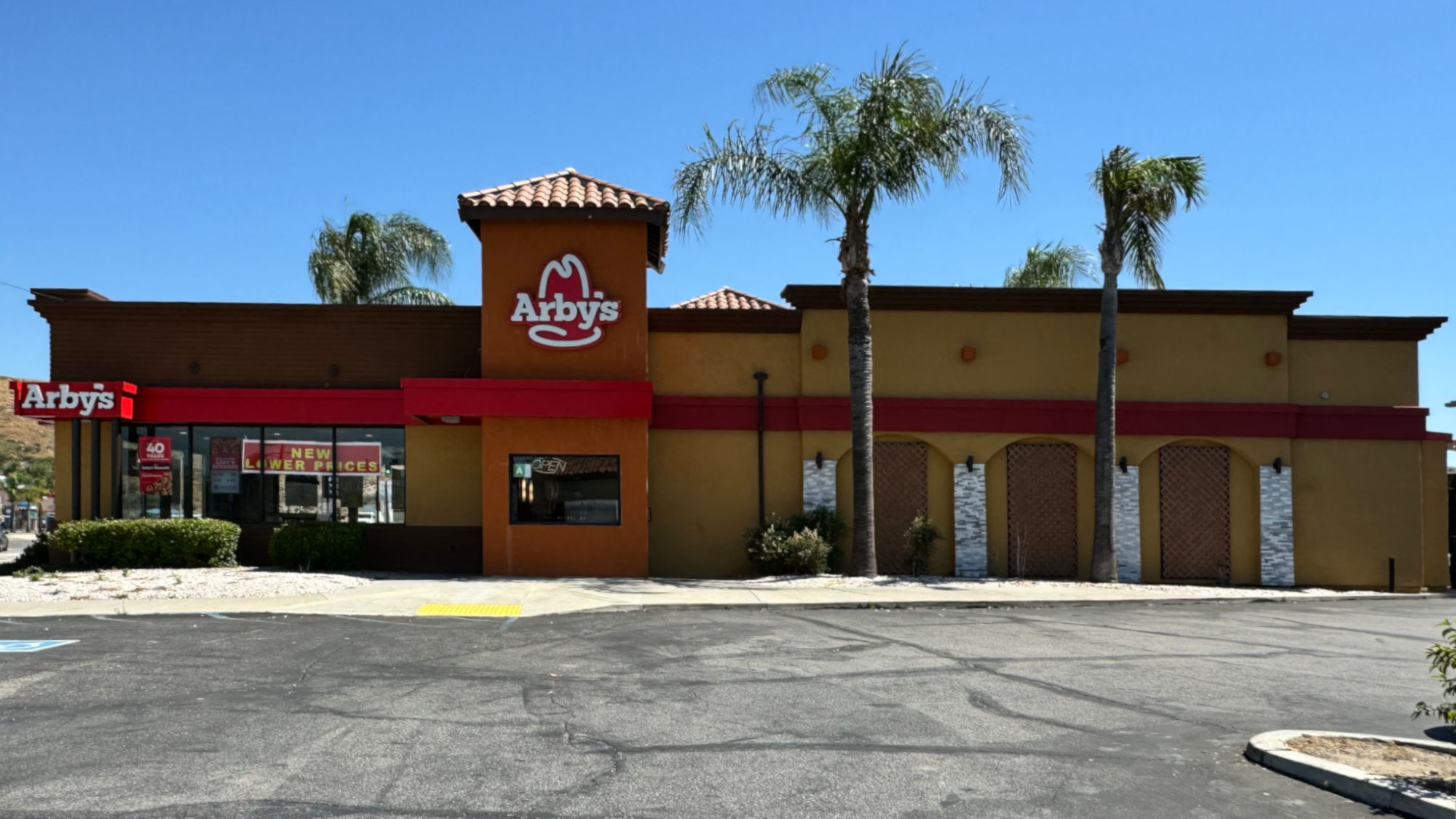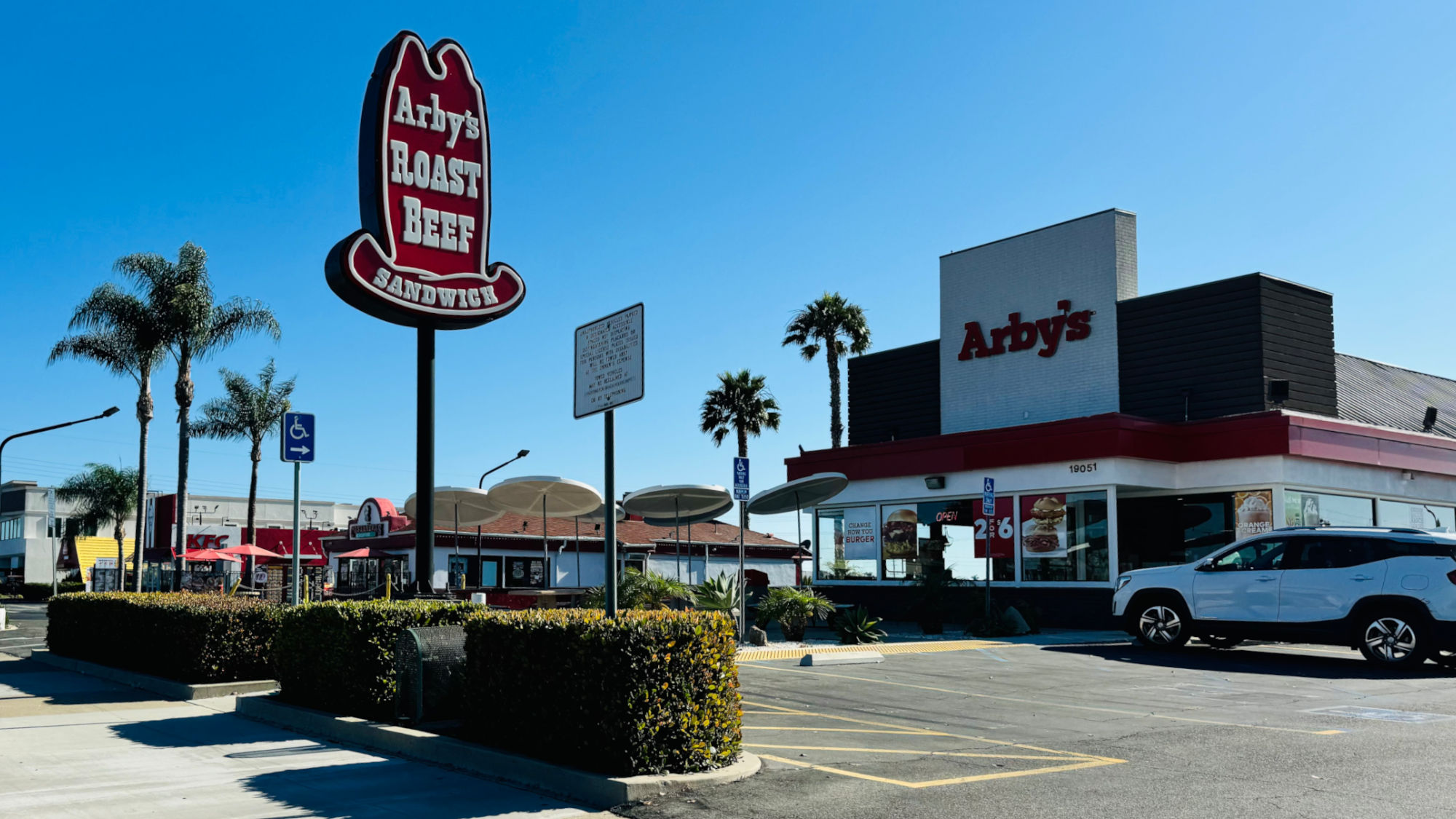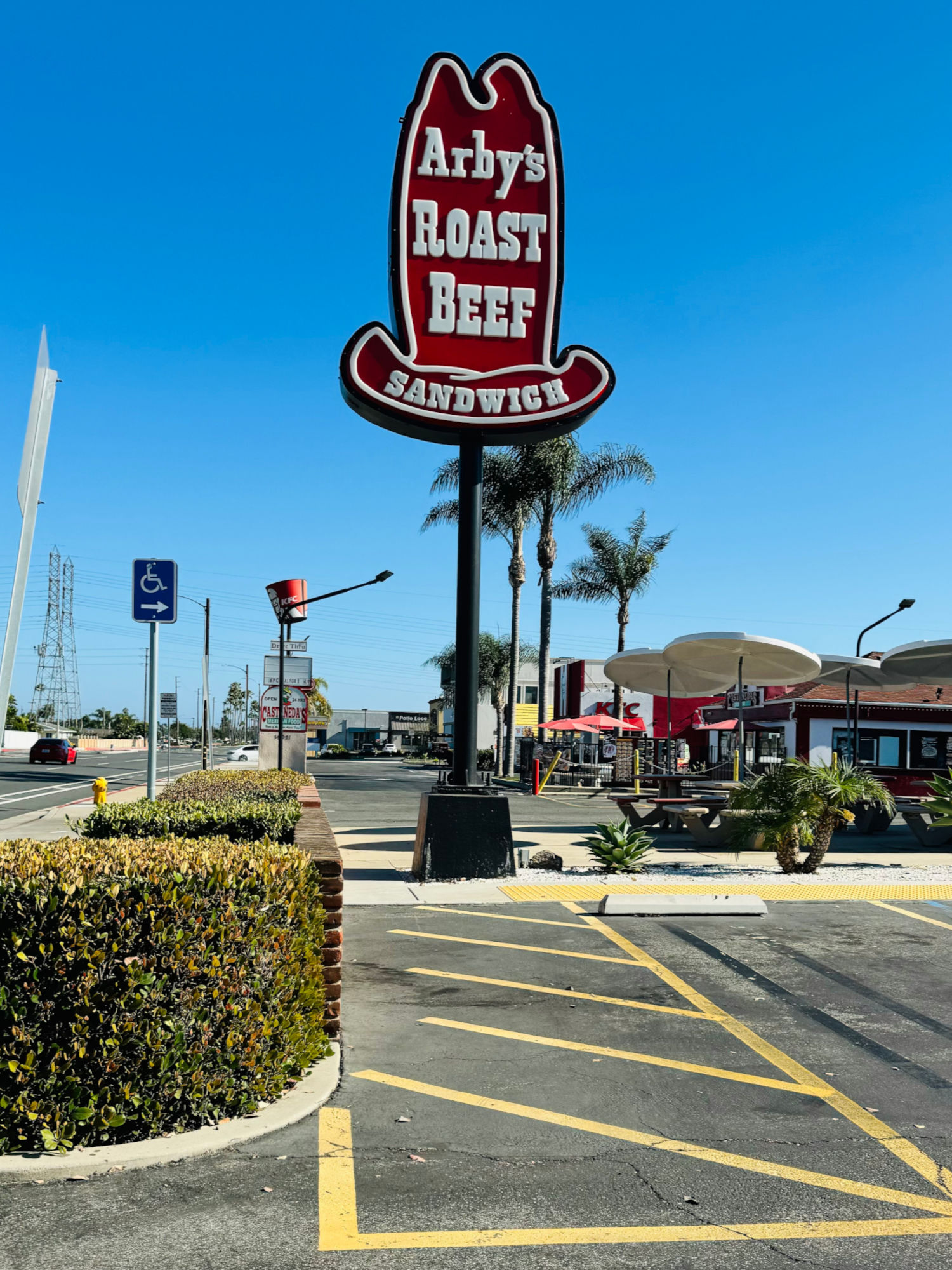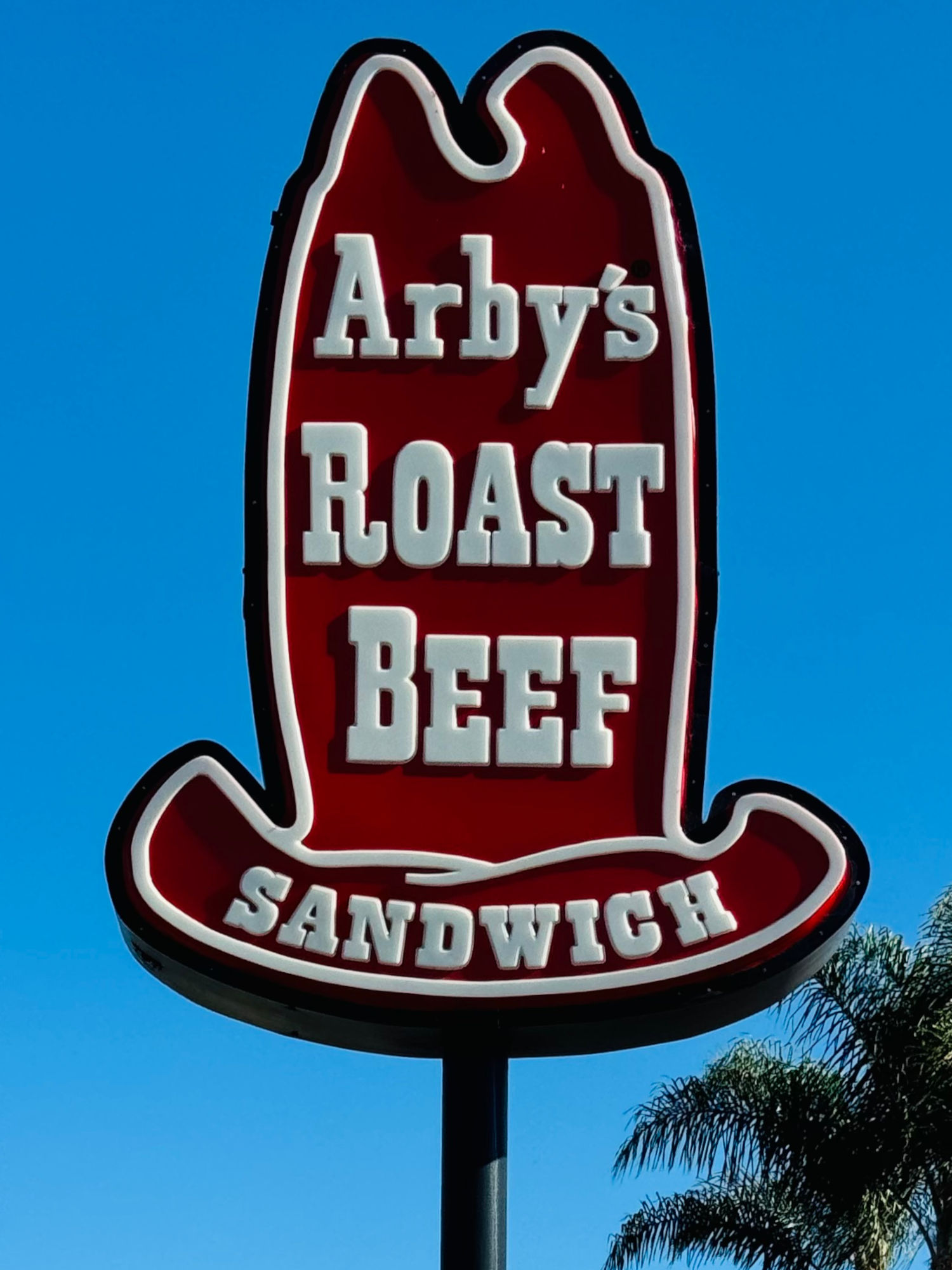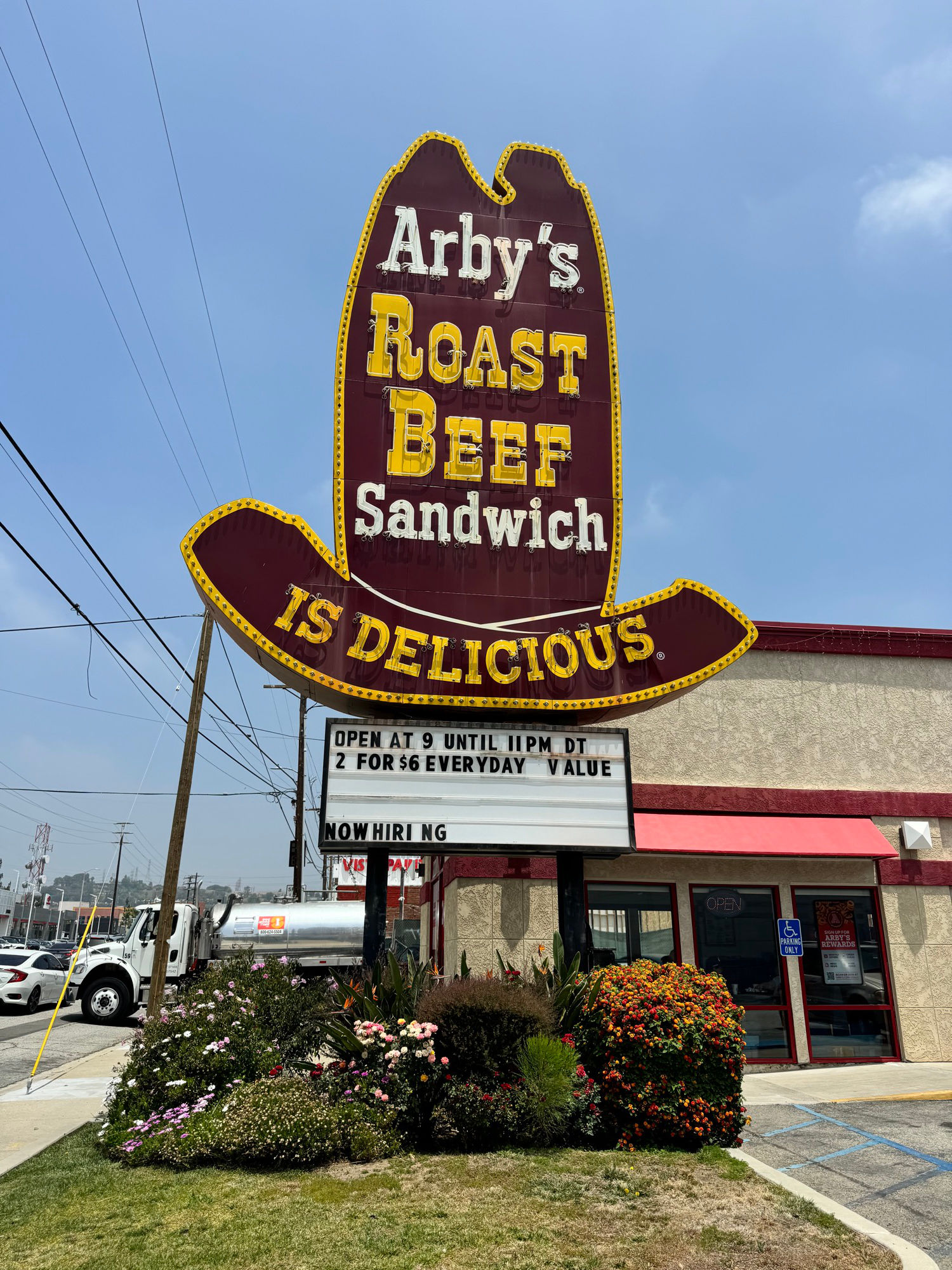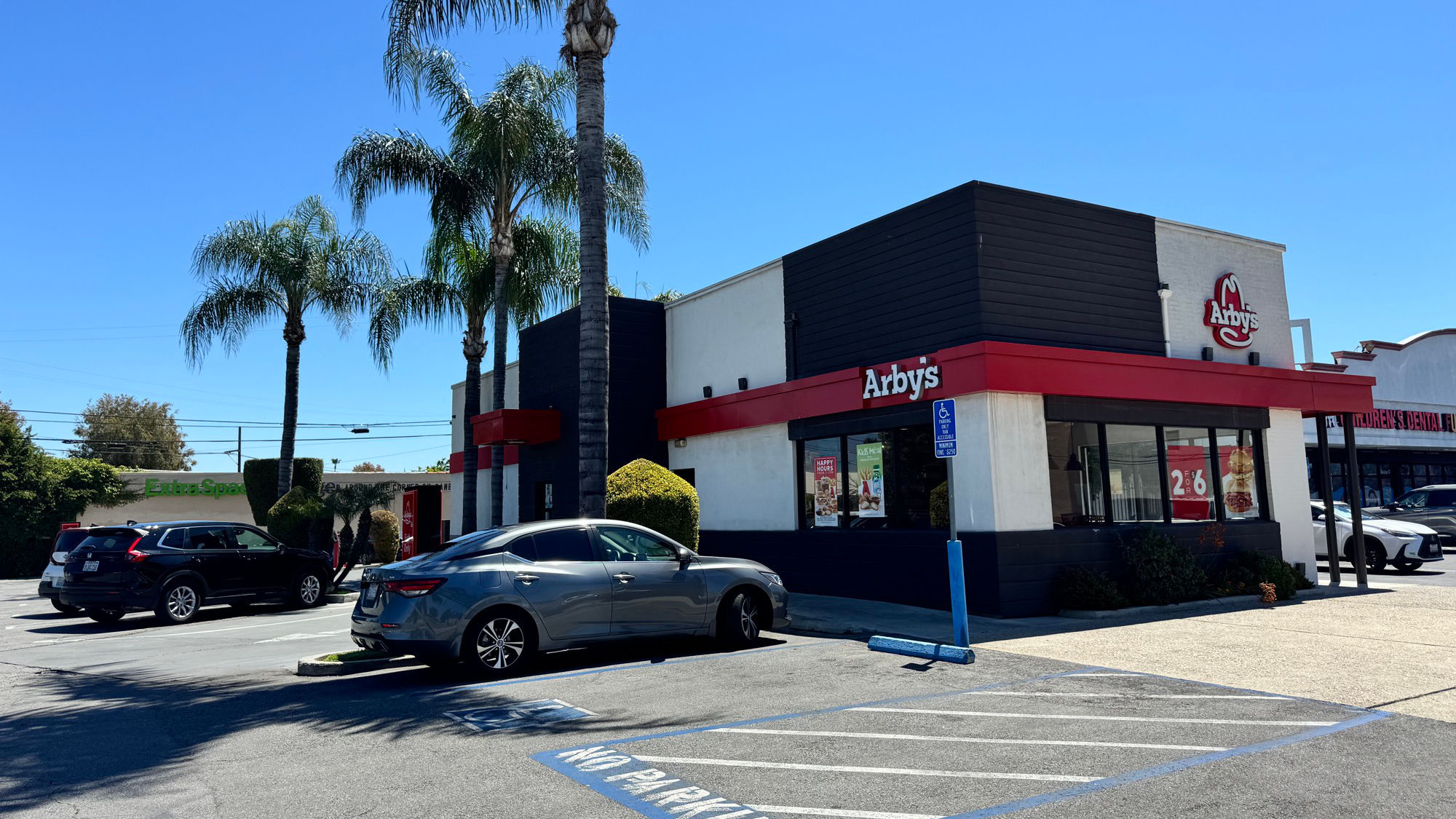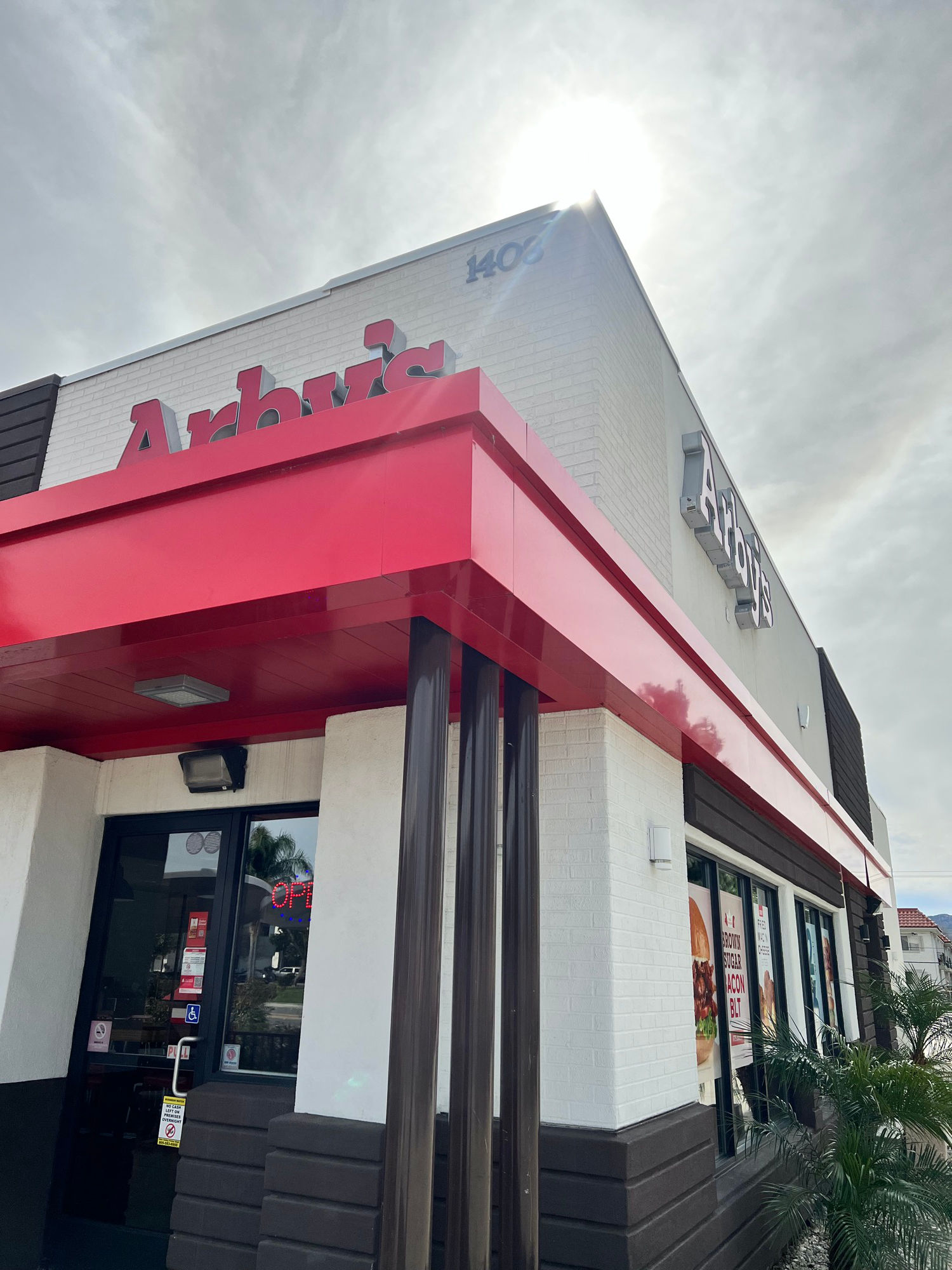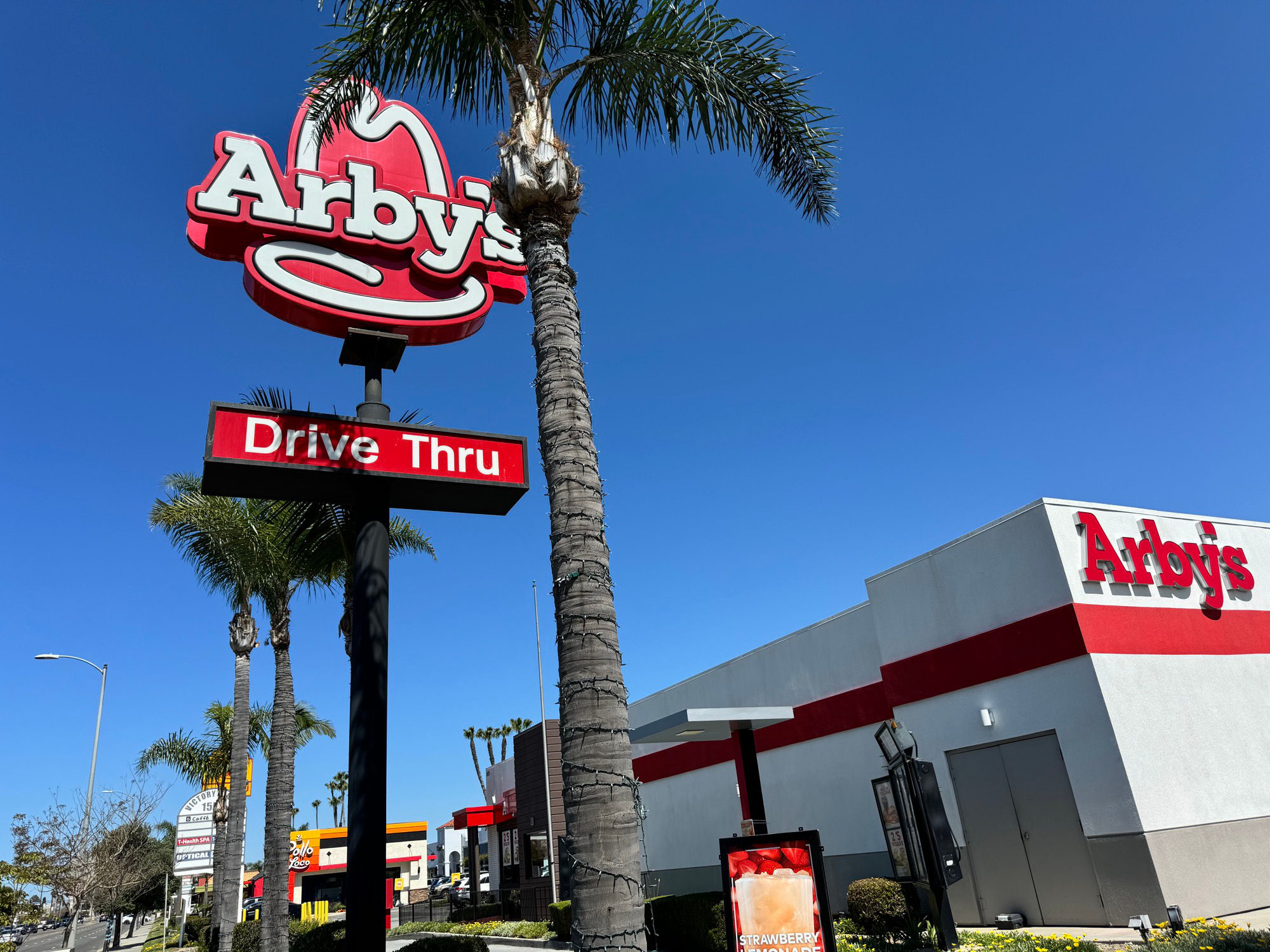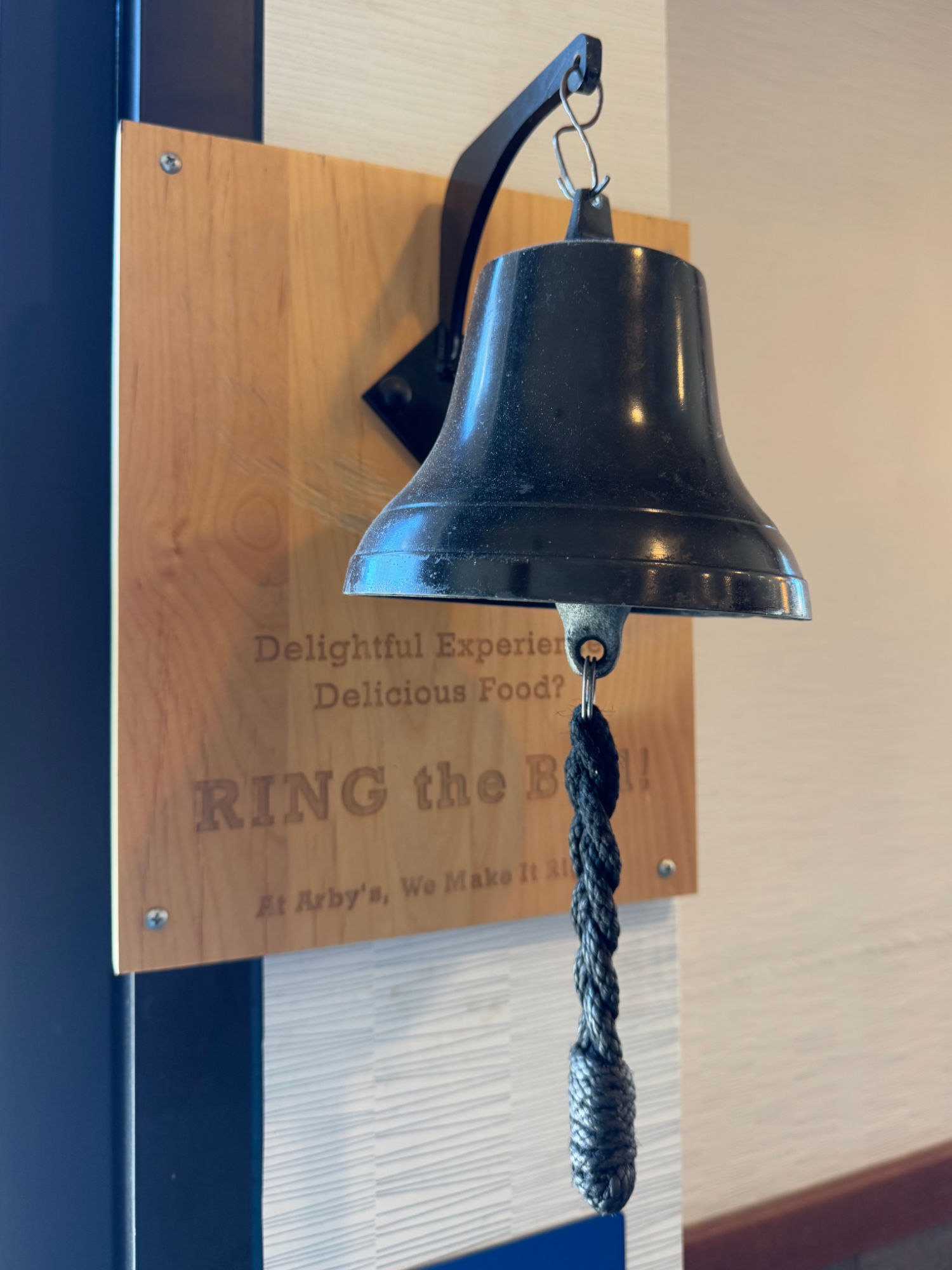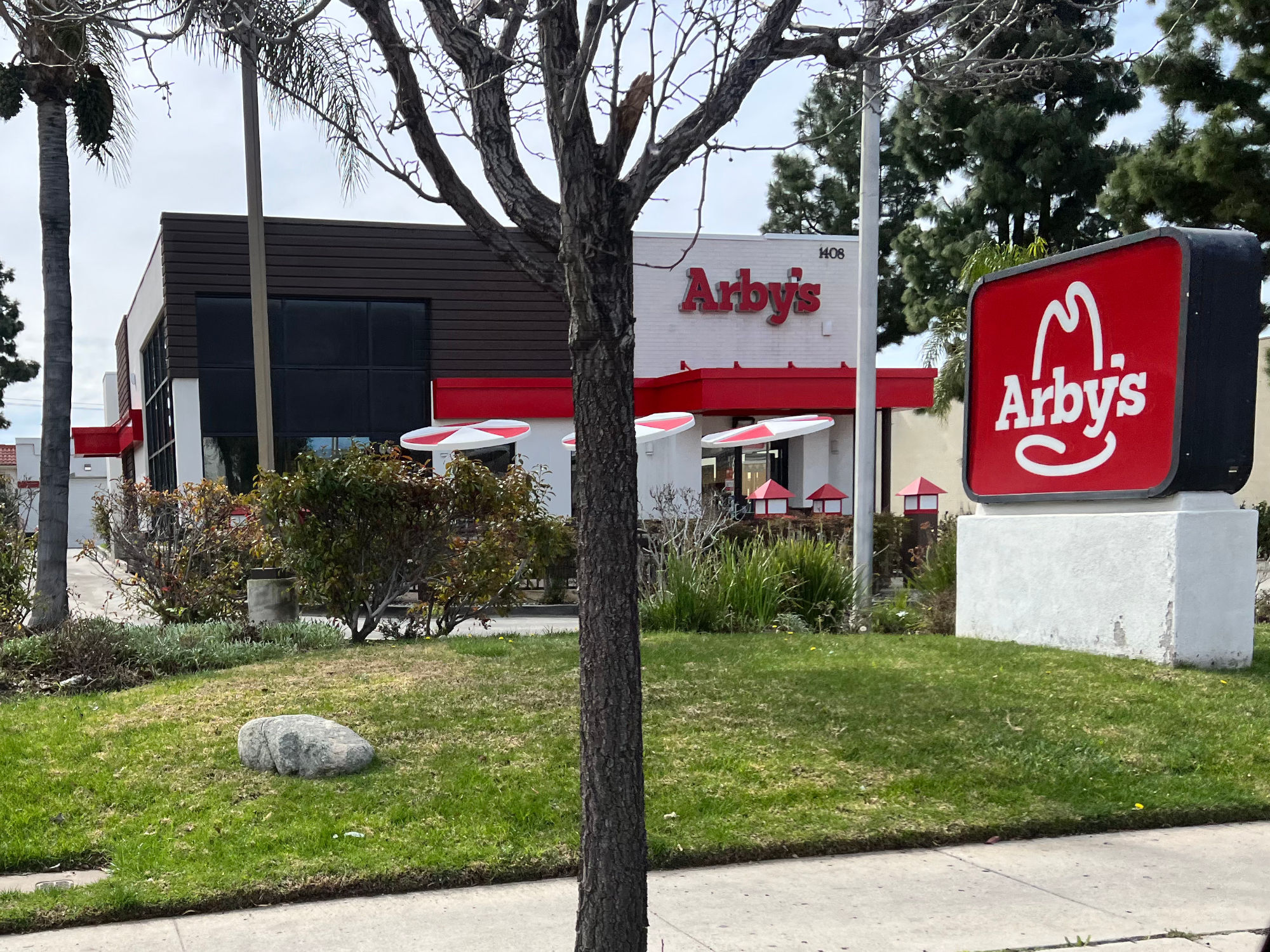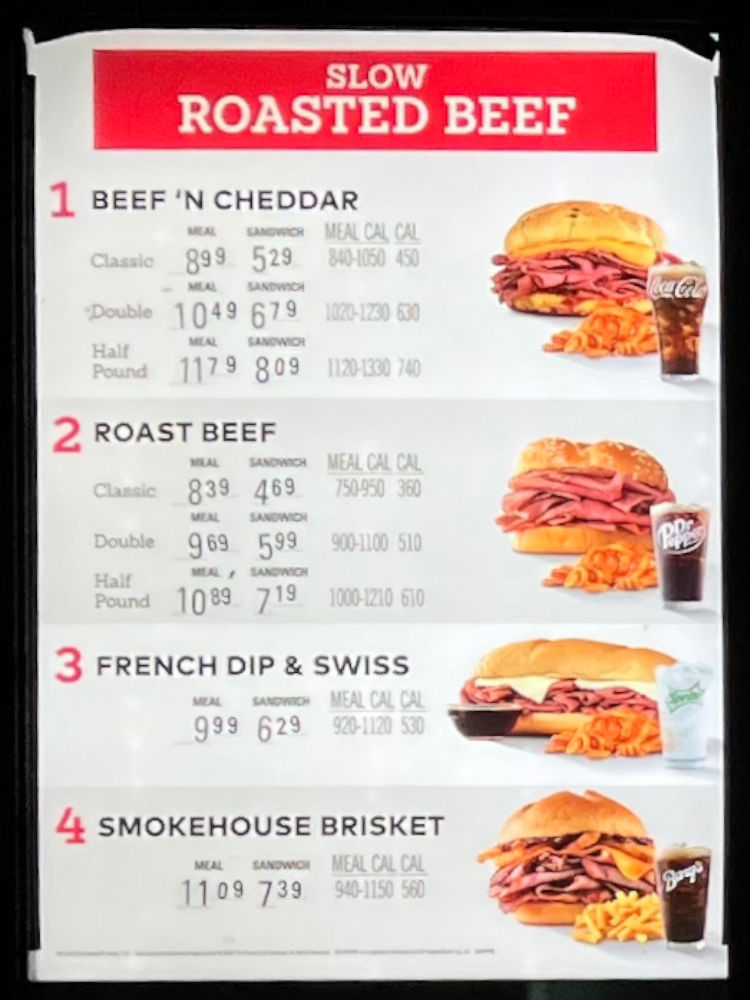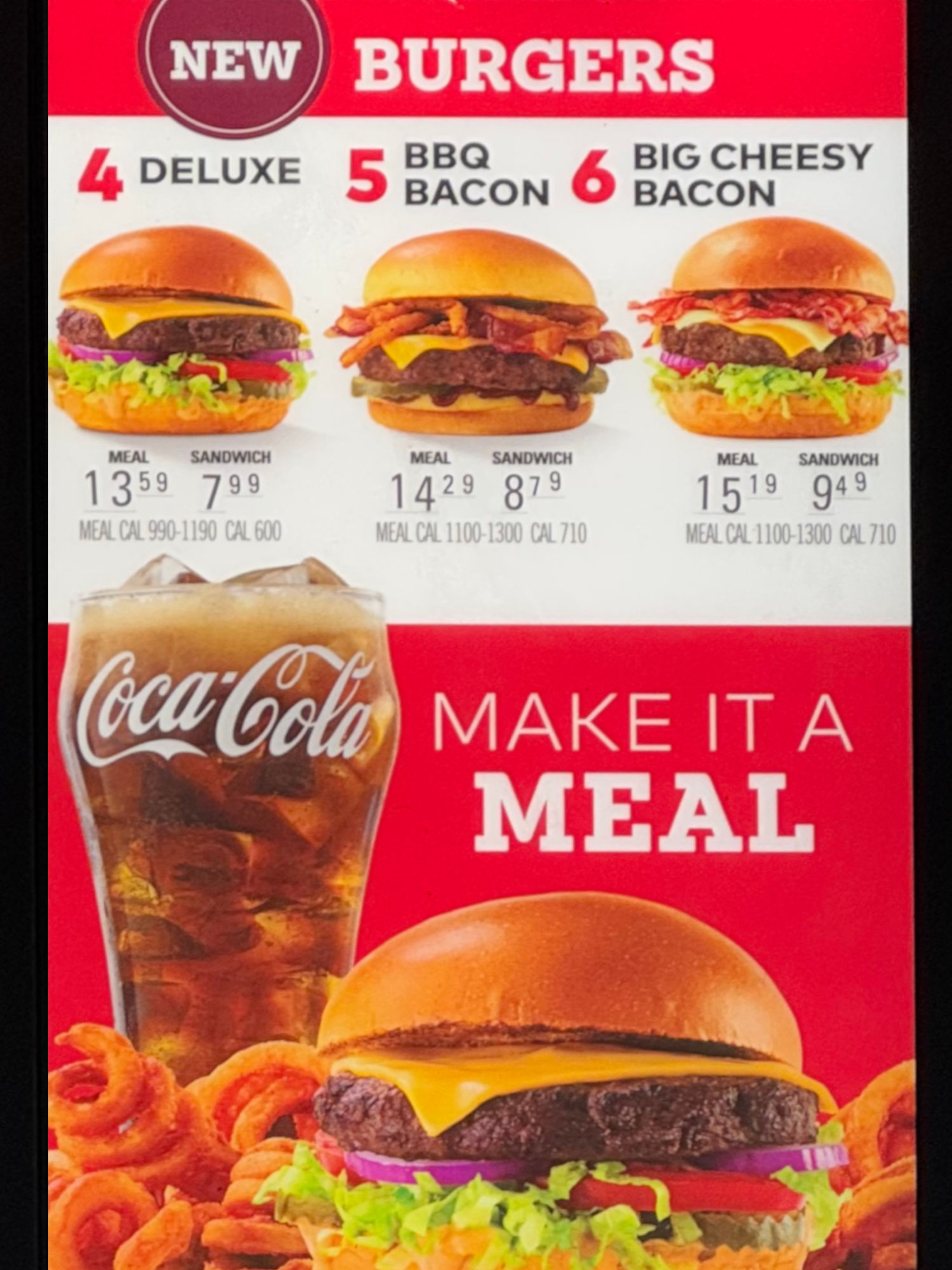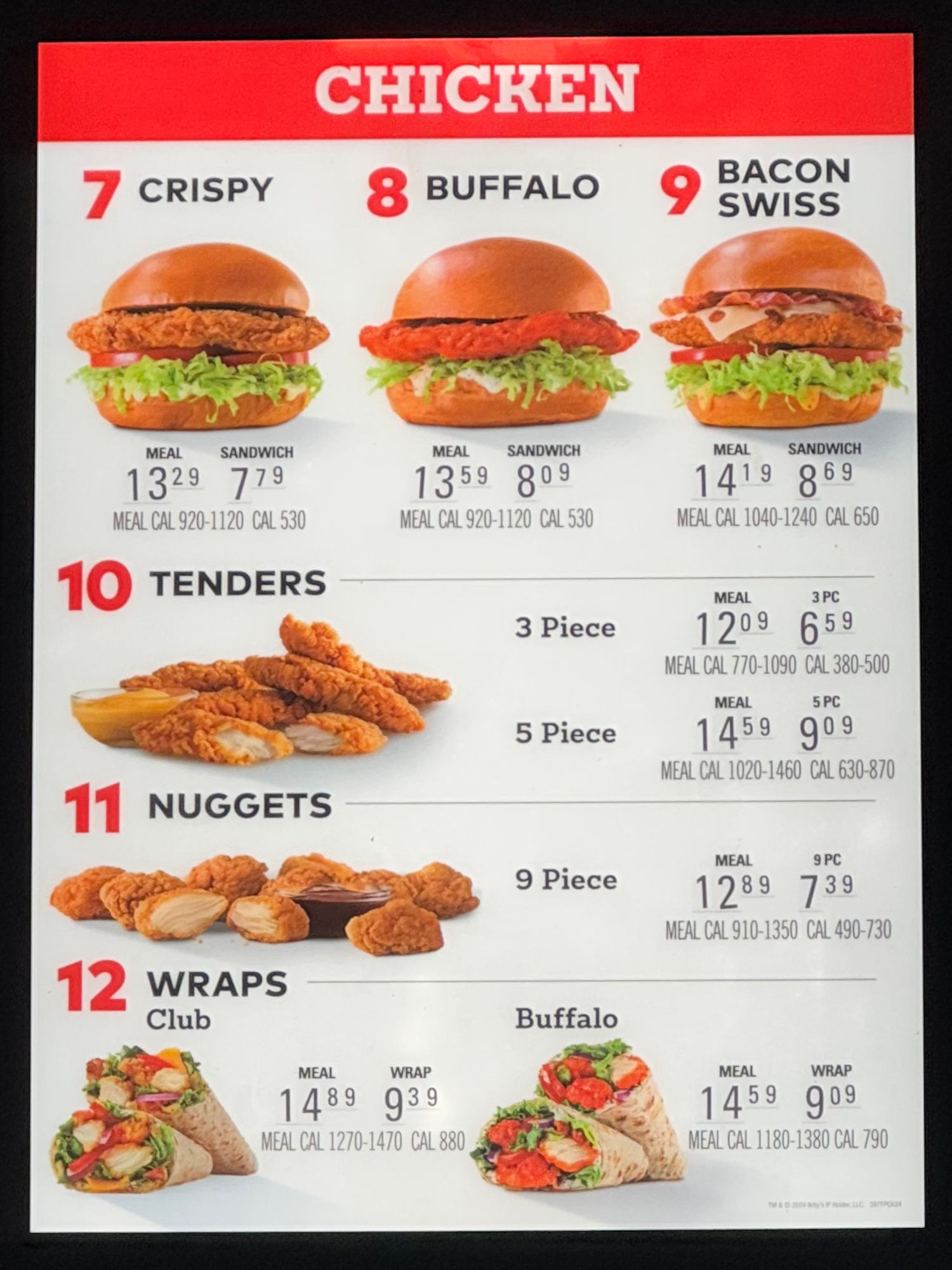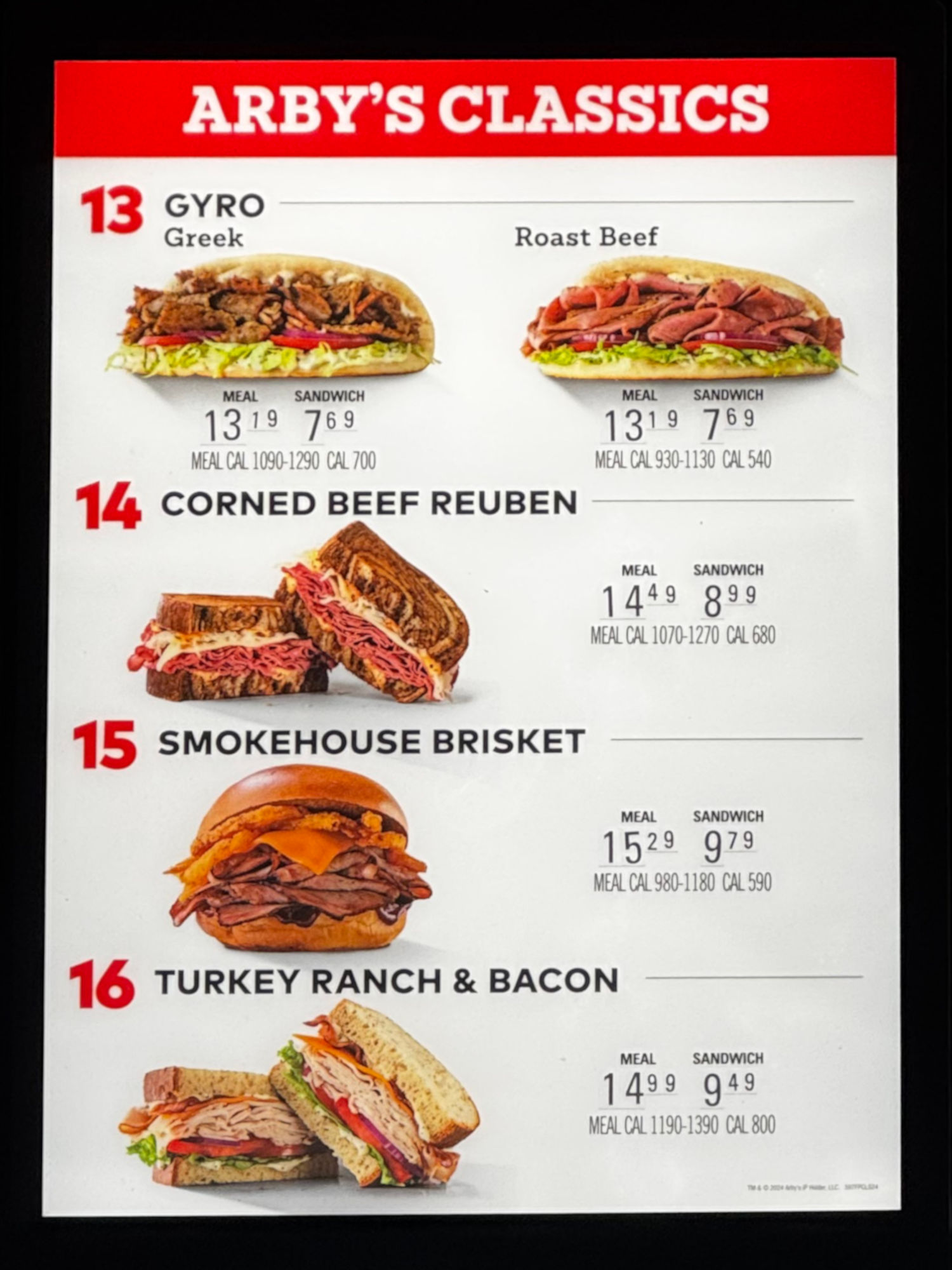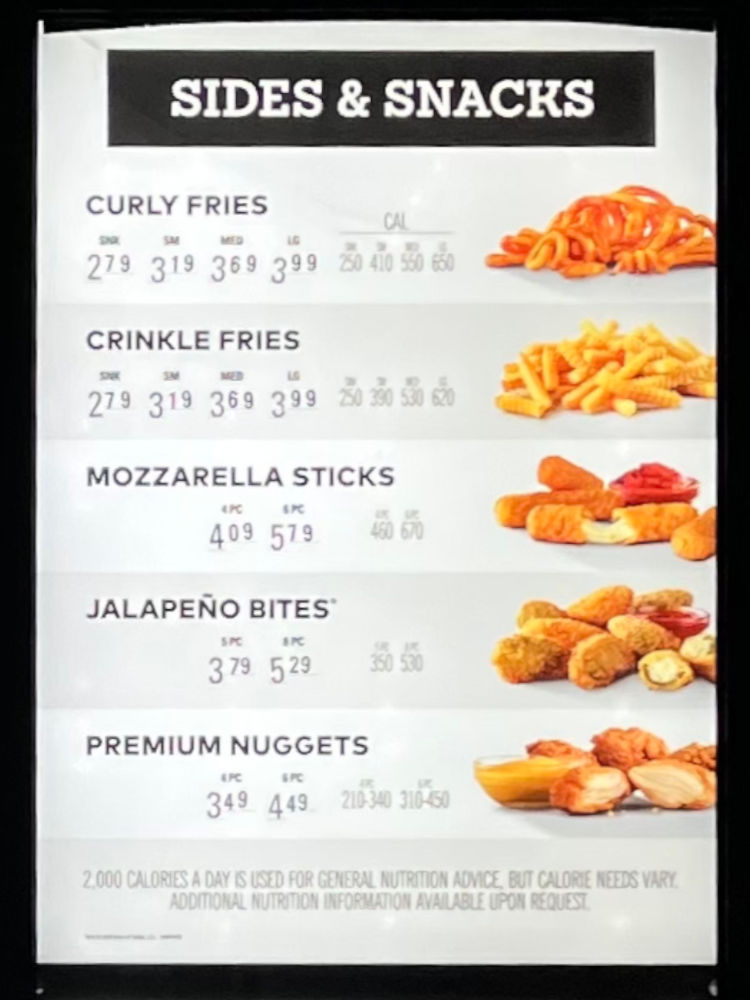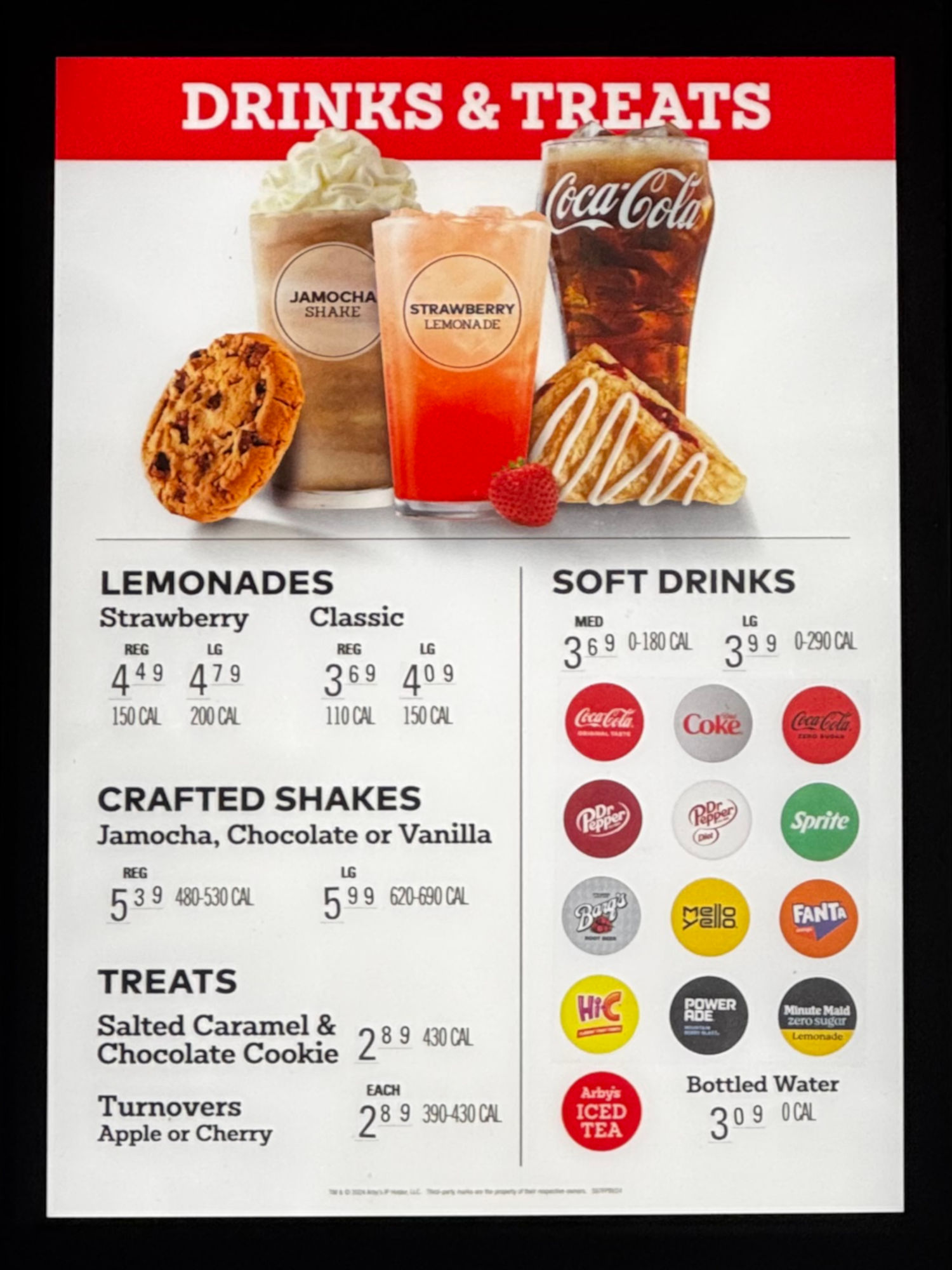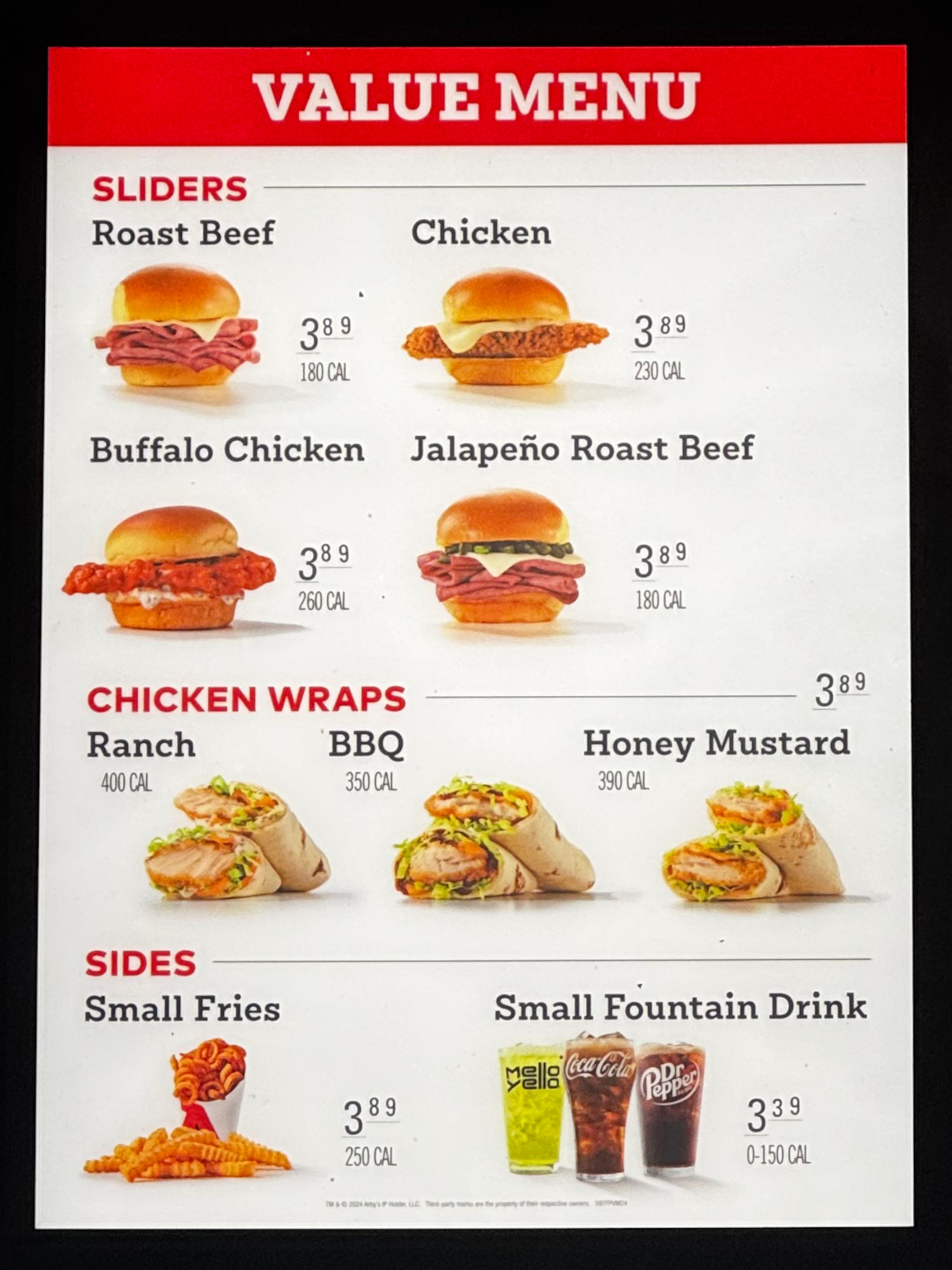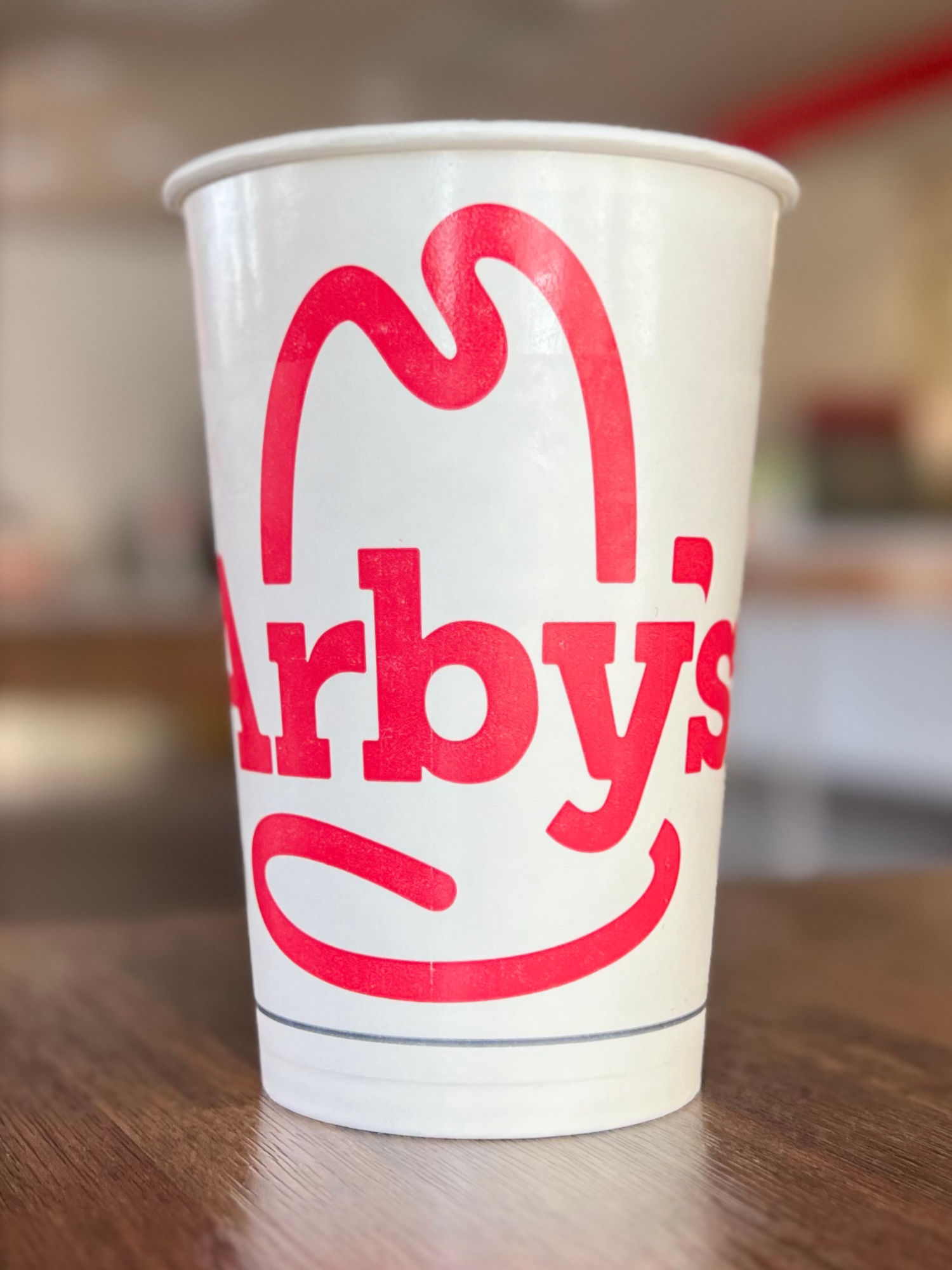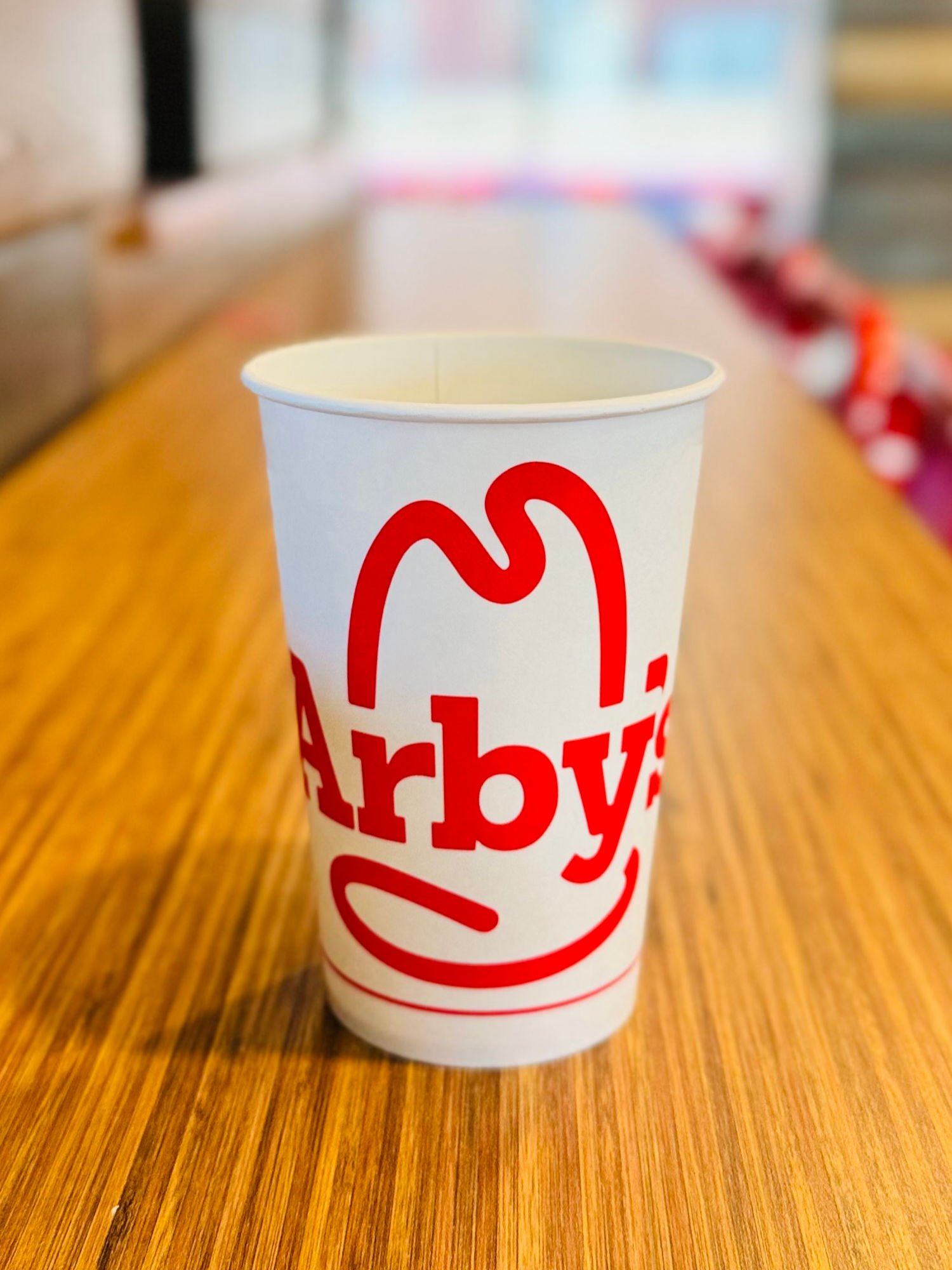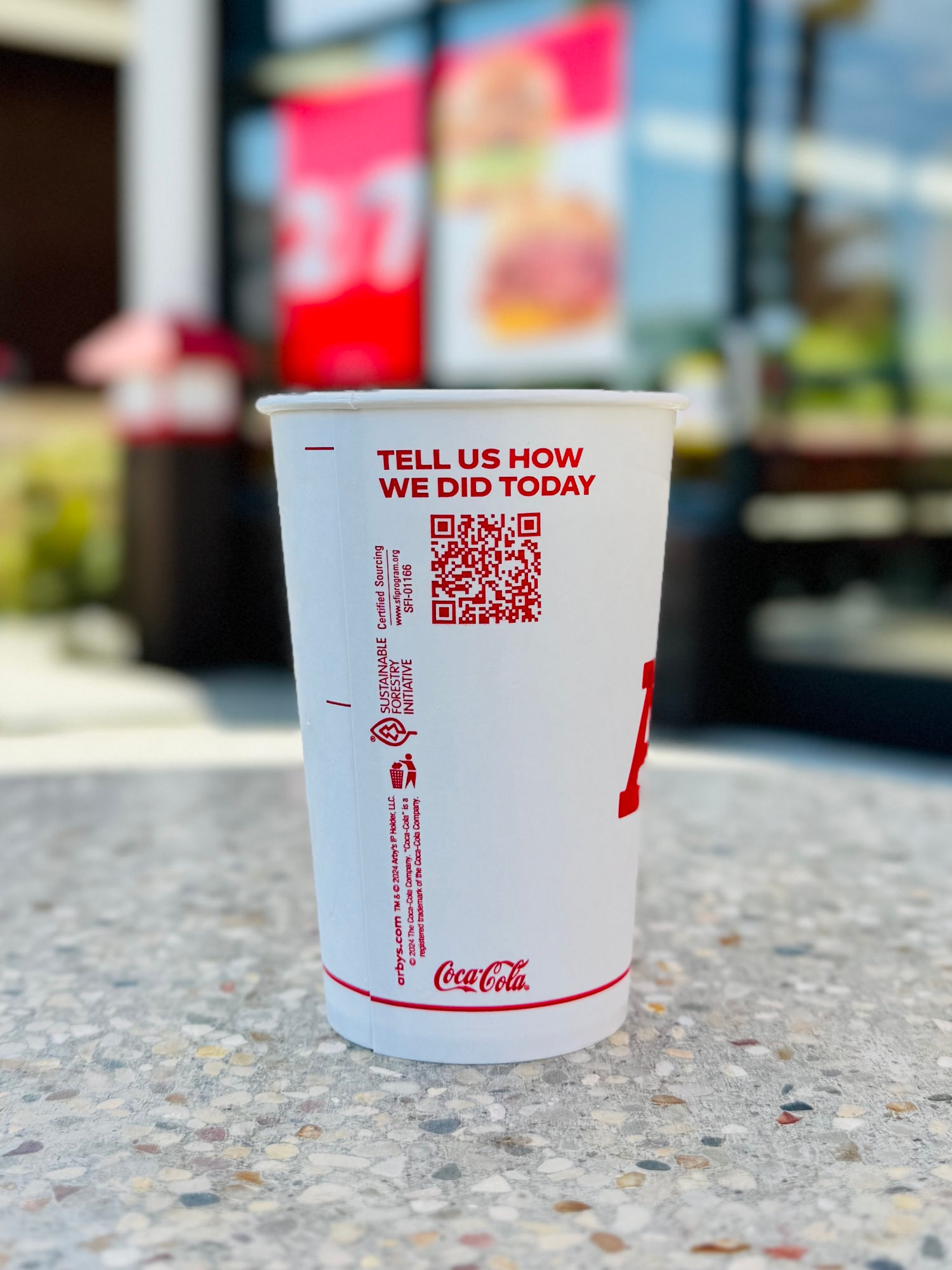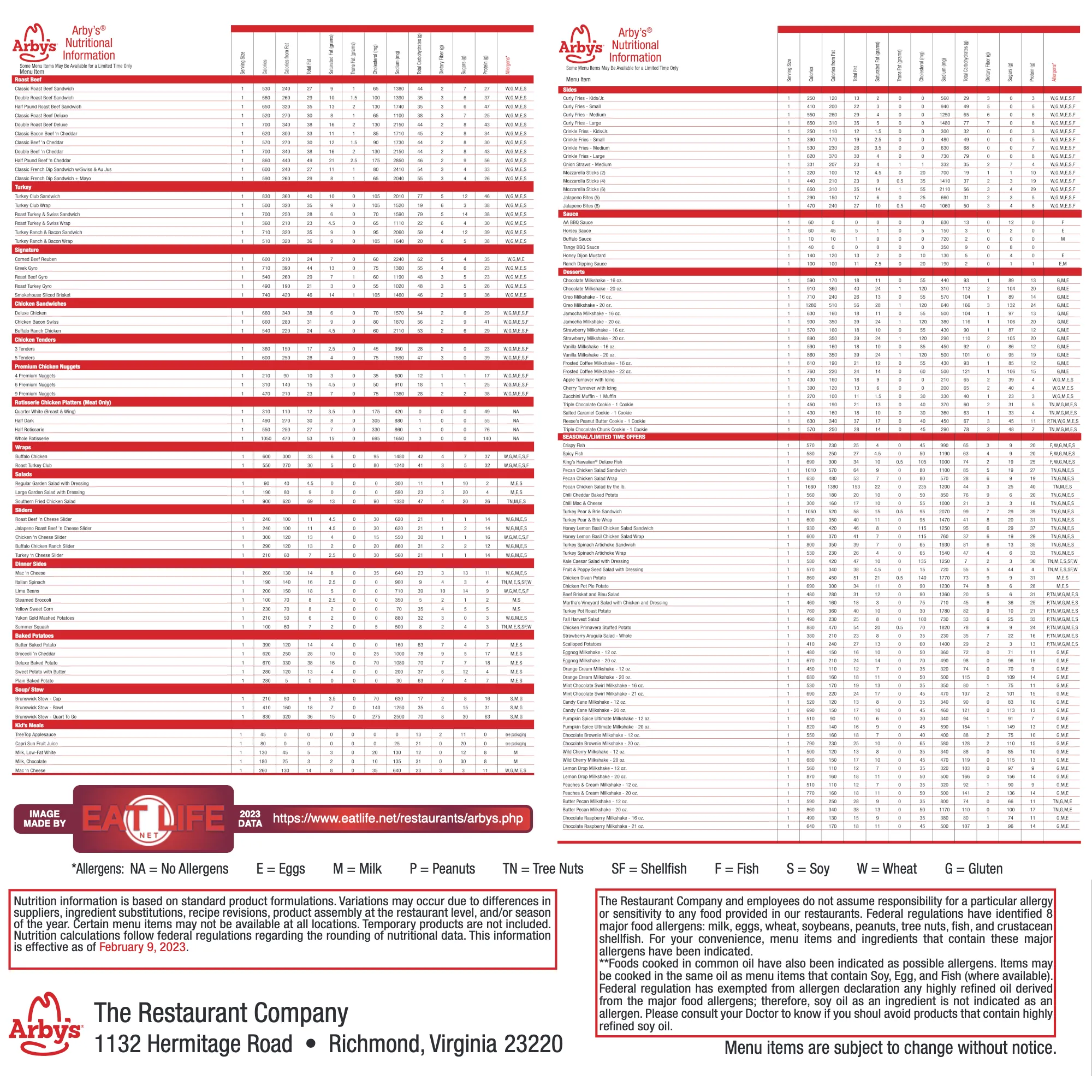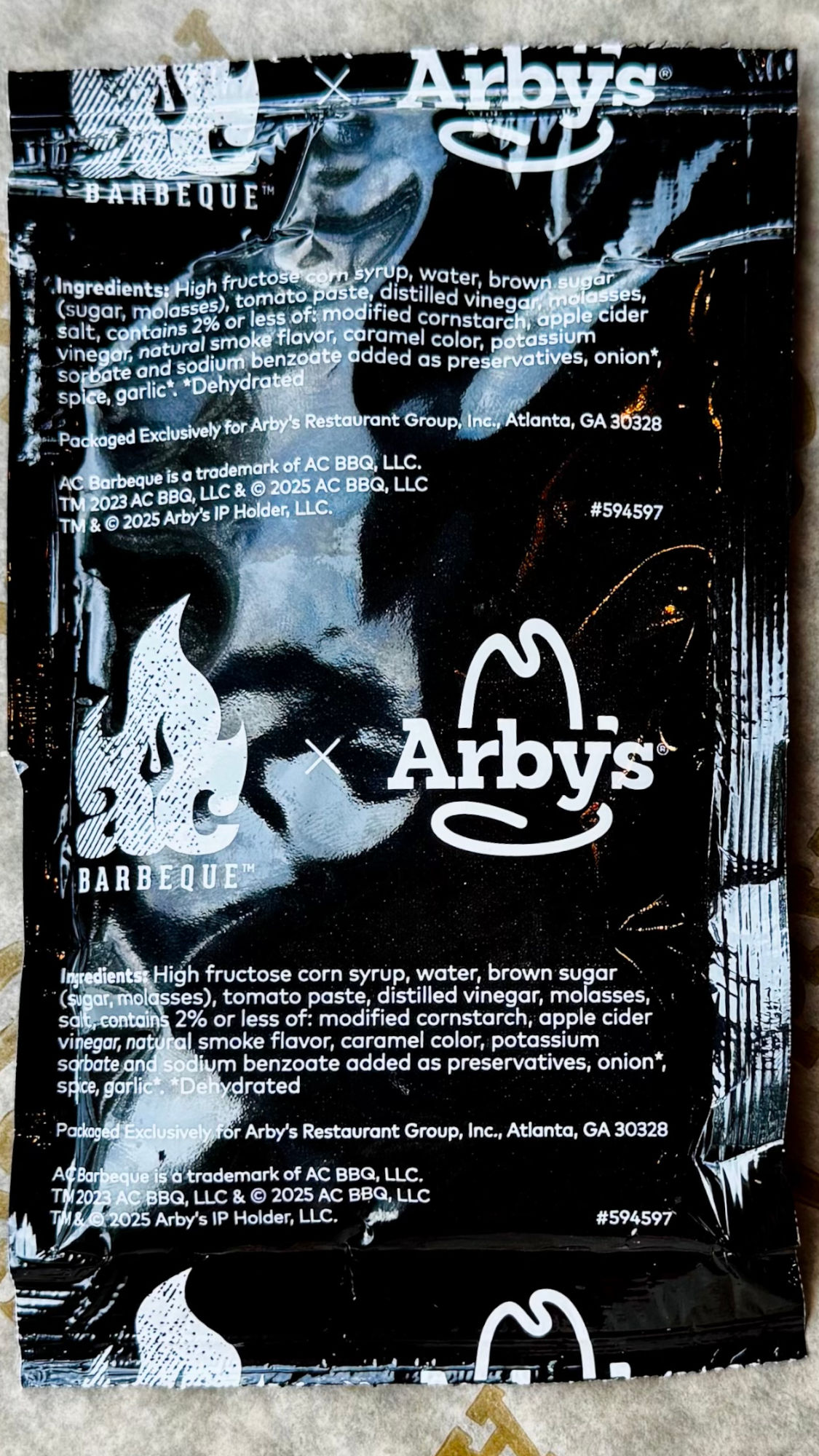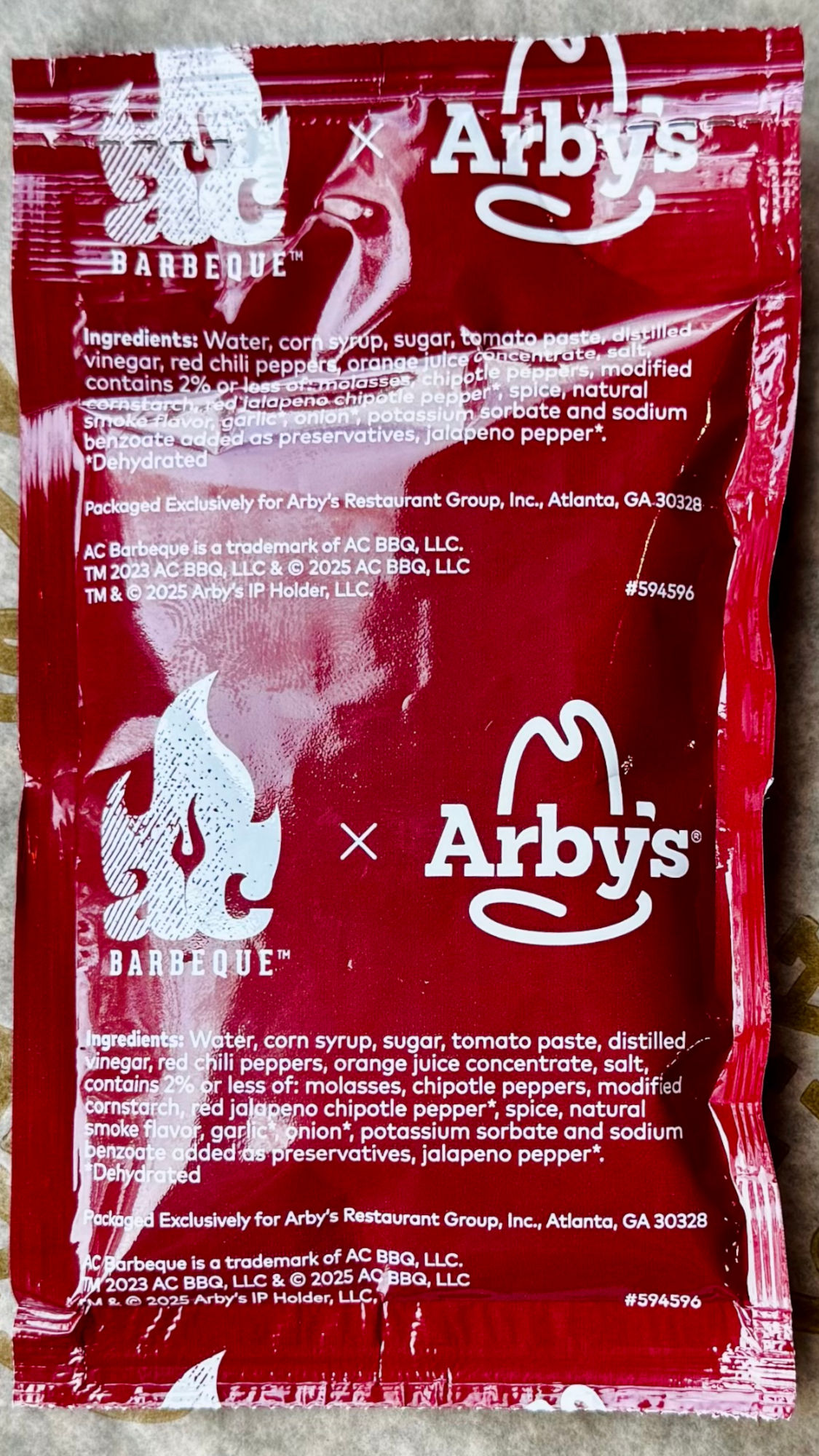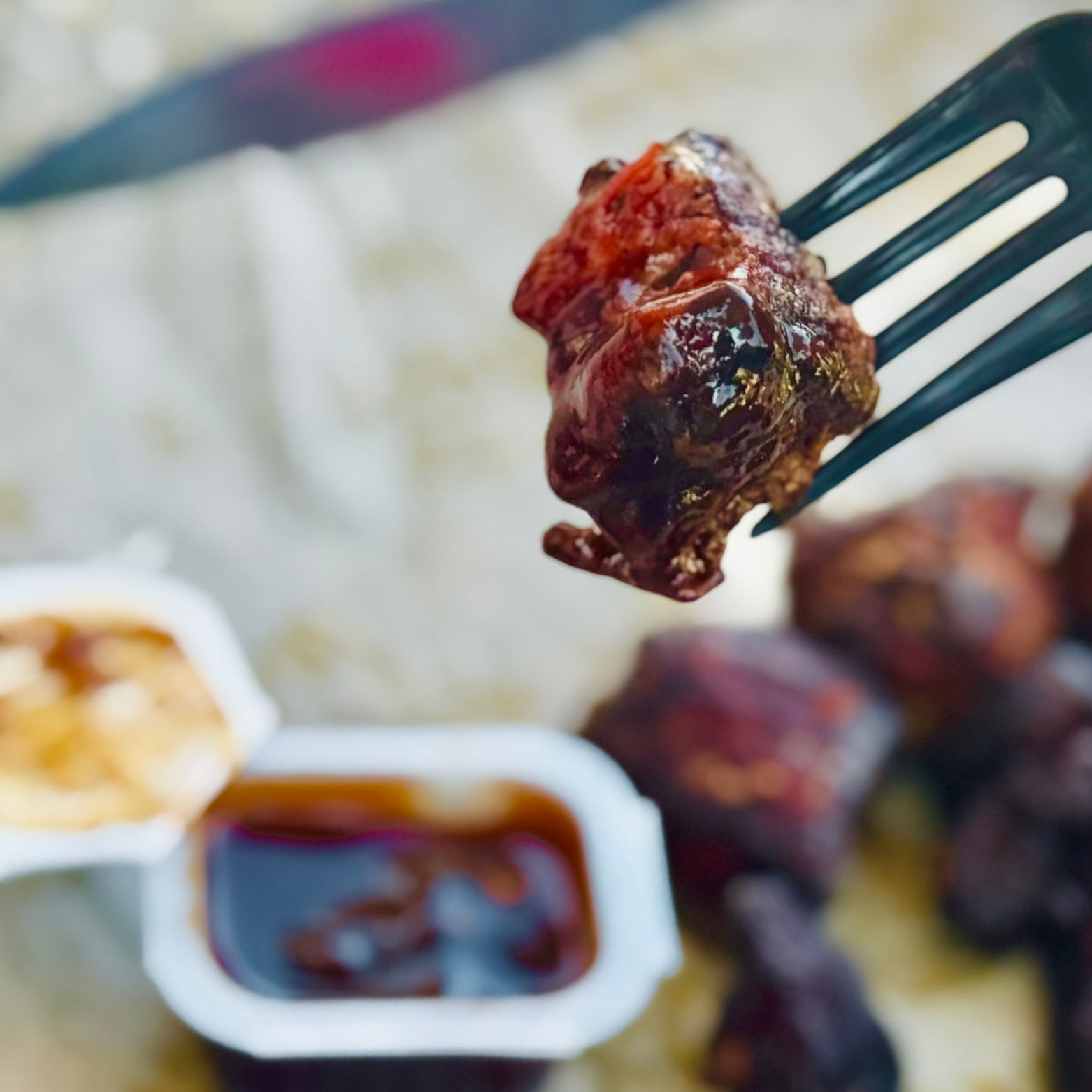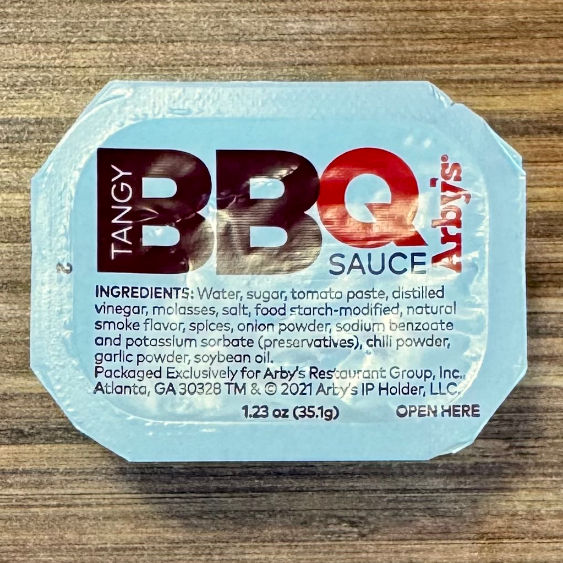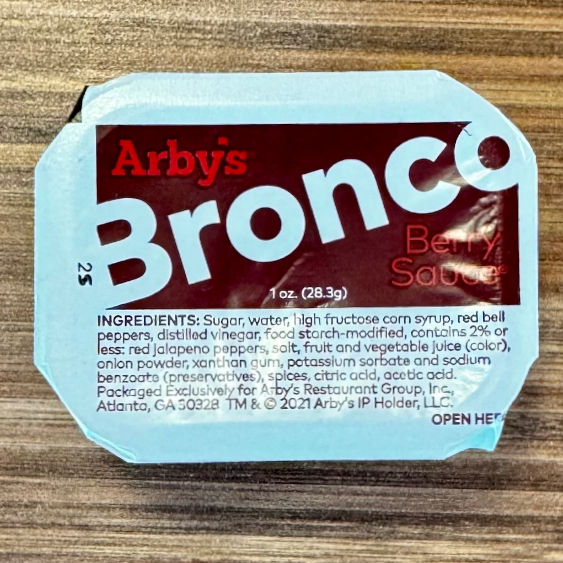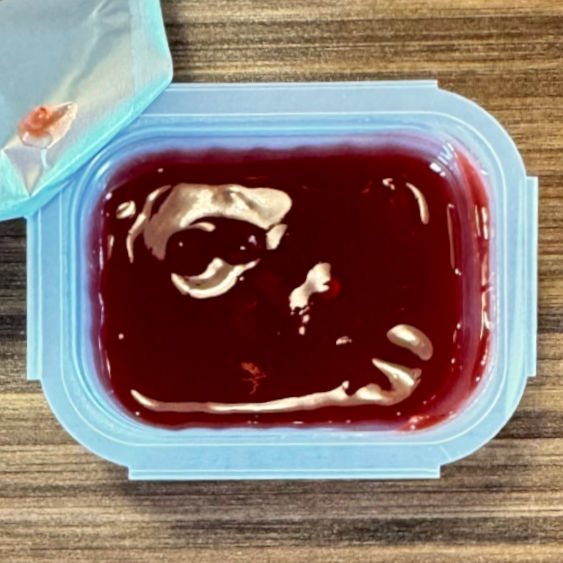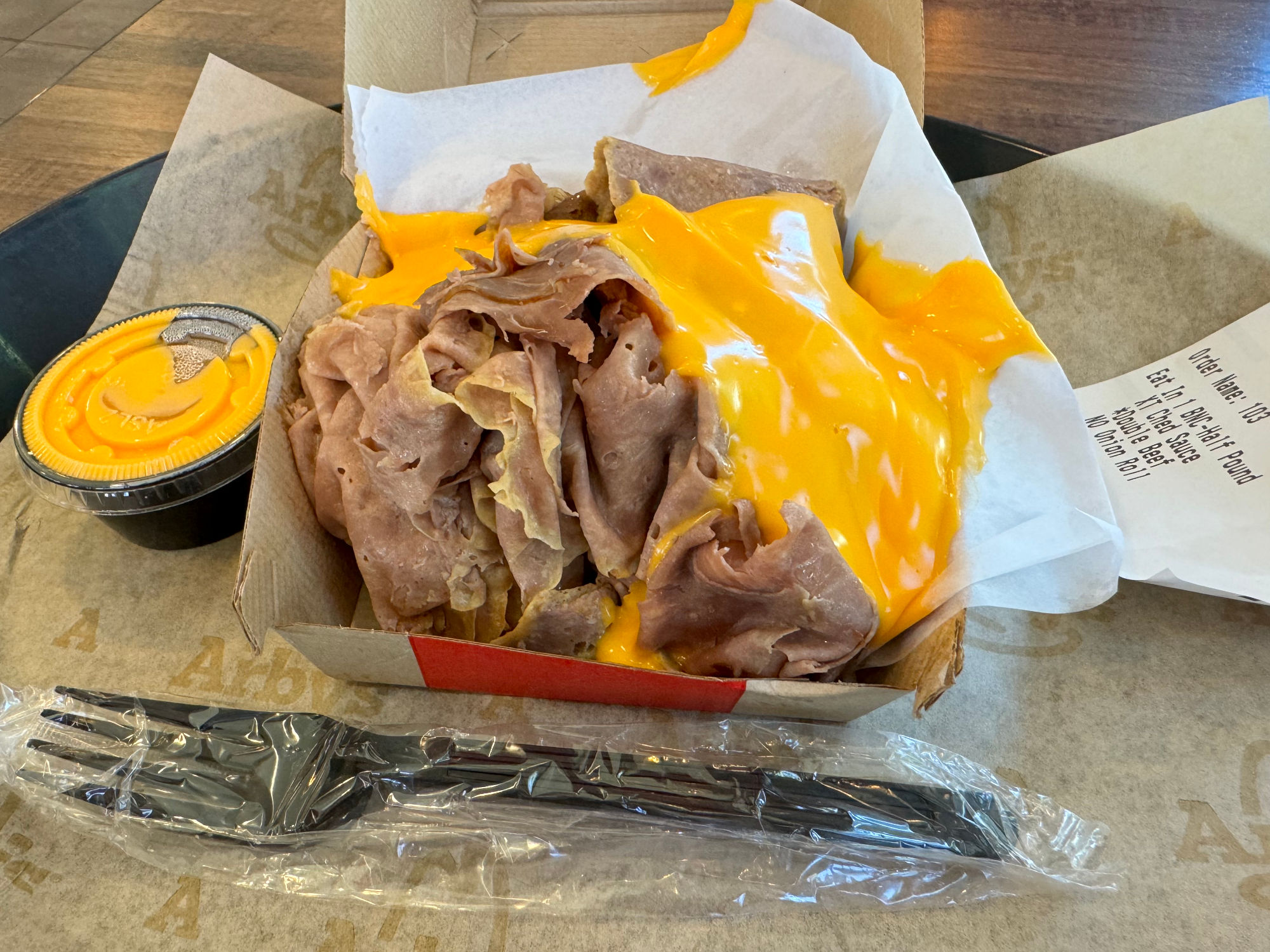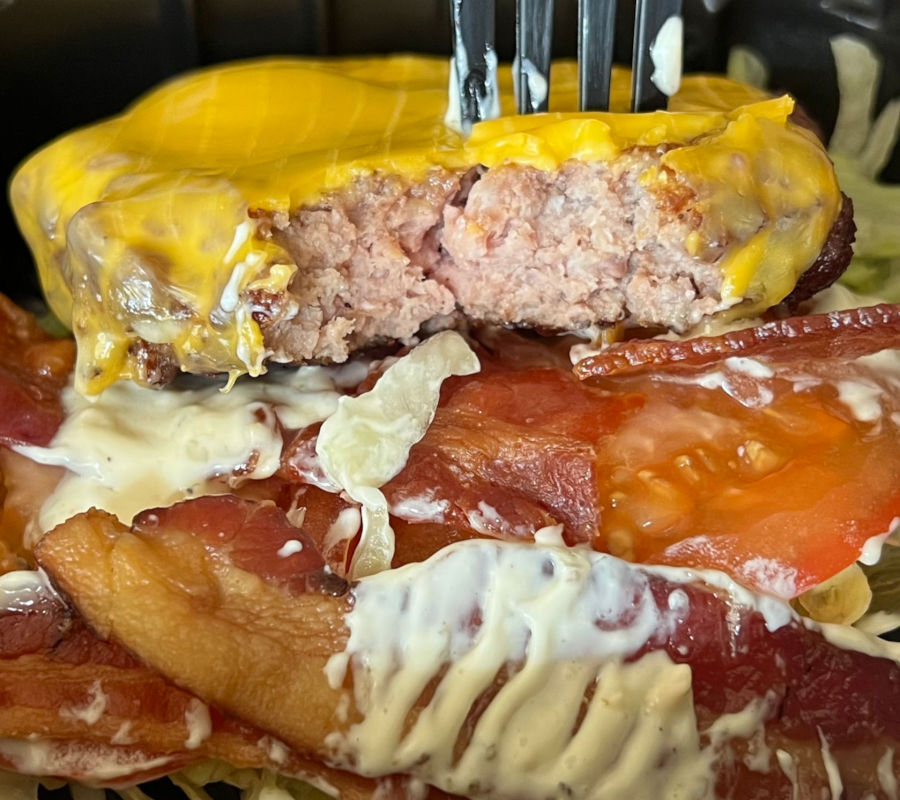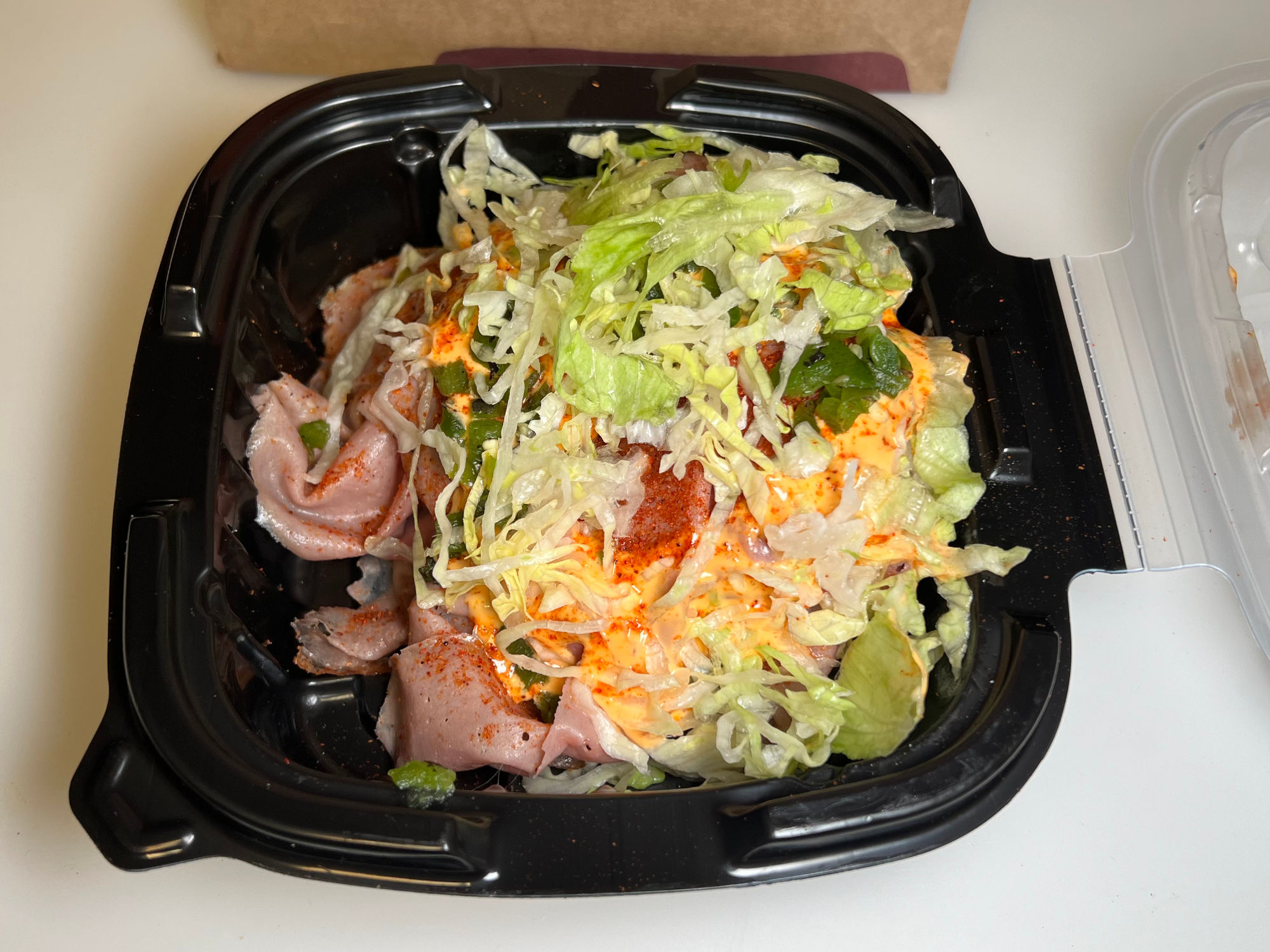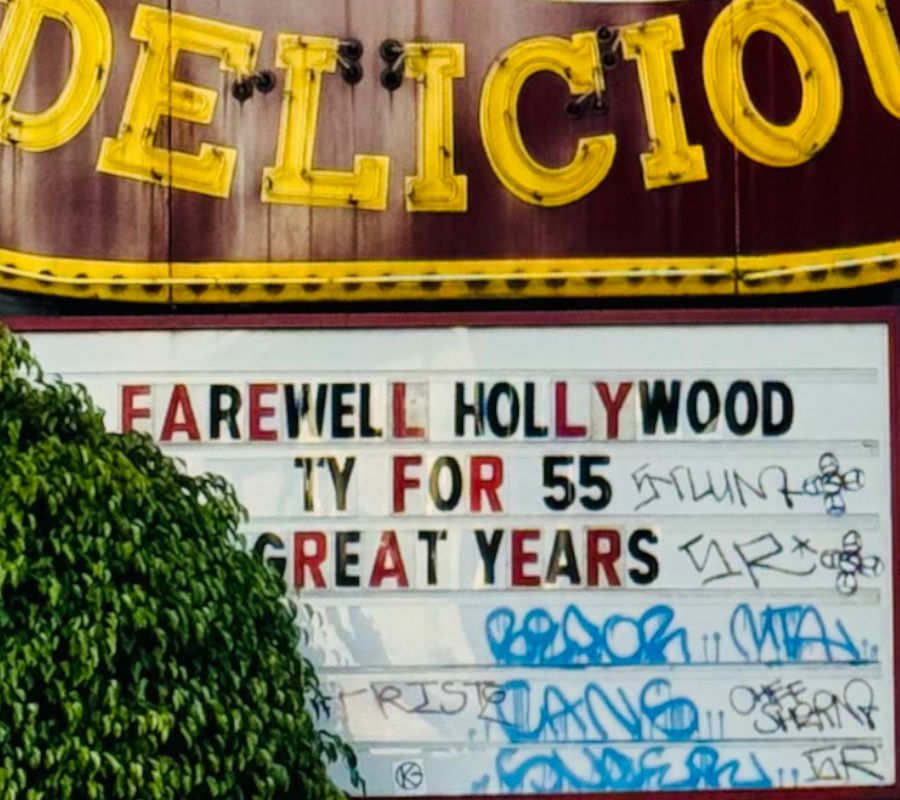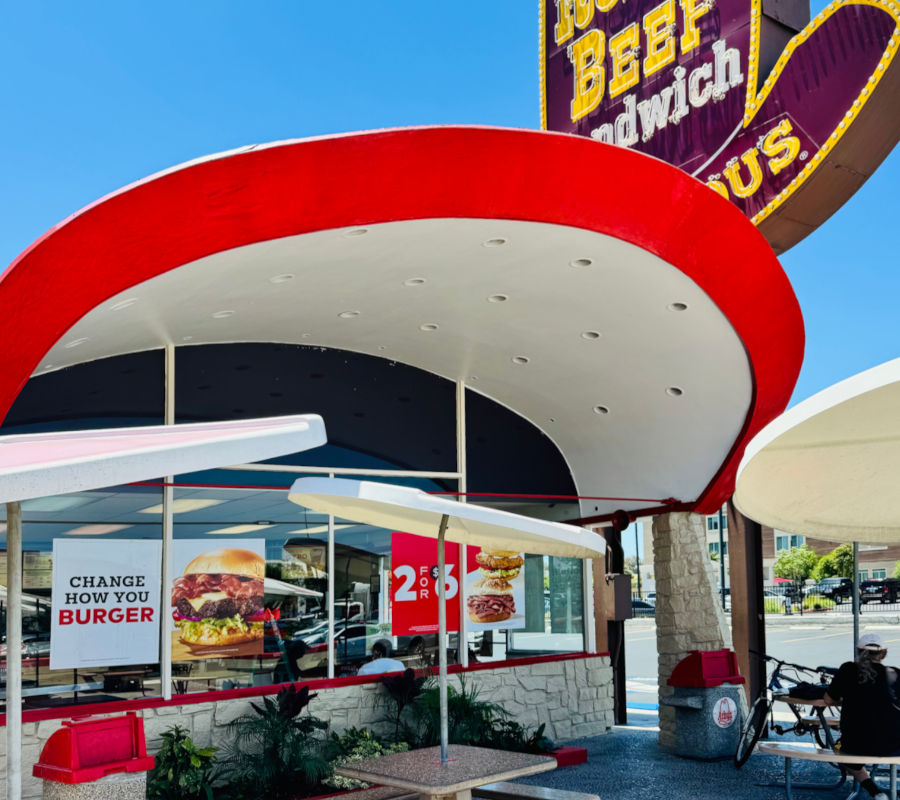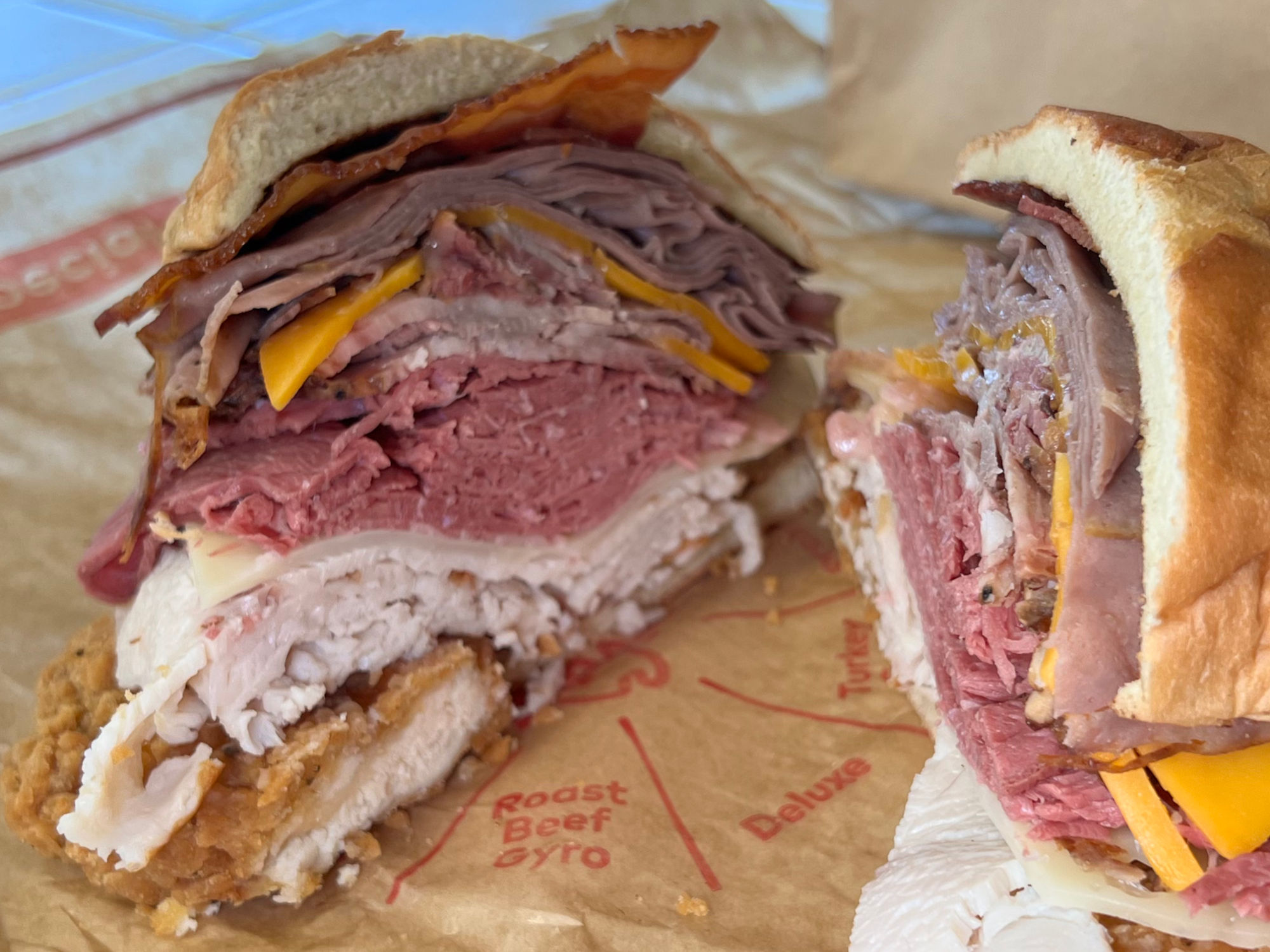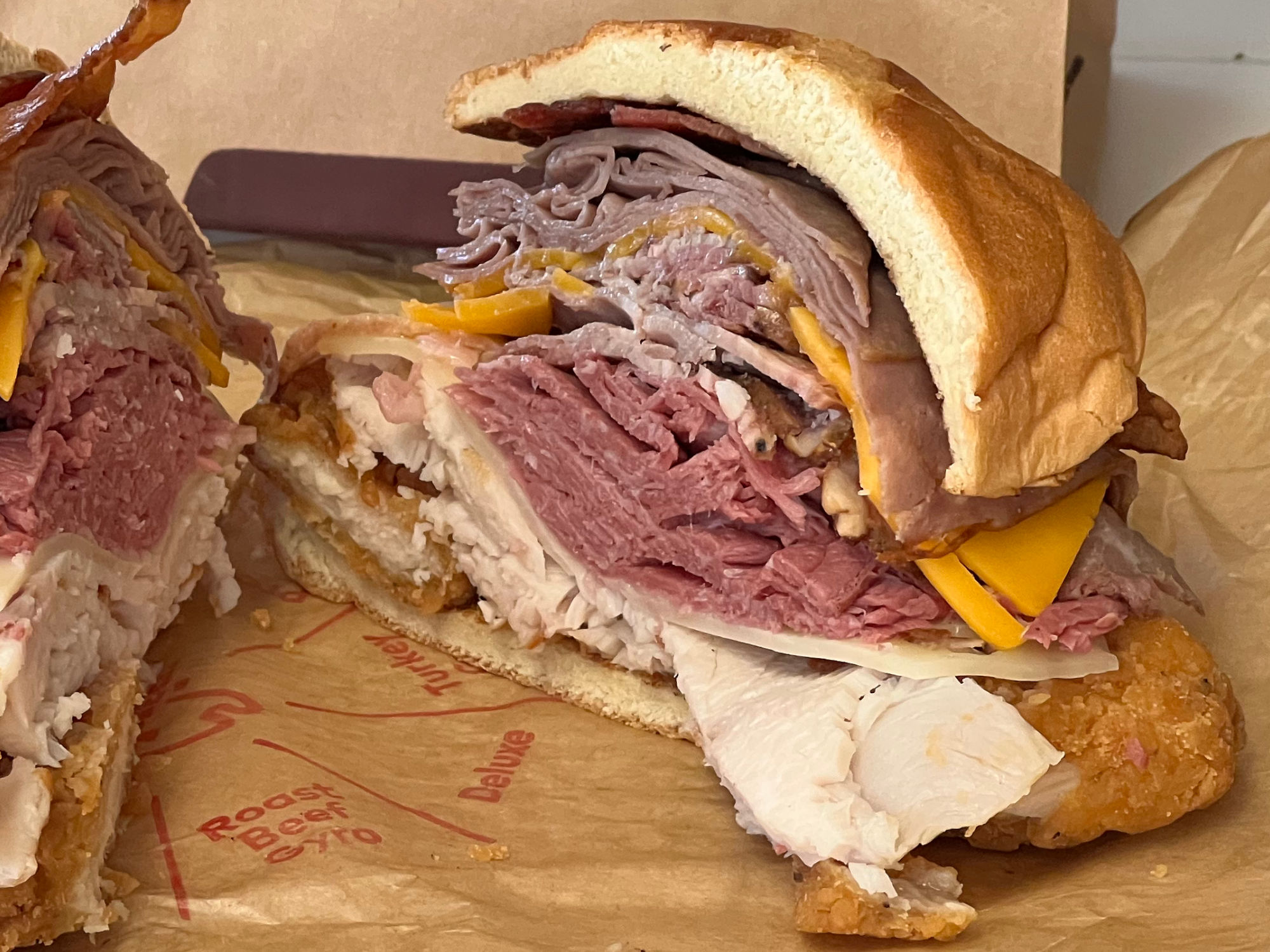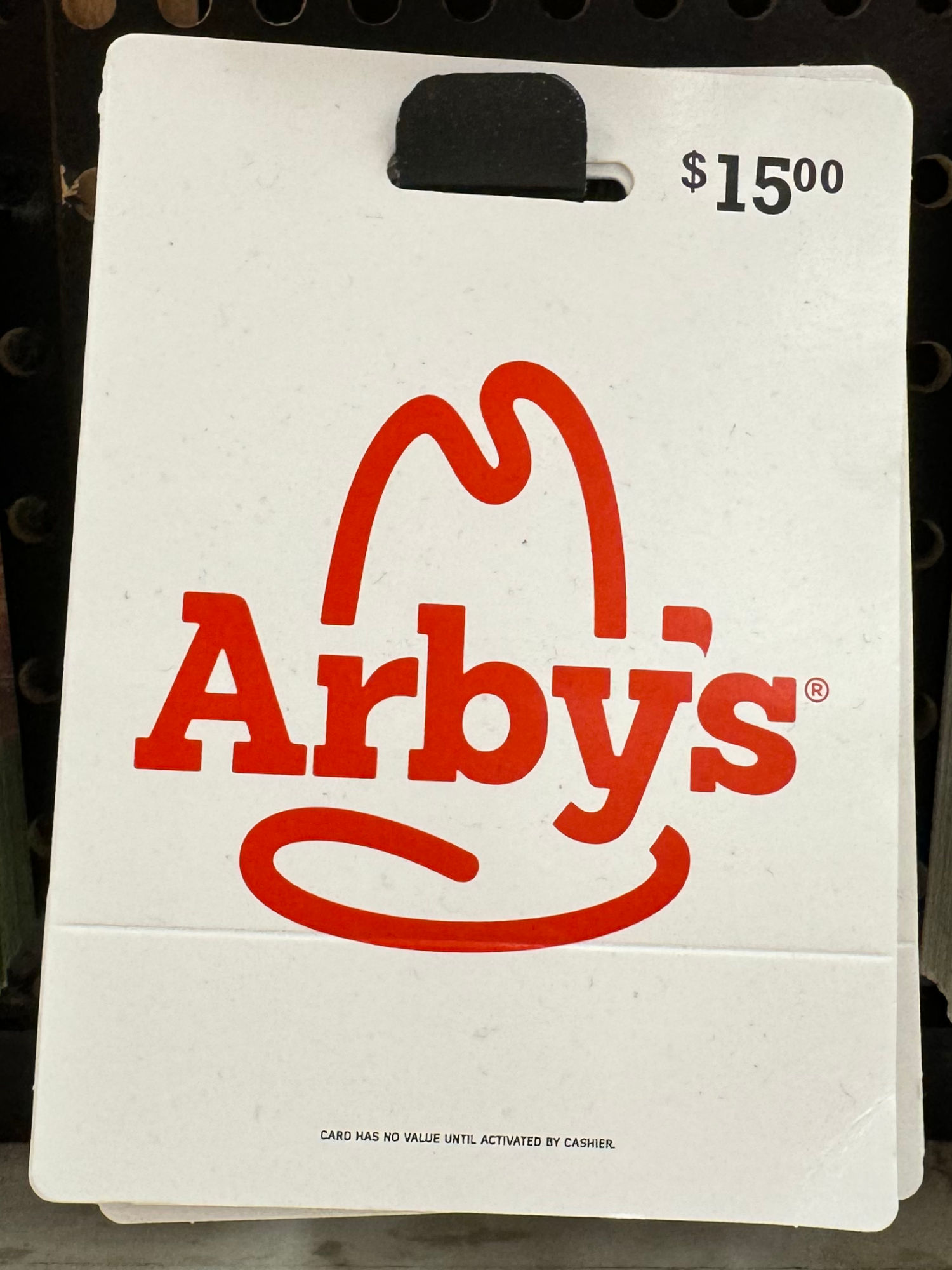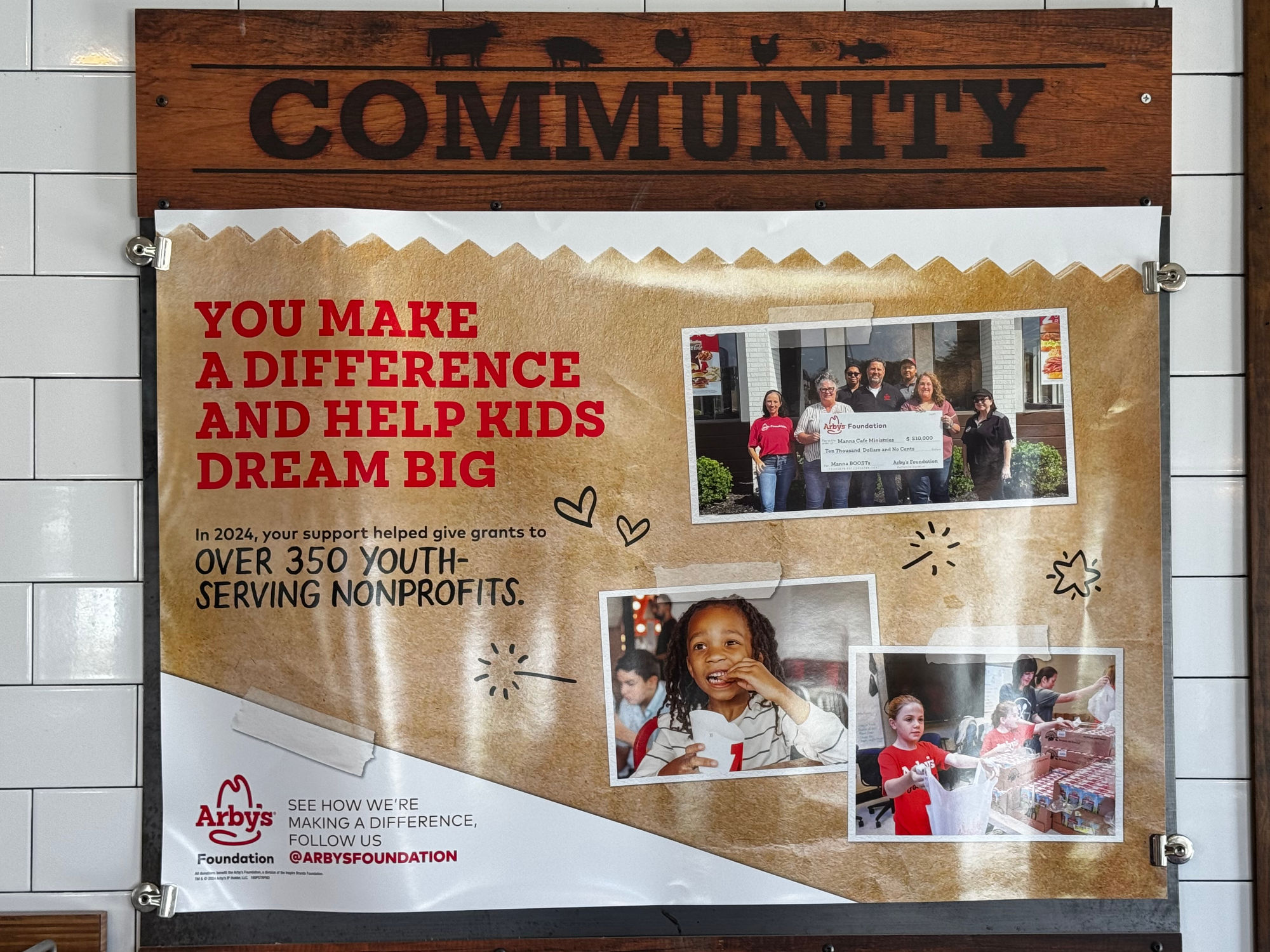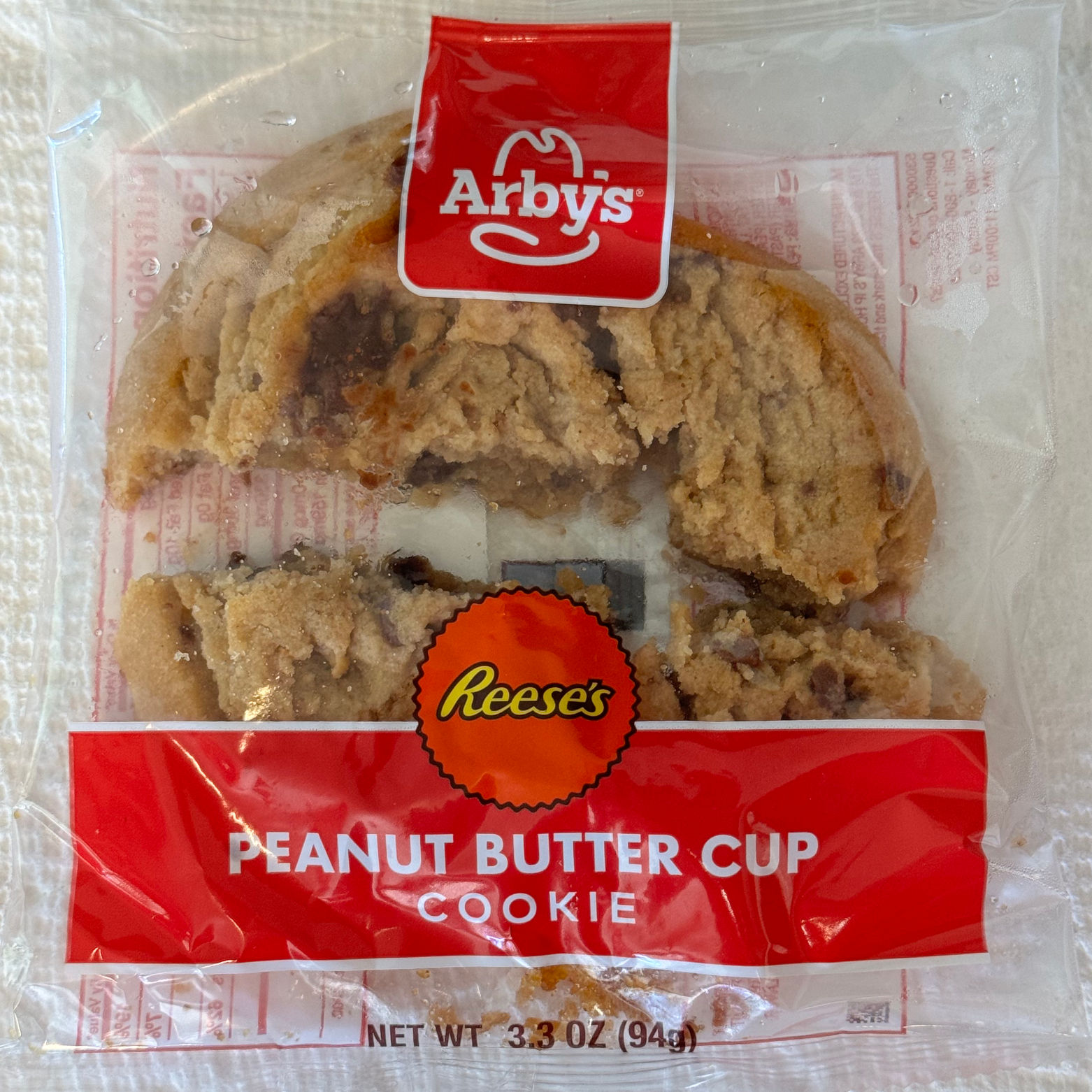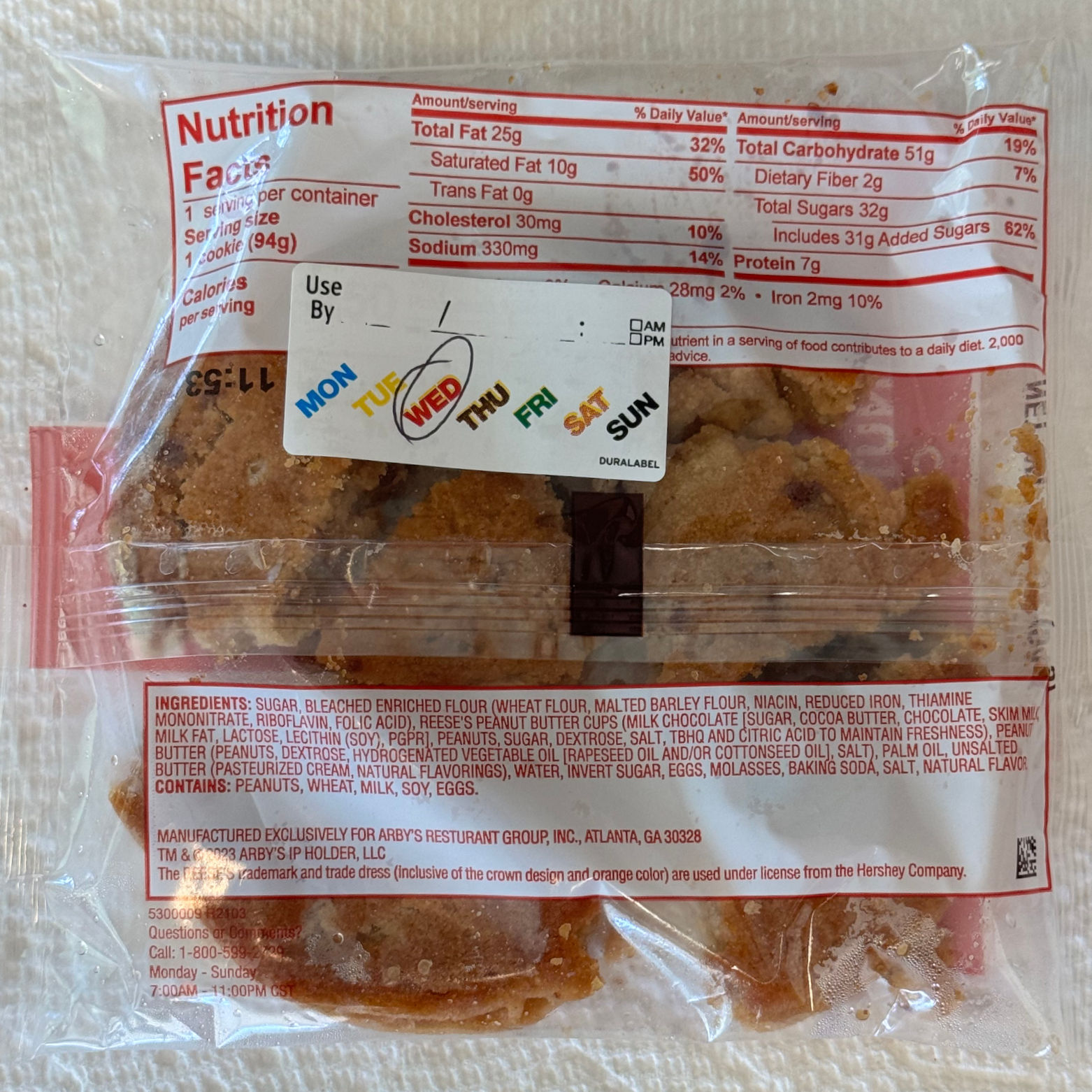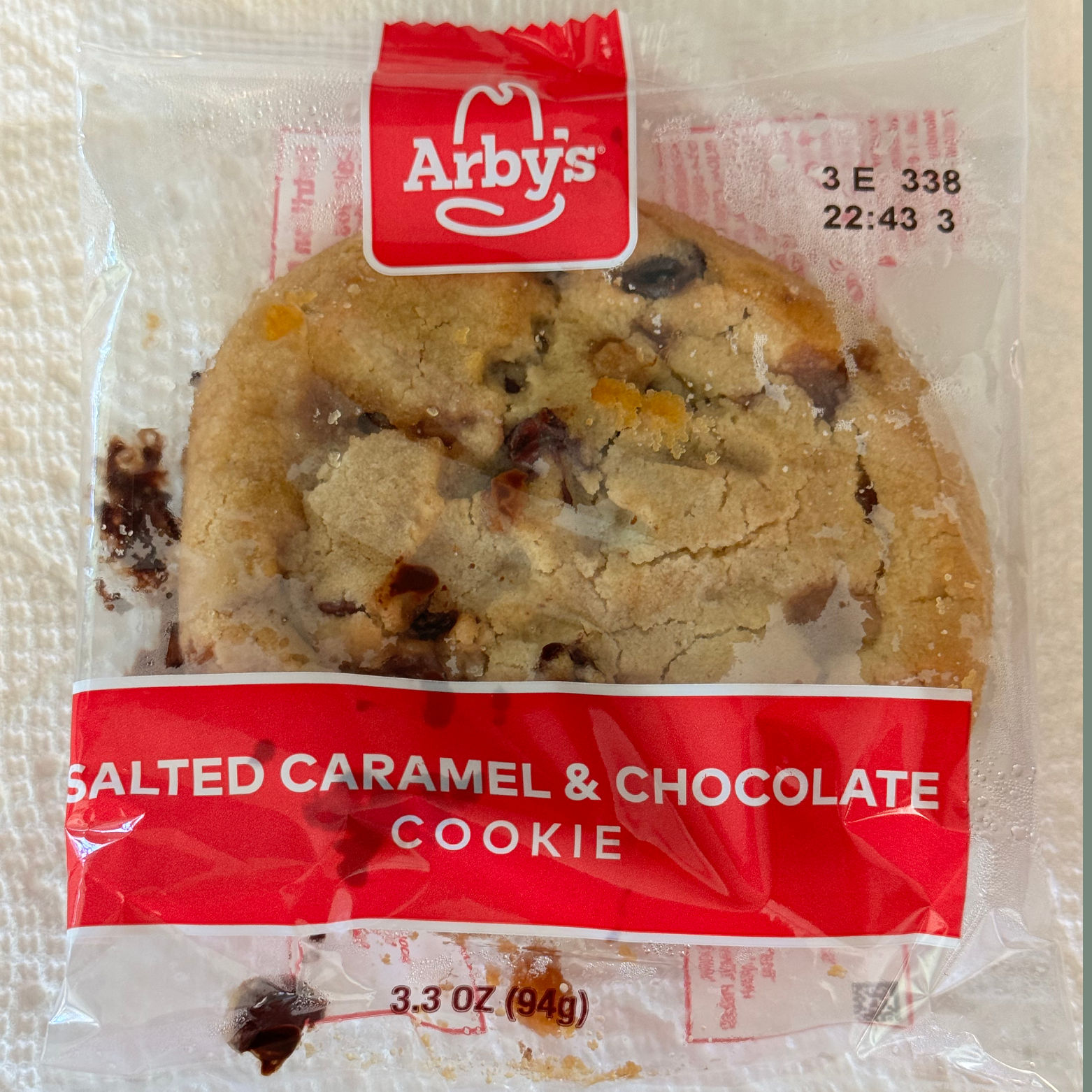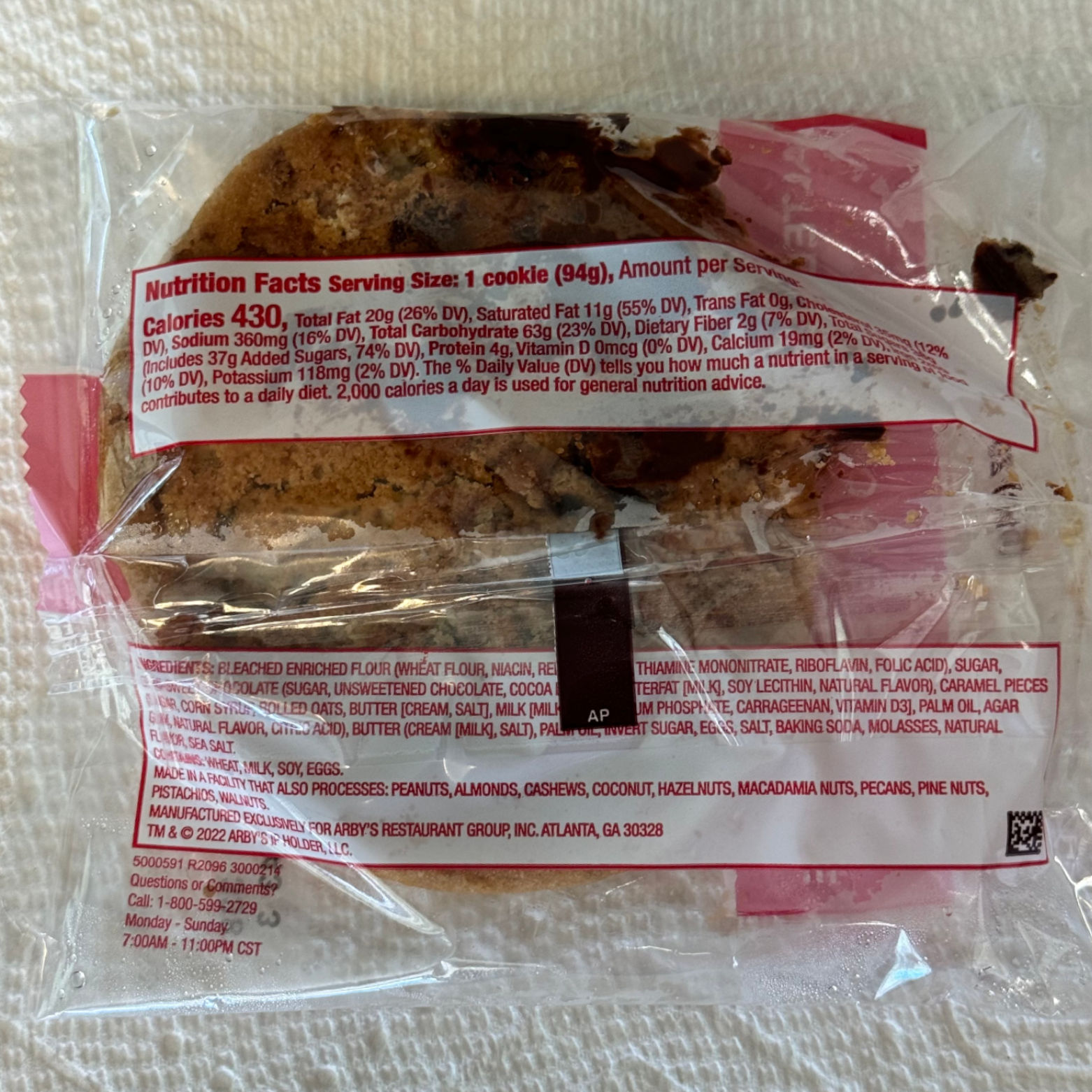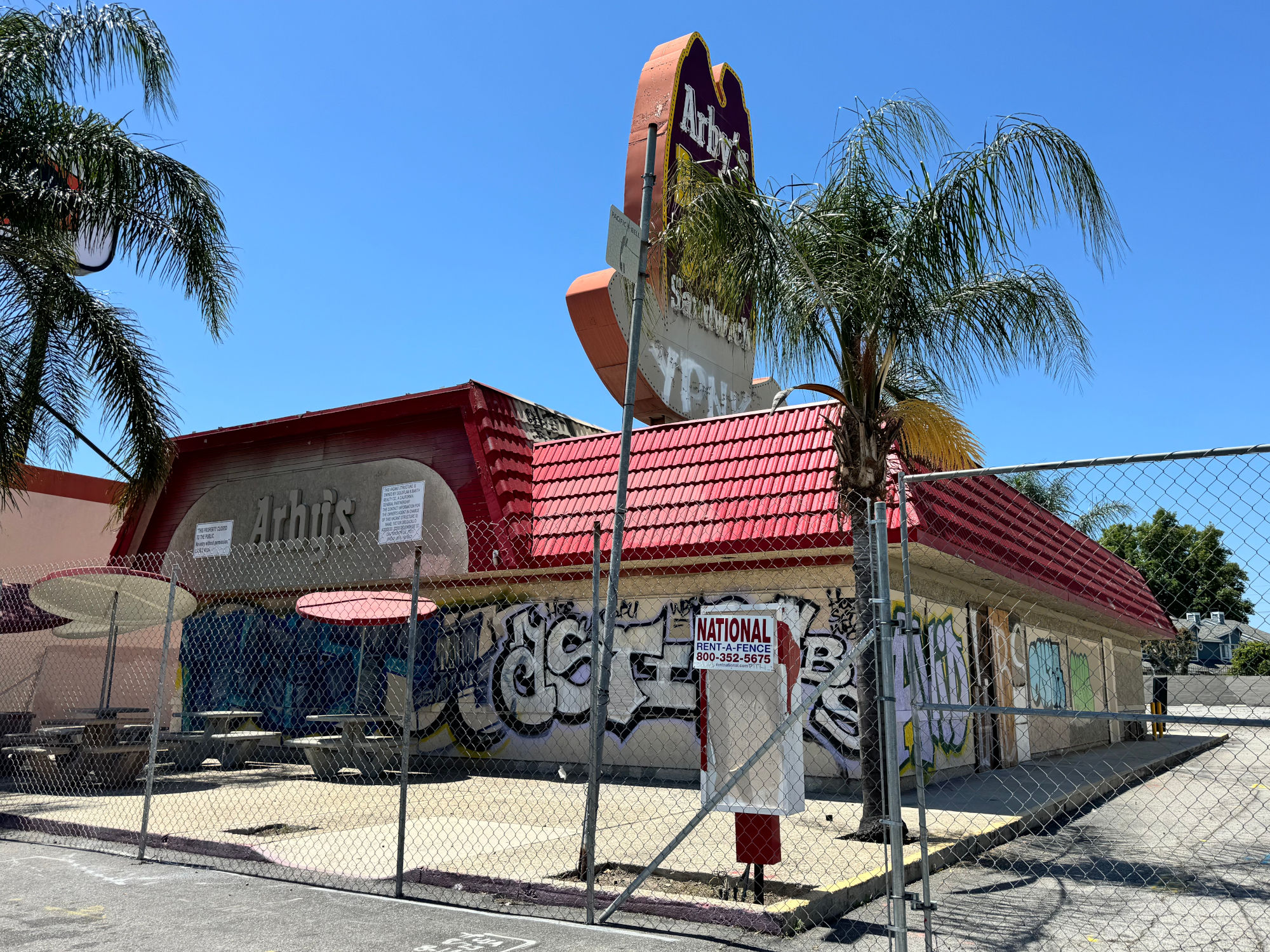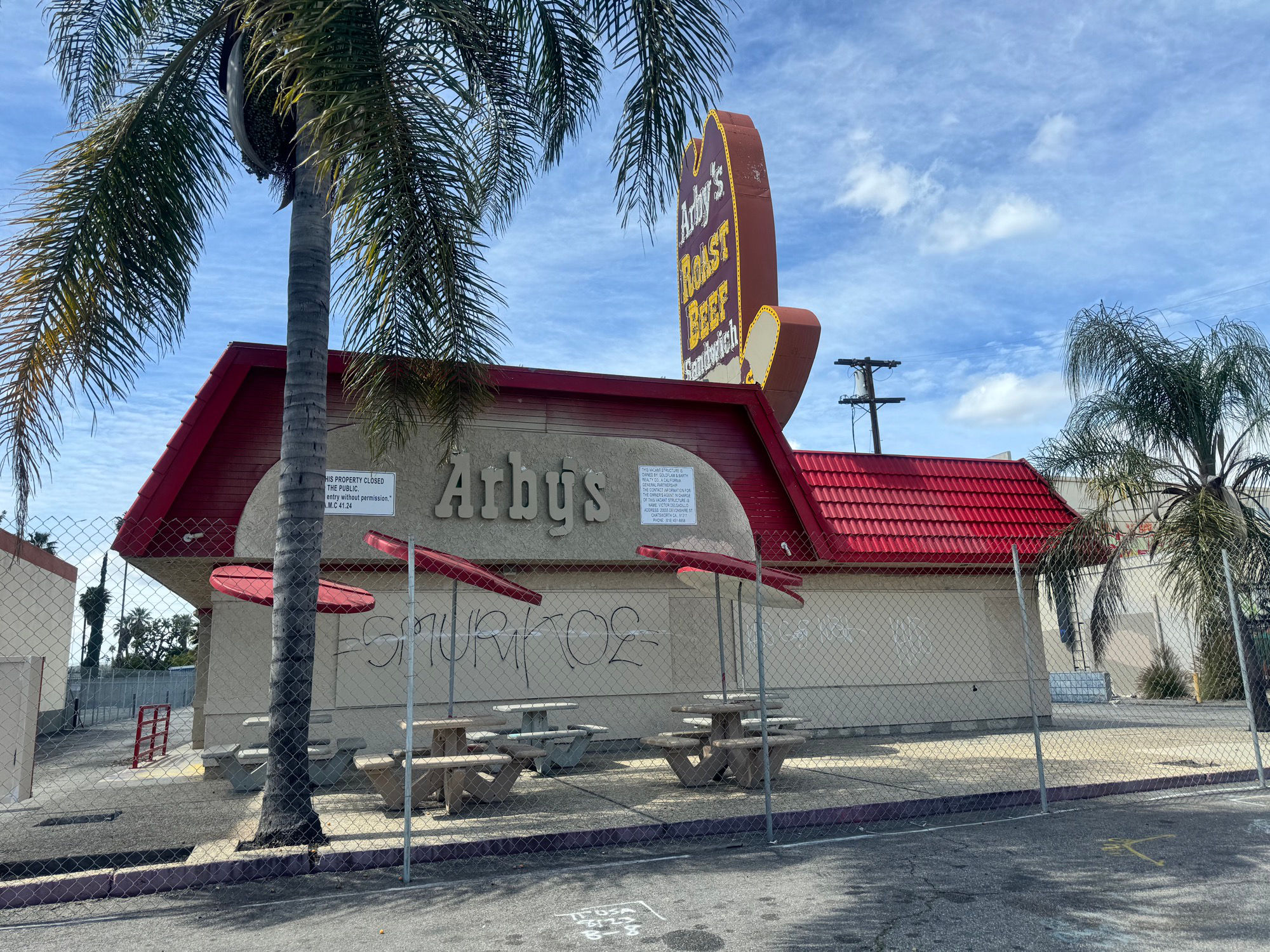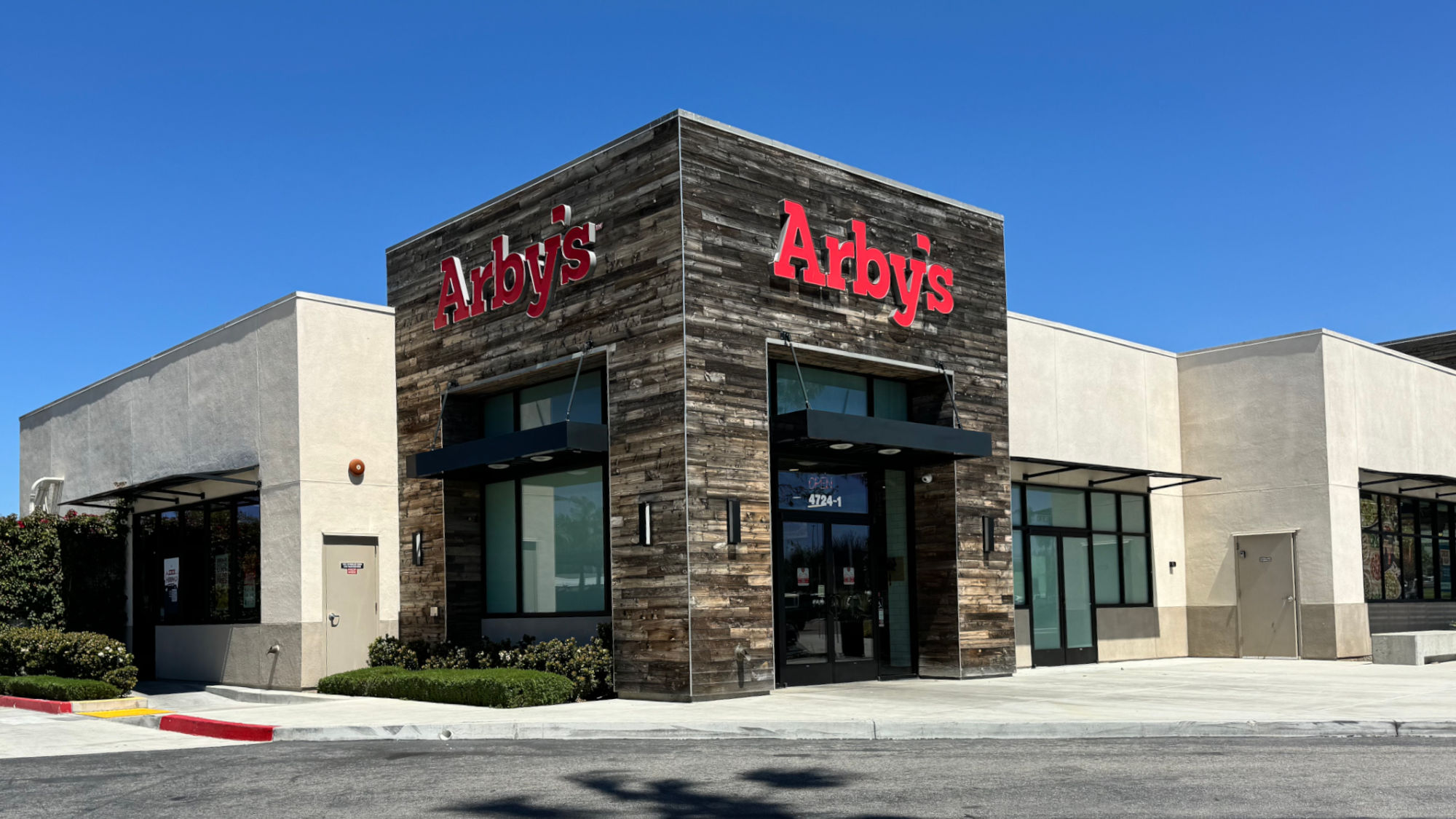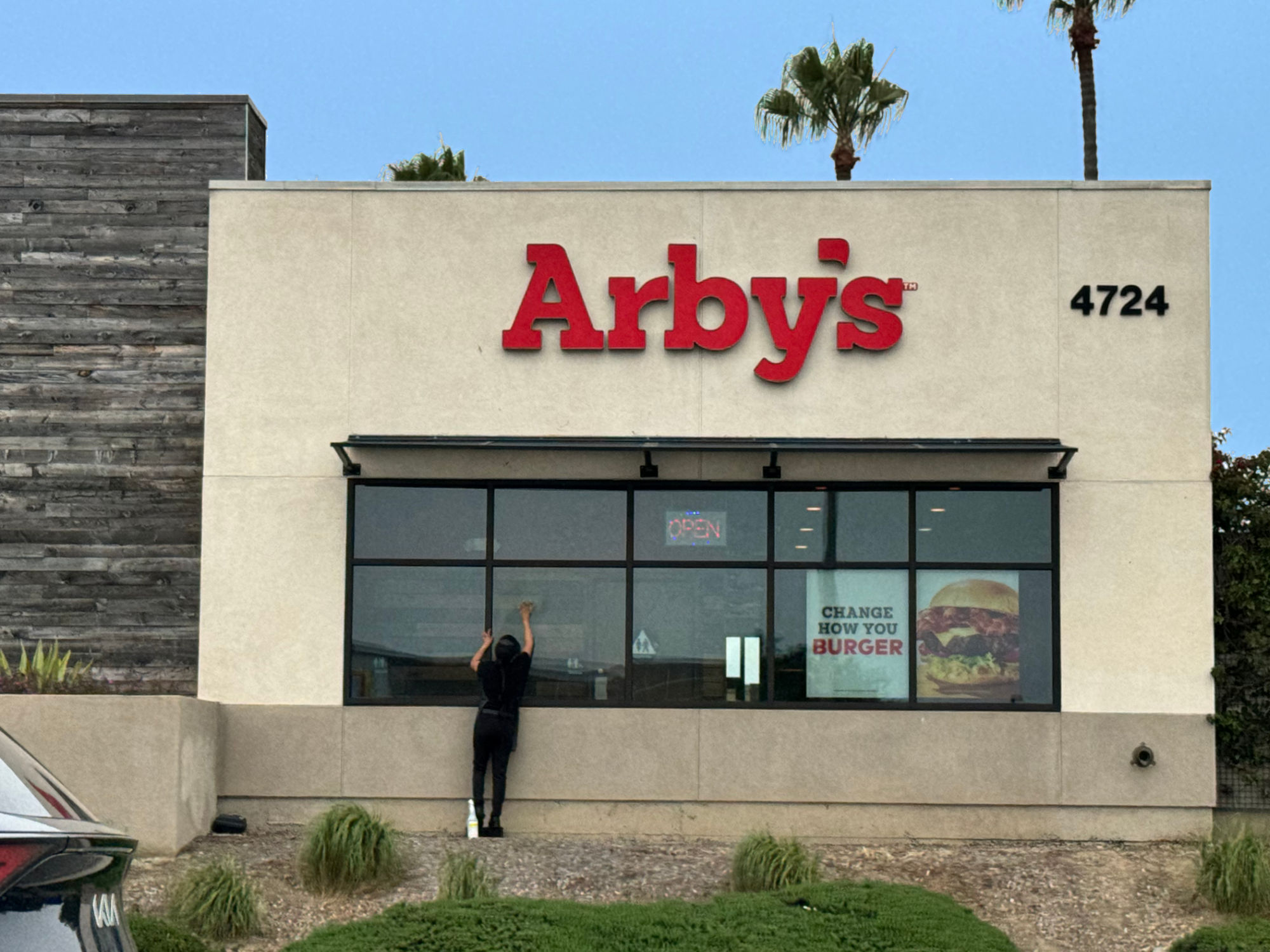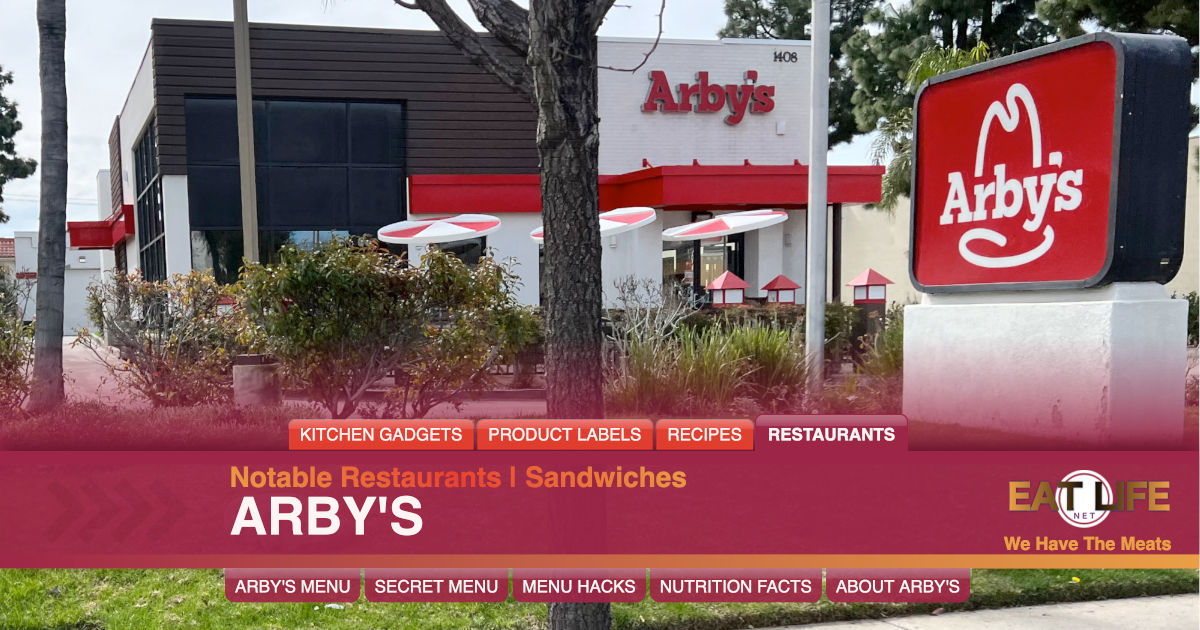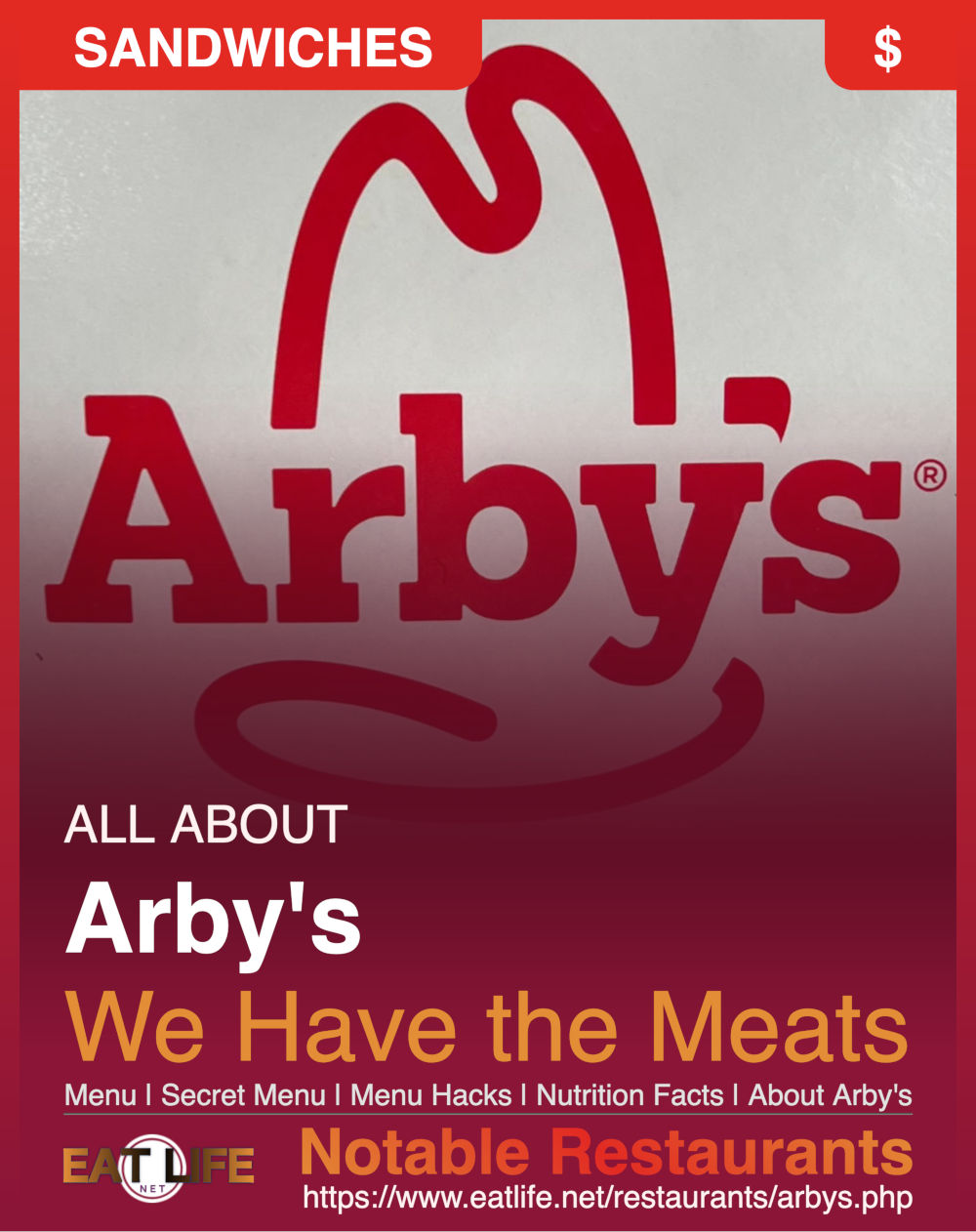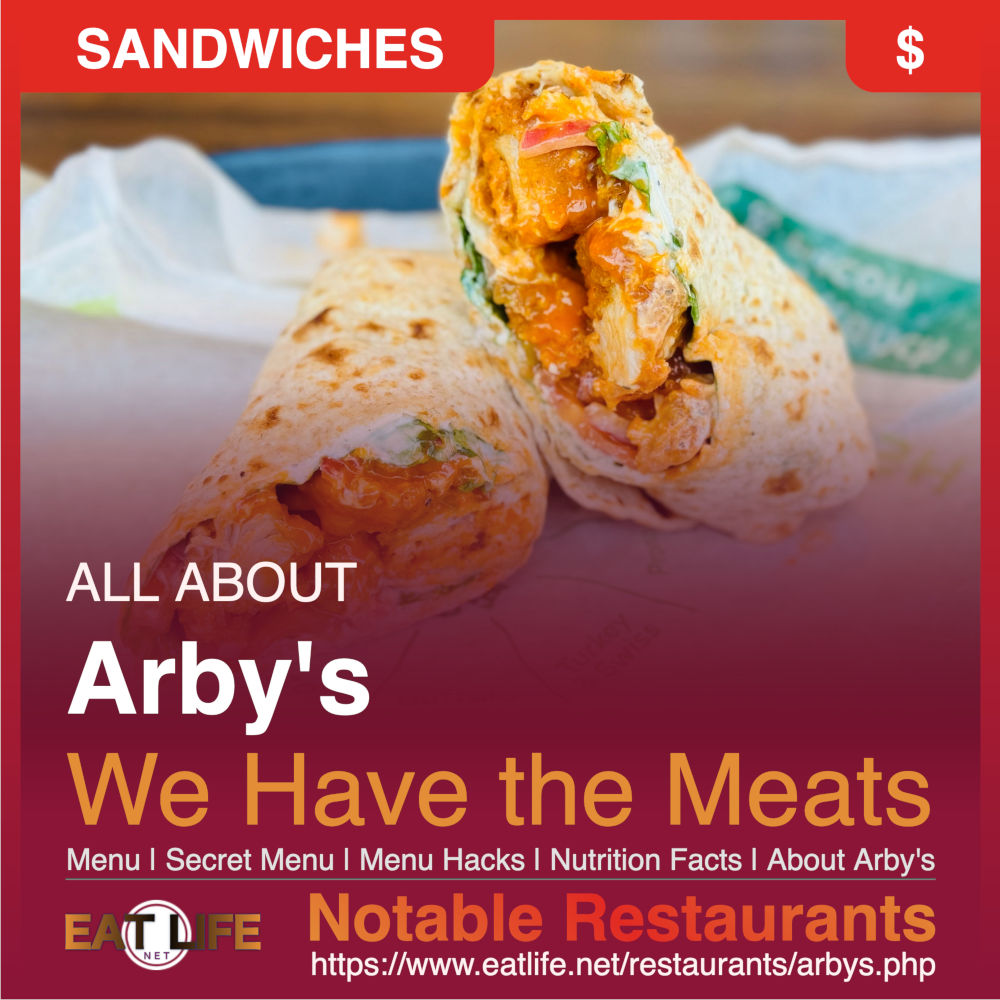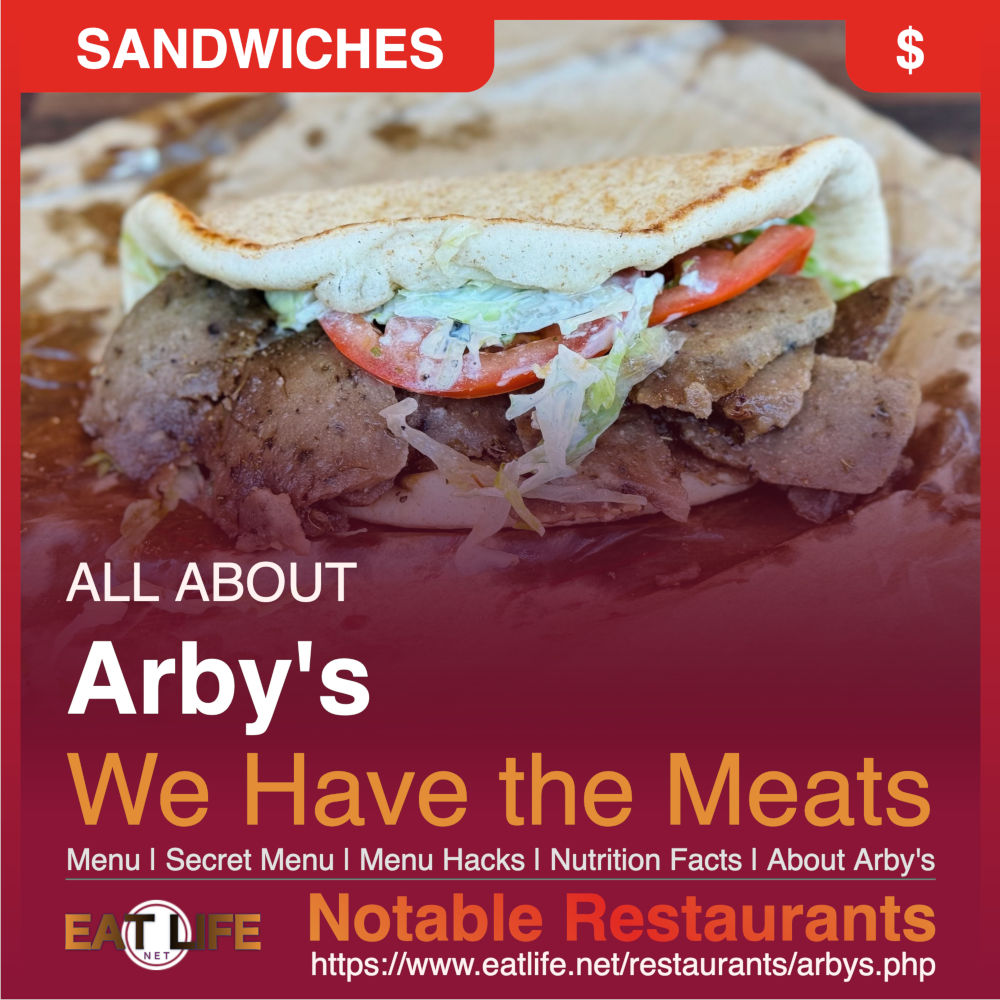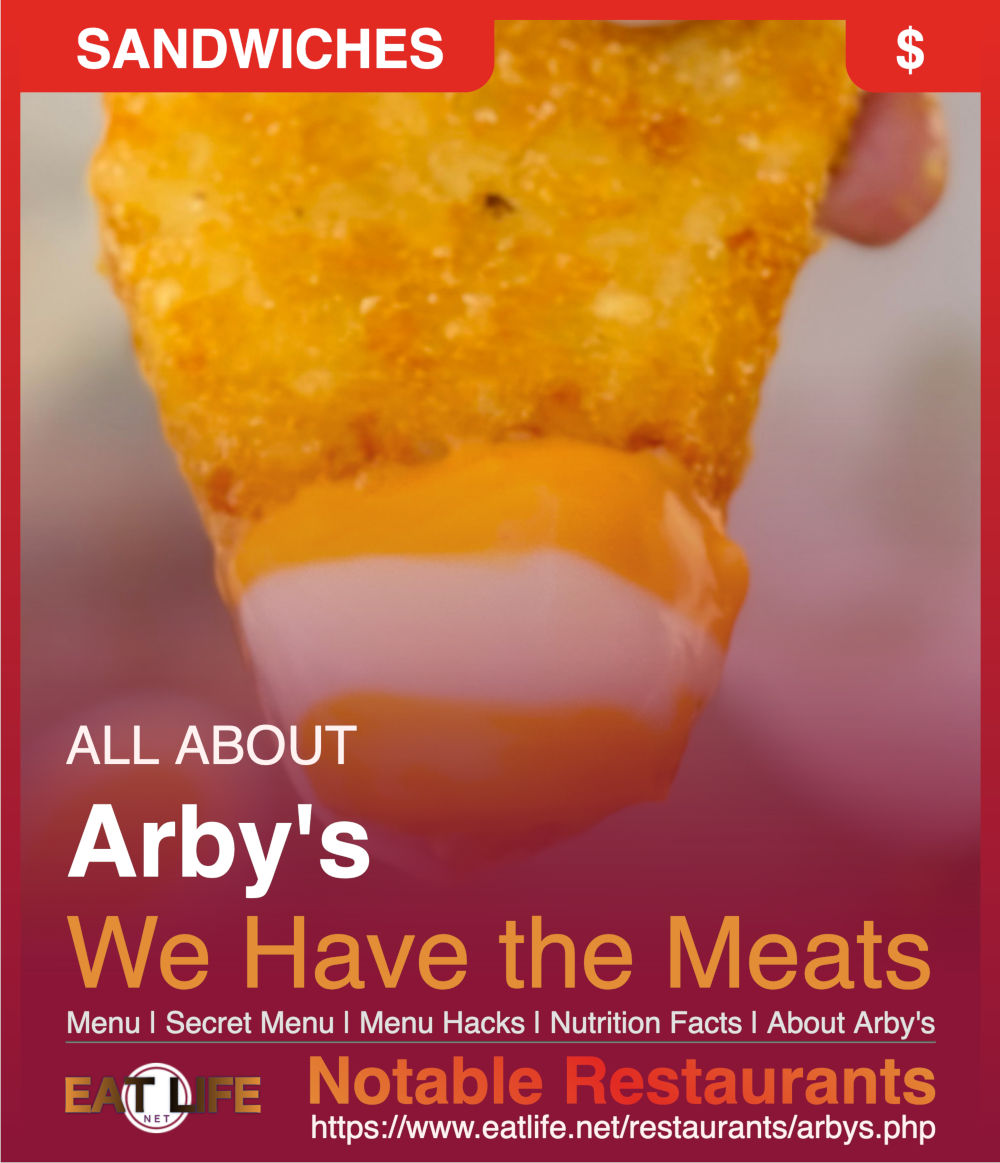They were owners of a restaurant equipment business who thought there was a market opportunity for a fast food franchise based on a dish other than hamburgers. They chose the name Arby's, a phonetic pronunciation of the letters R and B, also short for Raffel Brothers.
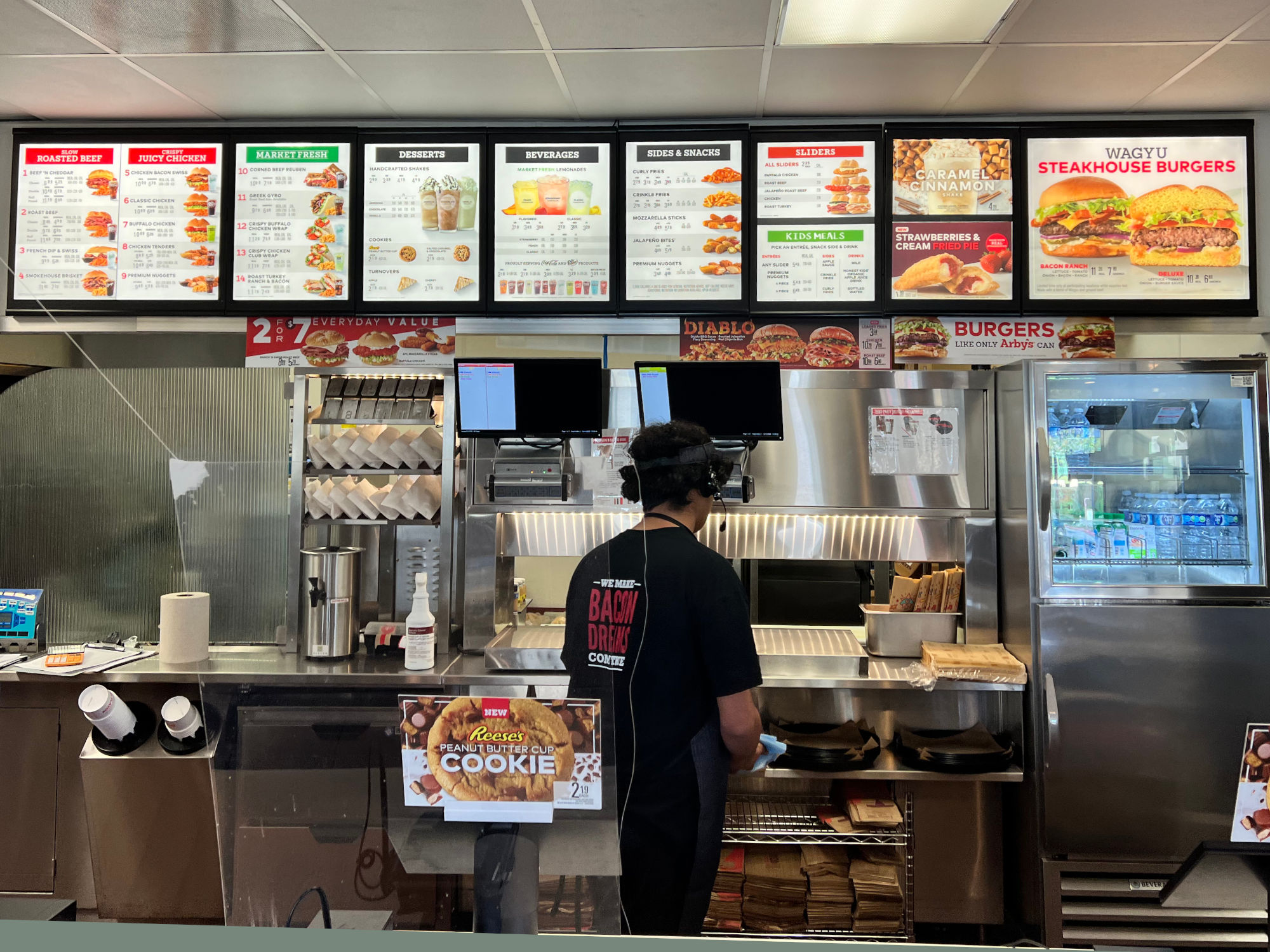
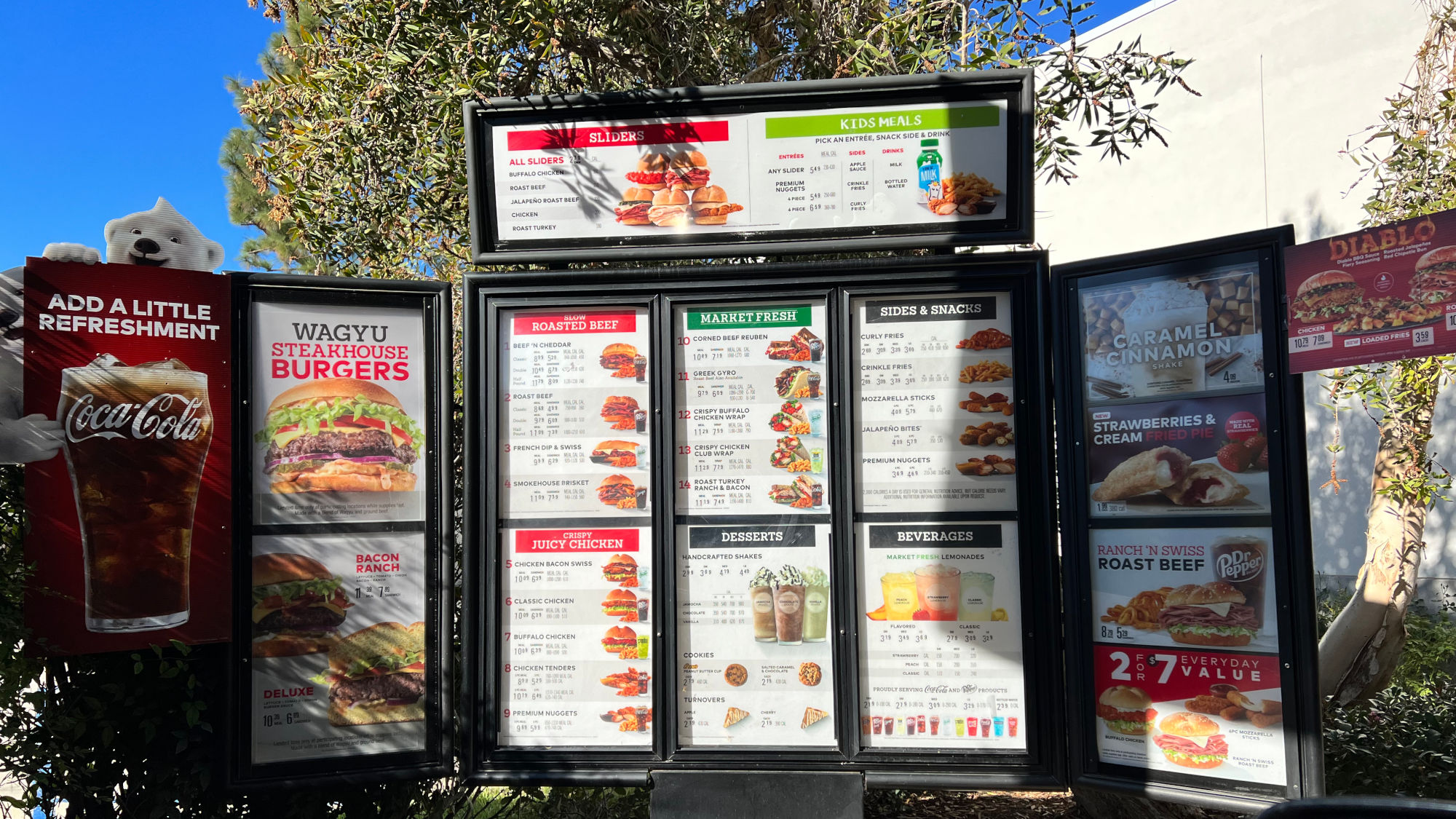
- Angus Cheesesteak
- Arby-Q
- BBQ Brisket Sandwich
- Loaded Curly Fries
- Chicken Bacon Ranch Loaded Curly Fries
- Chicken Cordon Bleu
- Ham & Swiss Melt
- Ham & Swiss on Wheat
- Ham Slider
- Crispy Fish Sandwich
- Fish 'n Cheddar Sandwich
- King's Hawaiian Fish Deluxe Sandwich
- Loaded Italian
- Mac 'n Cheese Bites
- White Cheddar Mac 'N Cheese
- Meat Mountain
- Potato Cakes
- Pulled Pork Sandwich
- Roast Beef Mac 'n Cheese Hack
- Andes Mint Chocolate Shake
- Peanut Butter Cup Cookie
- Steak Nuggets
- Steak Nugget Sandwich
- Steak Nugget Bowl
- Deep Fried Turkey Gobbler
- Deep Fried Turkey Club
- Apple Pie Shake
https://assets.ctfassets.net/o19mhvm9a2cm/6xQfRsamTqrKT3pTqwUAn5/ebf02b1bf6c0bca89fb54107eb26b3ca/Arbys_Menu_Items_and_Ingredients_MAR_2024.pdf
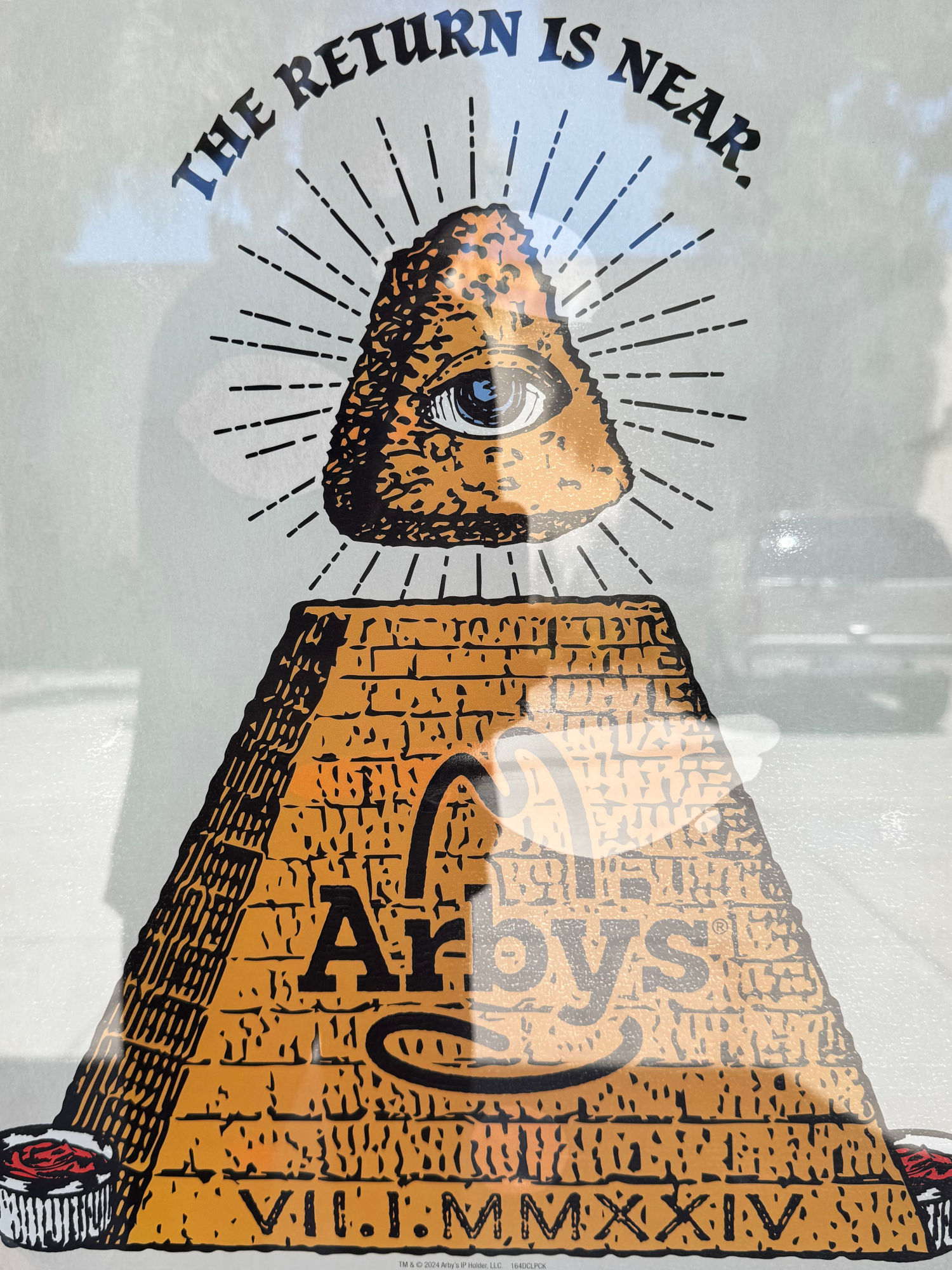
- VII.I.MMXXIV = 7/1/2024
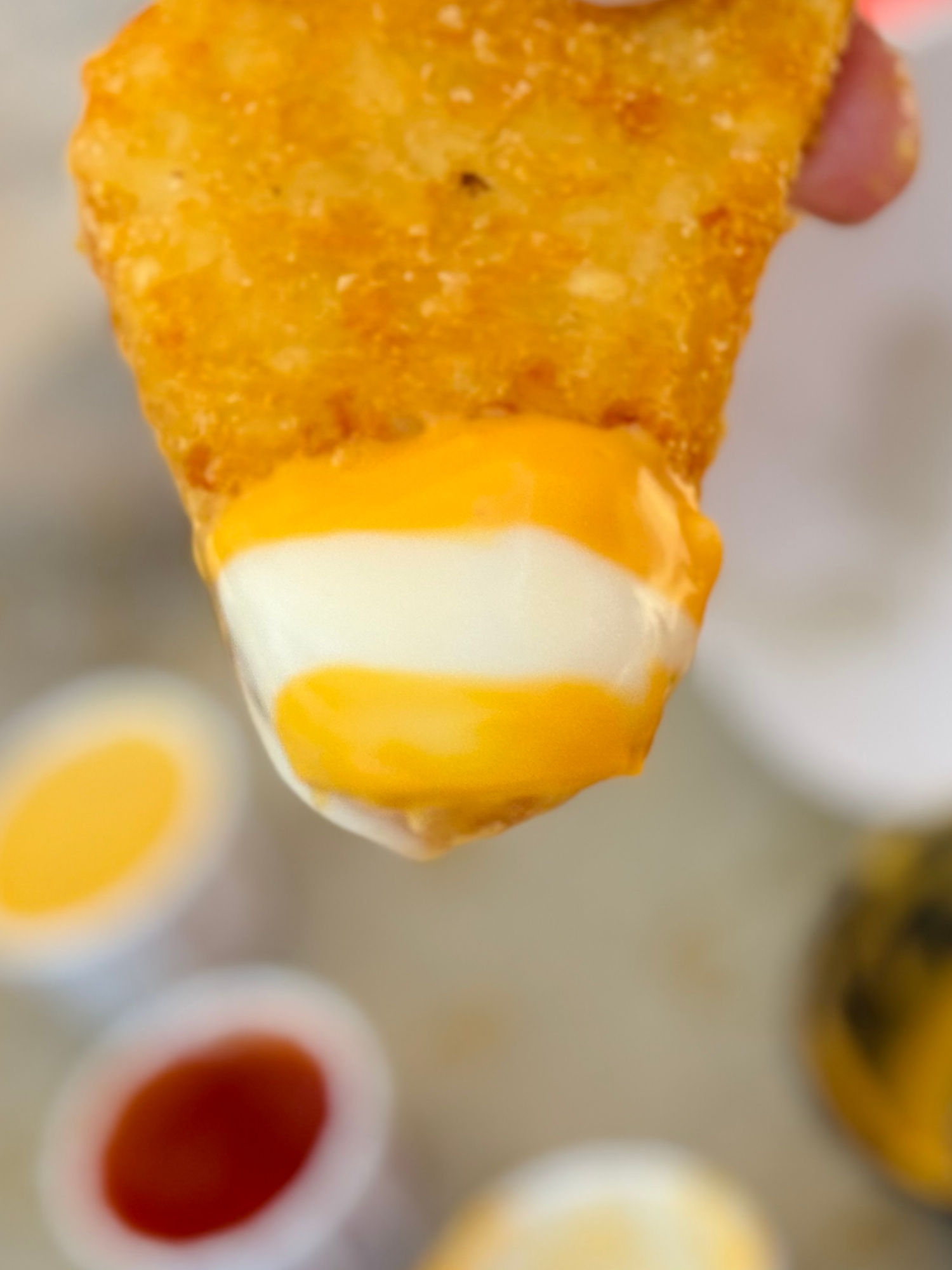
- Cheese and Horsey
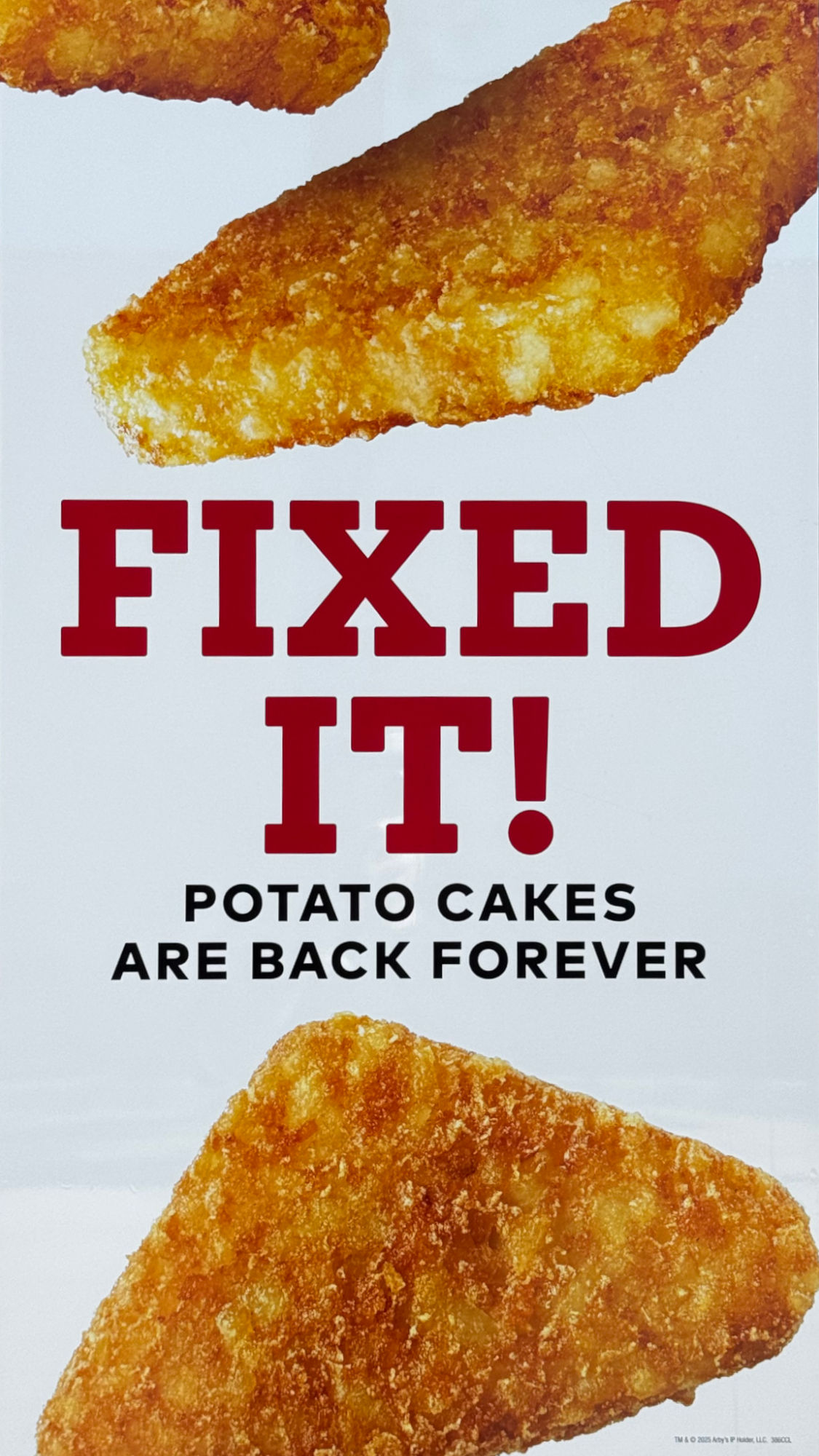
- Back Forever

Potato Cakes
- Shredded Potato Fried to a Crispy Golden Brown
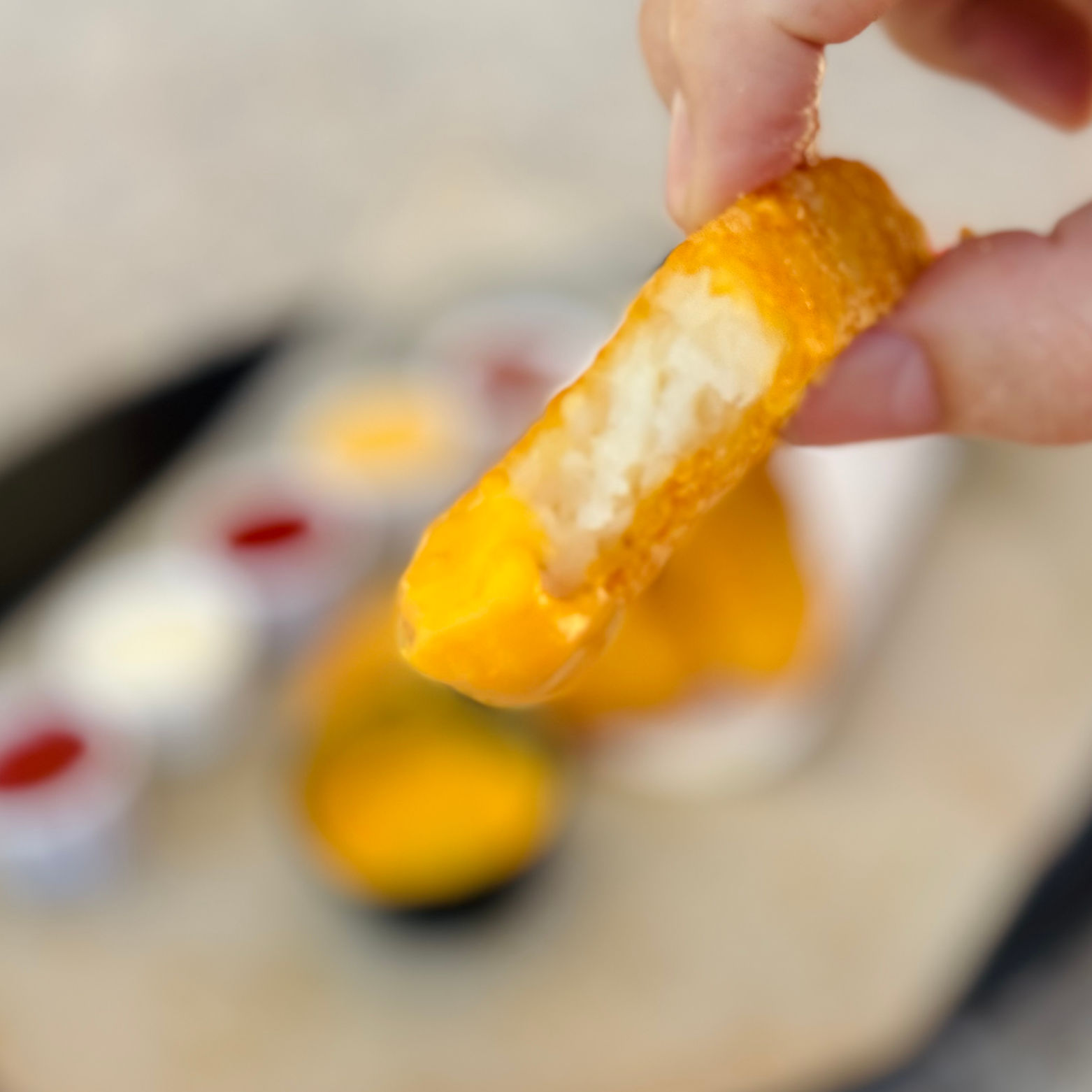
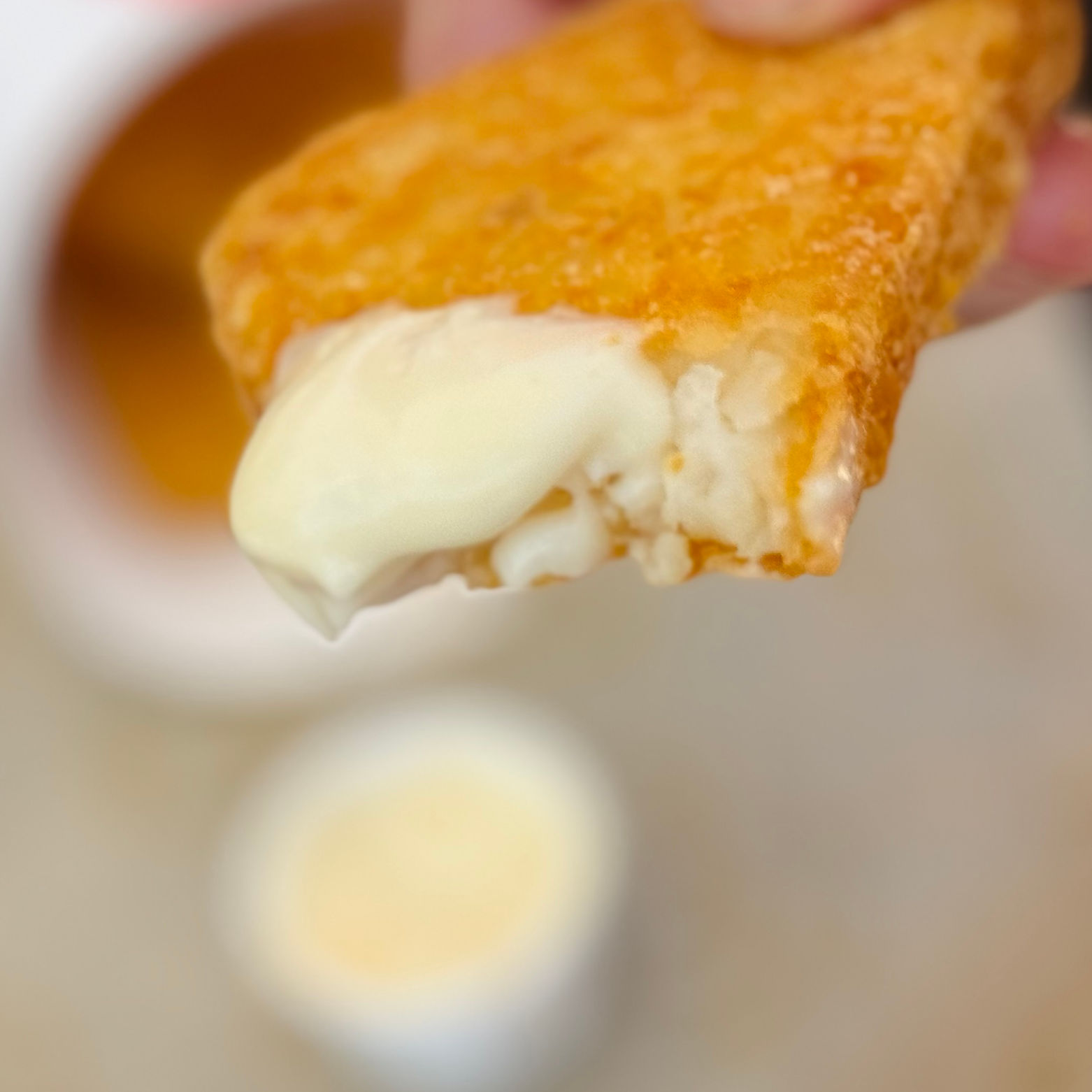

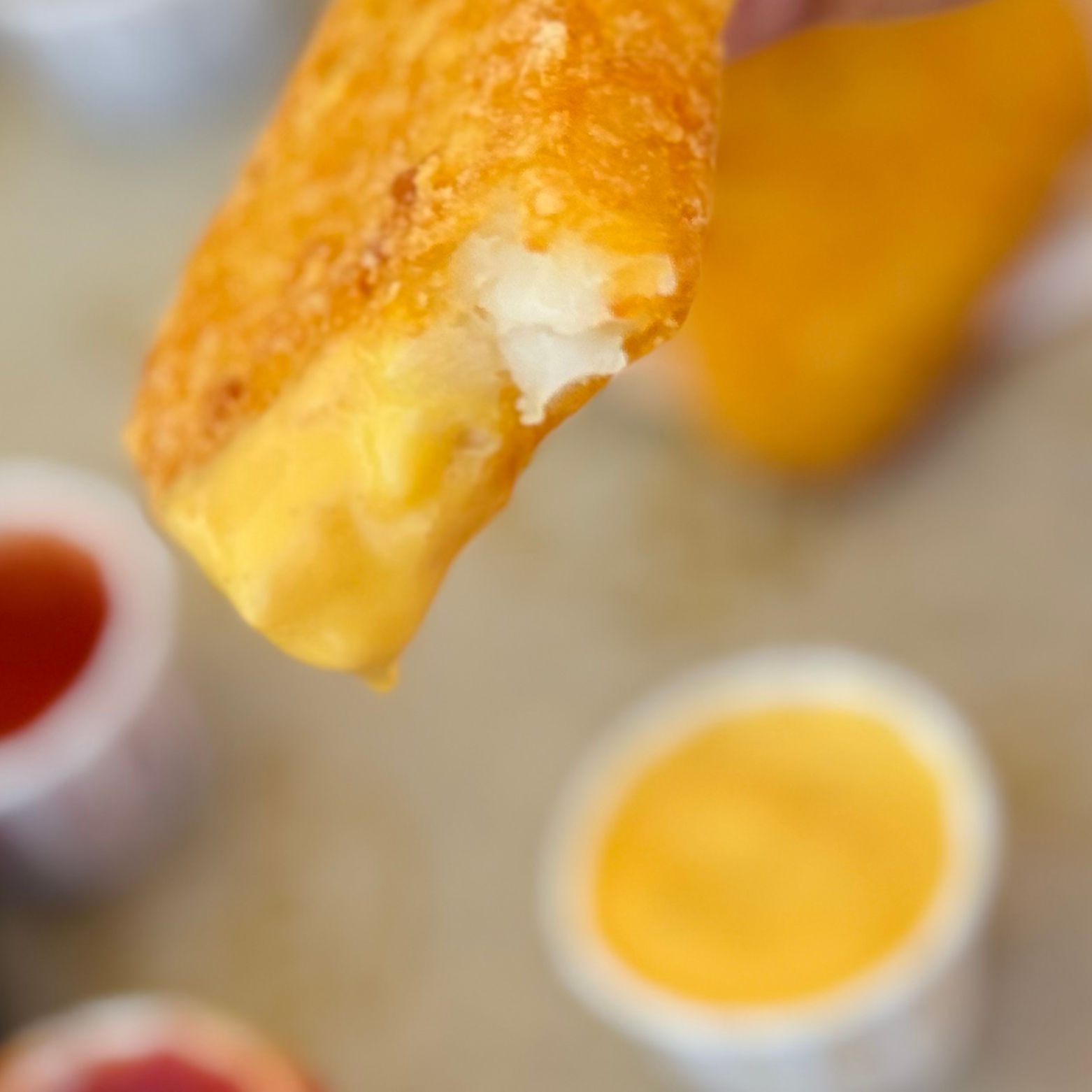
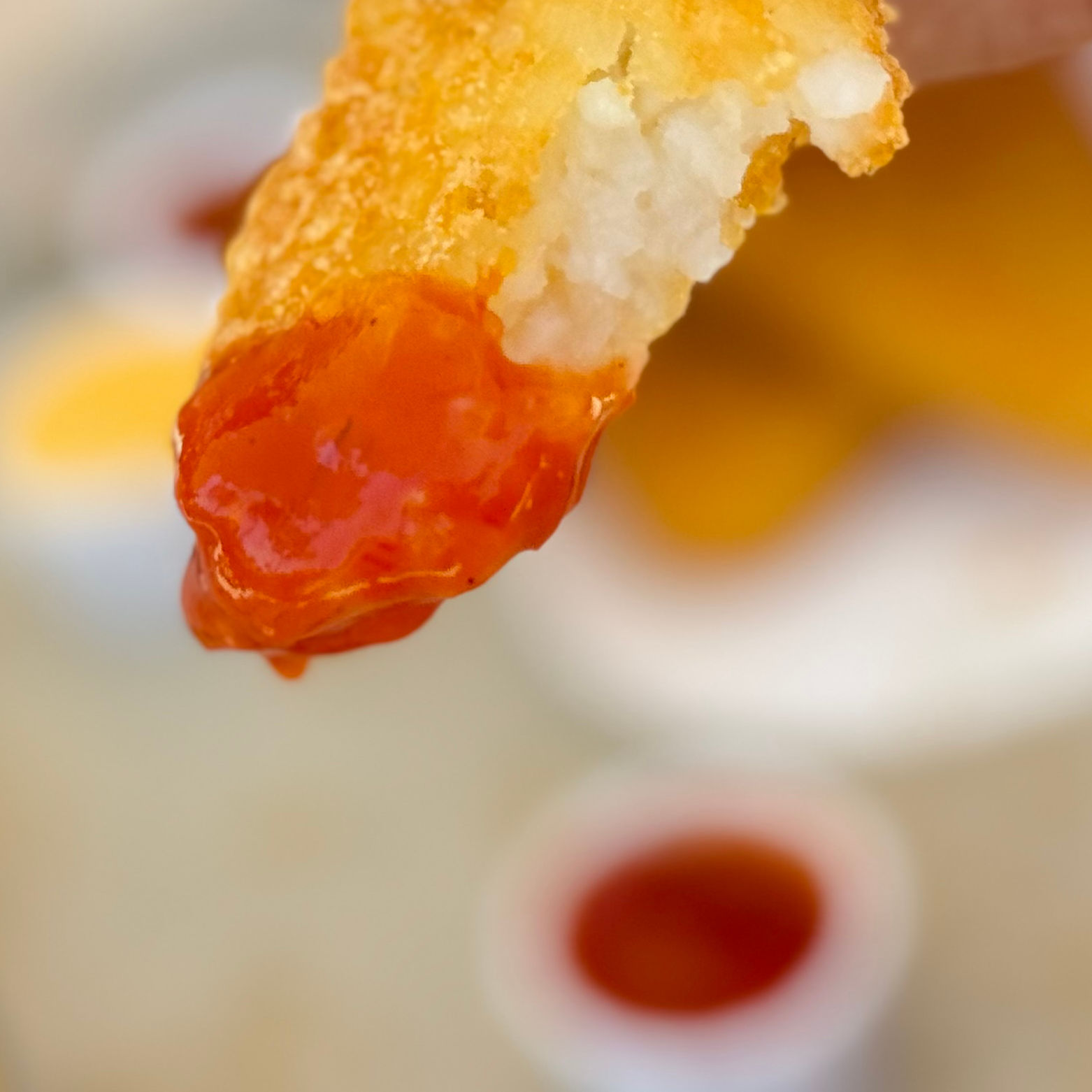


Mozzarella Sticks
- Battered and Fried Mozzarella
- Marinara Sauce

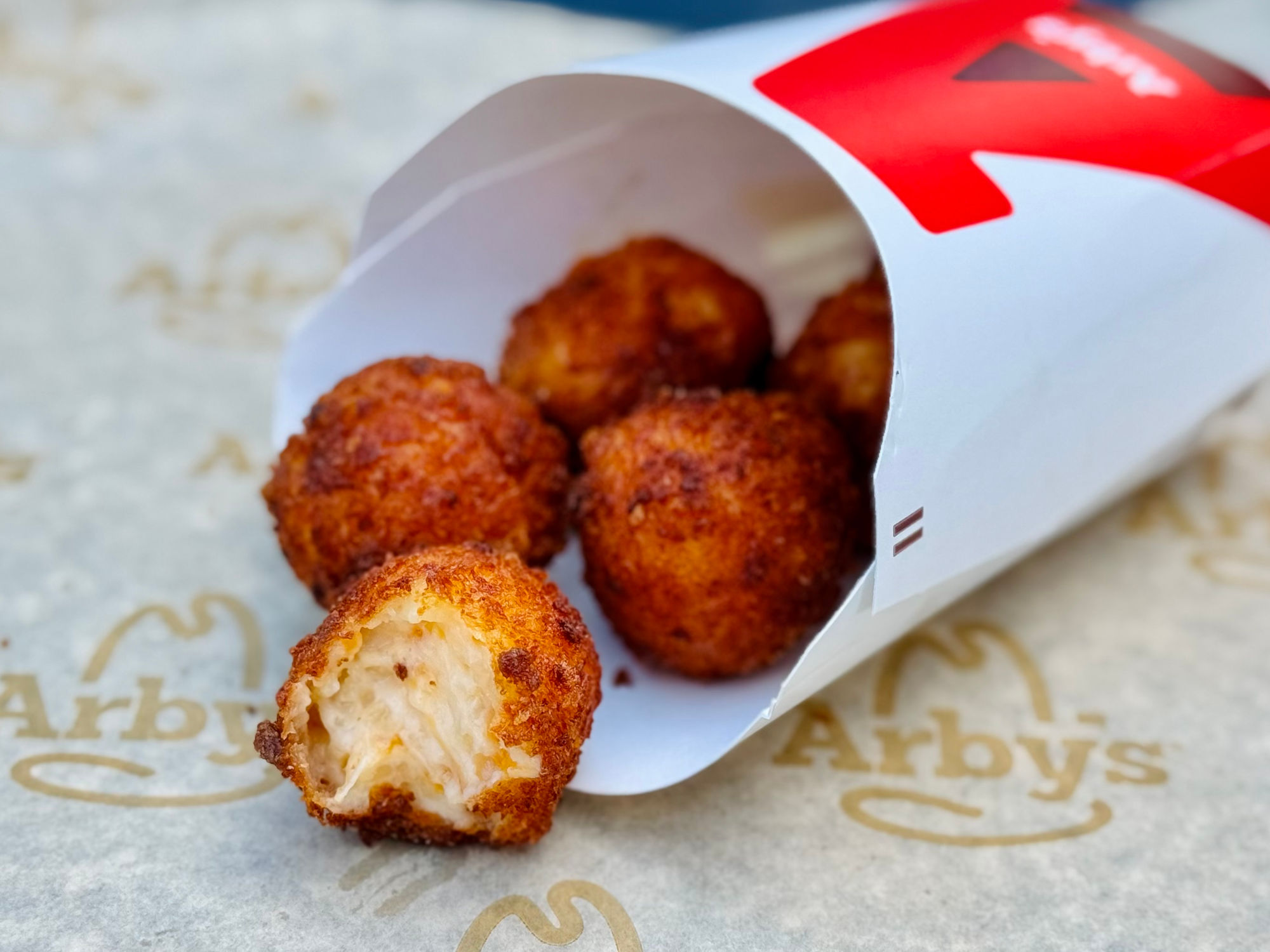
Fried Mac 'n Cheese Bites
- Blend of Four Cheeses and Noodles Breaded and Fried
ArbysWhat We Believe In
Since the day we opened, we've had six simple principles that help guide us in the goals we set, the relationships we build, and the decisions we make:
- Dream Big.
Our story is proof that even the biggest dreams come true. We're committed to providing opportunities for people to achieve their own dreams.- Work Hard.
We're firm believers in doing things the right way. And the right way usually involves a lot of hard work. But if you're not doing things right, you're probably doing them wrong.- Get It Done.
We've found that success usually leads to more success. It's why we chase after positive results, and it's why we've been, well, successful.- Play Fair.
We value honesty, integrity, respect, courage, and fairness.- Have Fun.
We've always felt that if you're not having fun, you should do something else. Life's too short to not be enjoyed.- Make a Difference.
Can a restaurant make a difference? We think it can. We've always felt a responsibility to improve the lives of our employees and communities.Inspiring Smiles Through Delightful Experiences
Arby's delivers on its purpose by celebrating the art of Meatcraft with a variety of high-quality proteins and innovative, crave-able sides, such as Curly Fries and Jamocha shakes. Arby's Fast Crafted restaurant services feature a unique blend of quick-serve speed combined with the quality and made-for-you care of fast casual. Arby's Restaurant Group, Inc. is the franchisor of the Arby's Brand and is part of the Inspire Brands family of restaurants headquartered in Atlanta, Ga. Arby's, founded in 1964, is the second-largest sandwich restaurant brand in the world with more than 3,500 restaurants in nine countries.
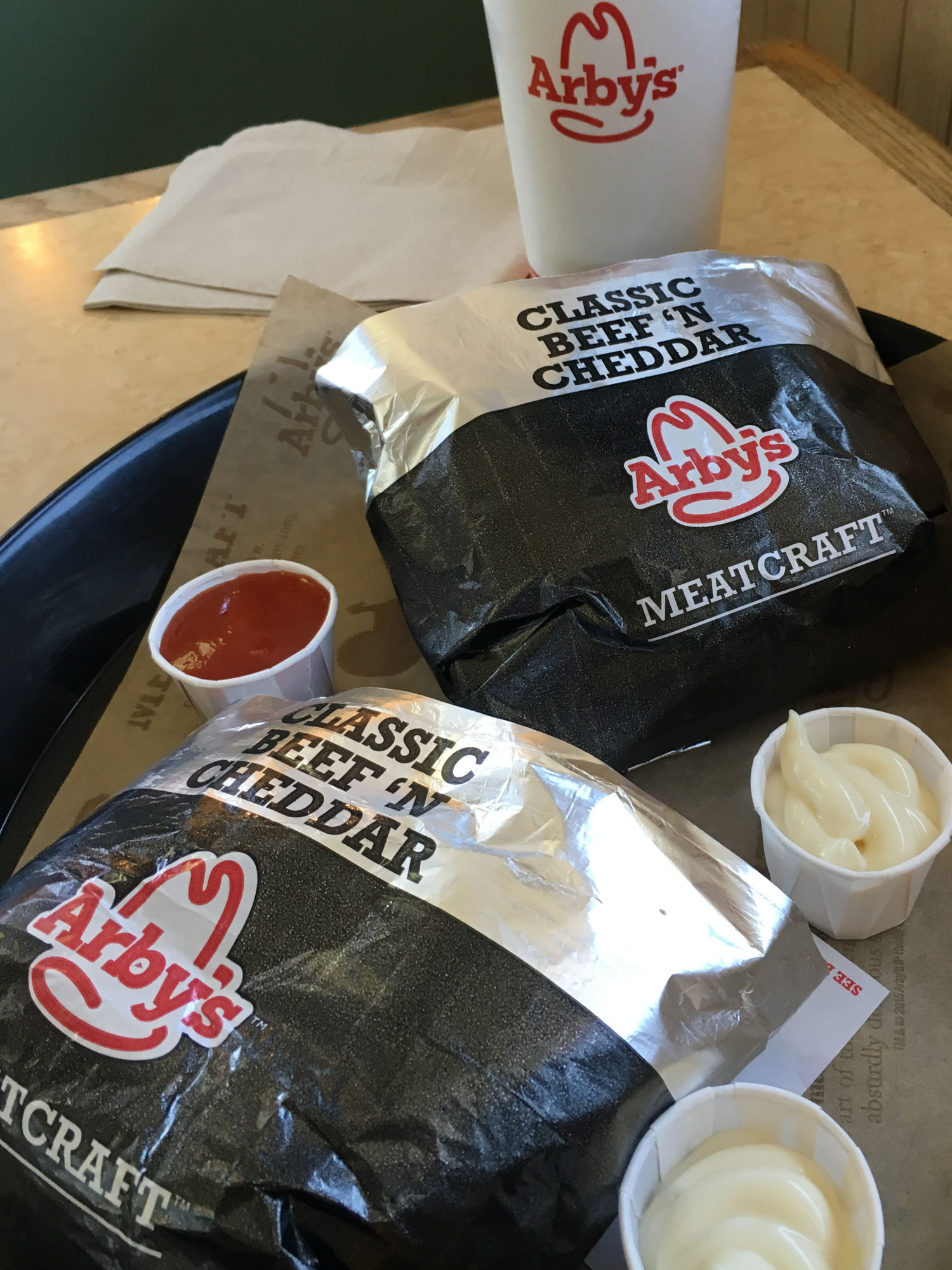
Classic Beef 'N Cheddar
- Famous Roast Beef
- Cheddar Cheese Sauce
- Zesty Red Ranch
- Toasted Onion Roll
- Add: Arby's Sauce
- Add: Horsey Sauce
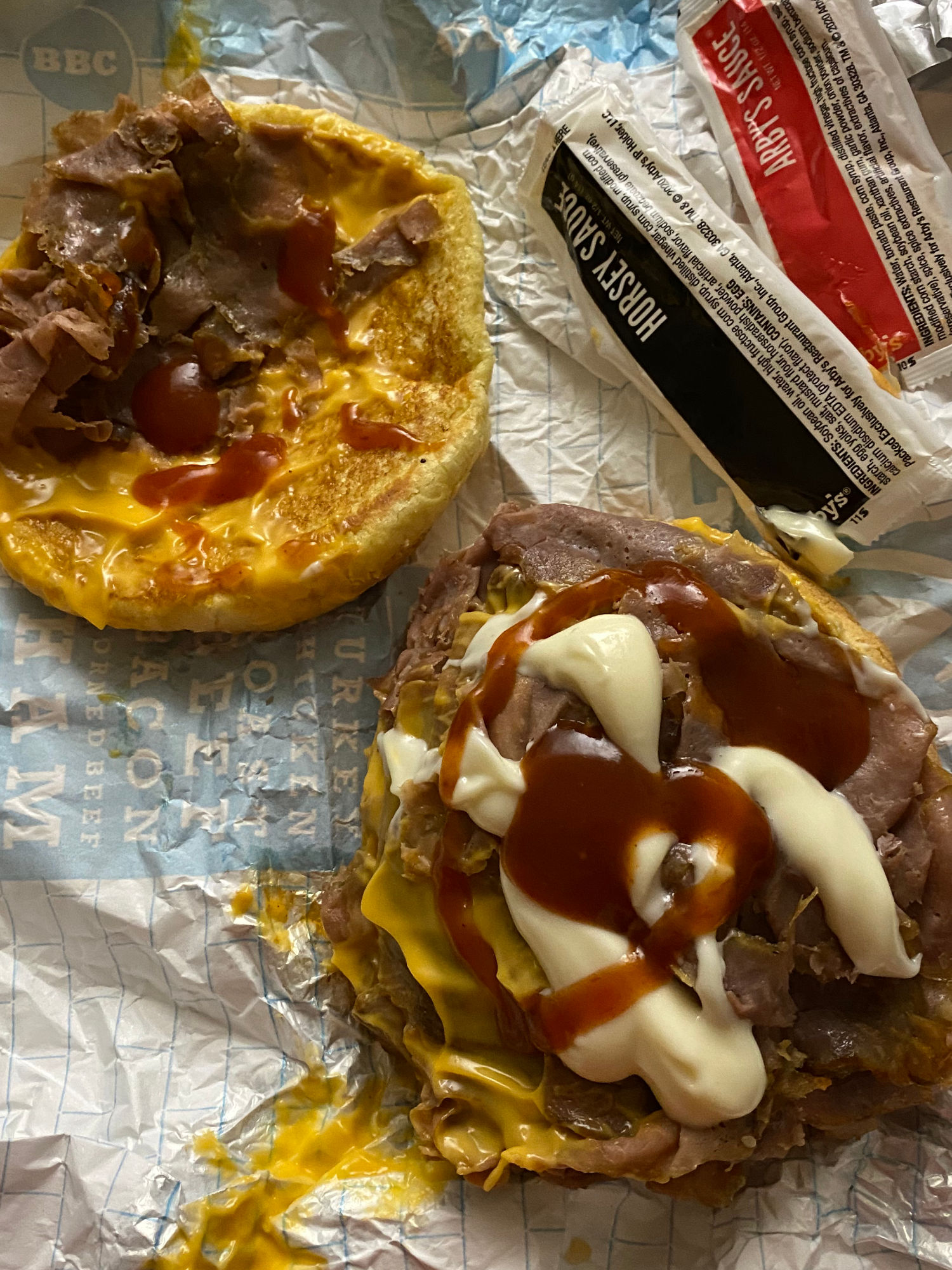

Double Beef 'N Cheddar
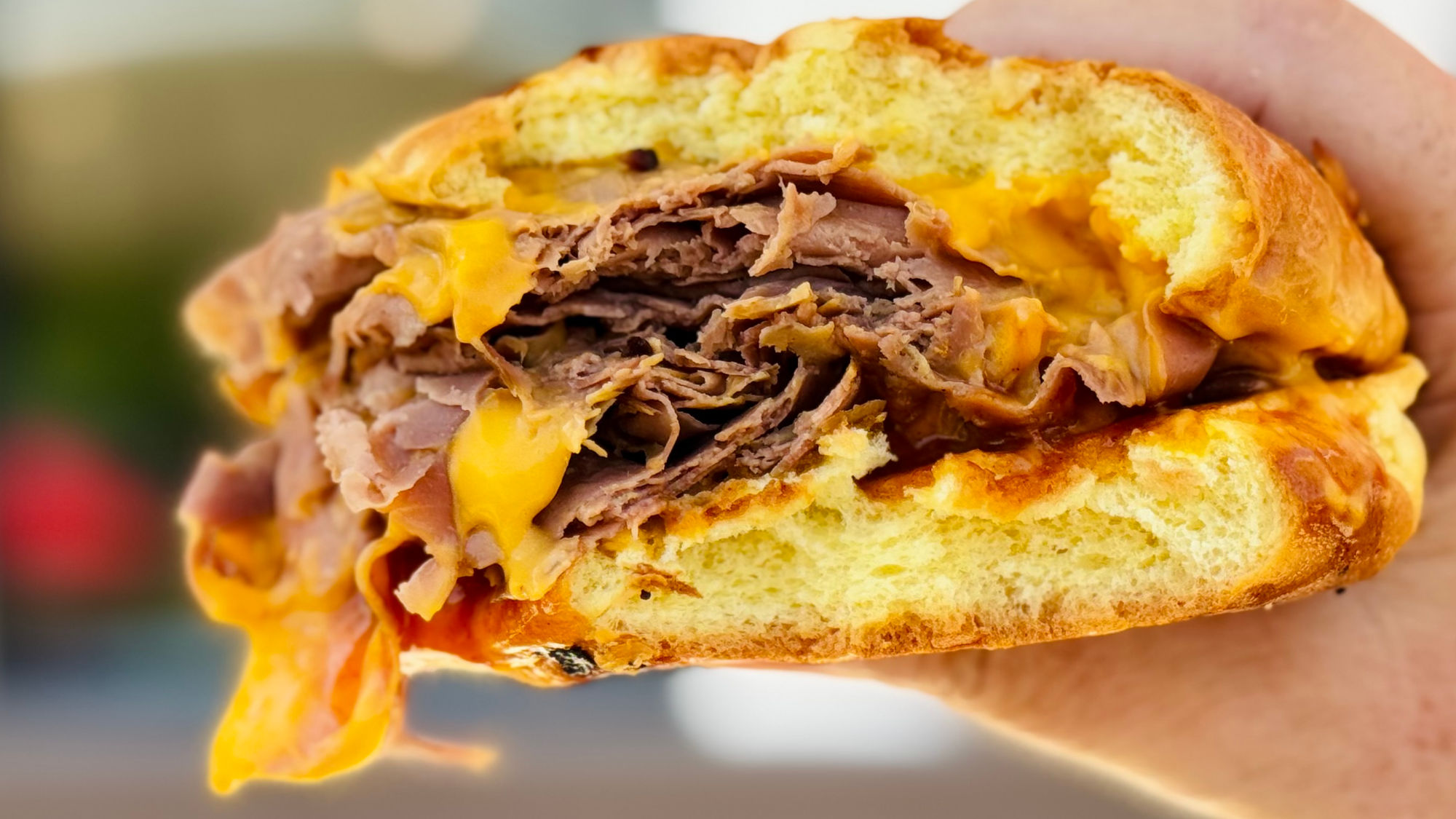
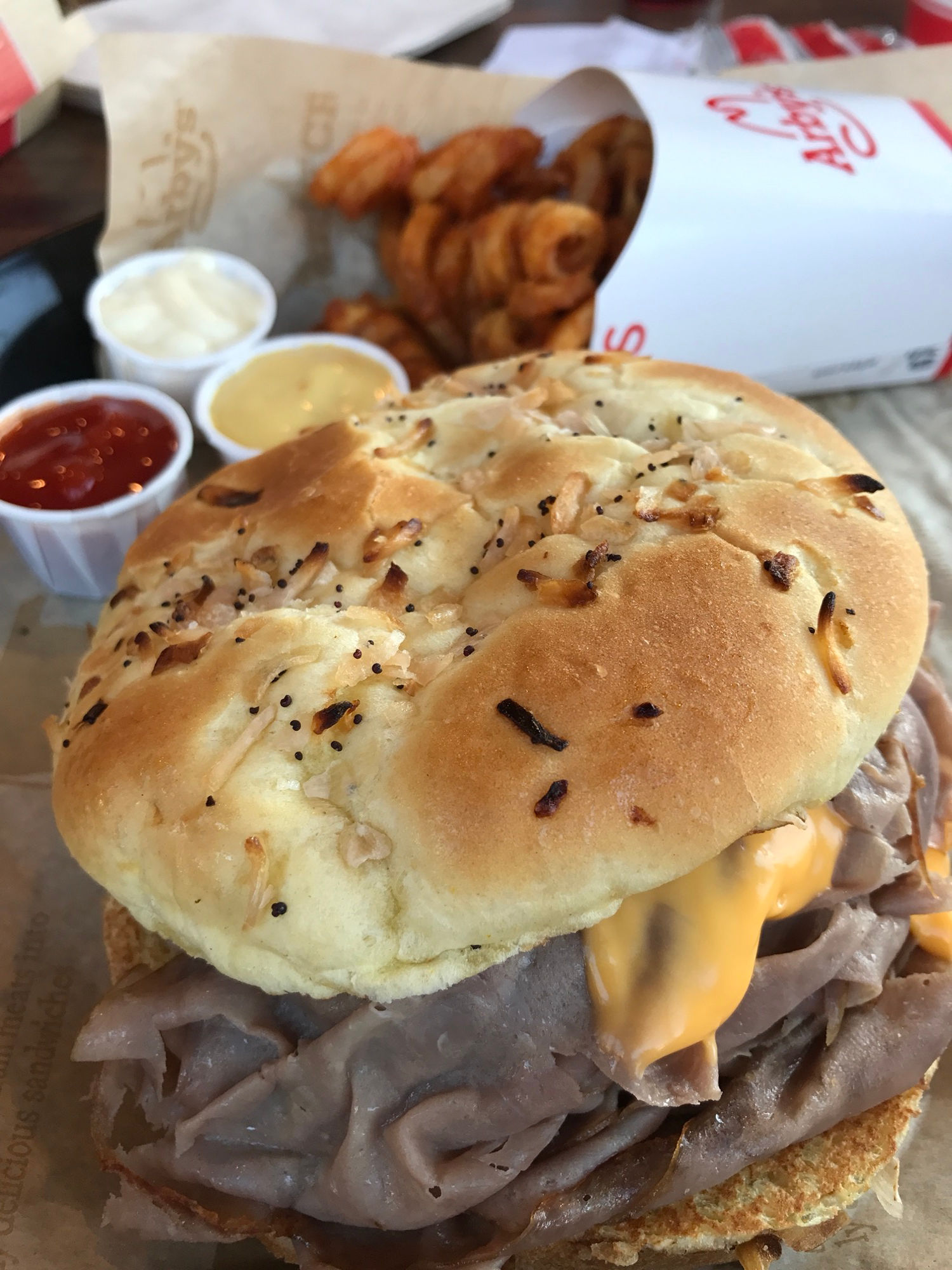
Half Pound Beef 'N Cheddar
- Curly Fries
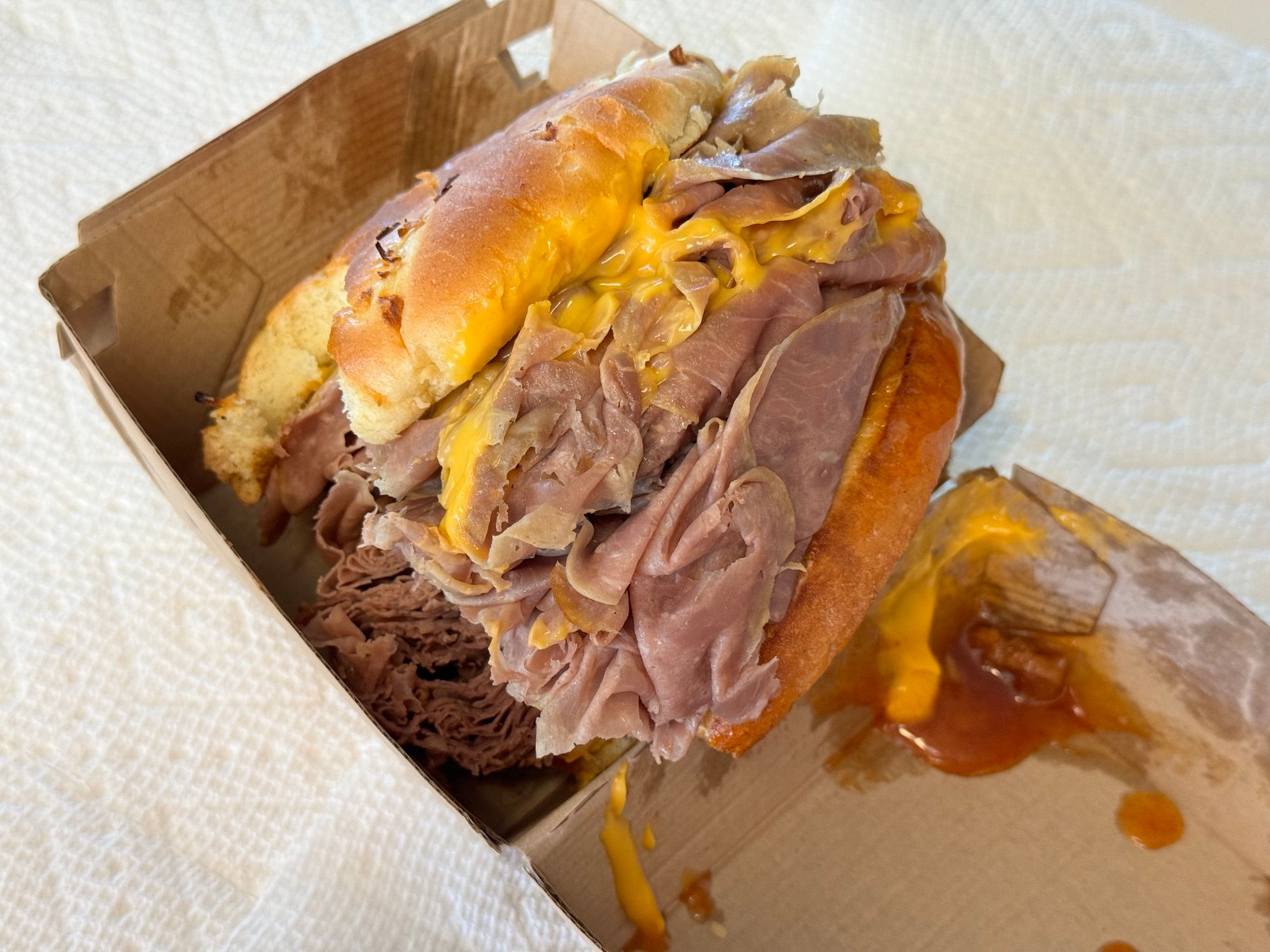
One Pound Beef & Cheddar
- Half Pound Beef 'N Cheddar with Double Beef
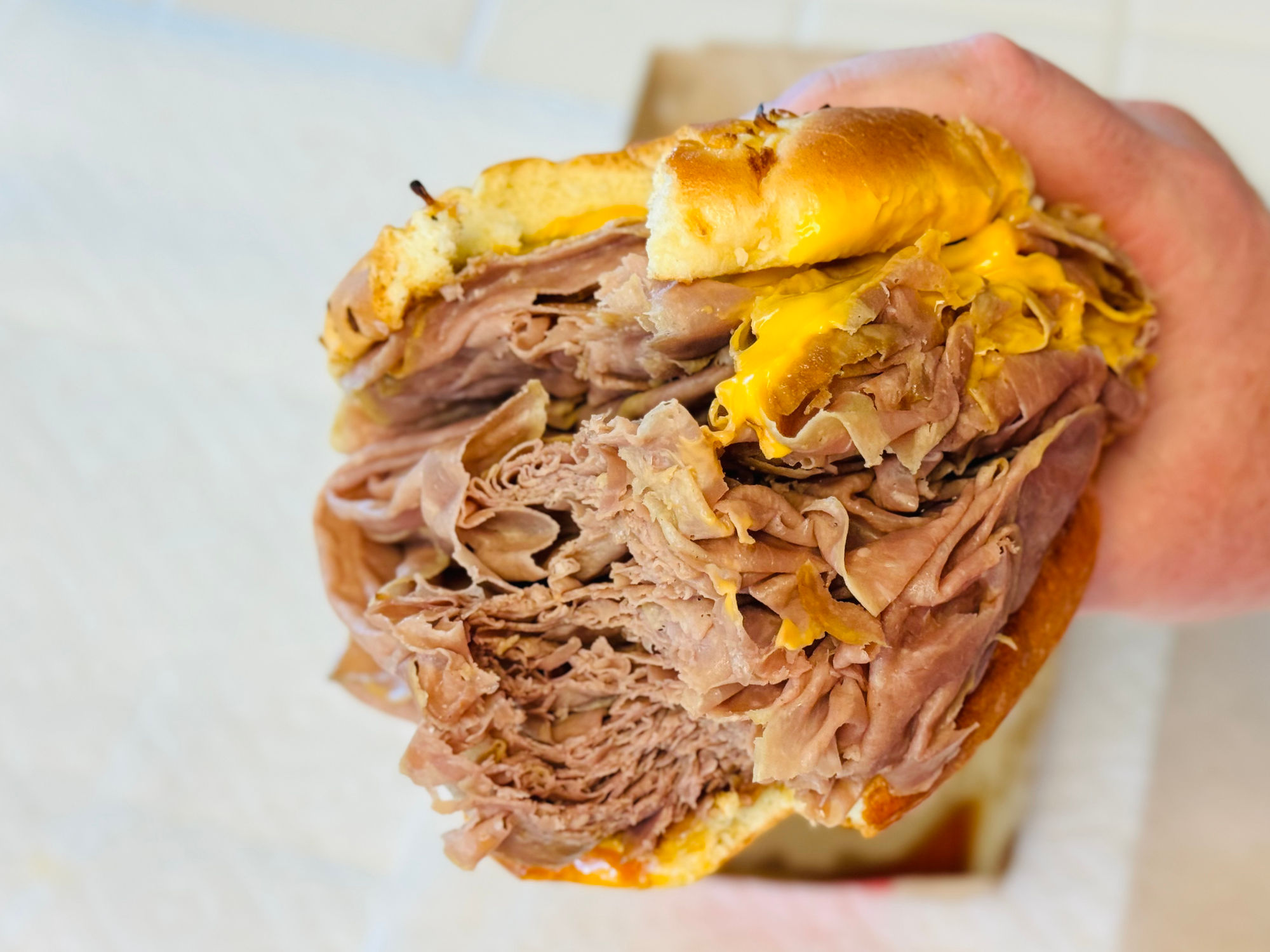
Wide Open CountryYoungstown, Ohio
It was a warm summer's day in July 1964, when Arby's sizzled up its first roast beef sandwich. Since its inception in Youngstown, Ohio, Arby's has spread across the country and expanded its menu to include more than eight different types of meat.
- Arby's wasn't named after a guy named Arby.
Contrary to what you may have assumed, the restaurant was not named after someone named Arby, but its two founders: brothers Leroy and Forrest Raffel. The brothers originally wanted to name the eatery "Big Tex", but since the name was already claimed, they settled on "RB", an abbreviation for Raffel brothers.- The original Arby's was kind of fancy.
- Before there were curly fries, there were potato cakes.
They didn't introduce curly fries until 1988.- Arby's exists in 48 states and five countries.
- Arby's was a pioneer in the fast-food restaurant smoking ban.
They were the first fast-food chain to prohibit smoking, banning smoking in all 257 of its restaurants in 1994.- Arby's also pioneered the move towards healthier ingredients.
in 1991, Arby's introduced a "lite" menu with salads under 300 calories. It was the first major fast-food establishment to launch a "healthier" menu campaign- Arby's once served a 38-inch long curly fry.
They still hold the record for the world's longest curly fry.- Arby's ran a 13 hour commercial.
To prove the brisket in their Smokehouse Brisket sandwich was smoked for 13 hours, Arby's filmed the entire process and aired it in Duluth, Minnesota in May, 2014- Hall-of-Famer Hank Aaron was once a proud Arby's owner.
- Arby's "Meat Mountain" may or may not exist.
The monstrous sandwich is loaded with all of Arby's meats, including roast beef, Angus steak, bacon, corned beef, ham, chicken tenders, and roast turkey.
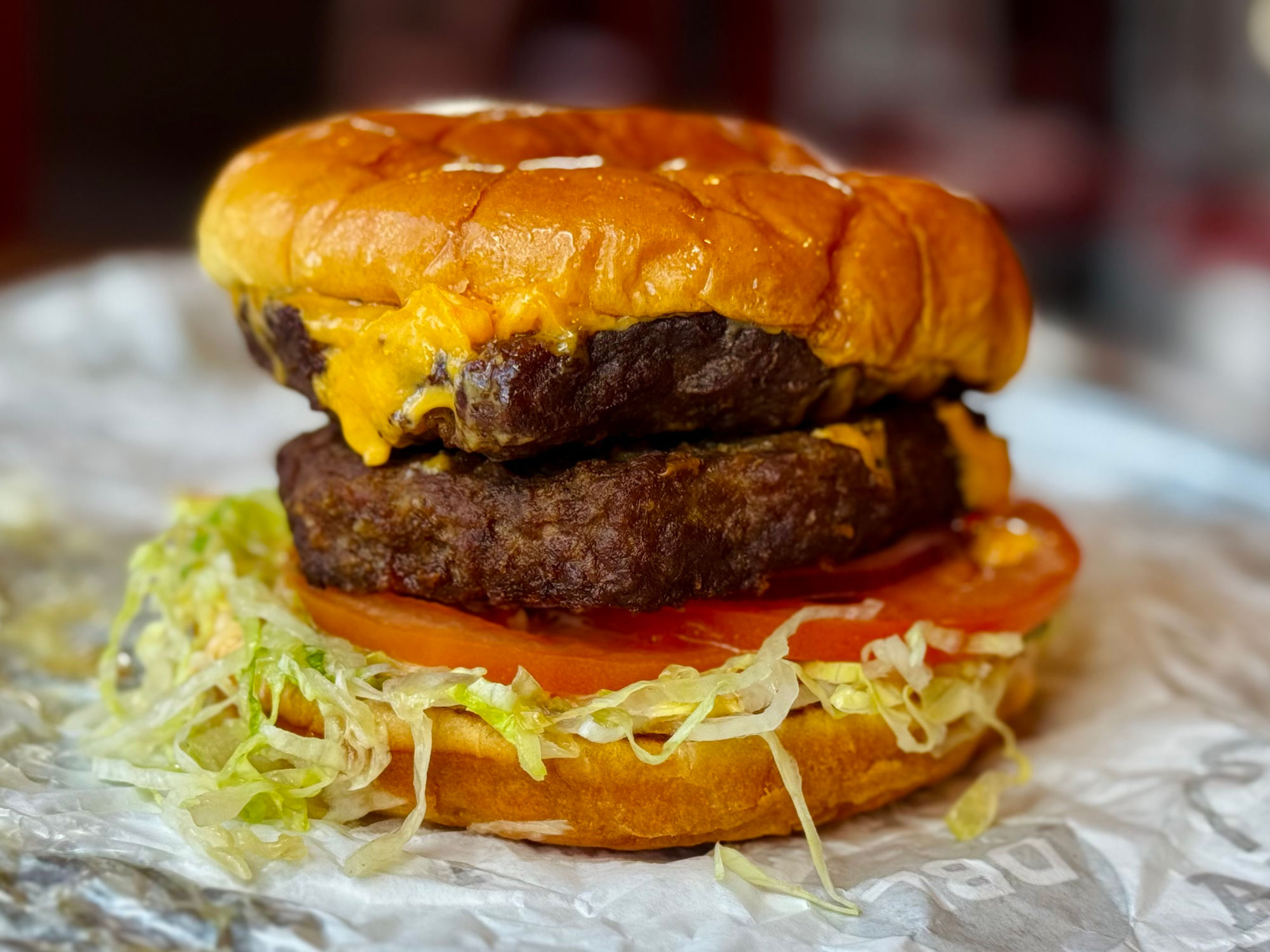
Double Deluxe Burger
- 2 All-Beef Burger Patties
- American Cheese
- Shredded Lettuce
- Pickles
- Red Onion
- Tomato
- Burger Sauce
- Brioche Bun
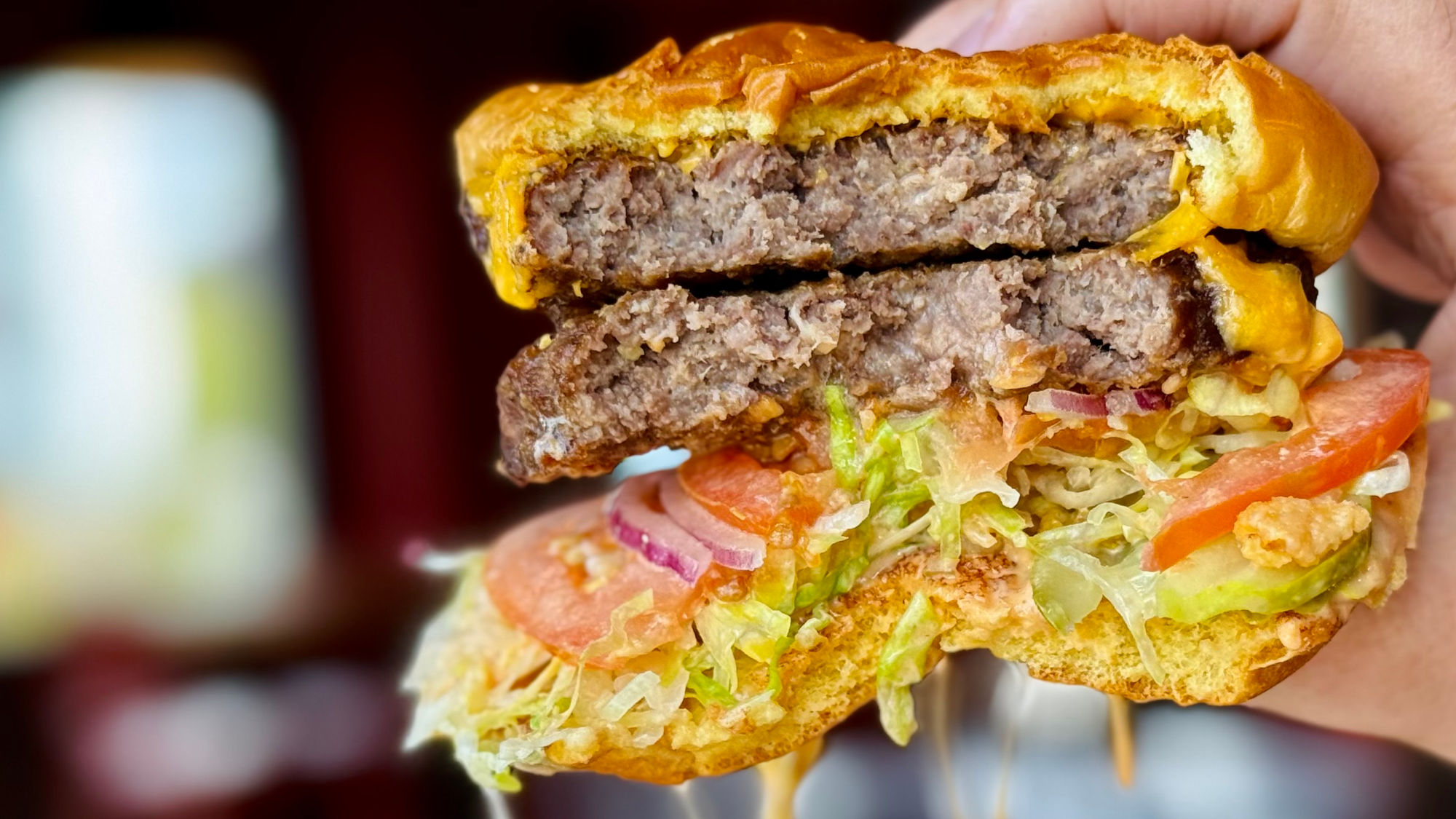
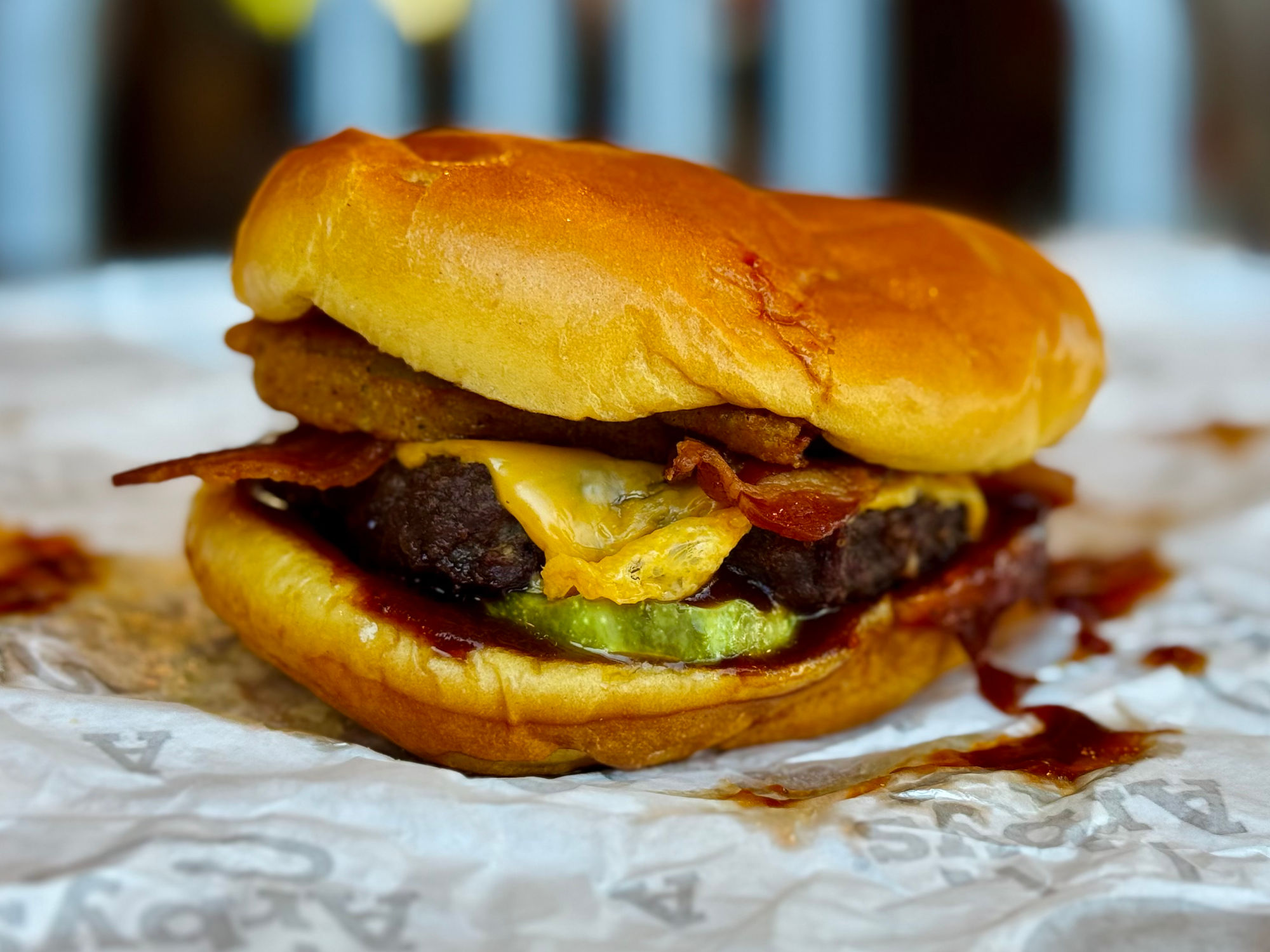
BBQ Bacon Burger
- Burger Patty
- Bacon
- American Cheese
- Pickles
- Crispy Onion Strings
- Smoky Q Sauce
- Brioche Bun
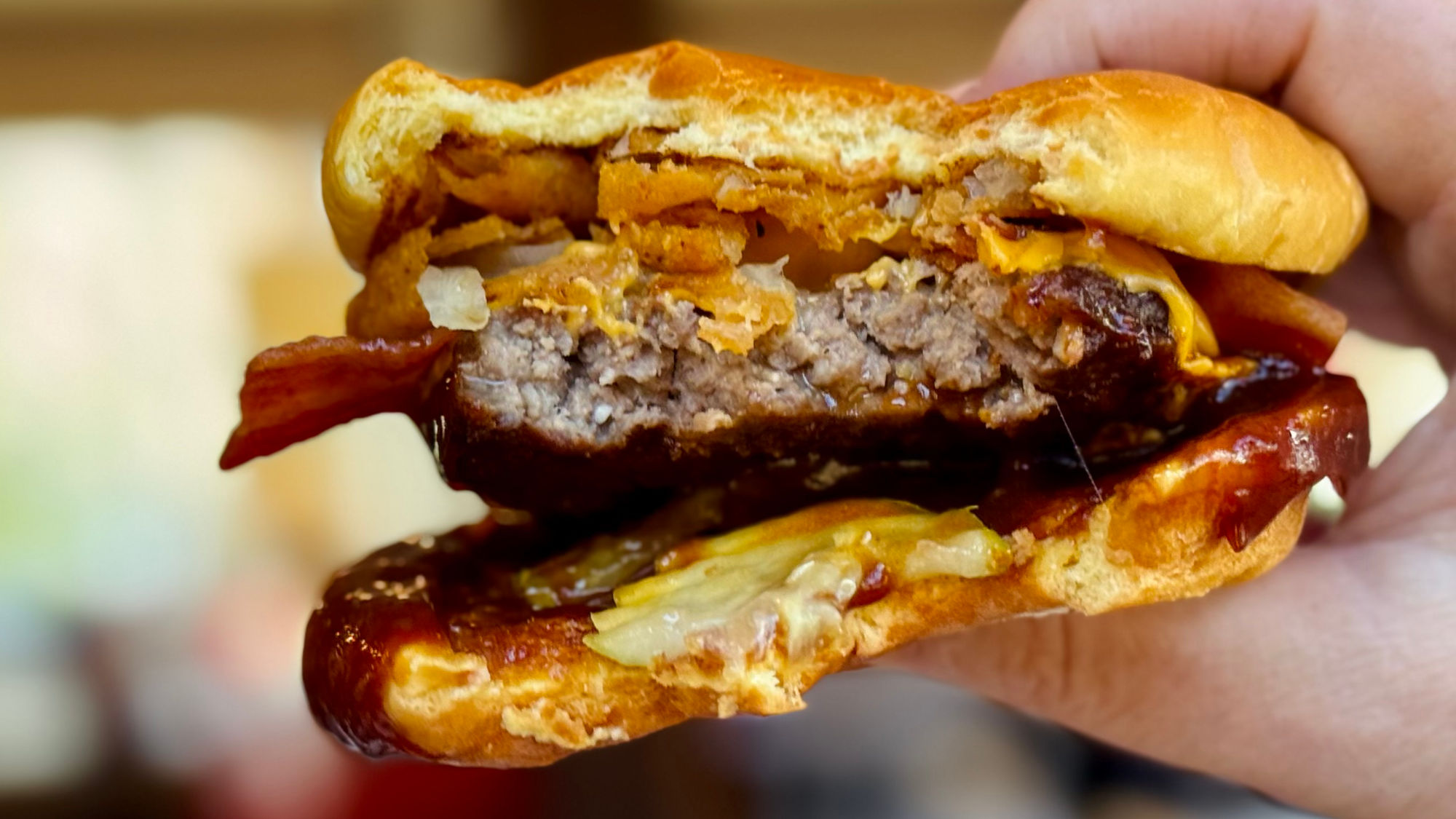
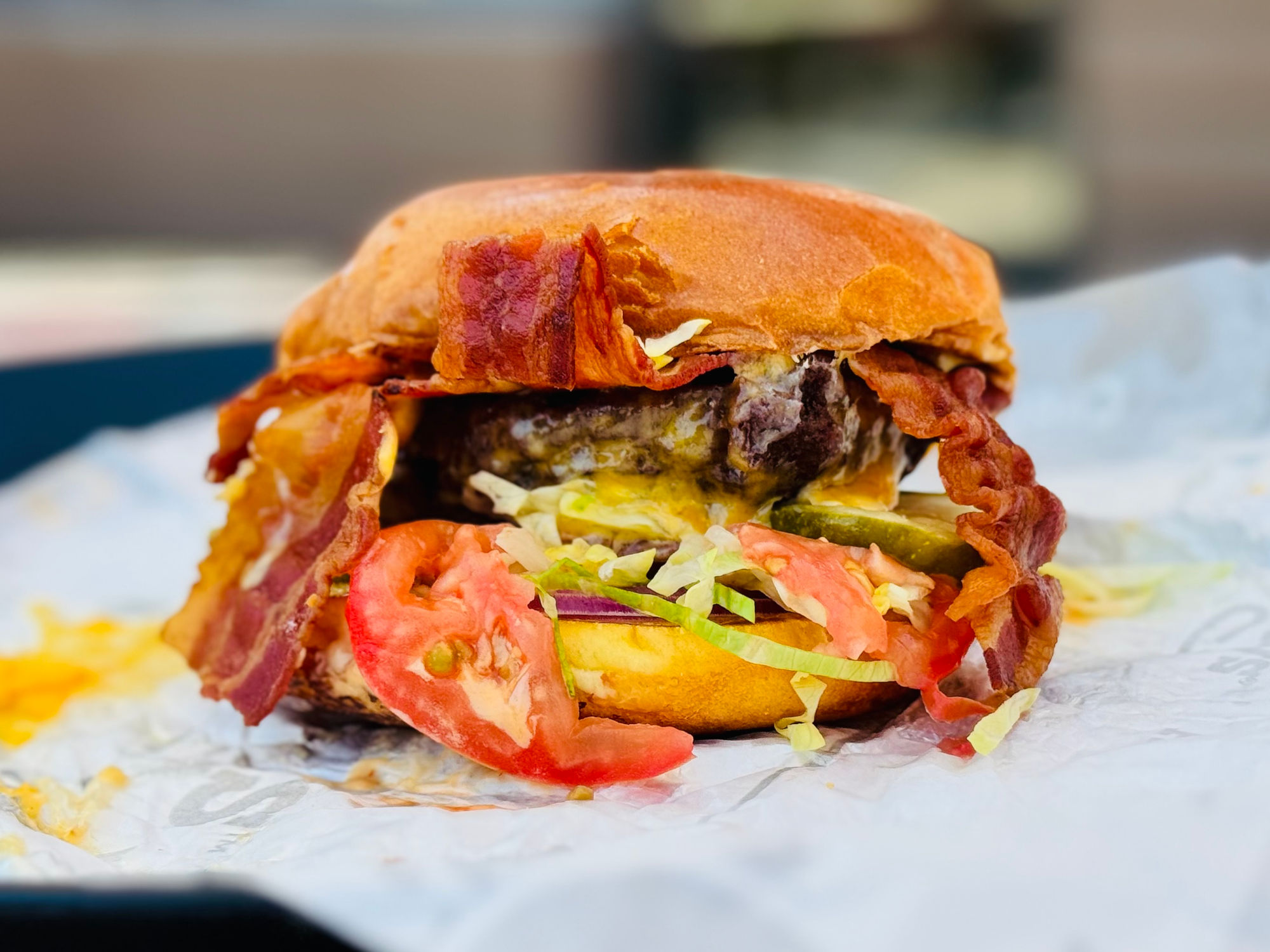
Big Cheesy Bacon Burger
- Burger Patty
- Bacon
- American Cheese
- Swiss Cheese
- Shredded Lettuce
- Pickles
- Red Onion
- Tomato
- Burger Sauce
- Brioche Bun
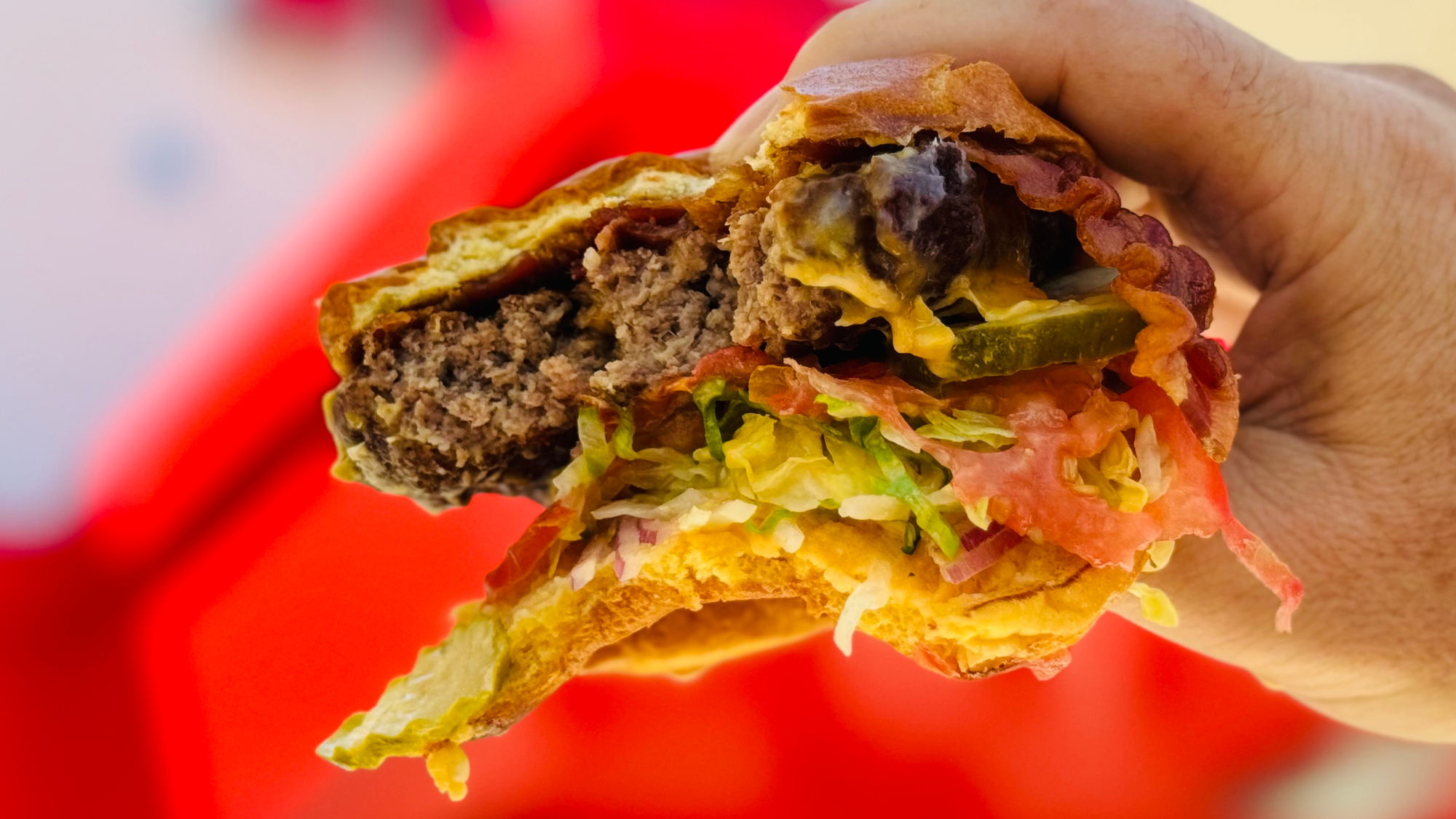
ThetakeoutWhat does Arby's name mean?
Up until now, I had always assumed the origin story I had heard about Arby's was true. The name "Arby's," I've been told, was derived from the fast food chain's namesake product. "Arby's," as in "R.B.," as in "roast beef." This has always seemed like common knowledge; you'll see it shared across the internet as a fun fast food fact. But it's not a fact at all, it turns out.Arby's does not stand for "roast beef." It does come from the initials "R.B.," but those letters stand for “Raffel Brothers.” Leroy and Forrest Raffel are the two siblings who founded the restaurant in 1964 in Ohio. They chose roast beef as the restaurant's flagship product specifically because it was different from hamburgers, and because they thought people would be happy paying a premium for it. When Arby's sandwiches debuted, they cost $0.69 versus McDonald's $0.15, but despite that significant difference in price, people still paid for them, Leroy Raffel told Metro Monthly in a 2014 interview.
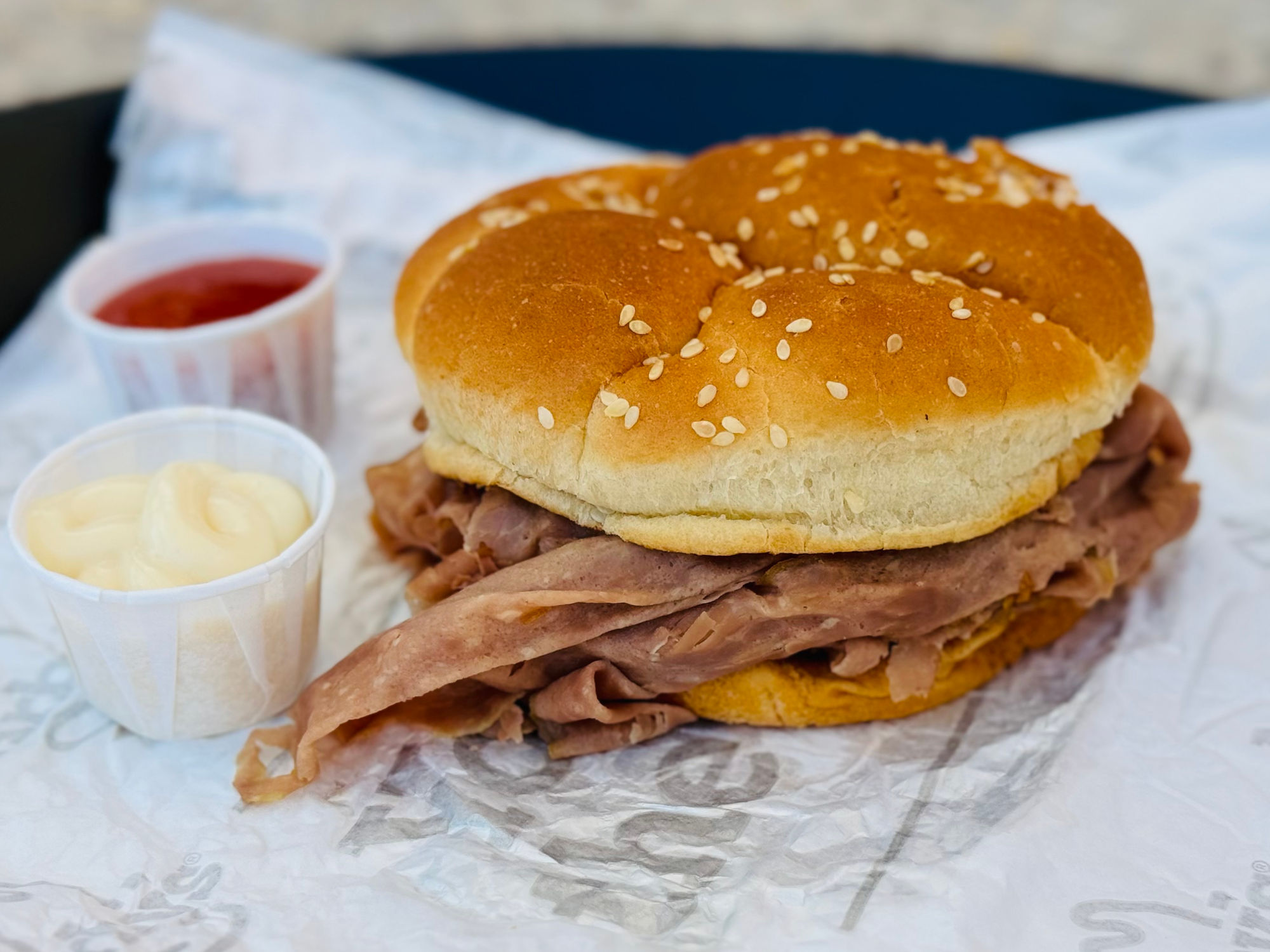
Classic Roast Beef
- Roast Beef
- Sesame Seed Bun
- Add: Arby's Sauce
- Add: Horsey Sauce

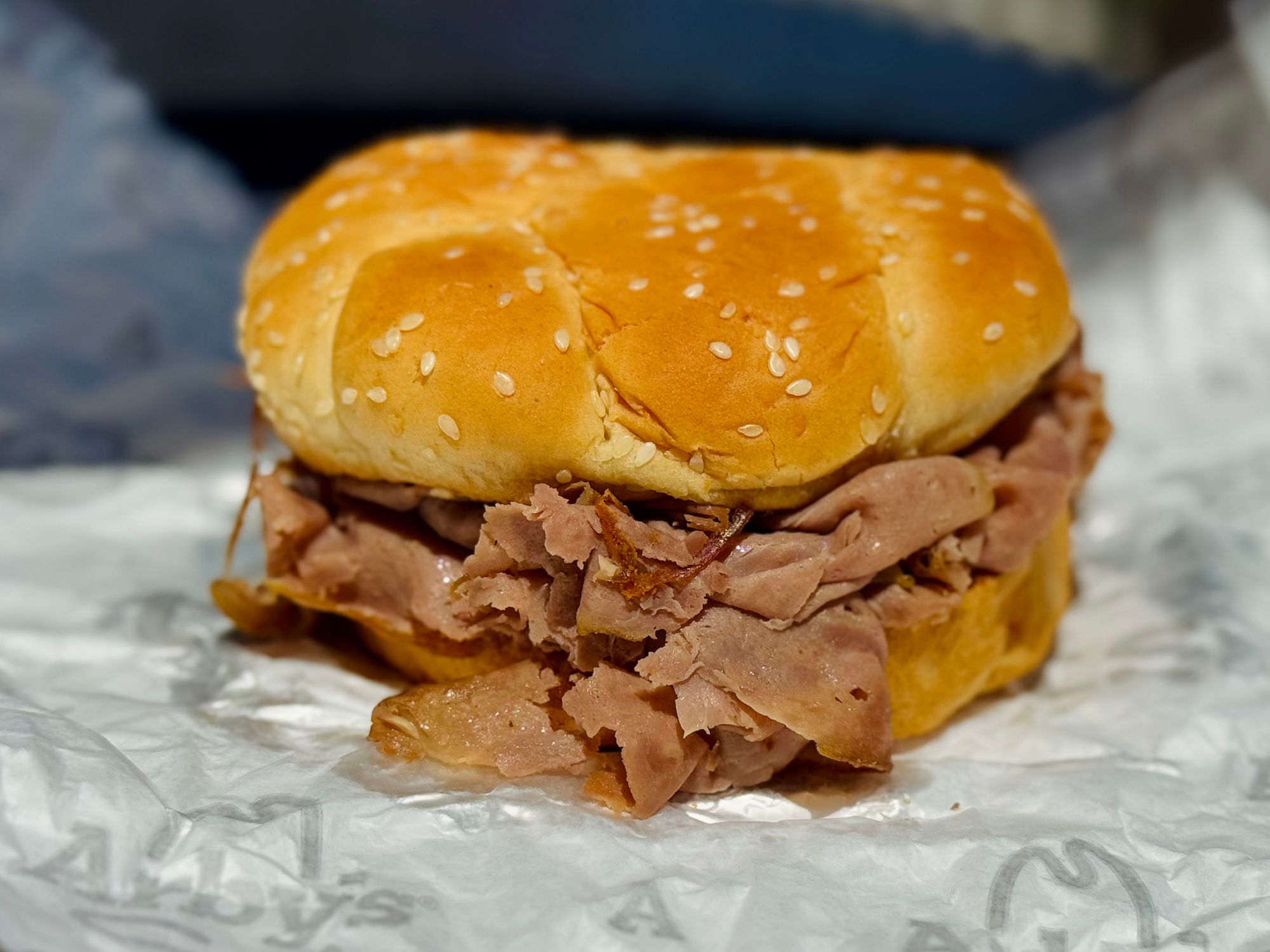
Double Roast Beef
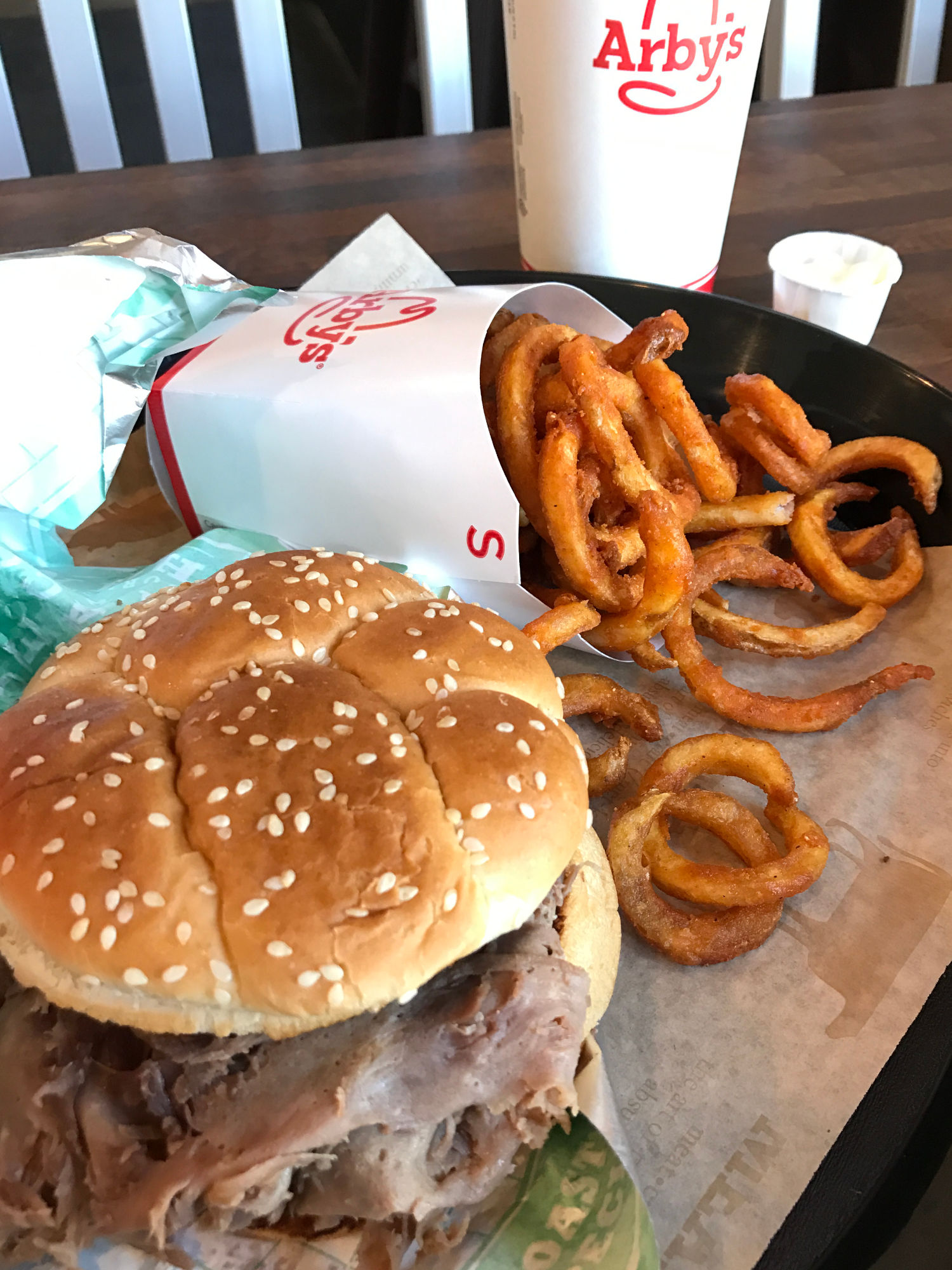
Half Pound Roast Beef Meal
- Curly Fries

Mac 'N Cheese Roast Beef
Hack Together
- Roast Beef Double
- Curly Fry
- Mac 'N Cheese
- Horsey Sauce
- Arby's Sauce
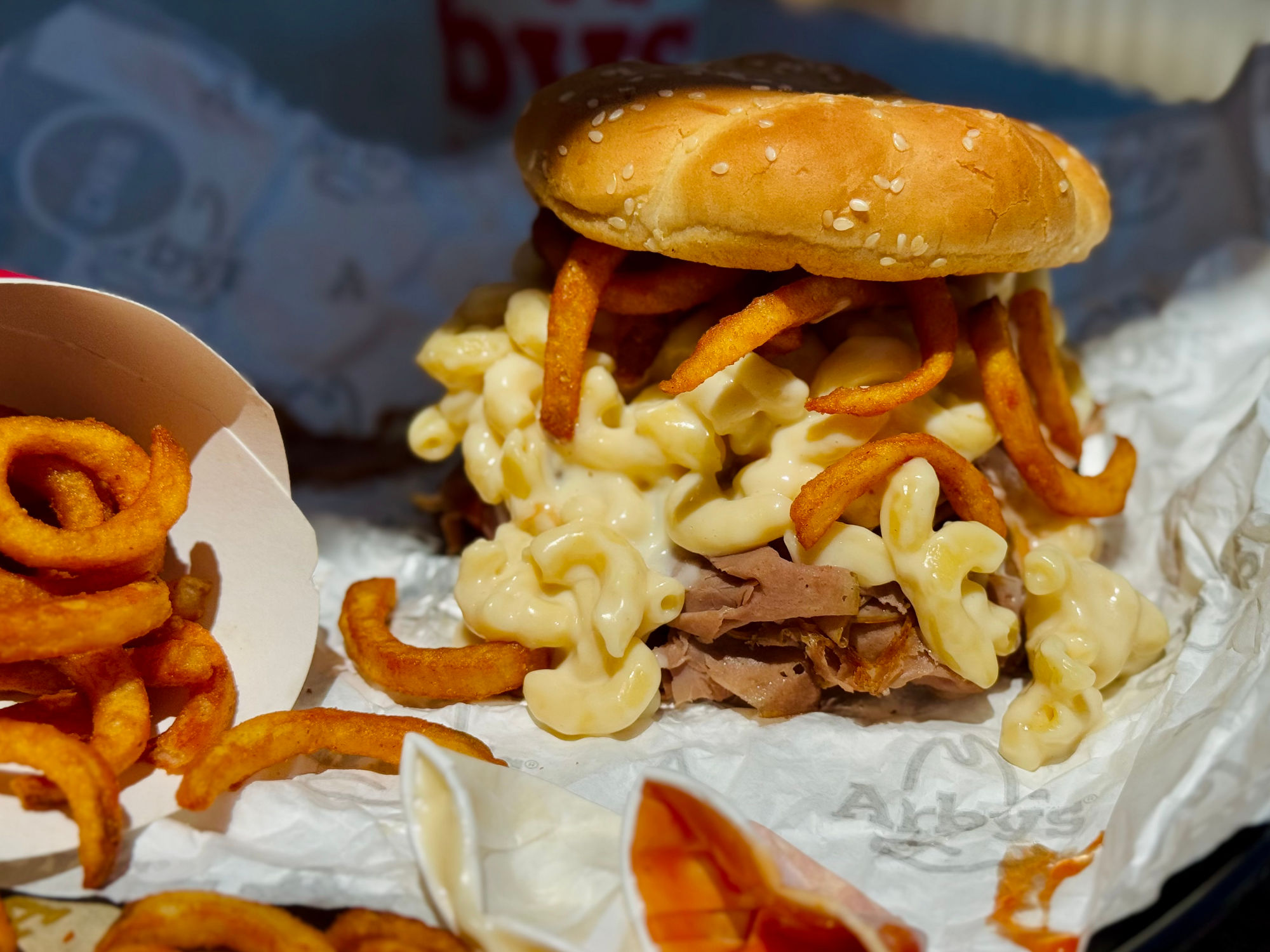
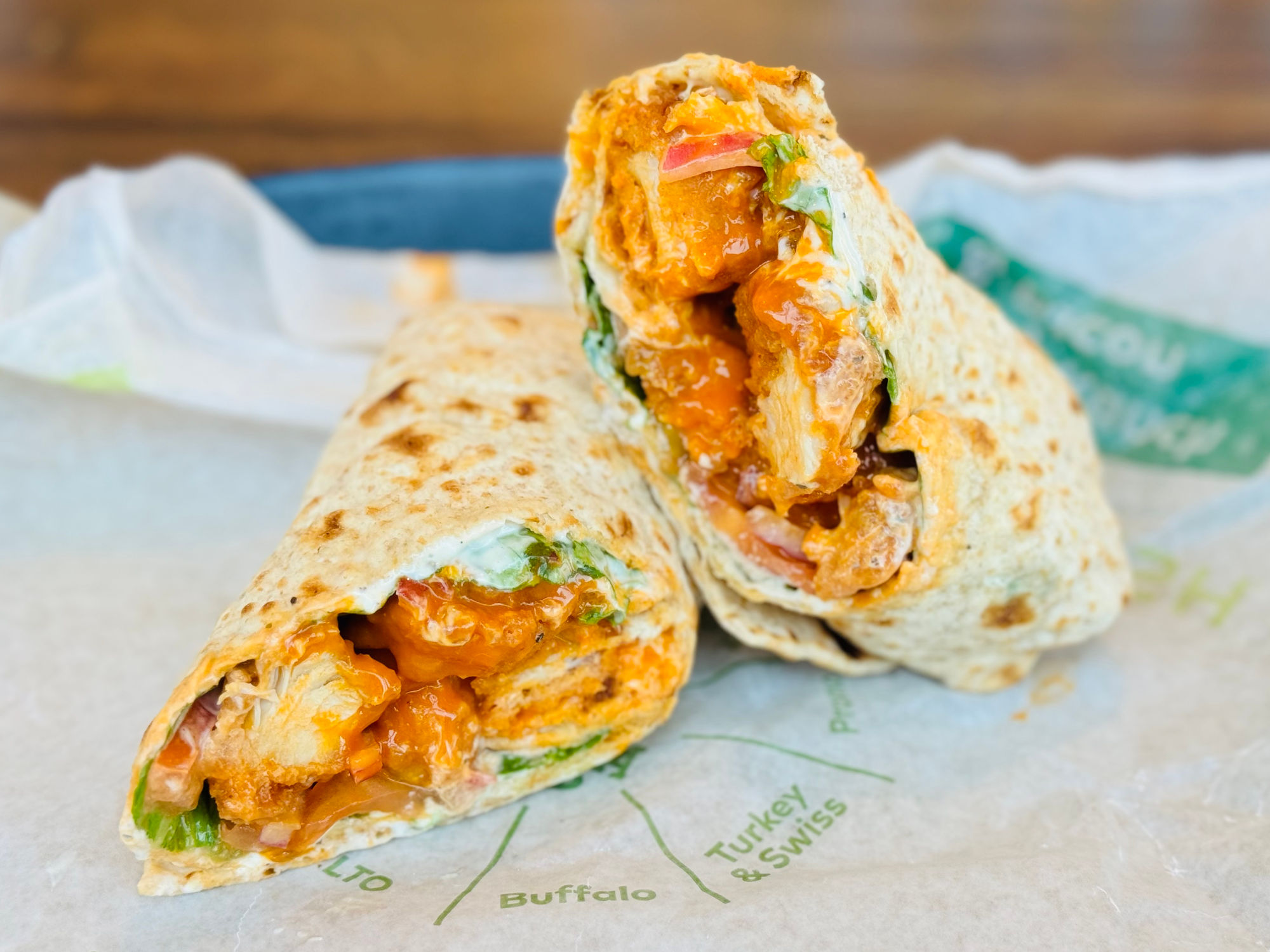
Buffalo Chicken Wrap
- Chicken Nuggets
- Buffalo Sauce
- Leaf Lettuce
- Parmesan Peppercorn Ranch
- Red Onion
- Tomato
- Artisan Wrap
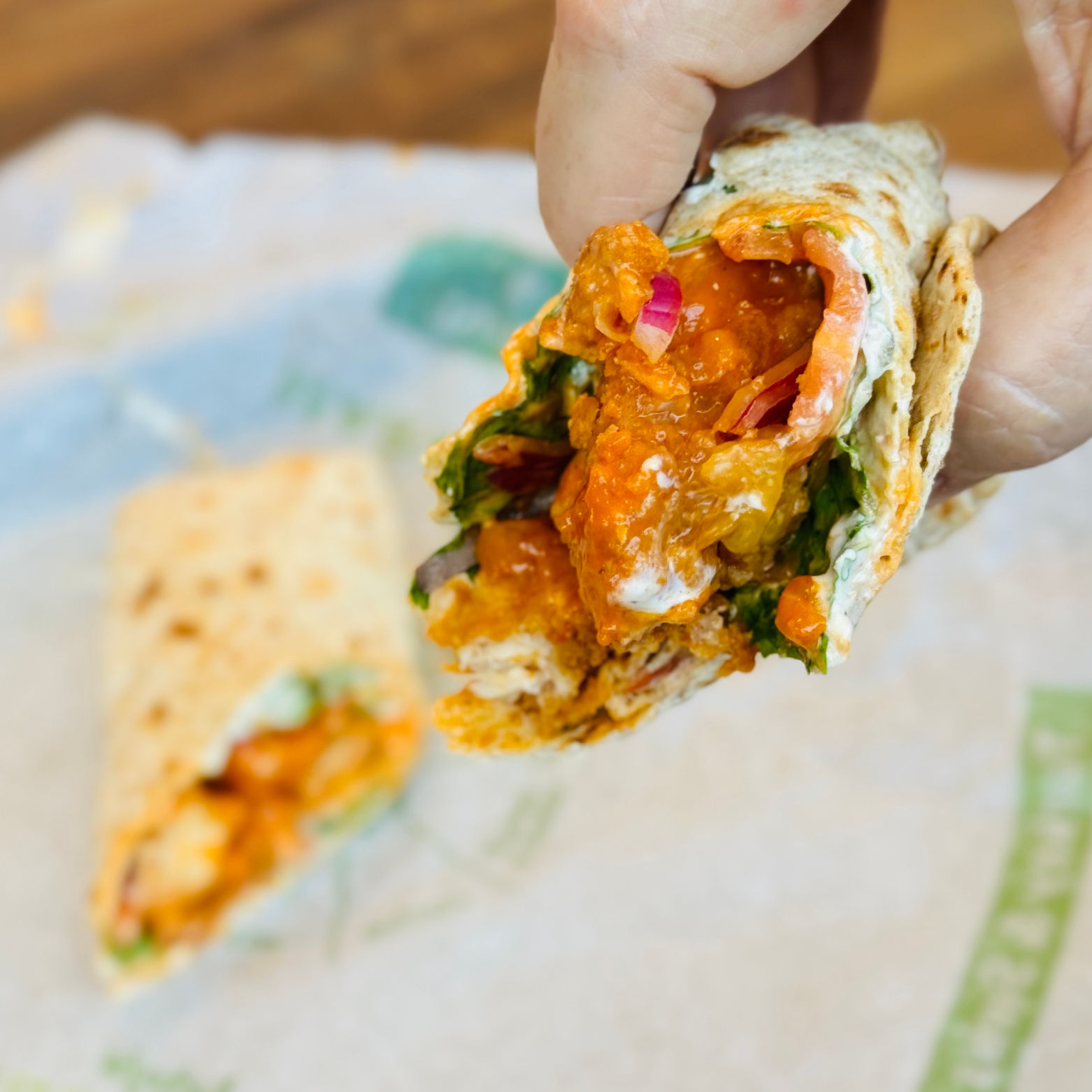

Smokehouse Brisket
- Smoked Brisket
- Natural Cheddar Cheese
- Crispy Onion Strings
- Smoked Bbq Sauce
- Brioche Bun
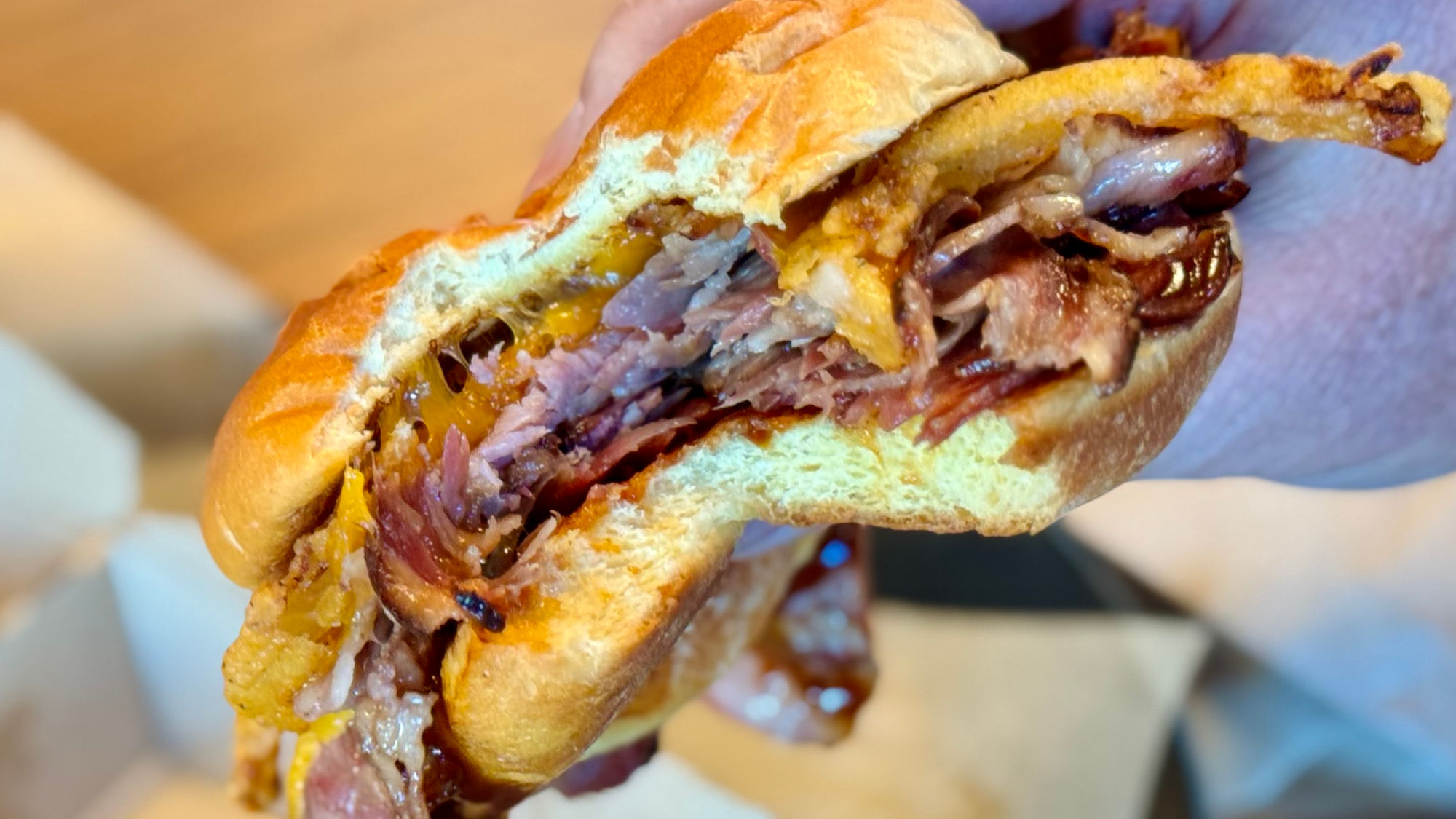
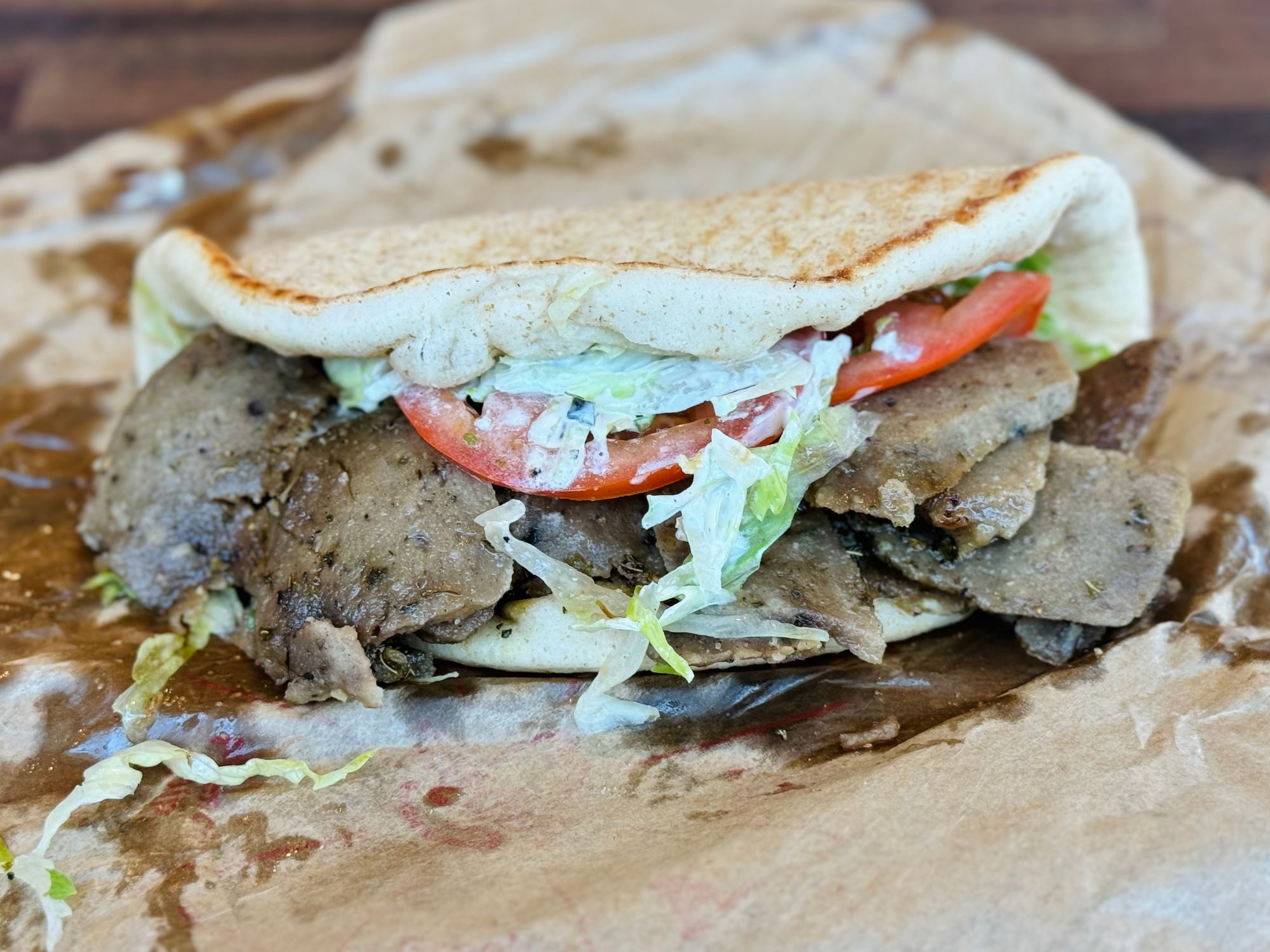
Greek Gyro
- Gyro Meat
- Gyro Sauce
- Gyro Seasoning
- Pita
- Red Onion
- Shredded Lettuce
- Tomato

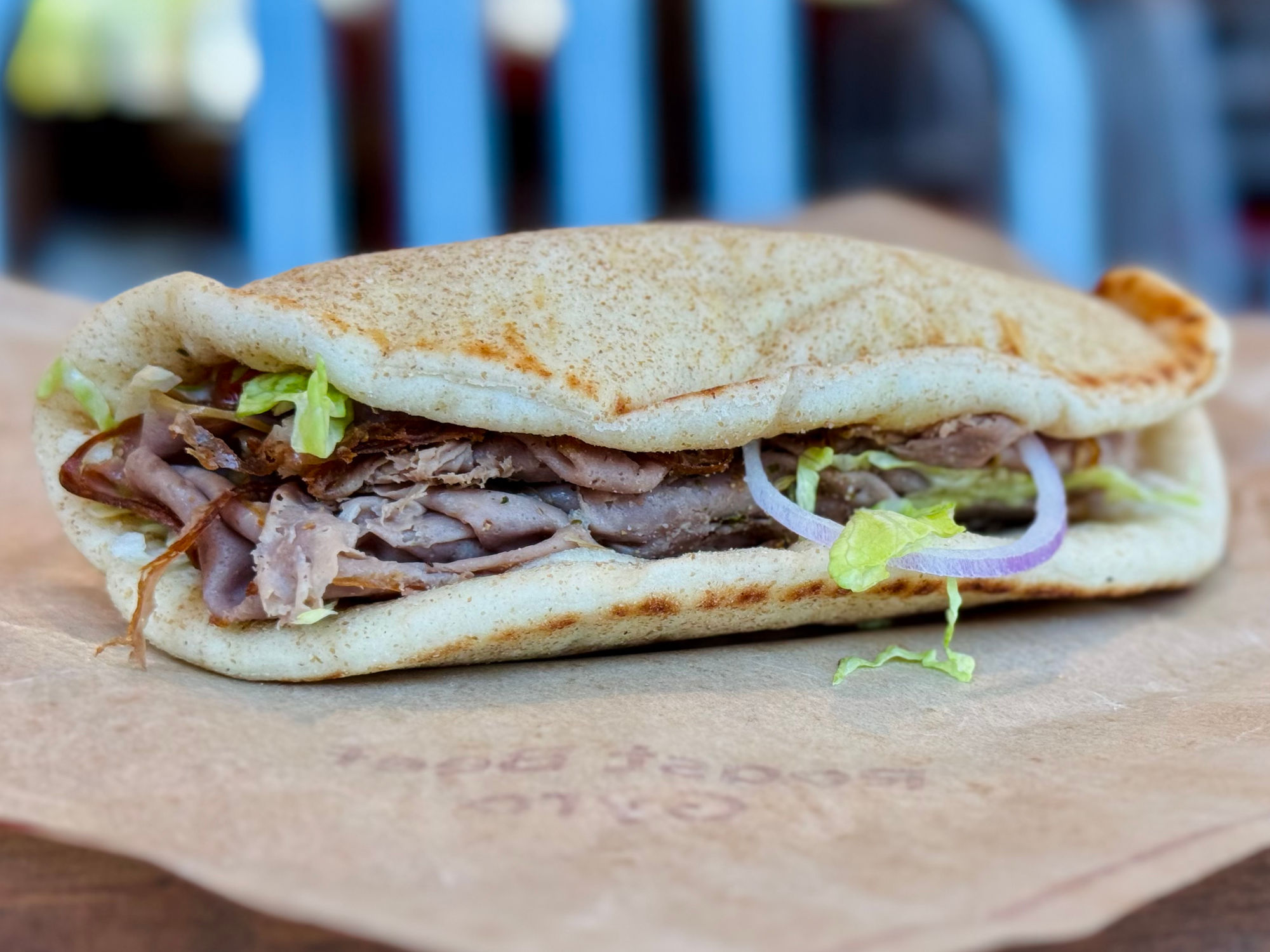
Roast Beef Gyro
- Roast Beef
- Shredded Lettuce
- Red Onion
- Tomato
- Tzatziki Gyro Sauce
- Pita
- Gyro Seasoning
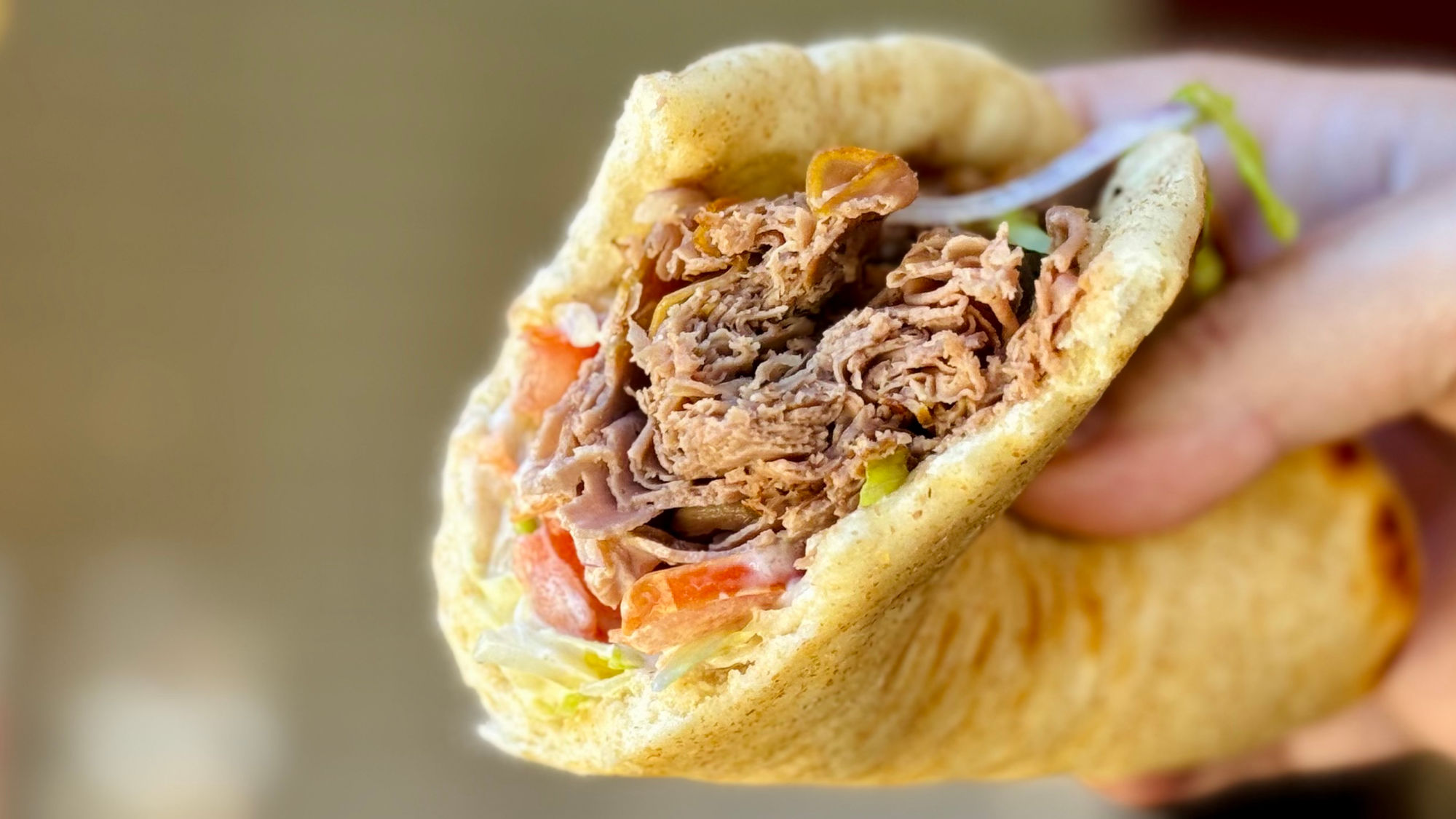
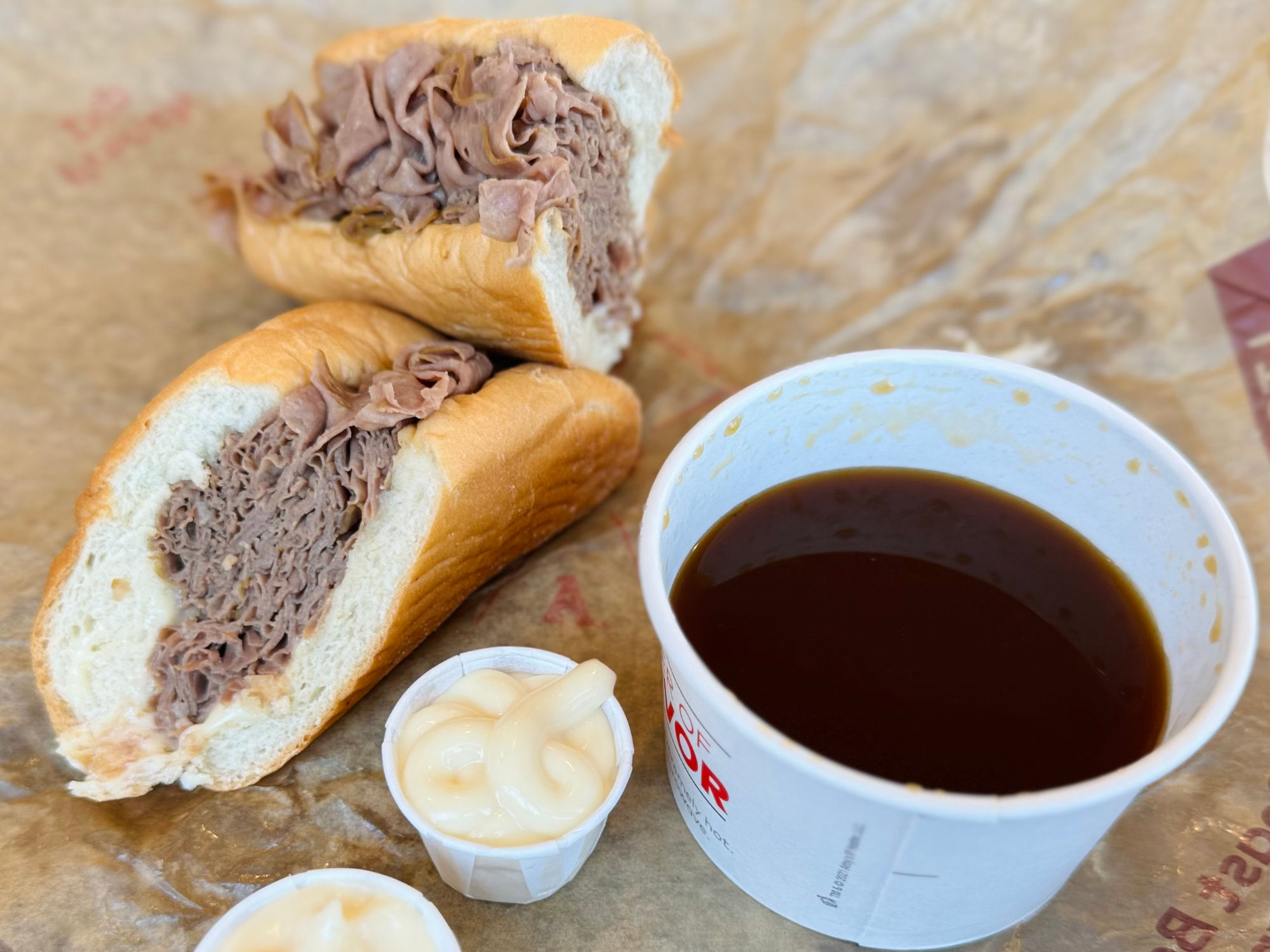
Classic French Dip & Swiss
- Roast Beef
- Swiss Cheese
- Sub Roll
- Au Jus Cup
- Ask For: Double Meat
- Add: Horsey Sauce
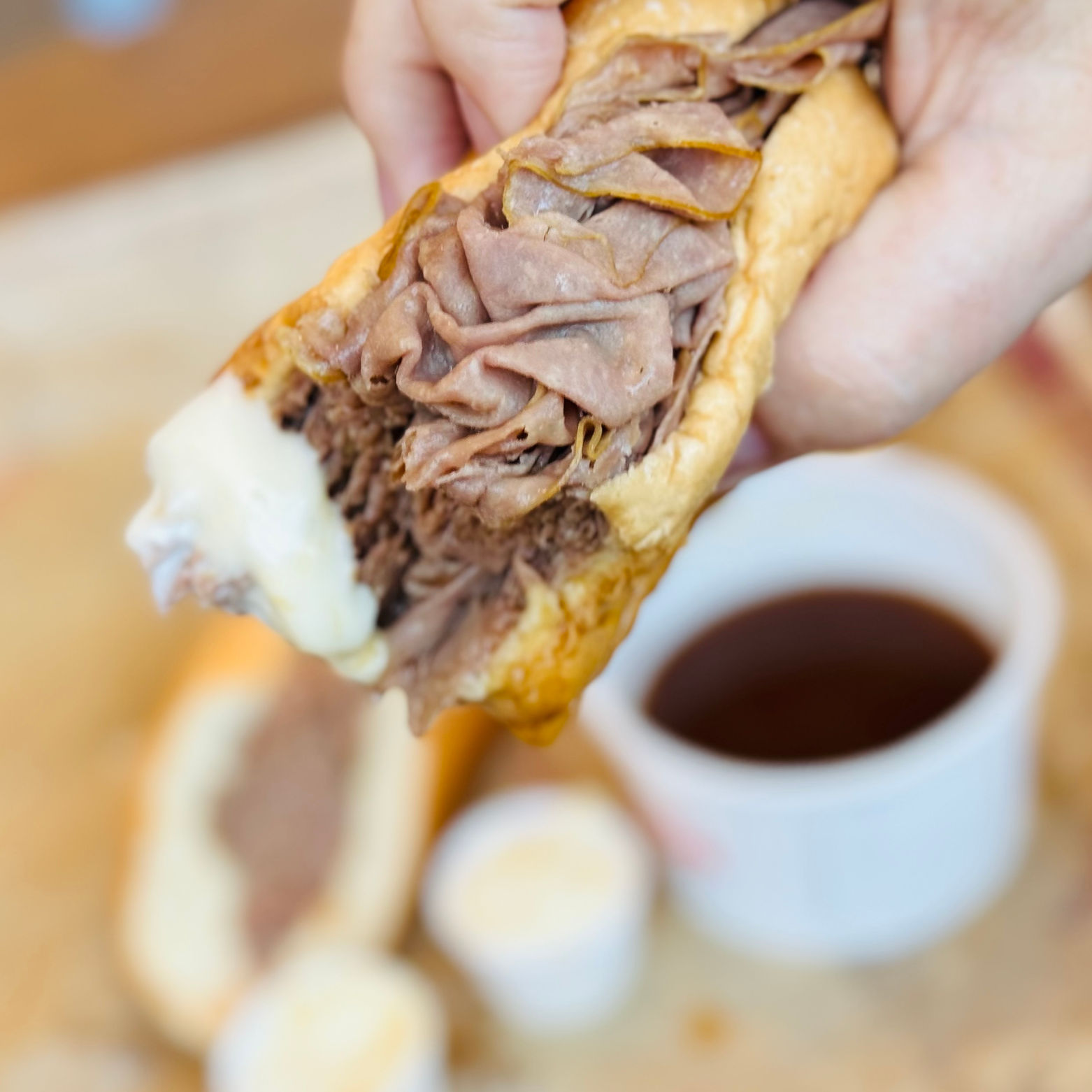
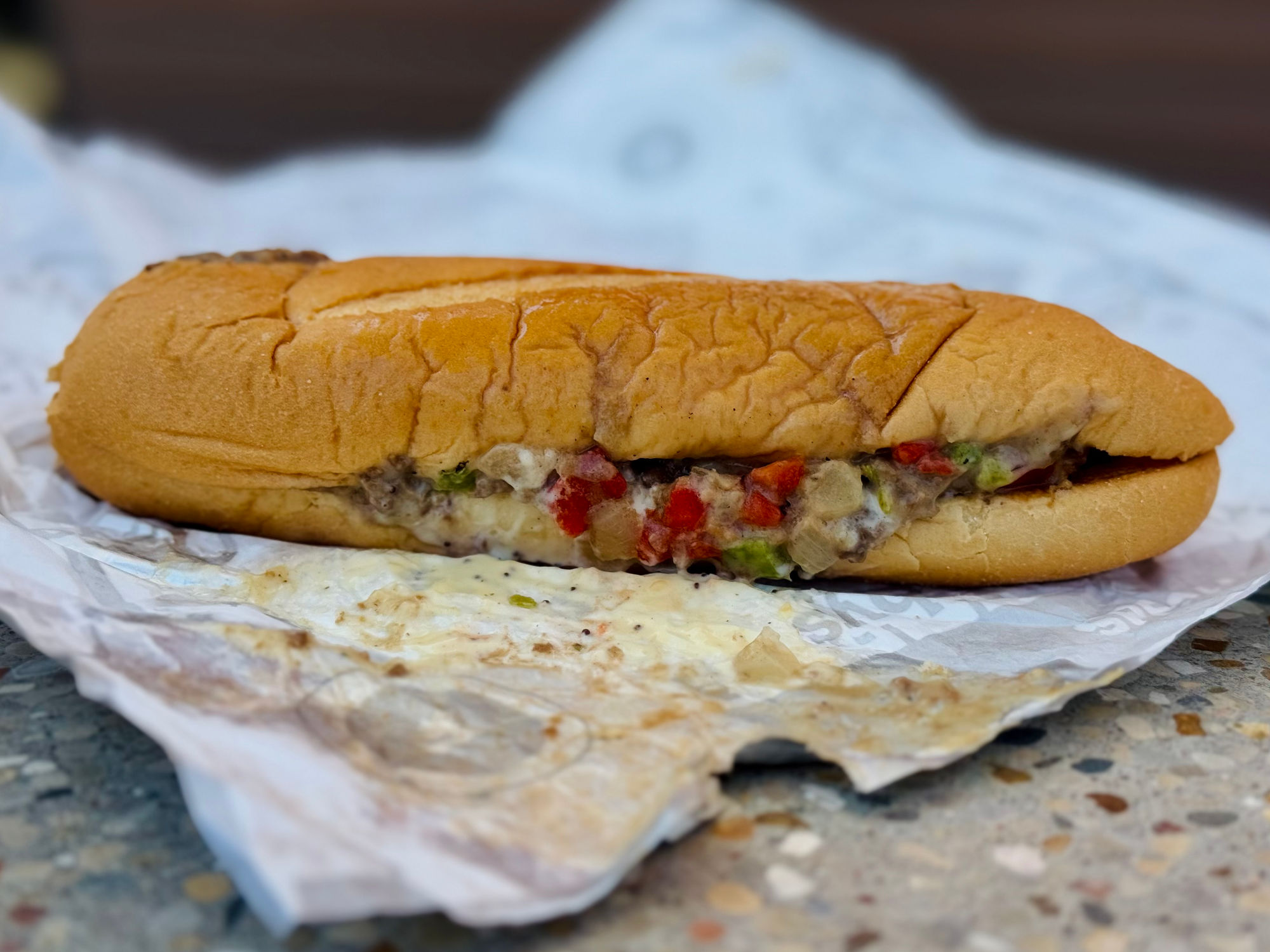
Angus Cheesesteak
- Thinly Shaved Angus Beef
- Melted American Cheese
- Savory Garlic Spread
- Onions
- Roasted Peppers
- Toasted White Bread Bun

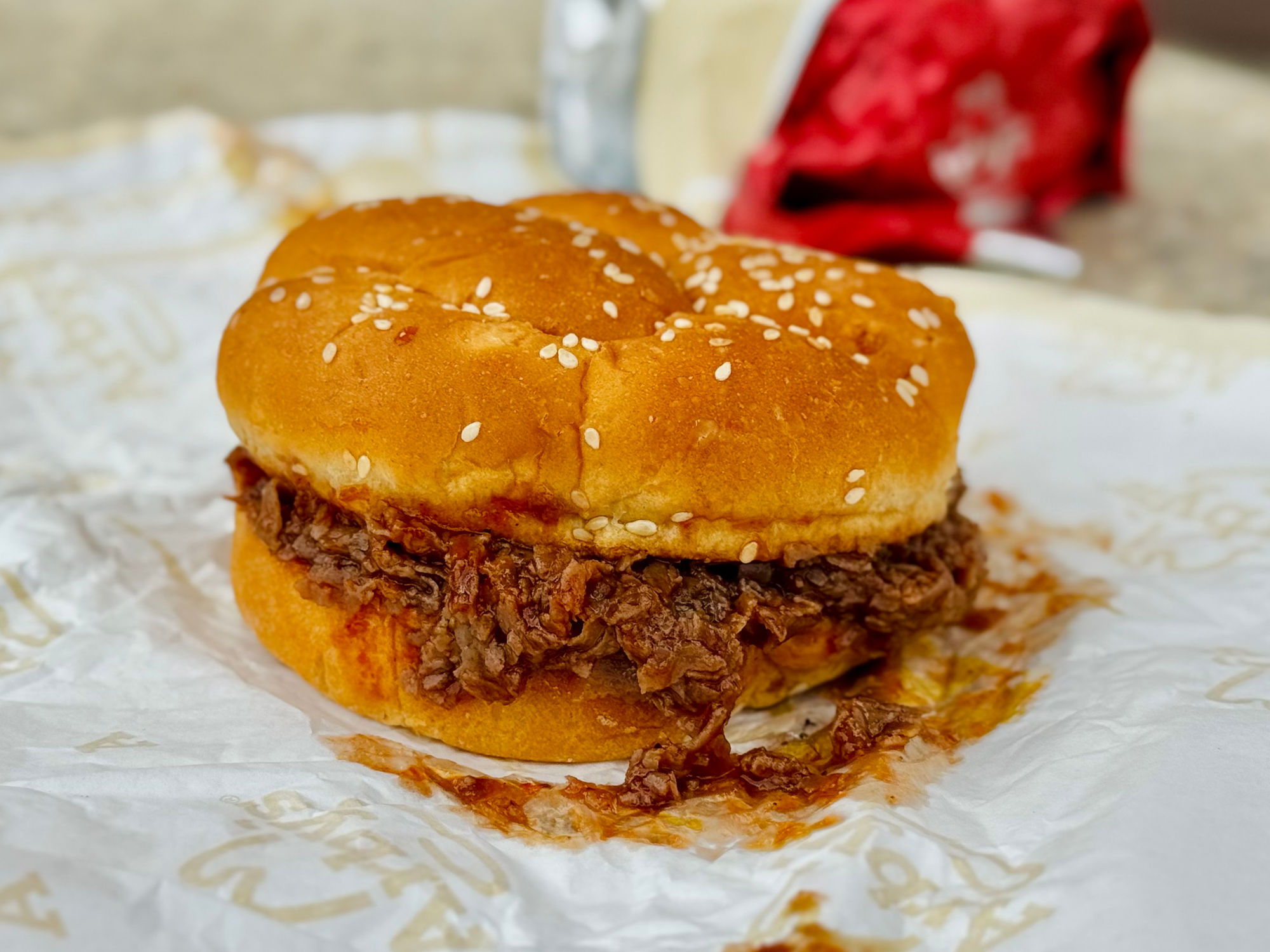
Arby-Q
- Shredded Roast Beef
- Signature Smoky Q Sauce
- Toasted Sesame Seed Bun
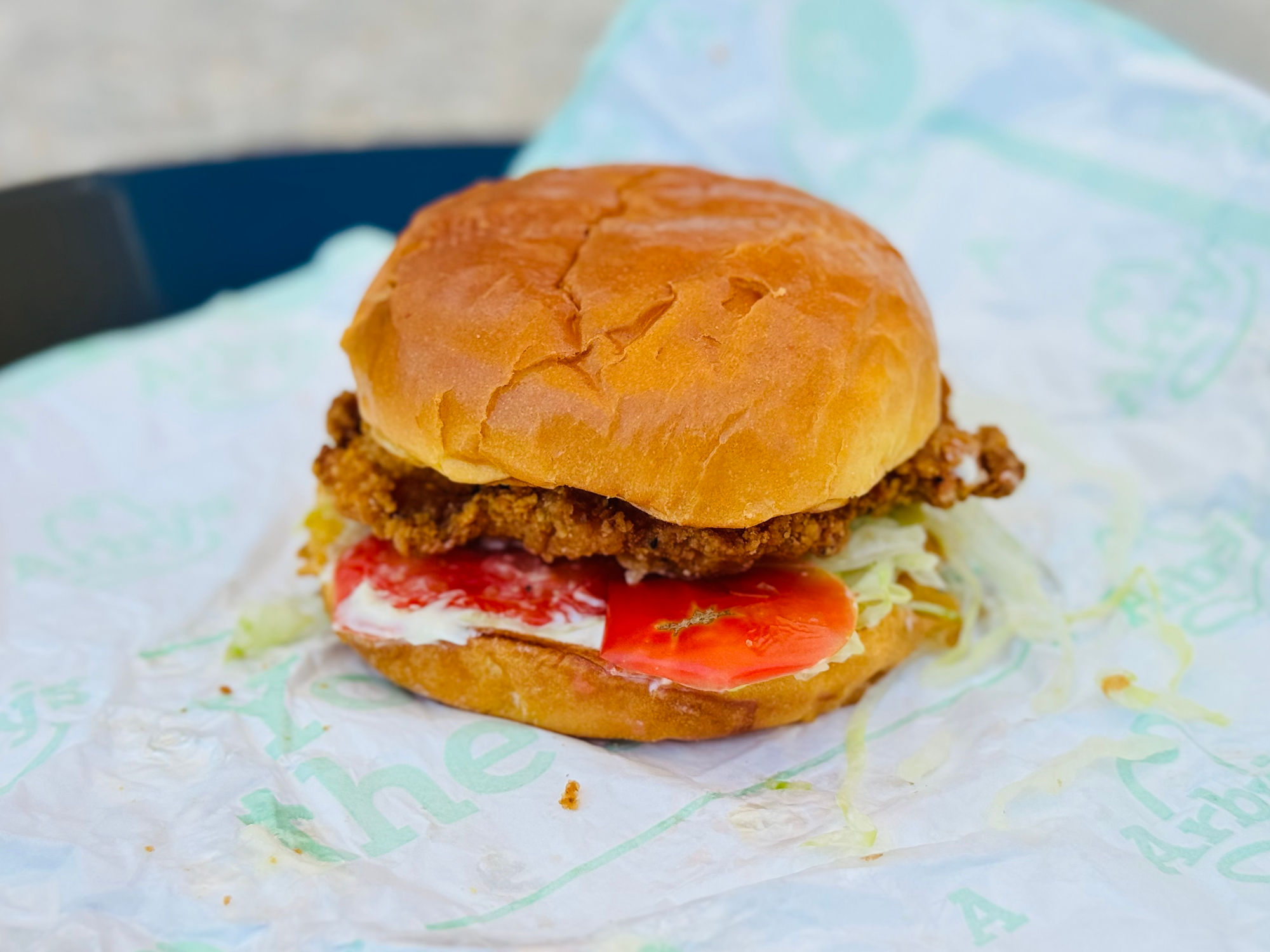
Crispy Chicken Sandwich
- Chicken Filet
- Shredded Lettuce
- Tomato
- Mayonnaise
- Brioche Bun
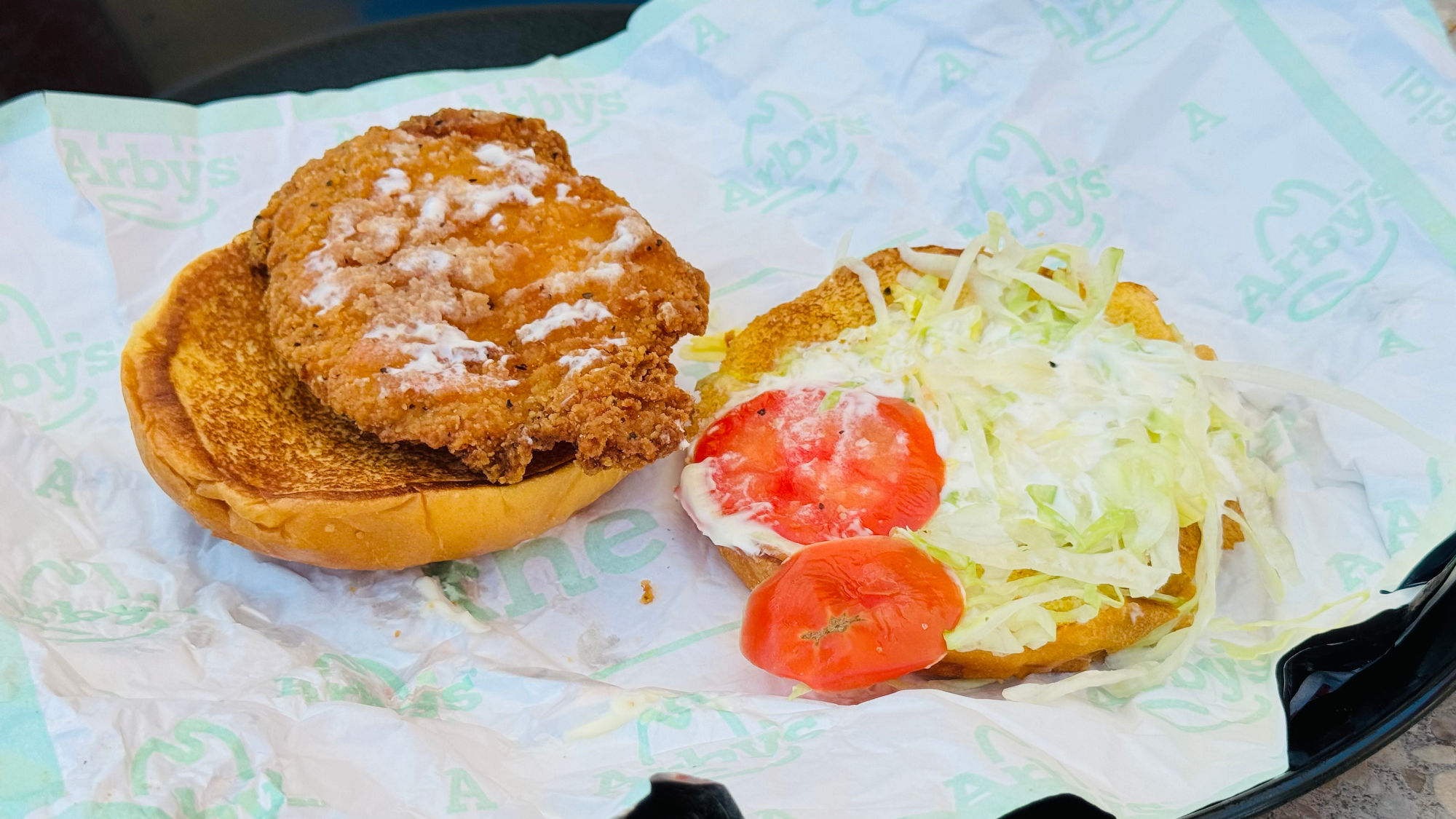
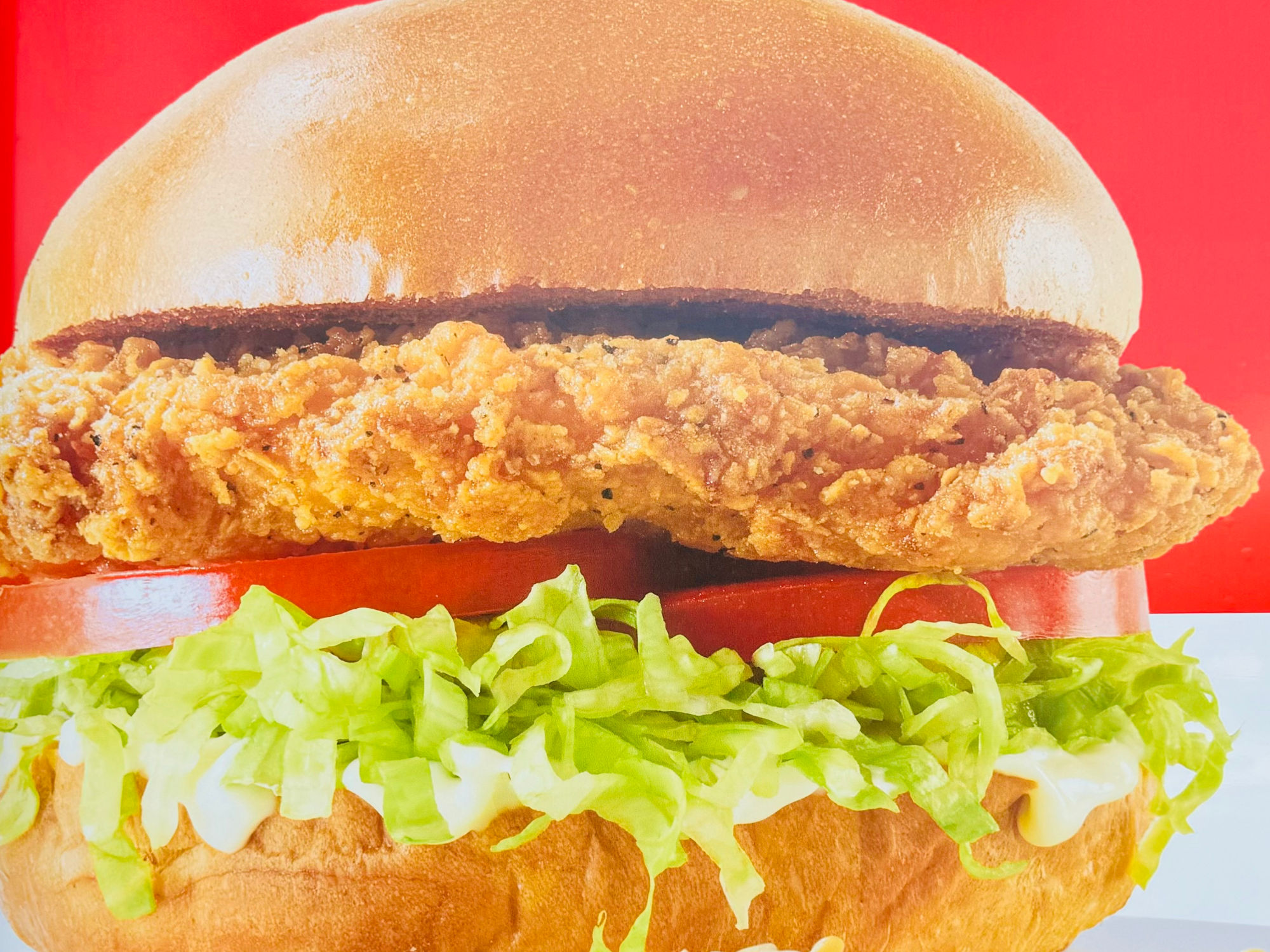
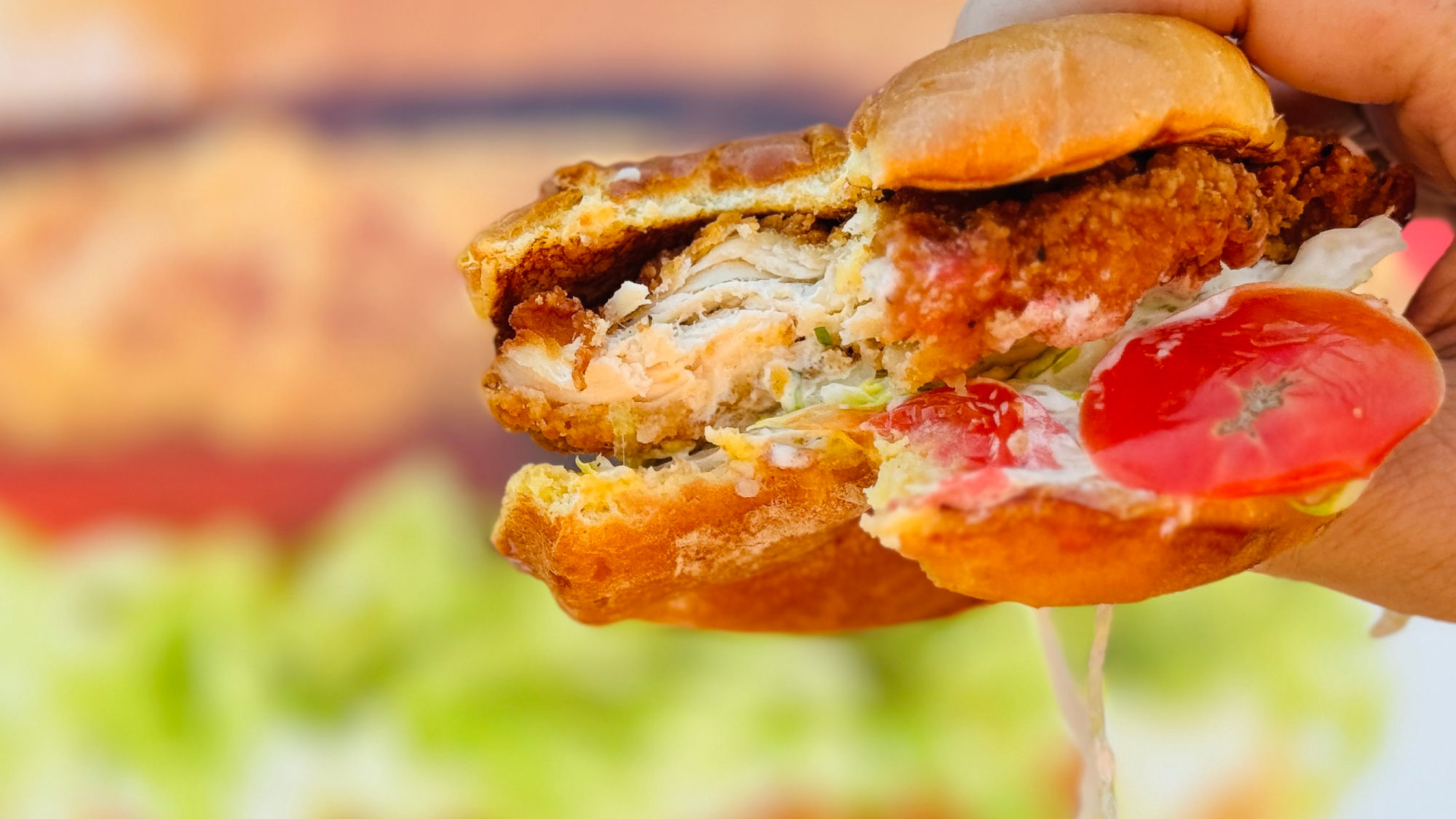
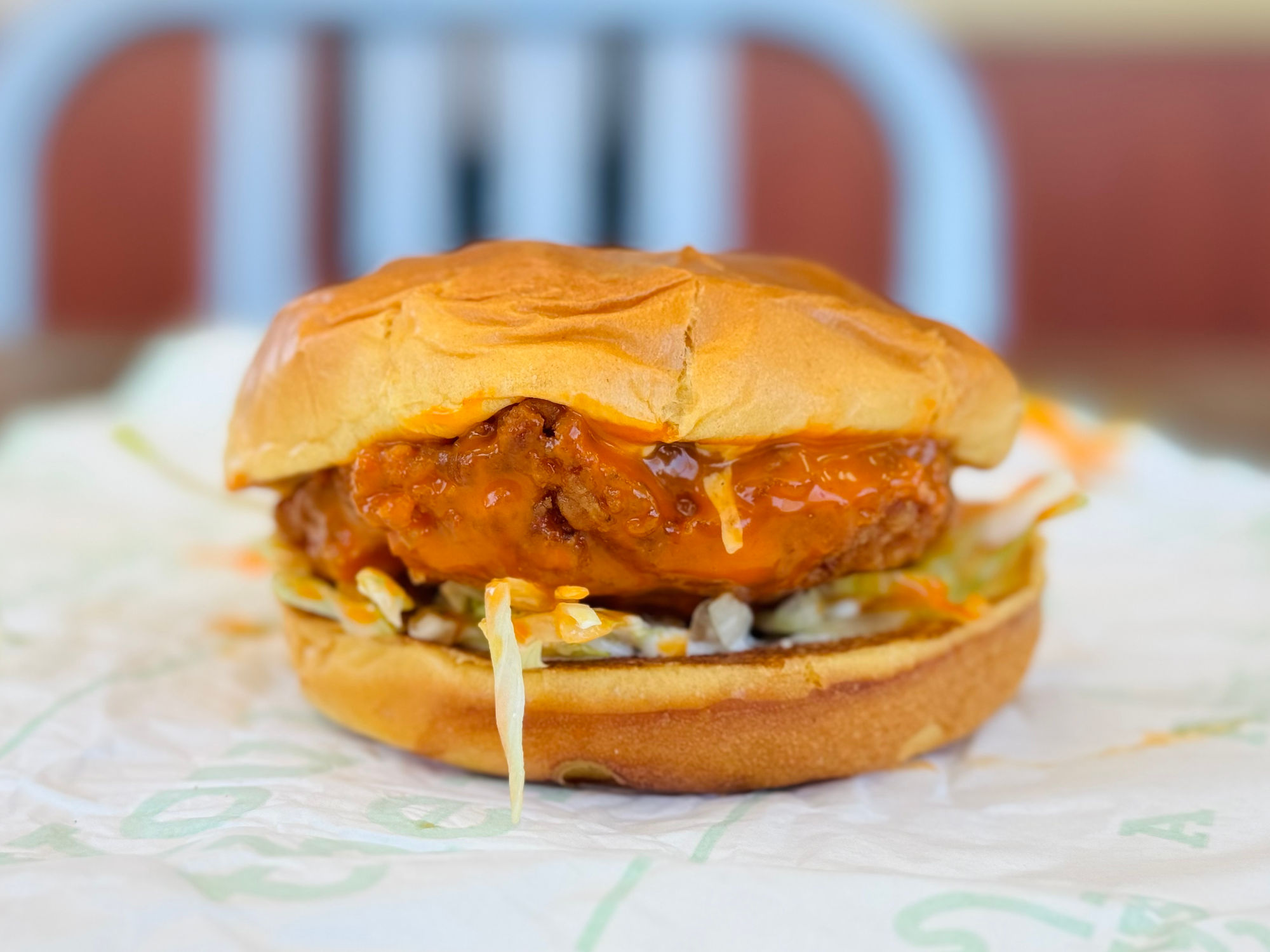
Buffalo Chicken Sandwich
- Crispy, Juicy Chicken Breast dipped in Spicy Buffalo Sauce
- Parmesan Peppercorn Ranch Sauce
- Shredded Lettuce
- Toasted Buttery Brioche Bun
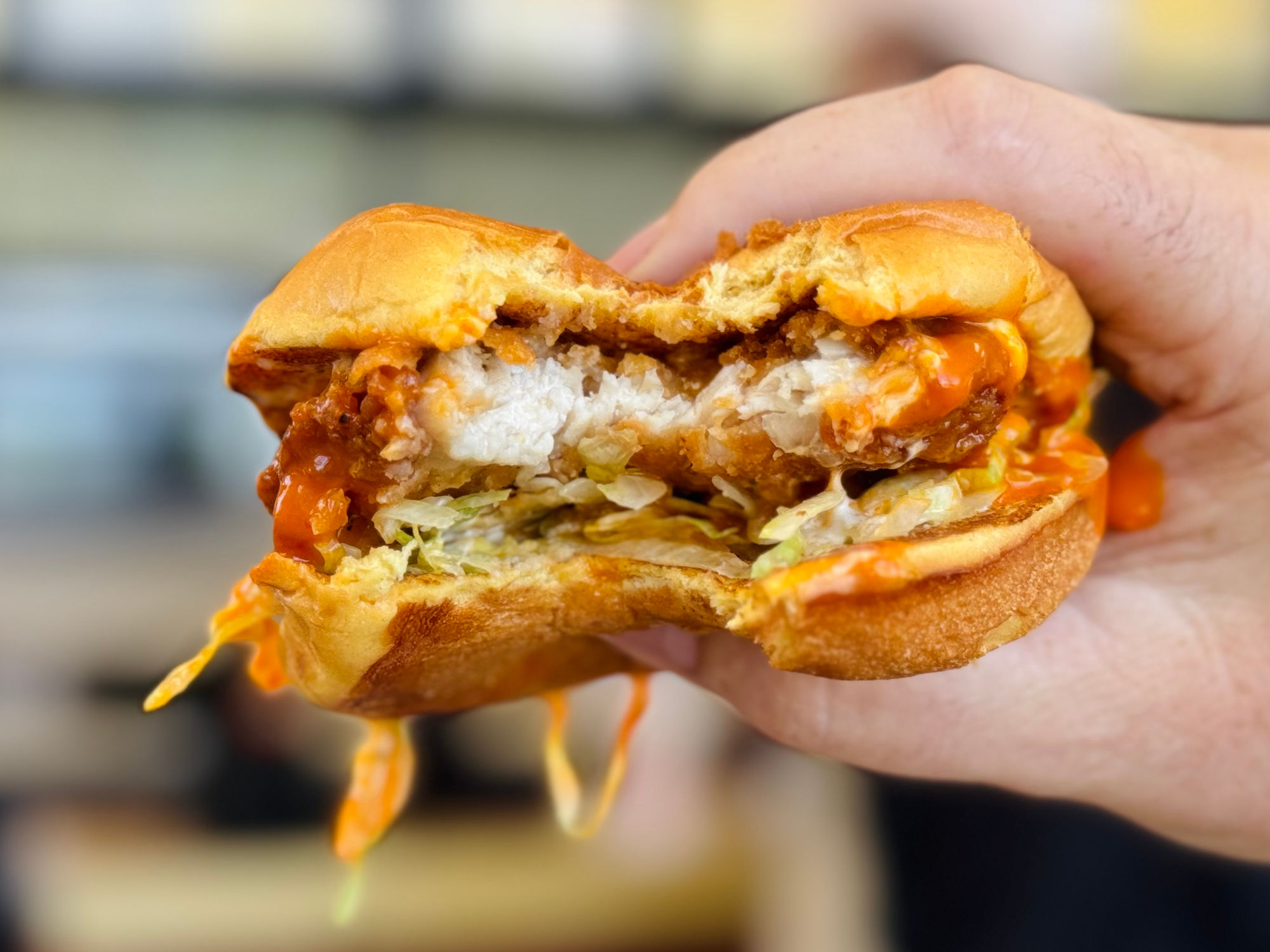
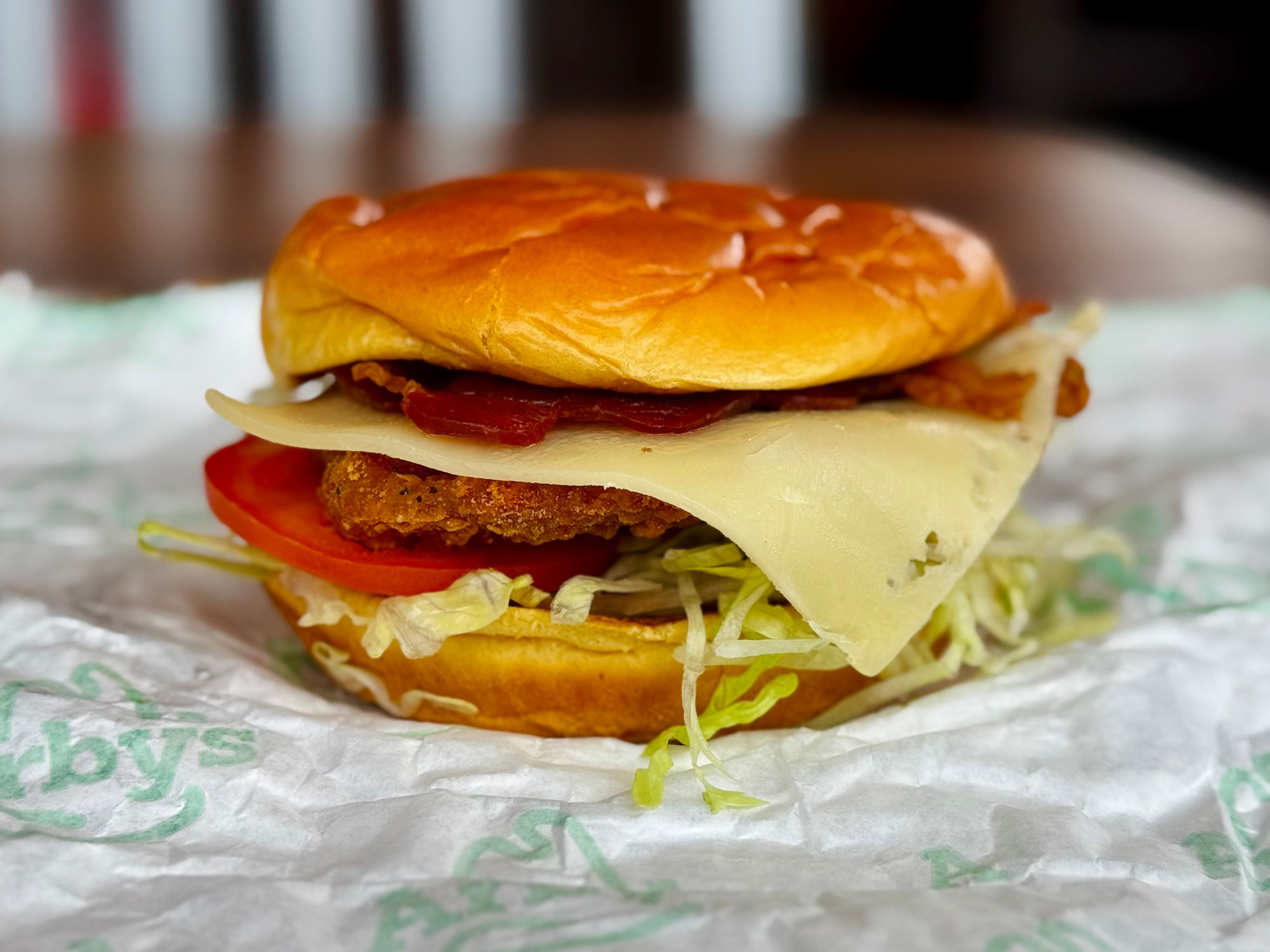
Chicken Bacon Swiss Sandwich
- Chicken Filet
- Bacon
- Swiss Cheese
- Shredded Lettuce
- Tomato
- Honey Mustard
- Brioche Bun
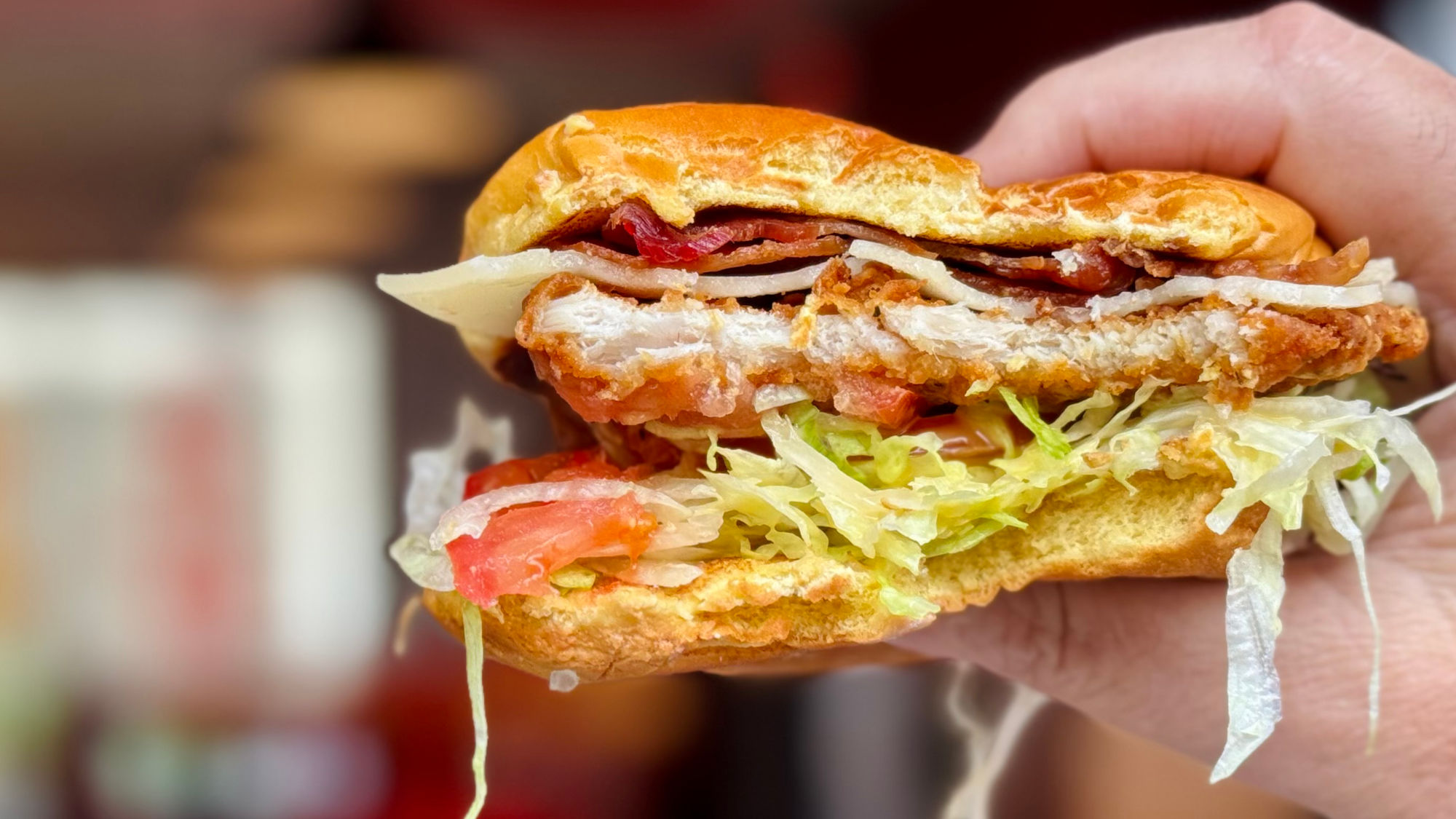

Chicken Tenders
- Breaded Chunks of Tender Chicken Breast

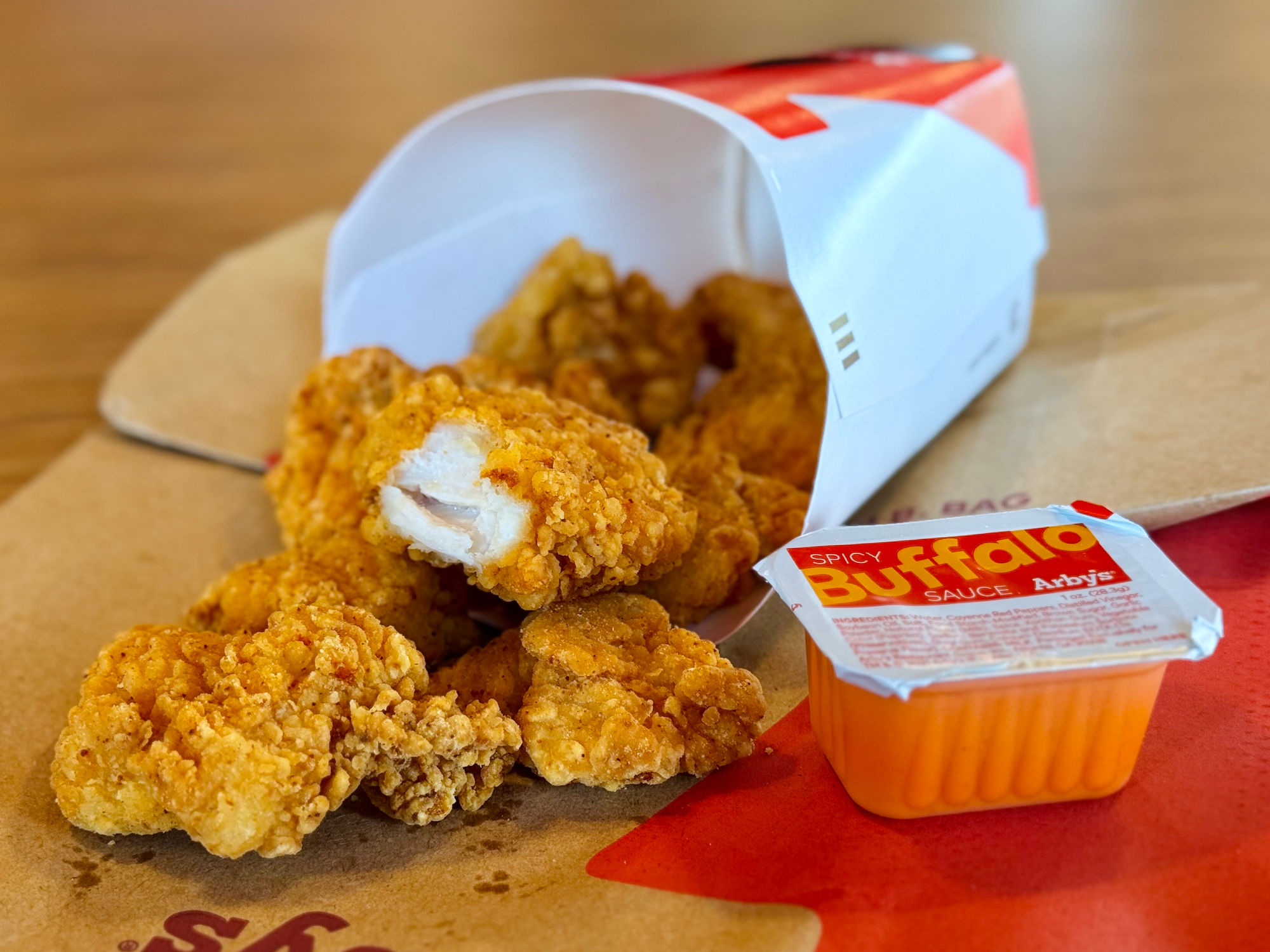
Chicken Nuggets
- 9 Bite-Sized Pieces
- All-White Meat Chicken
- Crispy Seasoned Breading

Crispy Chicken Club Wrap
- Chicken Nuggets
- Bacon
- Natural Cheddar
- Leaf Lettuce
- Red Onion
- Tomato
- Honey Mustard
- Artisan Wrap
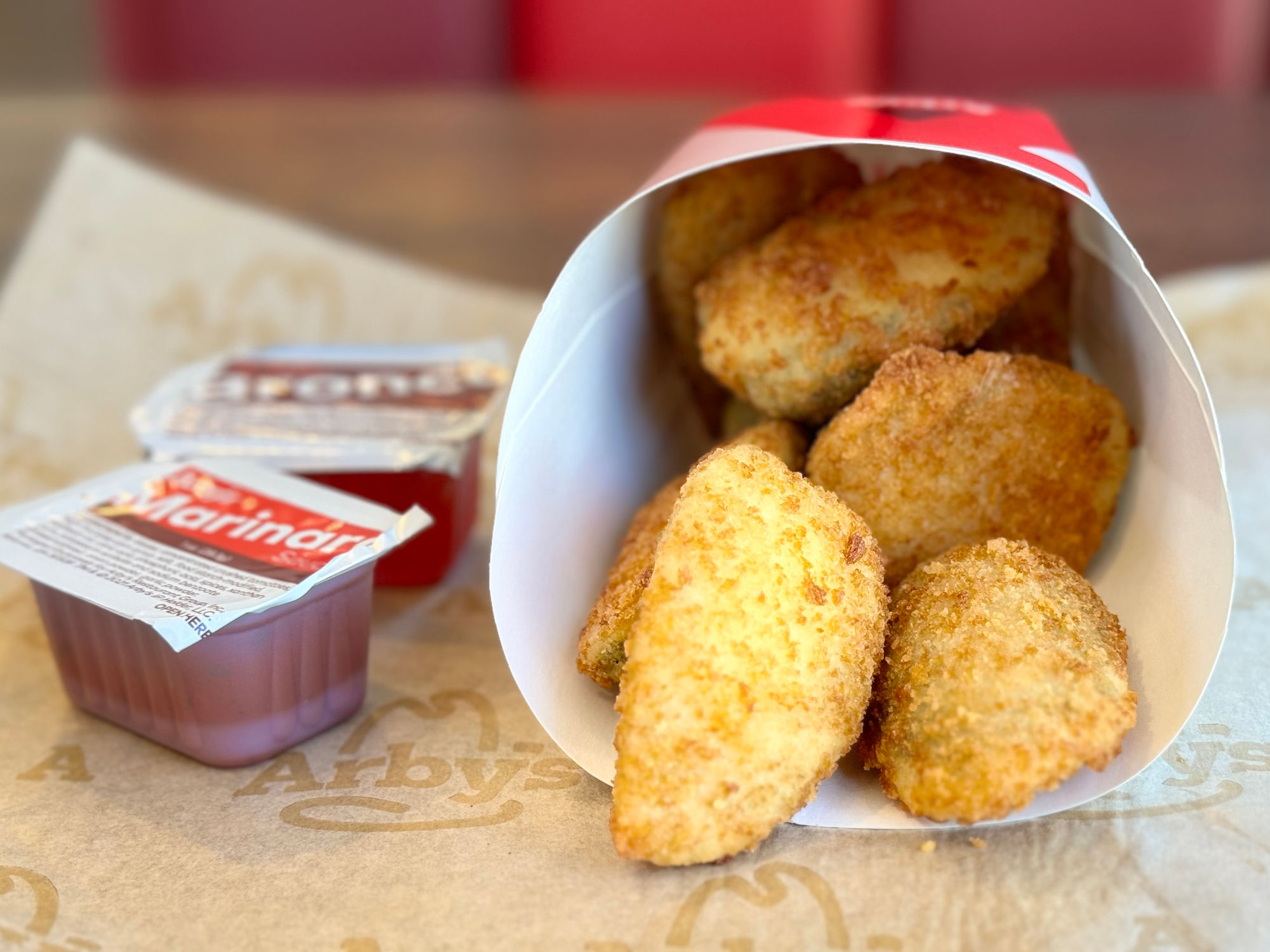
Spicy Jalapeno Bites
- Spicy Jalapeno Halves filled with Melted Cream Cheese
- Bronco Sauce

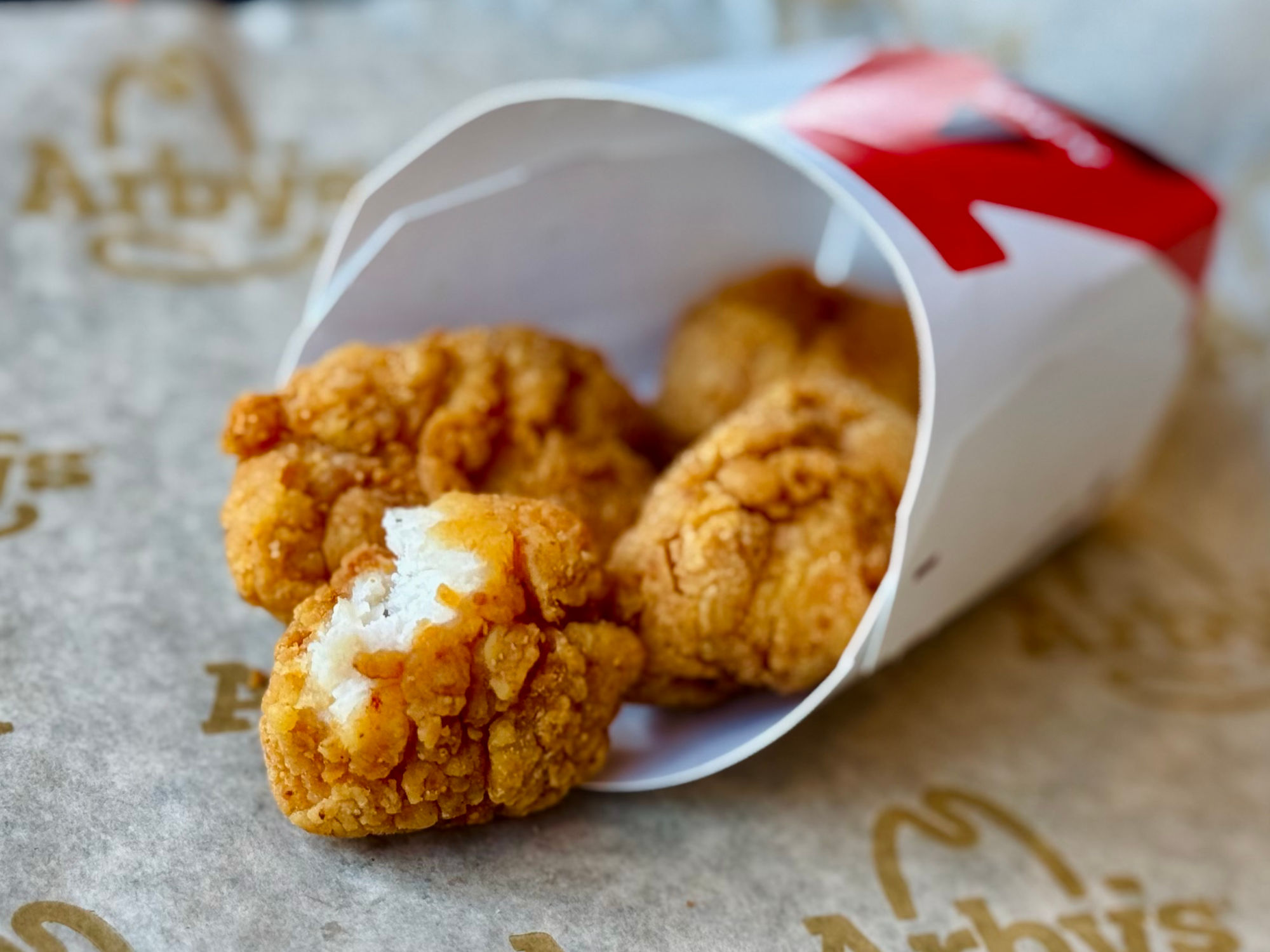
Premium Chicken Nuggets
- All-White Meat Chicken
- Crispy Seasoned Breading
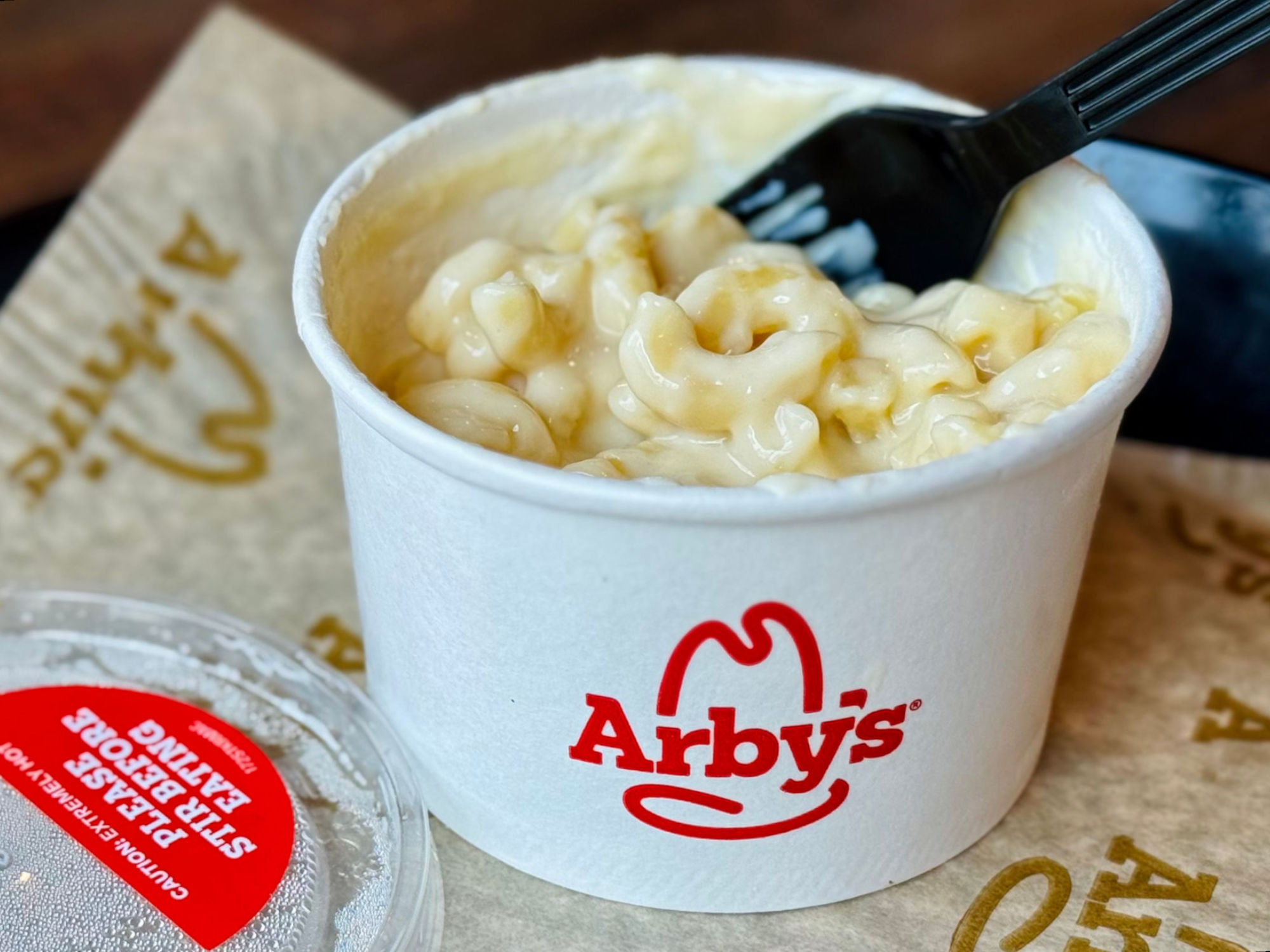
White Cheddar Mac 'N Cheese
- Smooth and Creamy
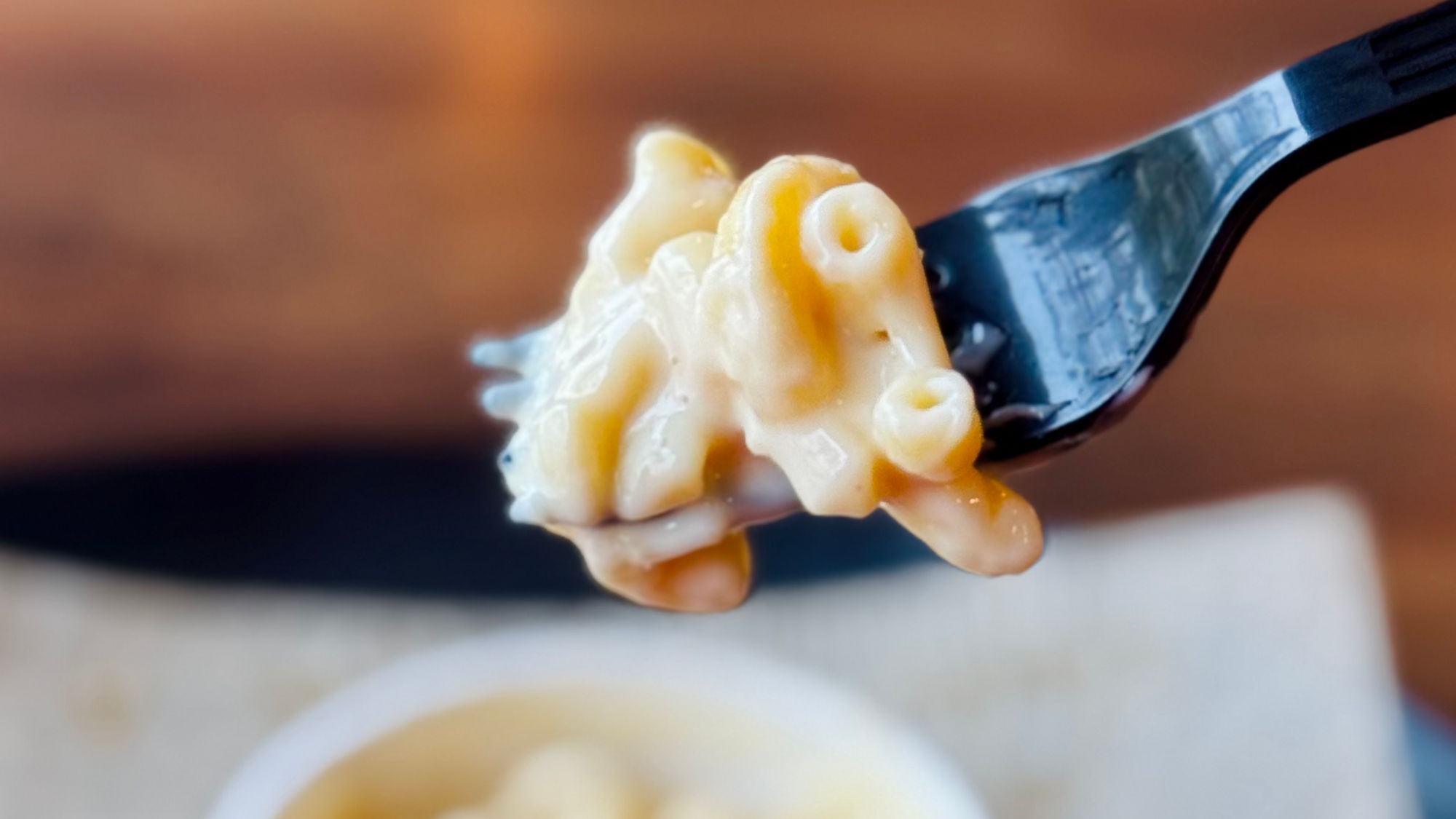
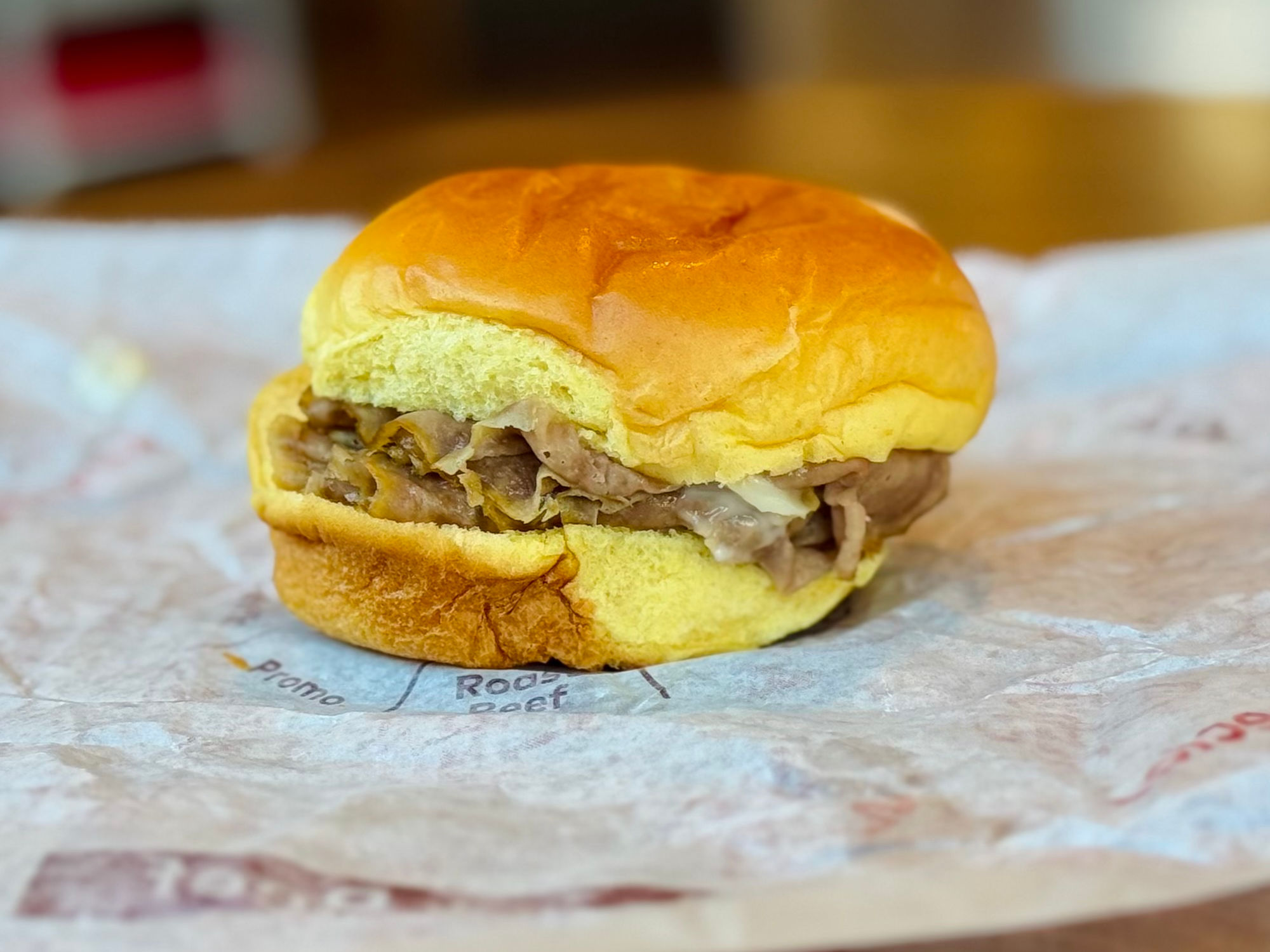
Roast Beef Slider
- Roast Beef
- Swiss Cheese
- Slider Bun
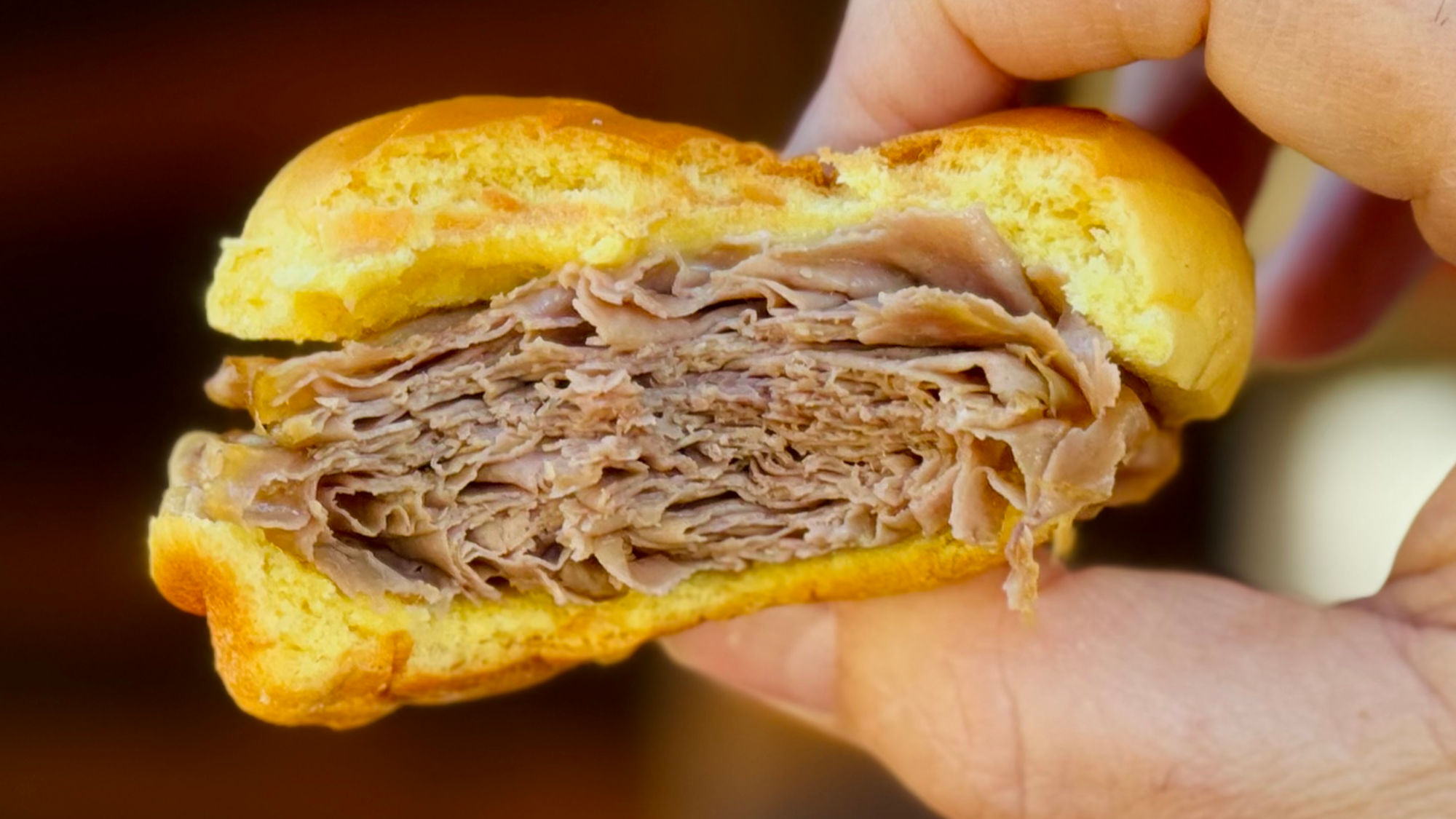
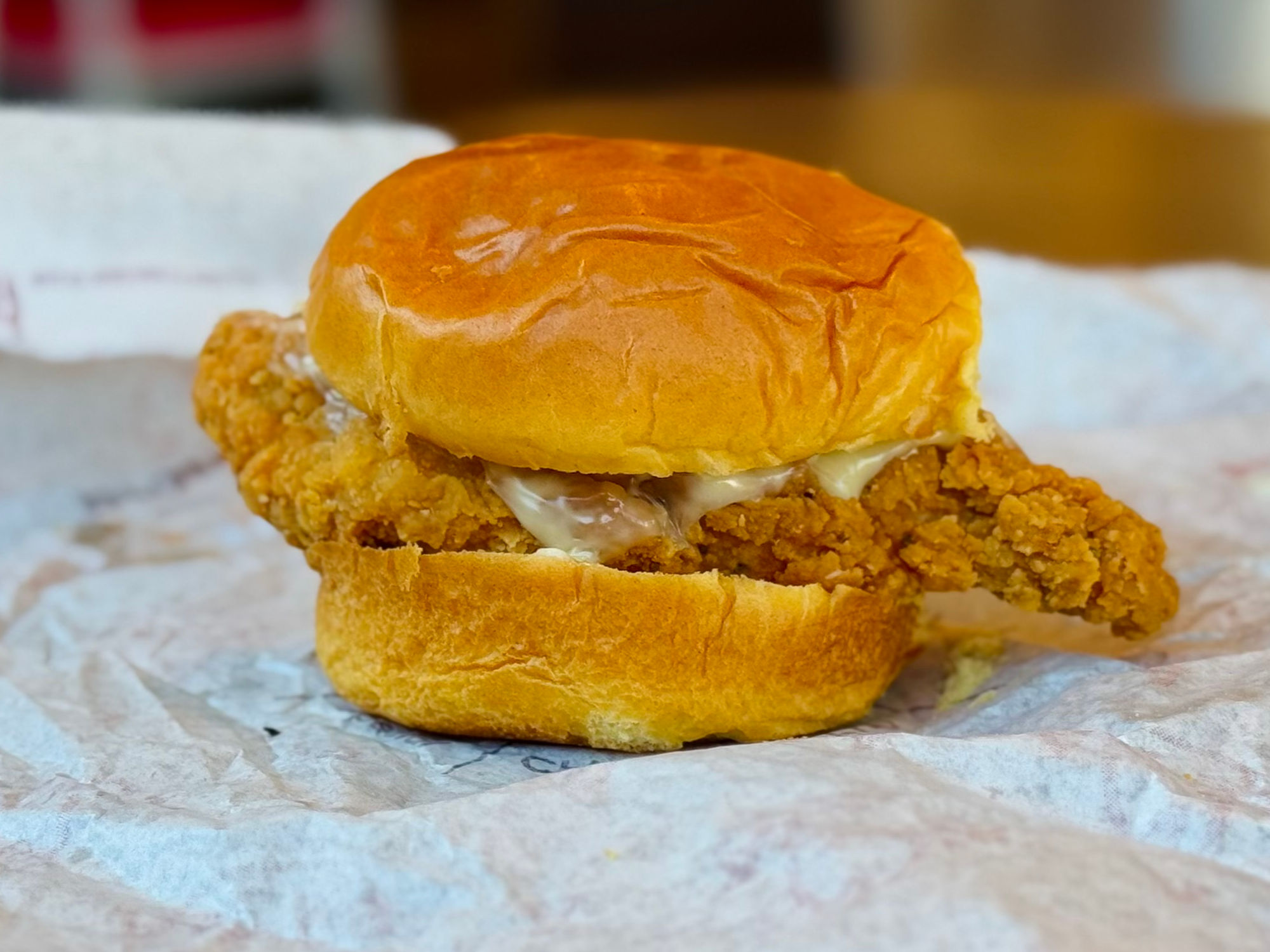
Chicken Slider
- Chicken Tender
- Swiss Cheese
- Slider Bun
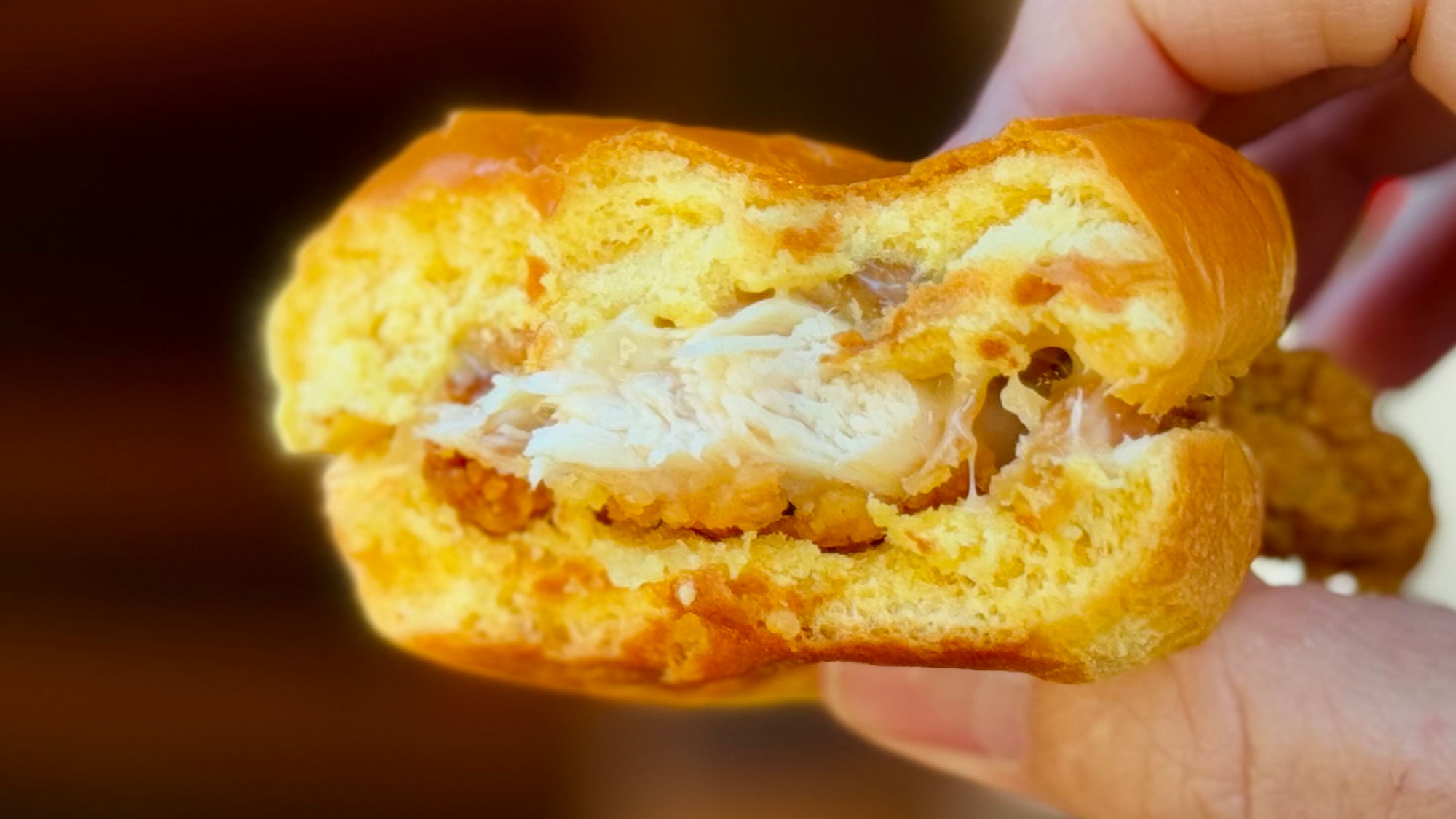

Buffalo Chicken Slider
- Chicken Tender
- Parmesan Peppercorn Ranch
- Buffalo Sauce
- Slider Bun
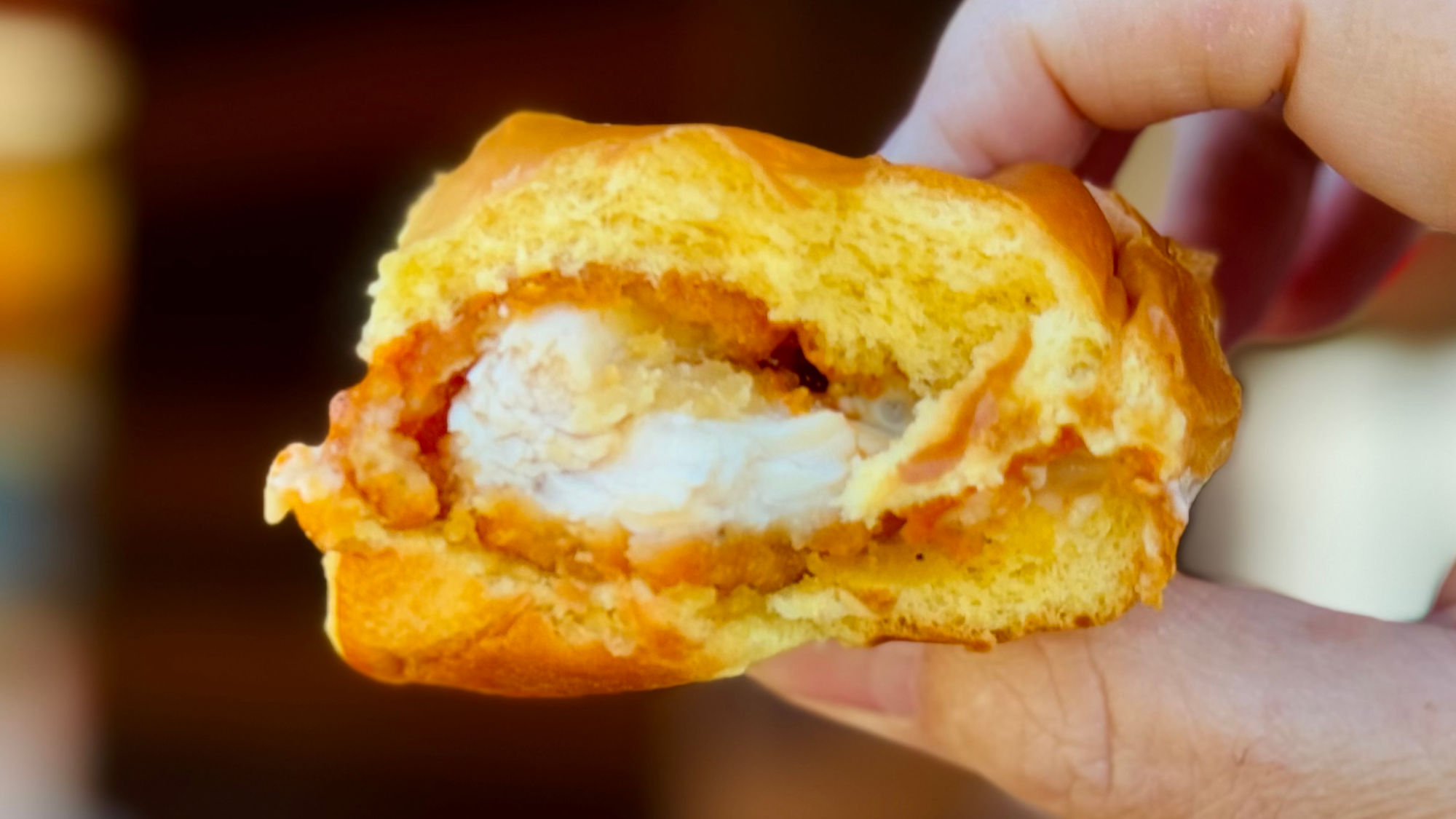
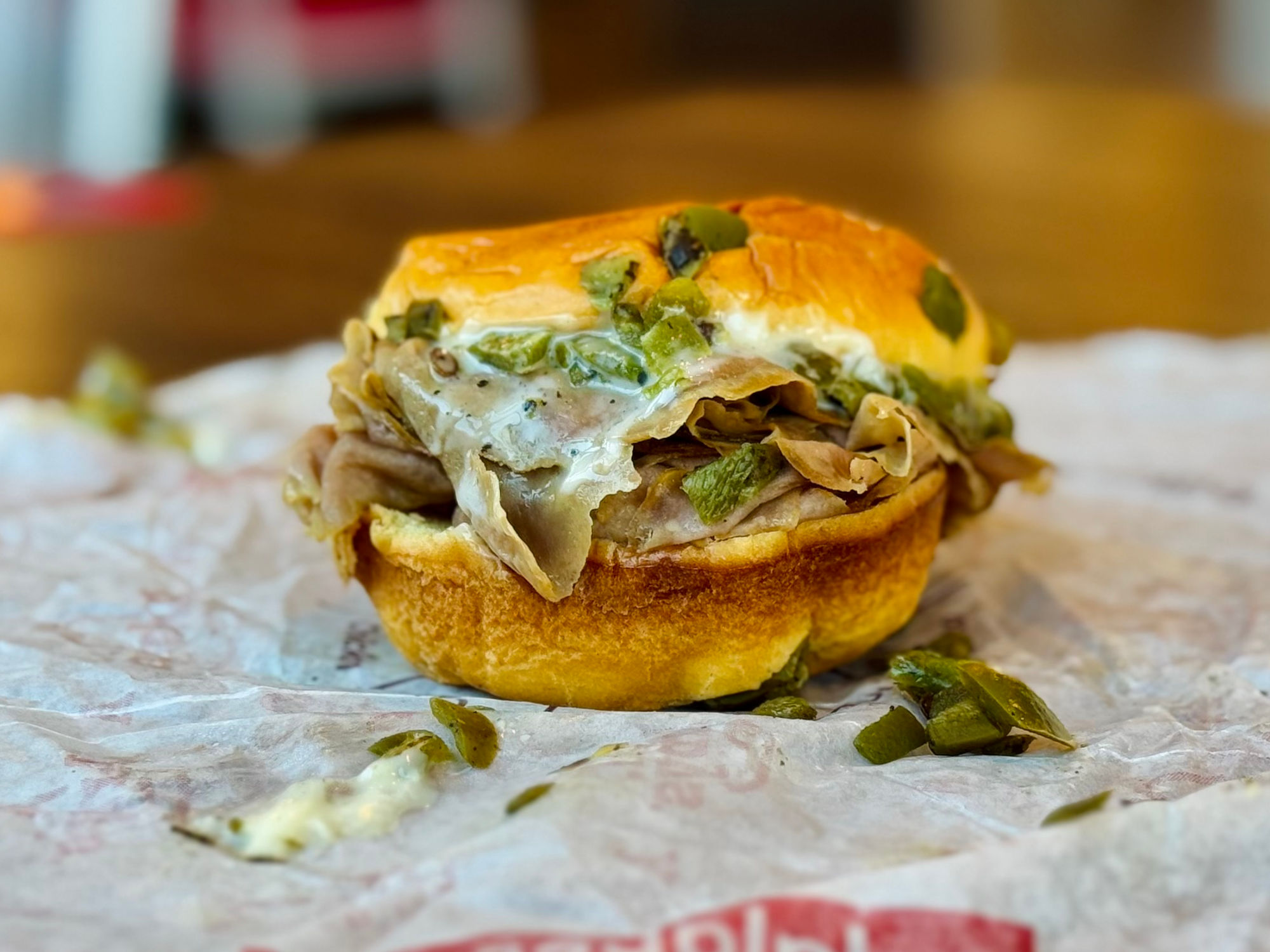
Jalapeno Roast Beef Slider
- Roast Beef
- Swiss Cheese
- Diced Jalapeno
- Slider Bun
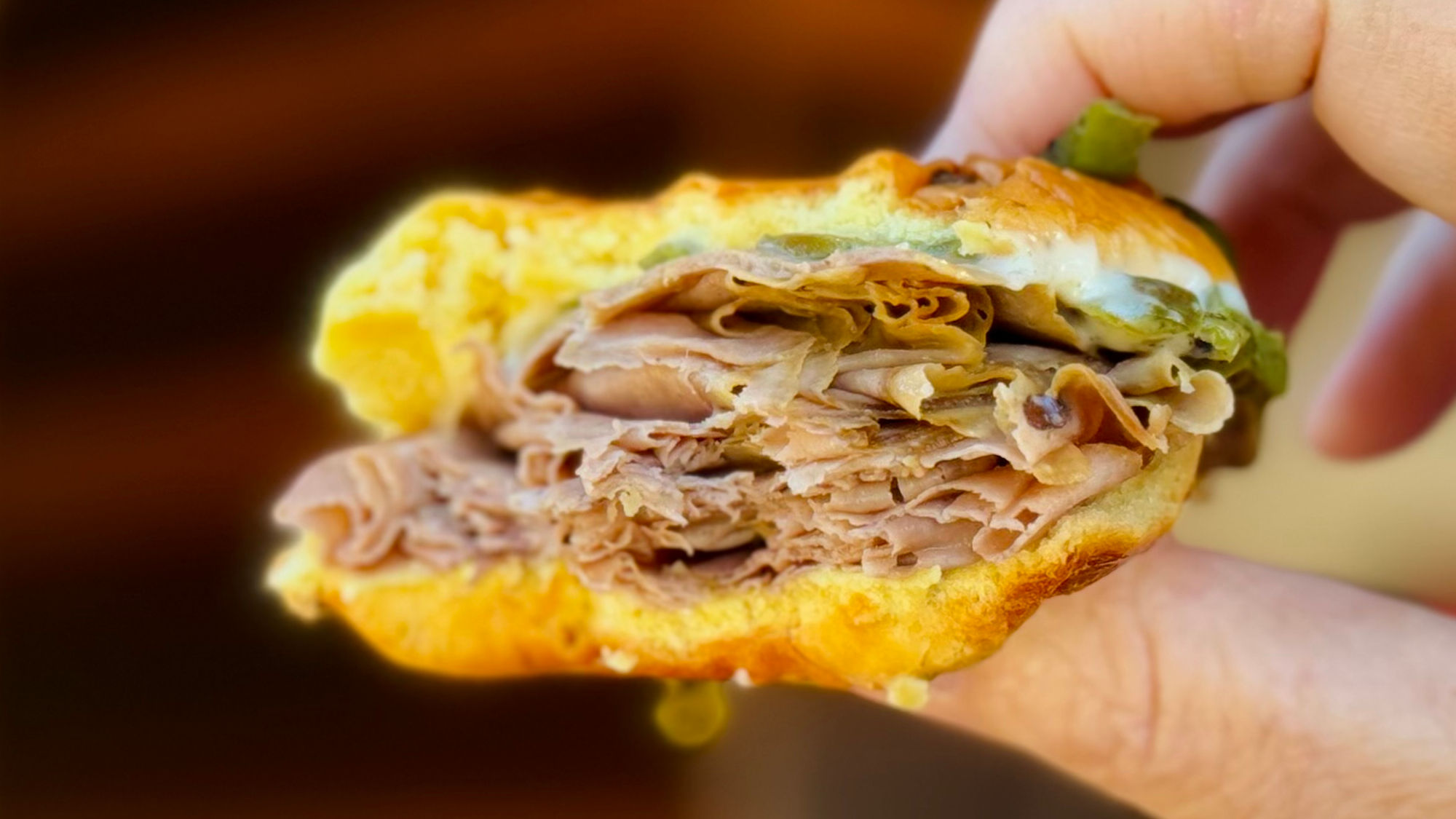

Ham Slider
- Pit-Smoked Ham
- Swiss Cheese
- Slider Bun
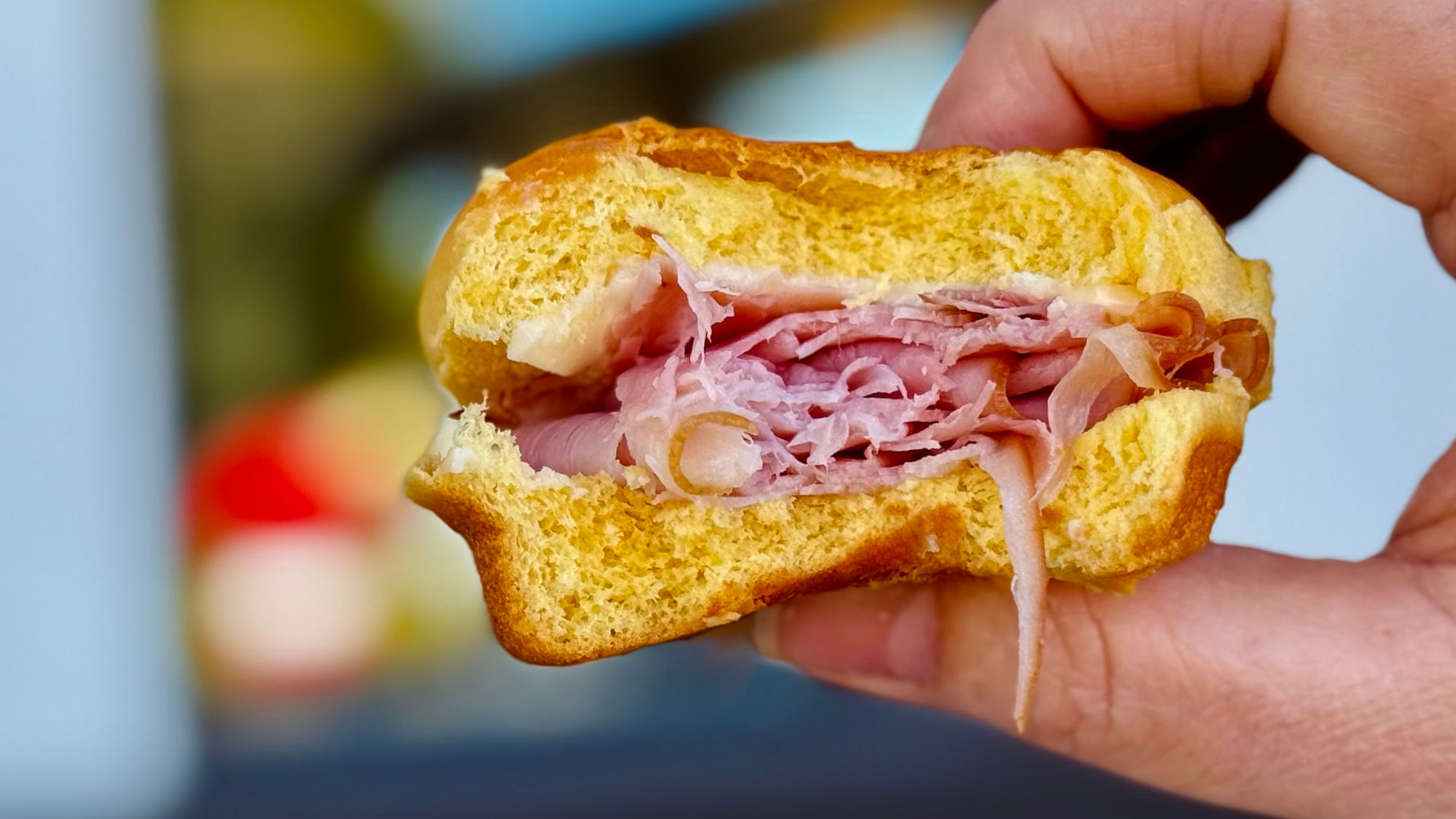
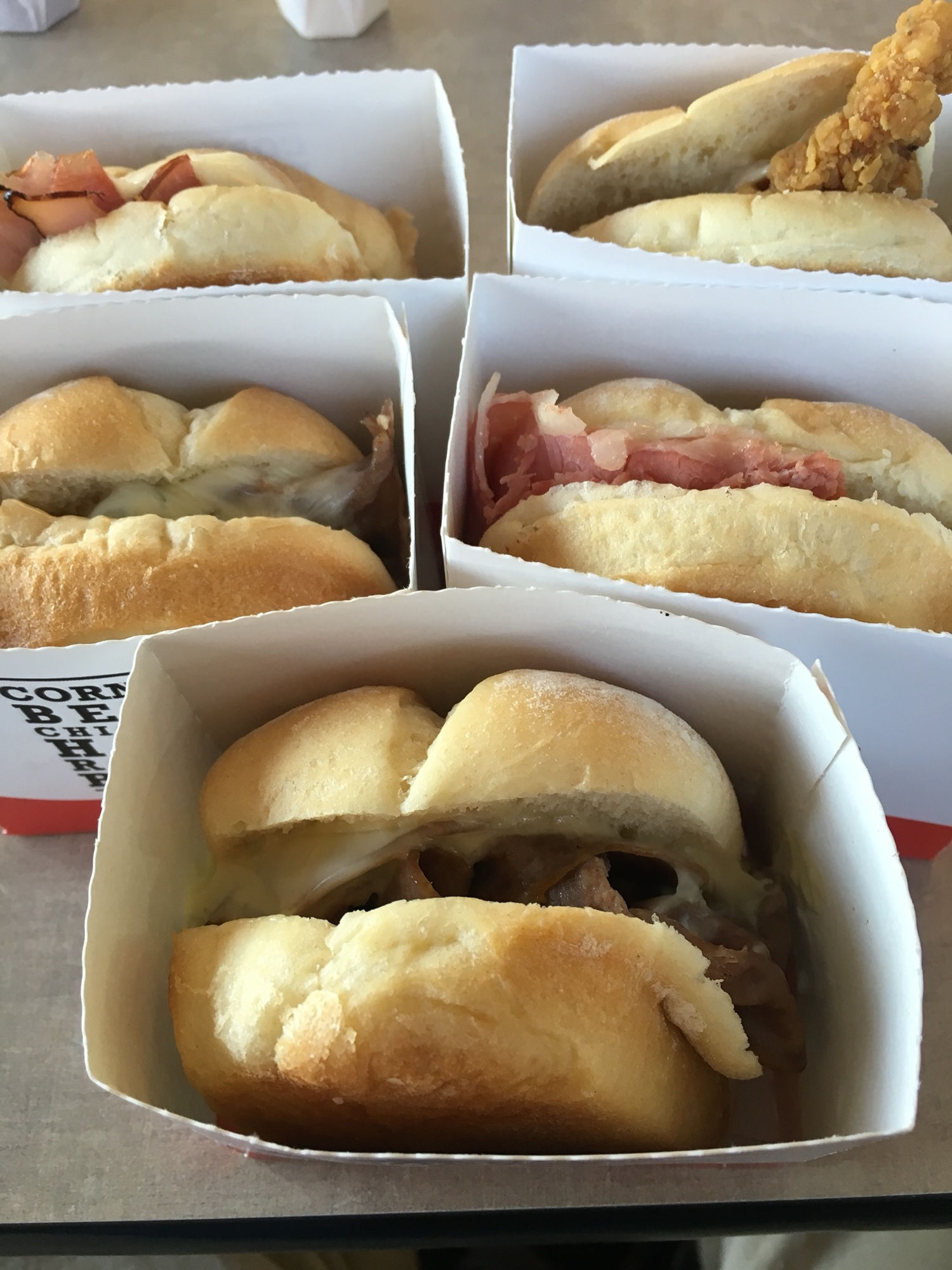

Ranch Chicken Wrap
- Chicken Tender
- Cheddar Cheese
- Shredded Lettuce
- Parmesan Peppercorn Ranch
- Tortilla Wrap
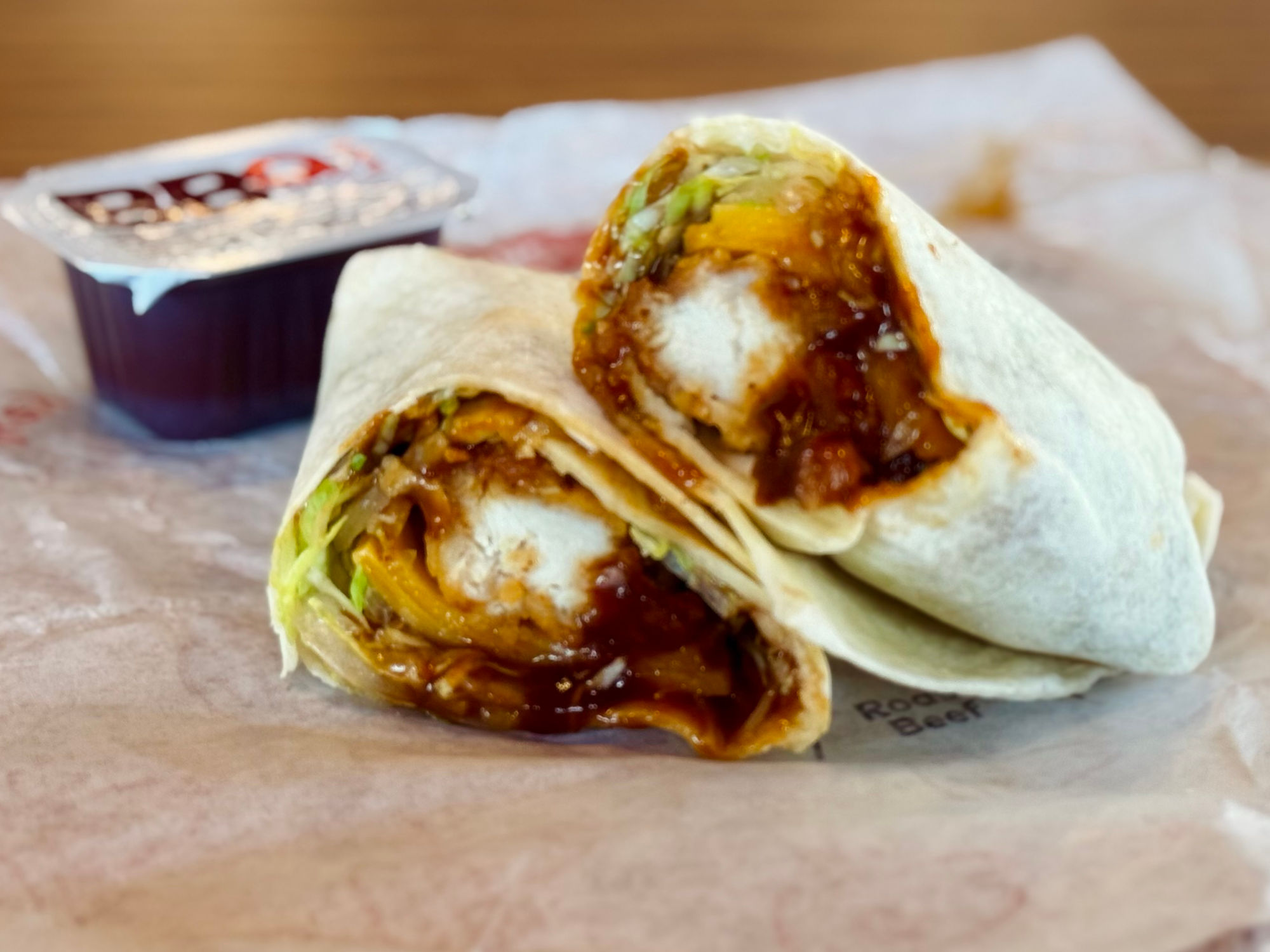
BBQ Chicken Wrap
- Chicken Tender
- Cheddar Cheese
- Shredded Lettuce
- Smokey BBQ Sauce
- Tortilla Wrap
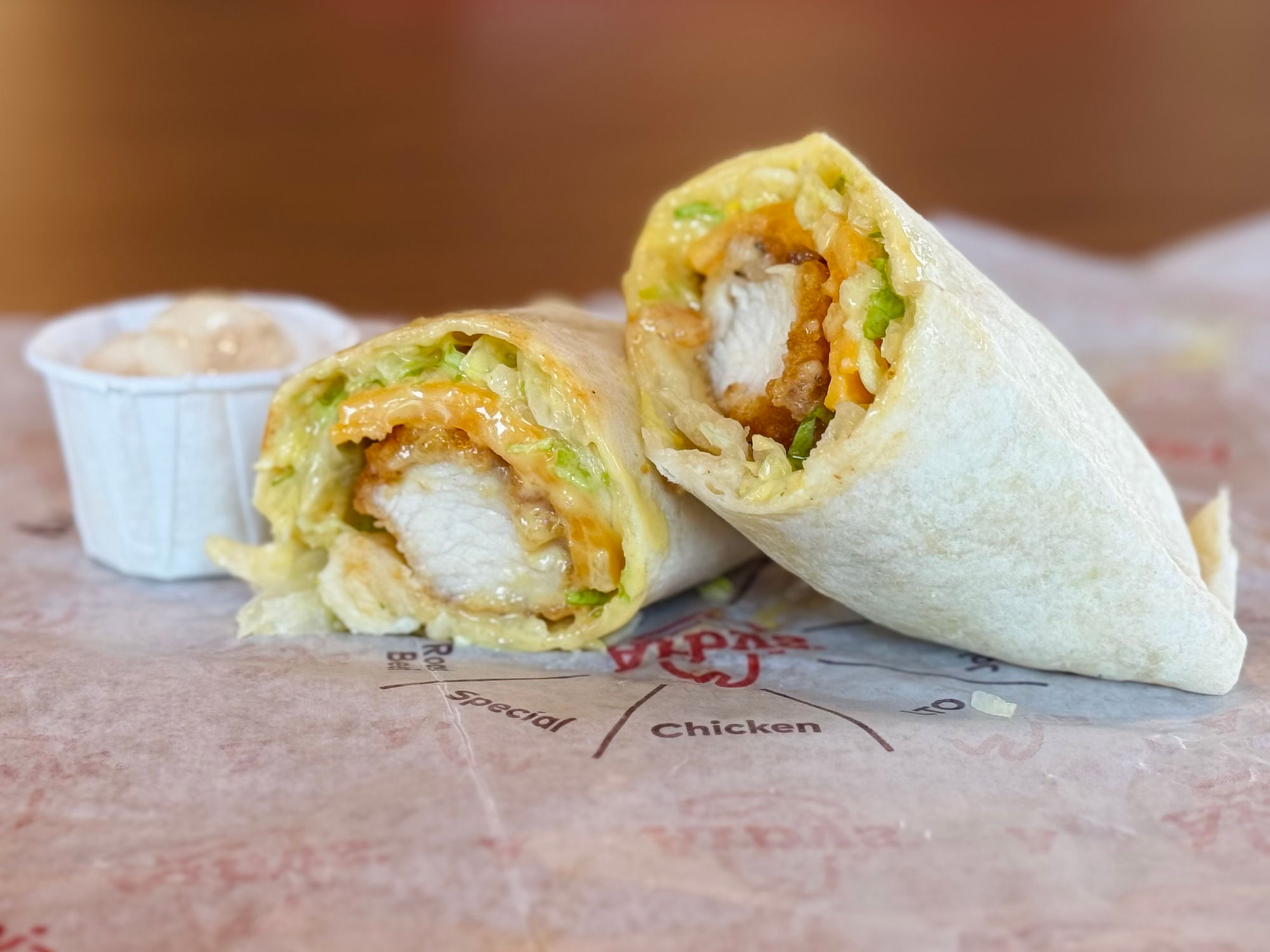
Honey Mustard Chicken Wrap
- Chicken Tender
- Cheddar Cheese
- Shredded Lettuce
- Honey Mustard
- Tortilla Wrap
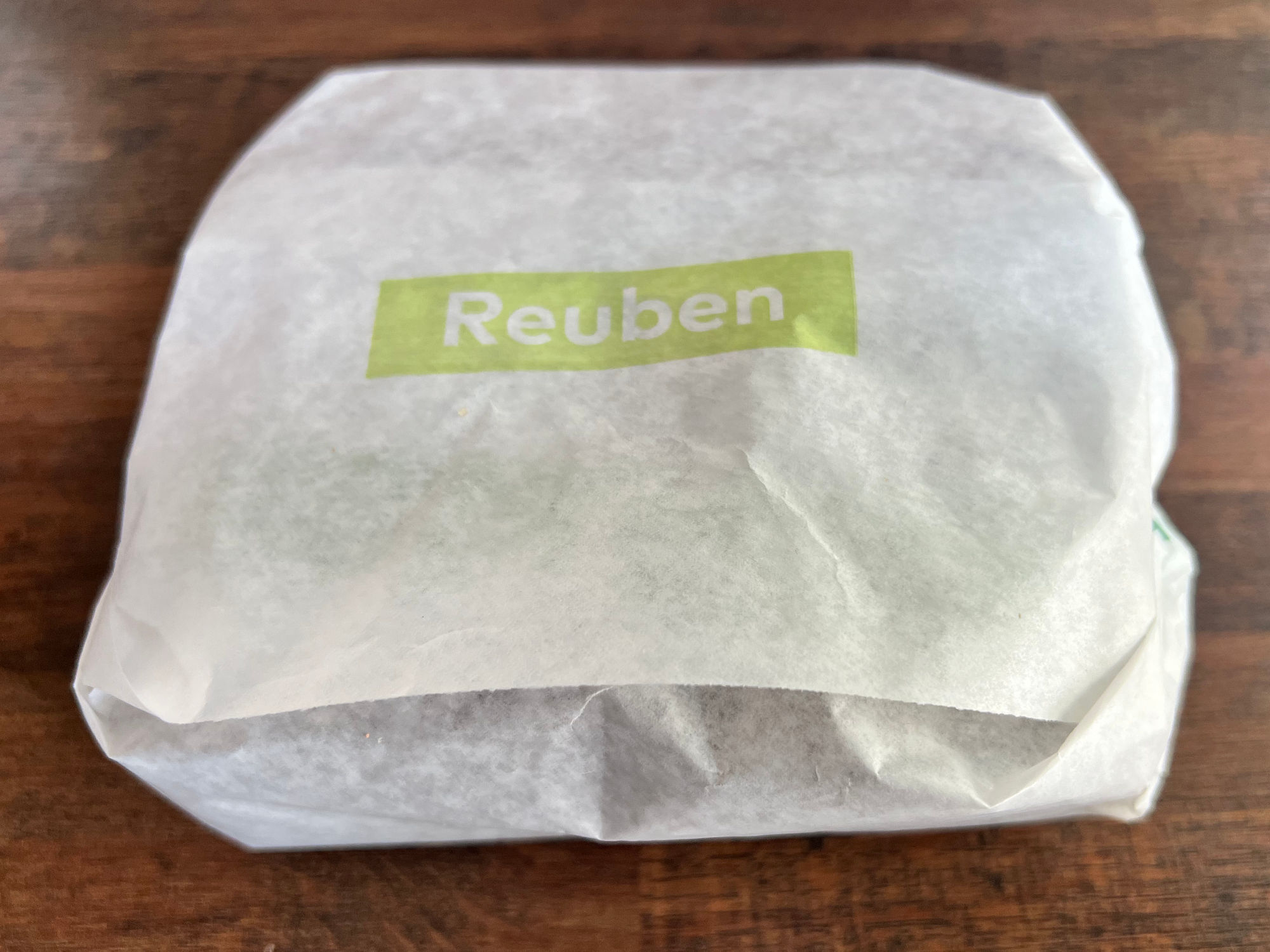
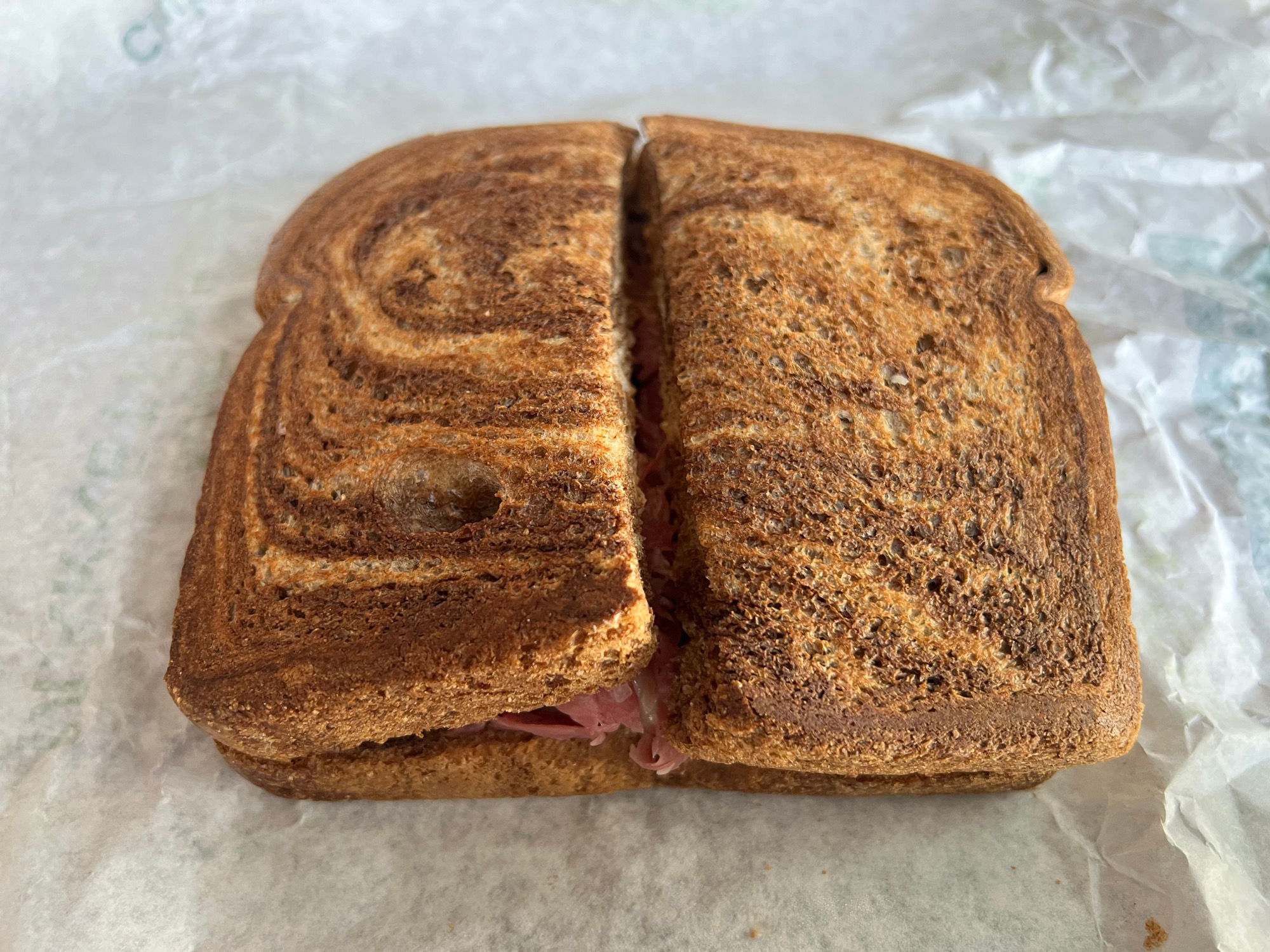
Corned Beef Reuben
Inspired by the New York standard
- Marbled Rye Bread
- Freshly Sliced Corned Beef
- Big Eye Swiss Cheese
- Tangy Sauerkraut
- Creamy Thousand Island Dressing
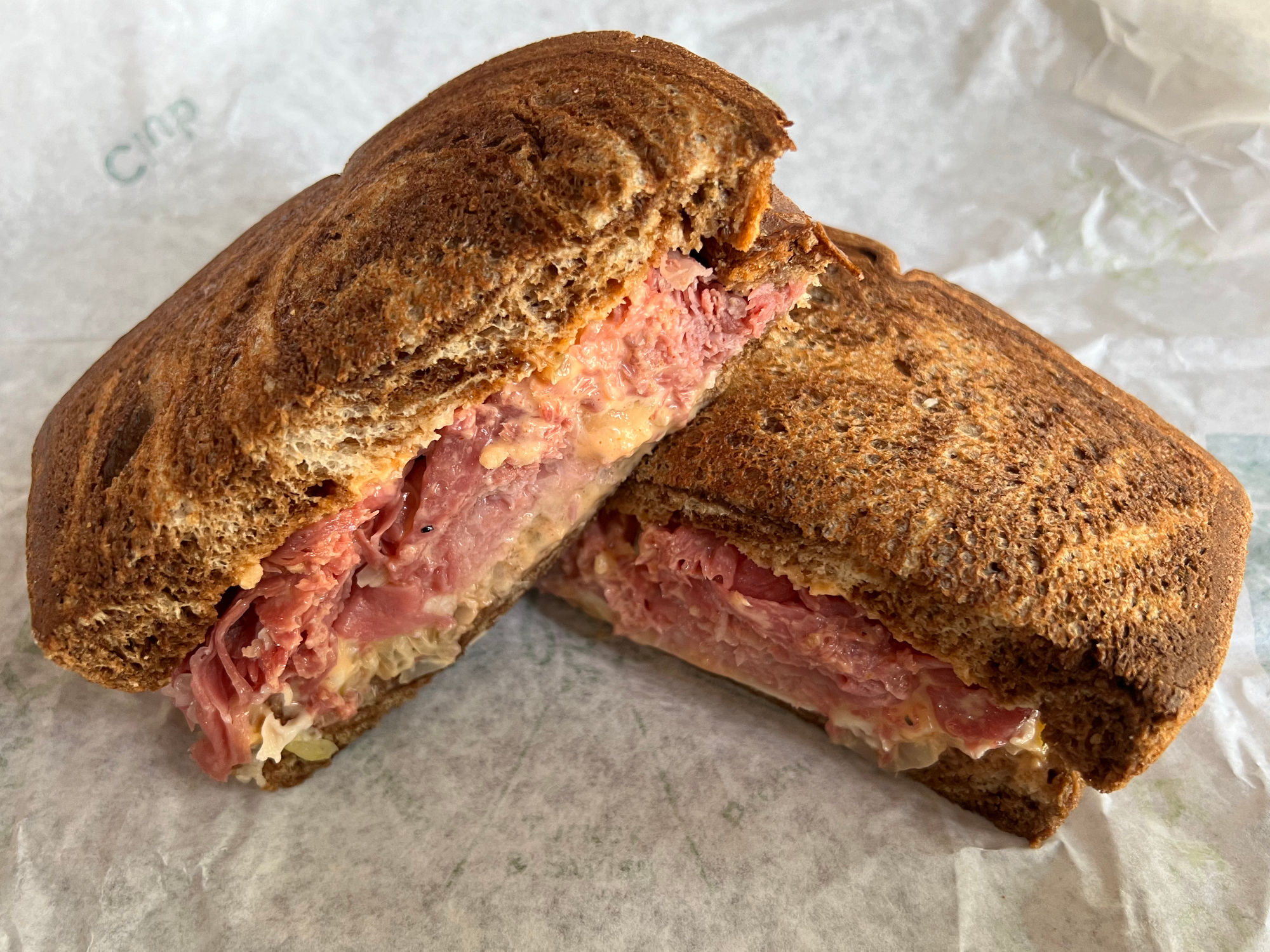
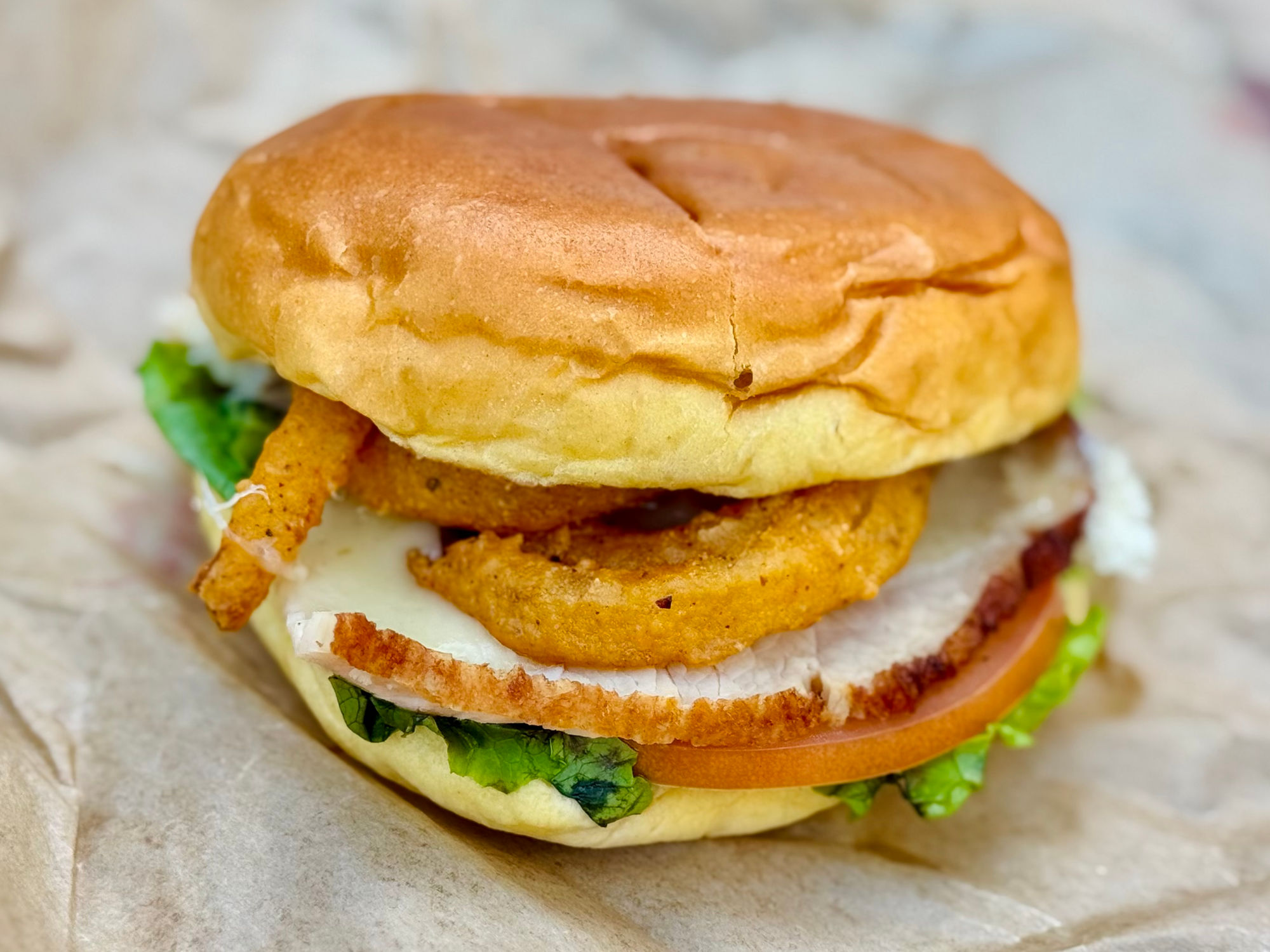
Deep Fried Turkey Gobbler
- Deep Fried Turkey
- Big Eye Swiss
- Crispy Onion Strings
- Leaf Lettuce
- Tomato
- Savory Herb Spread
- Everything Seasoning
- Brioche Bun
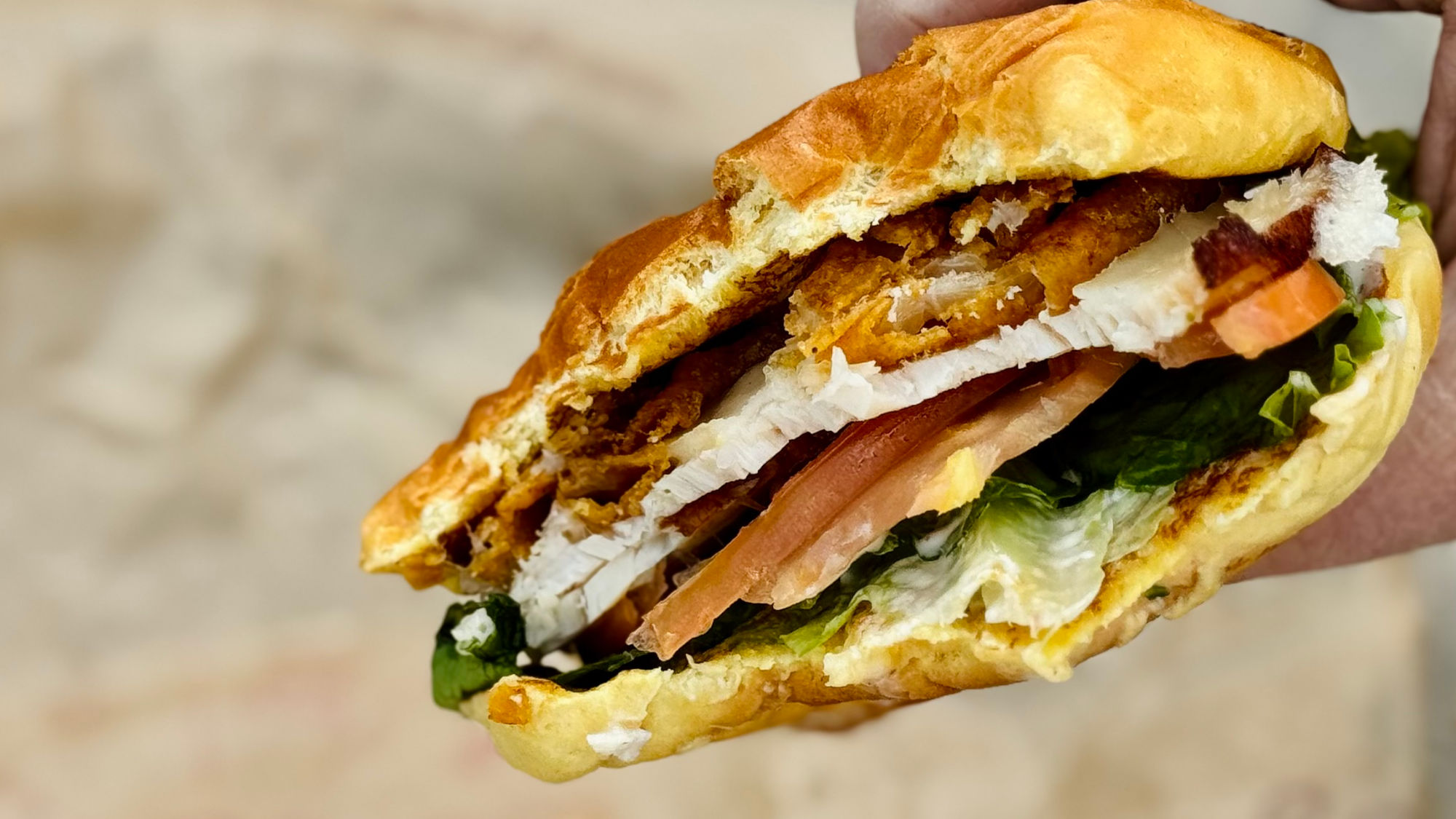
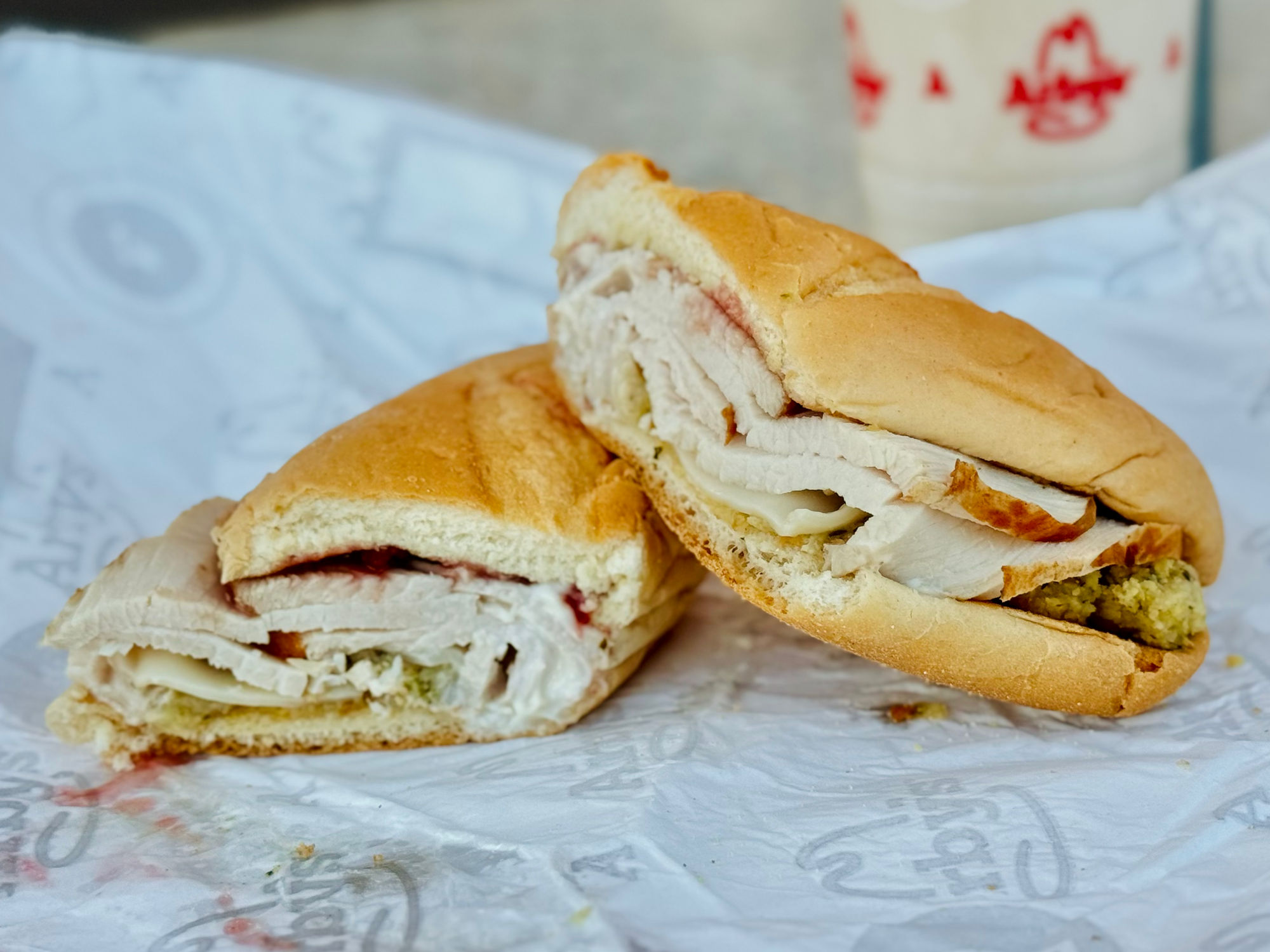
Deep Fried Turkey Gobbler 2025
- Quarter Pound of thick-sliced Deep Fried Turkey
- Crispy Onions
- Swiss Cheese
- Stuffing
- Cranberry Spread
- Mayo
- Toasted Sub Bun
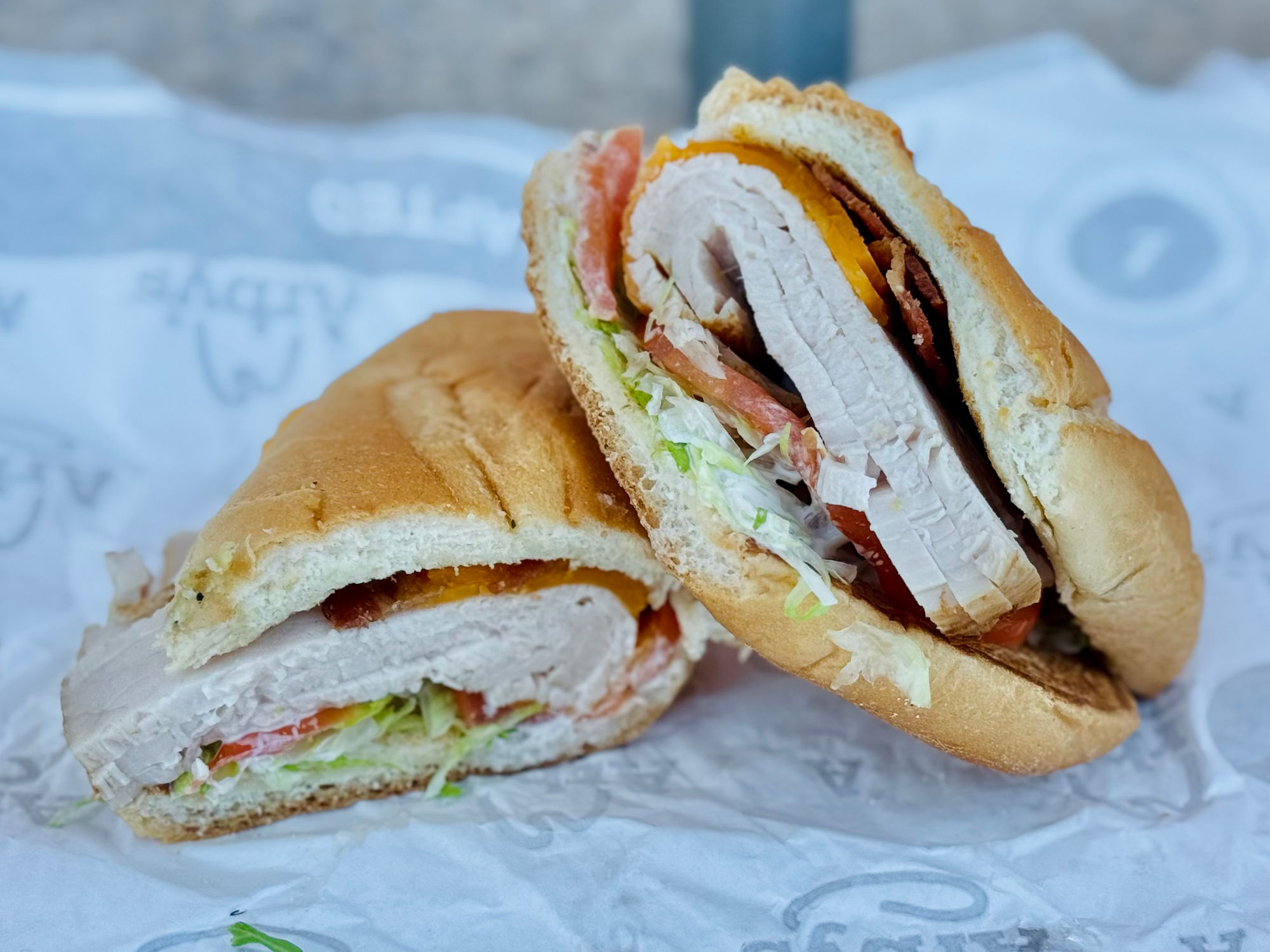
Deep Fried Turkey Club
- Quarter Pound of Thick Sliced Deep Fried Turkey
- crispy Bacon
- Cheddar Cheese
- Tomato
- Lettuce
- Mayo
- toasted Sub Bun
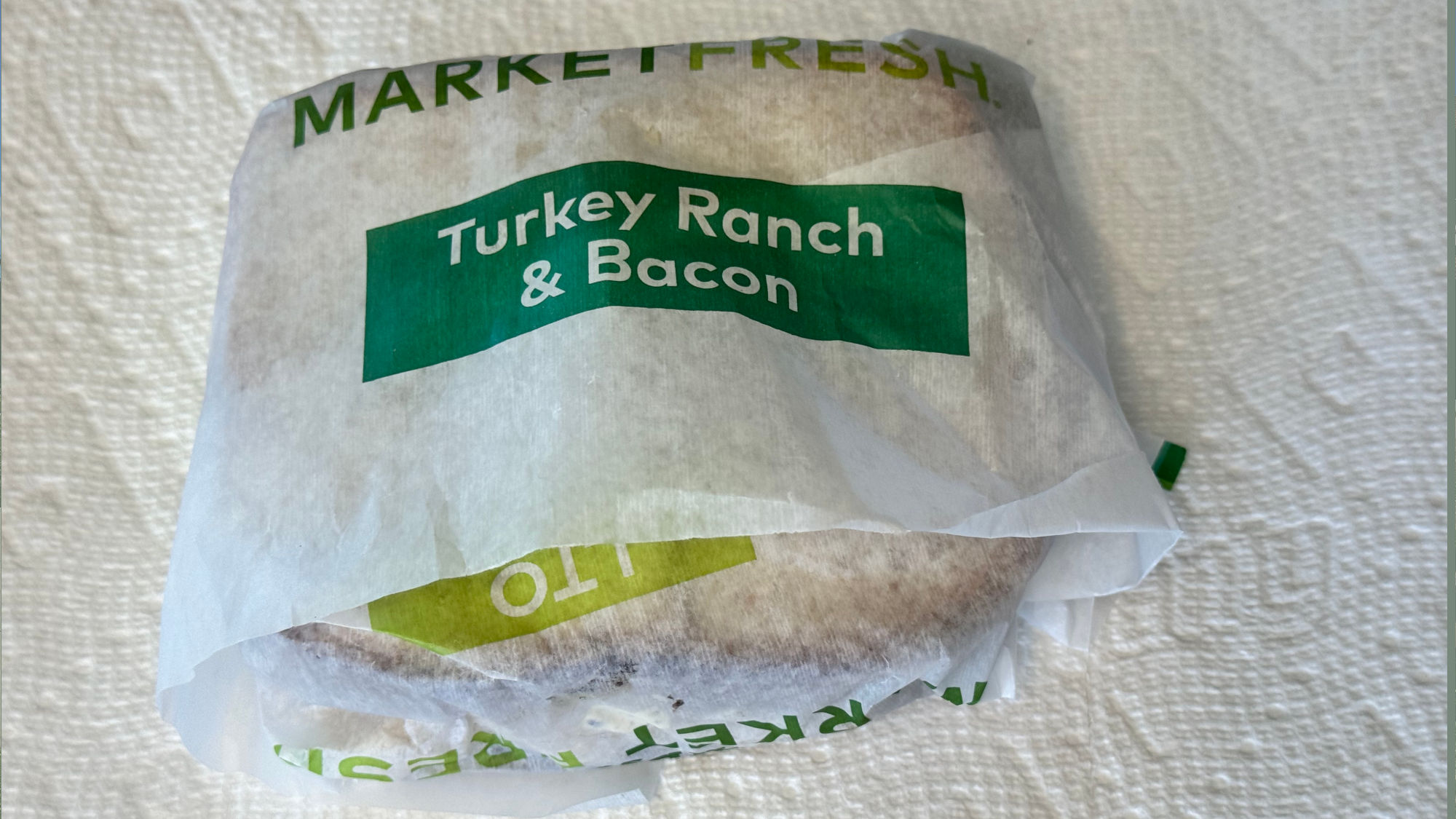

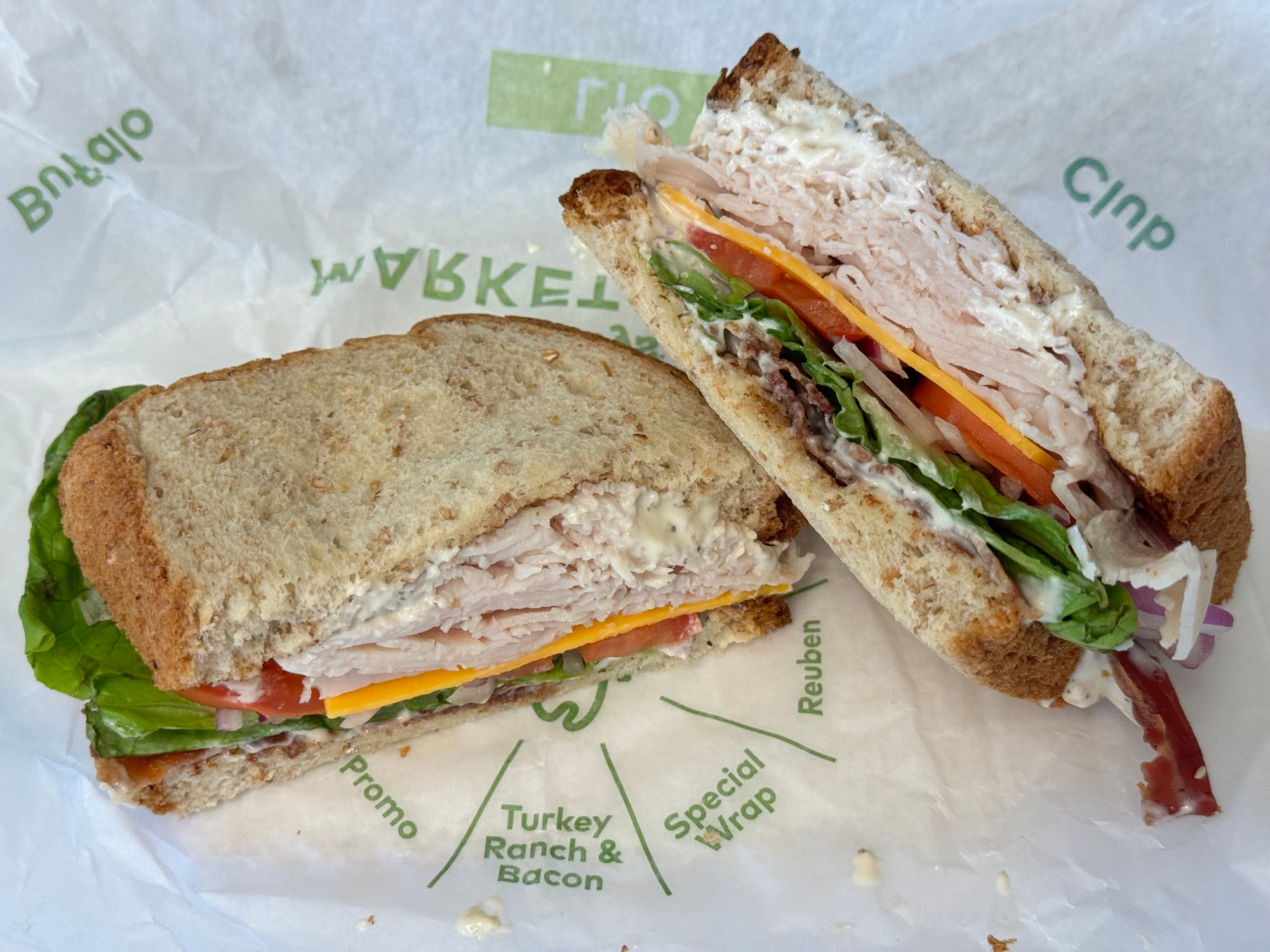
Turkey Ranch & Bacon
- Oven-Roasted Turkey
- Bacon
- Natural Aged Cheddar
- Red Onions
- Tomatoes
- Green Leaf Lettuce
- Parmesan Peppercorn Ranch Sauce
- Honey Wheat Bread
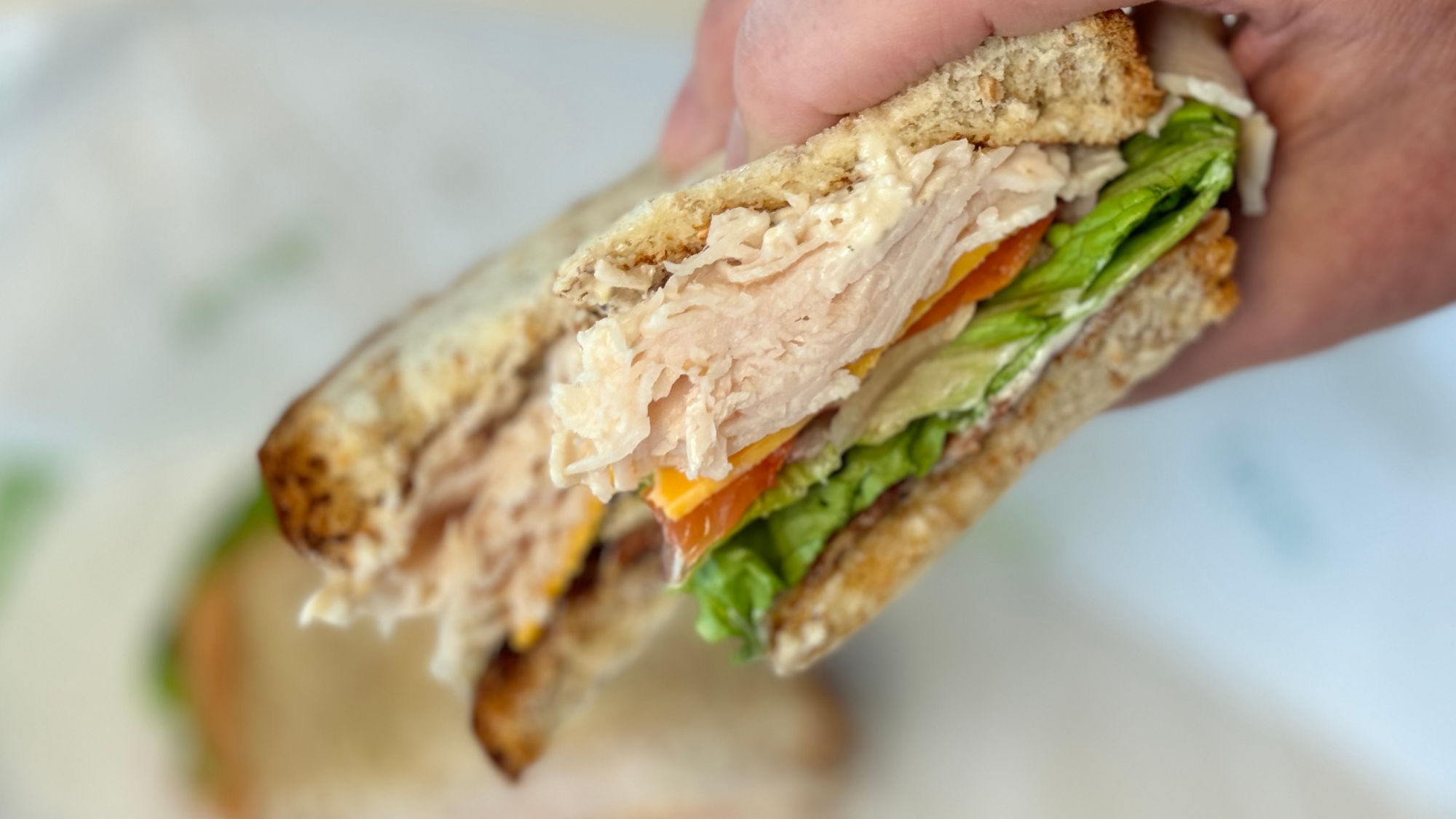

Chicken Cordon Bleu
- Buttermilk Crispy Chicken Filet
- Pit-Smoked Ham
- Swiss Cheese
- Mayo
- Roll
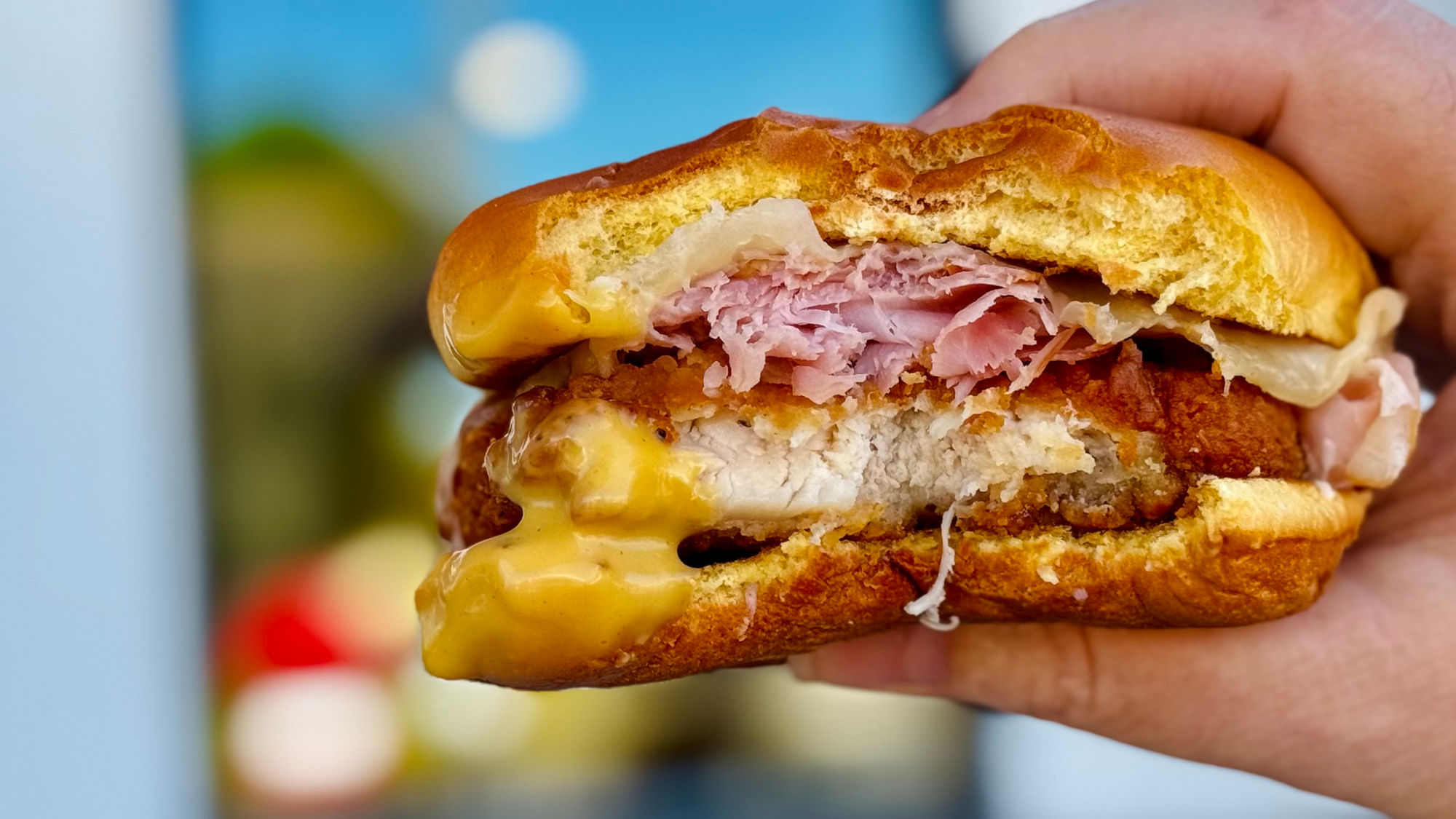
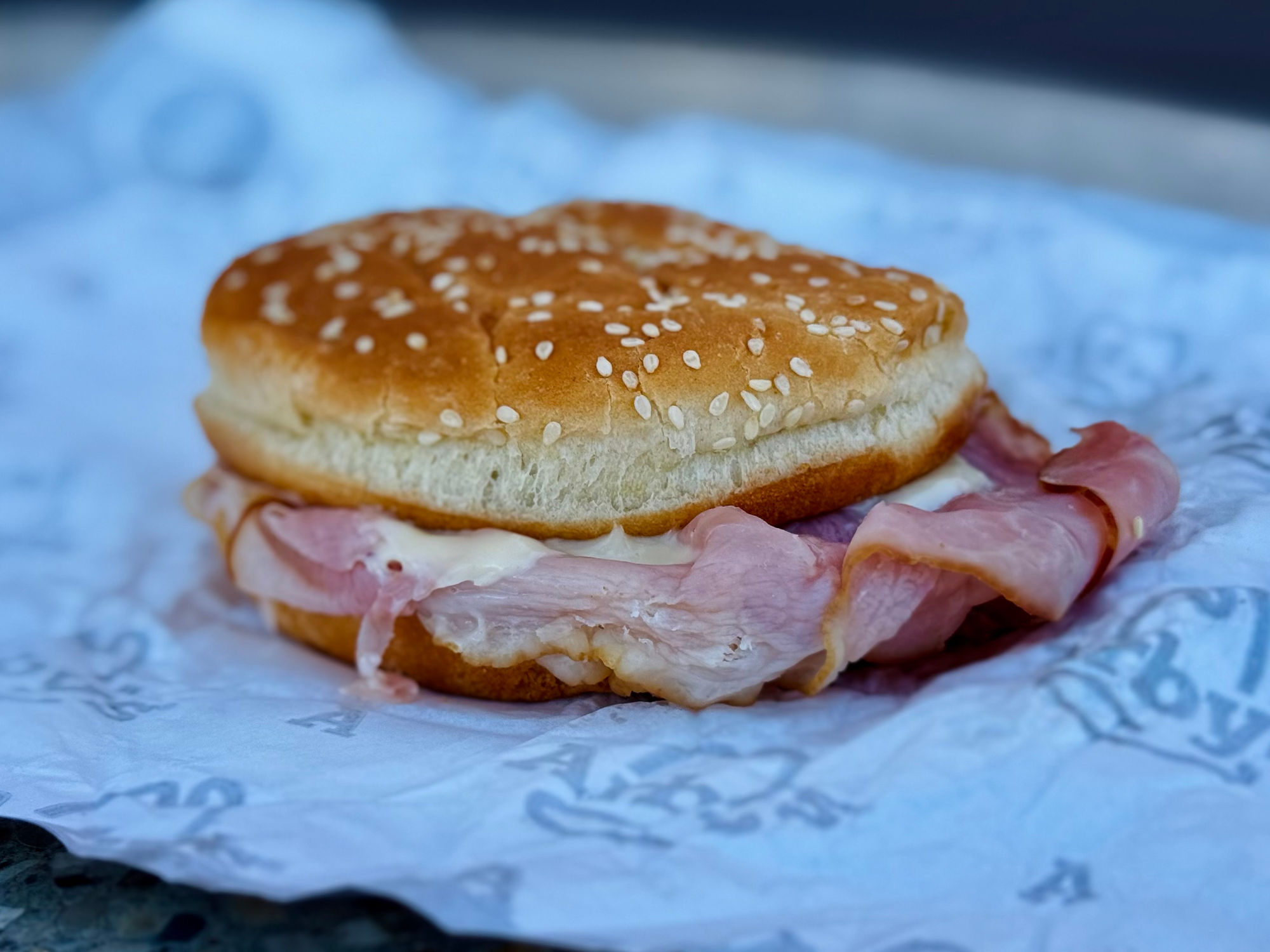
Ham & Swiss Melt
- Pit-Smoked Ham
- Swiss Cheese
- Sesame Seed Bun
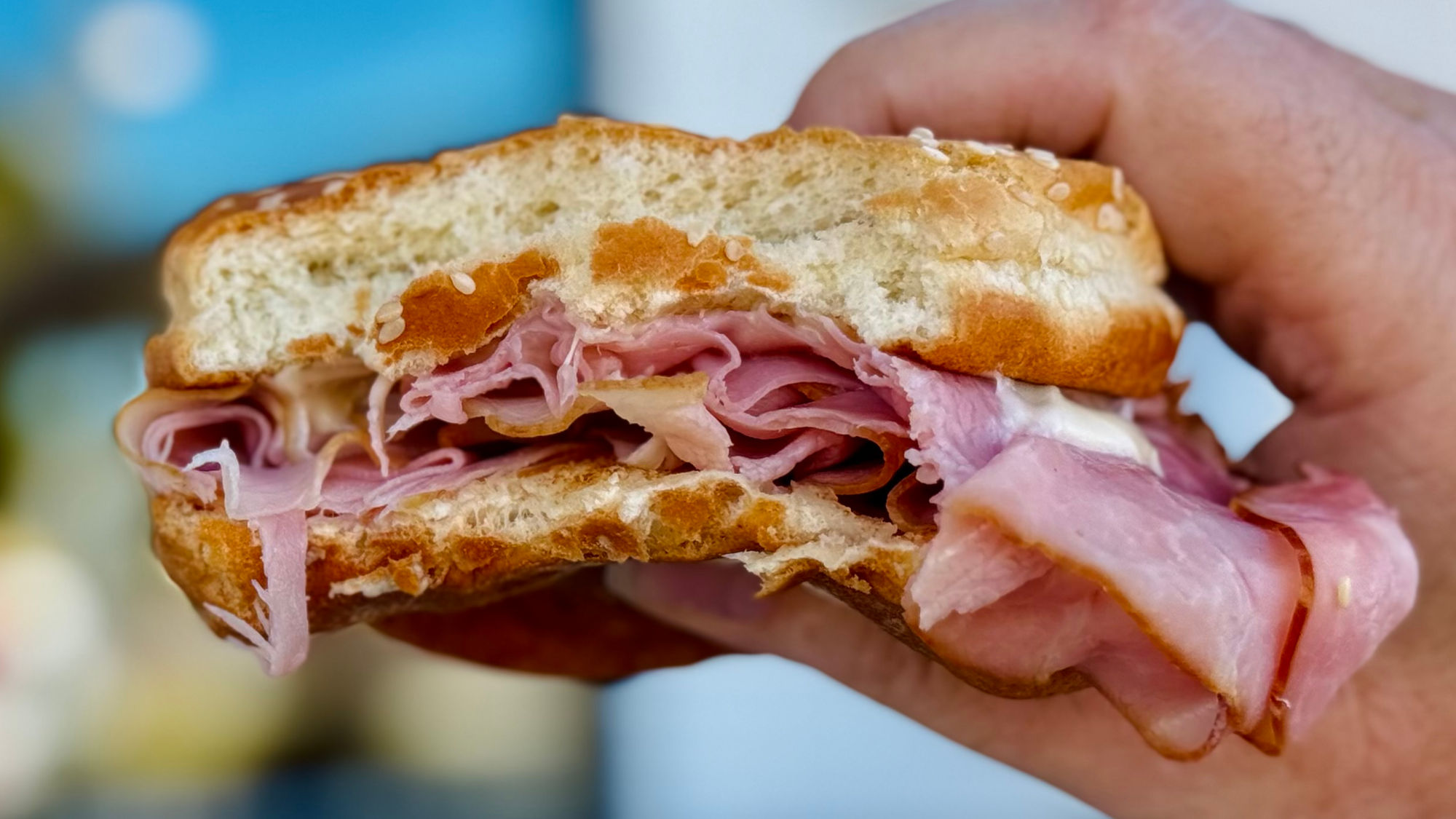
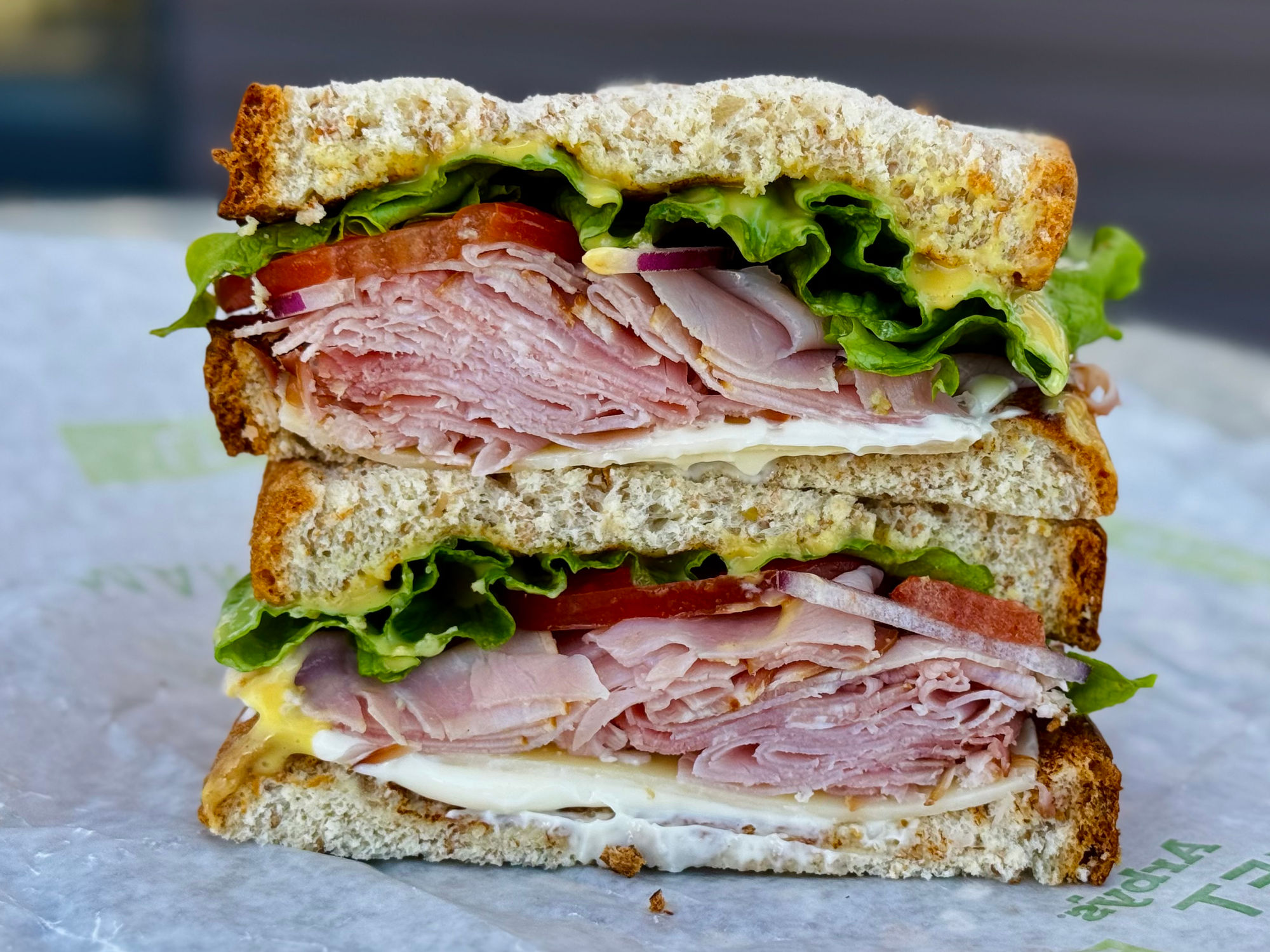
Ham & Swiss on Wheat
- Pit-Smoked Ham
- Mayonnaise
- Swiss Cheese
- Tomatoes
- Leaf Lettuce
- Red Onion
- Honey Wheat Bread
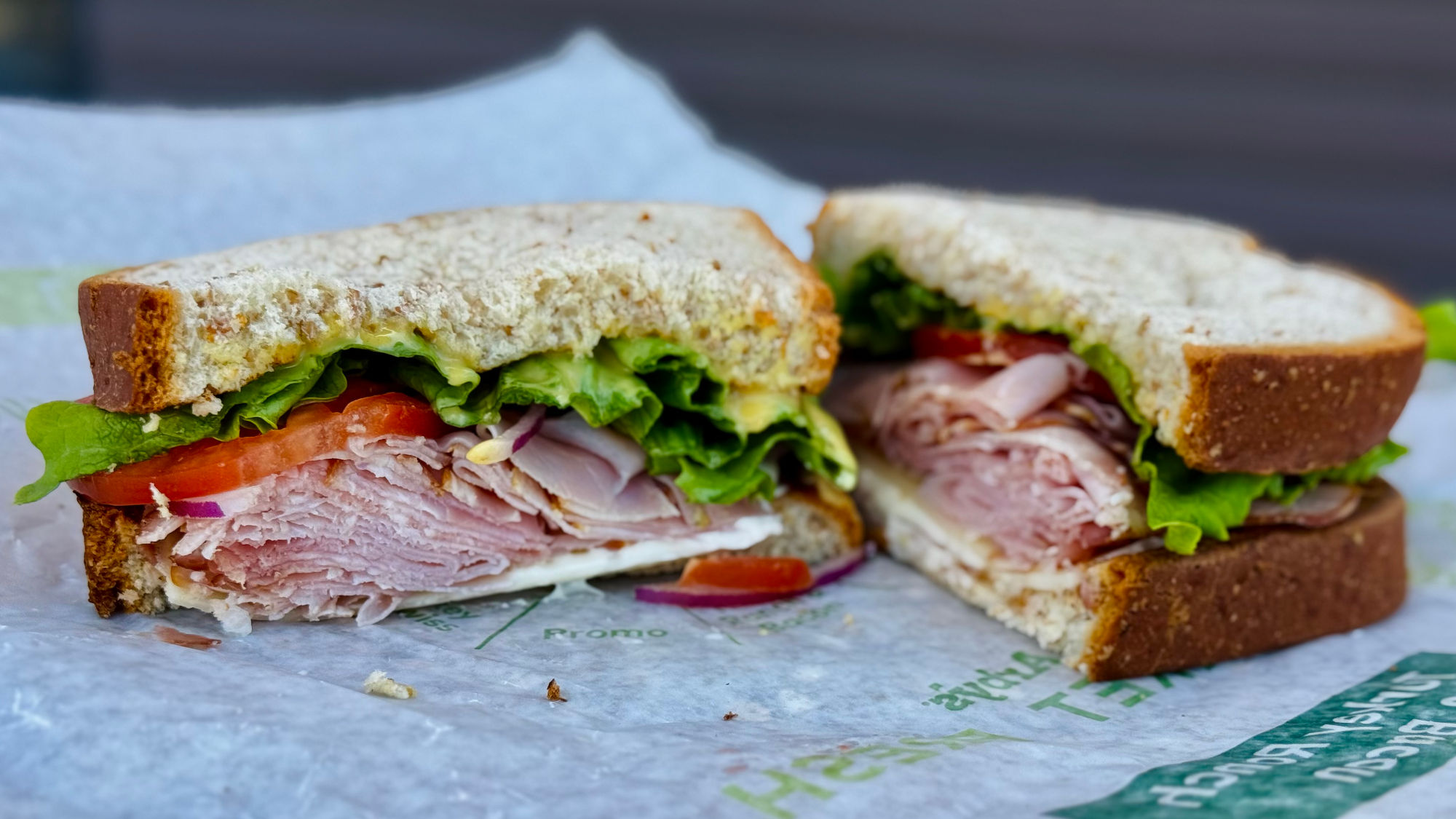
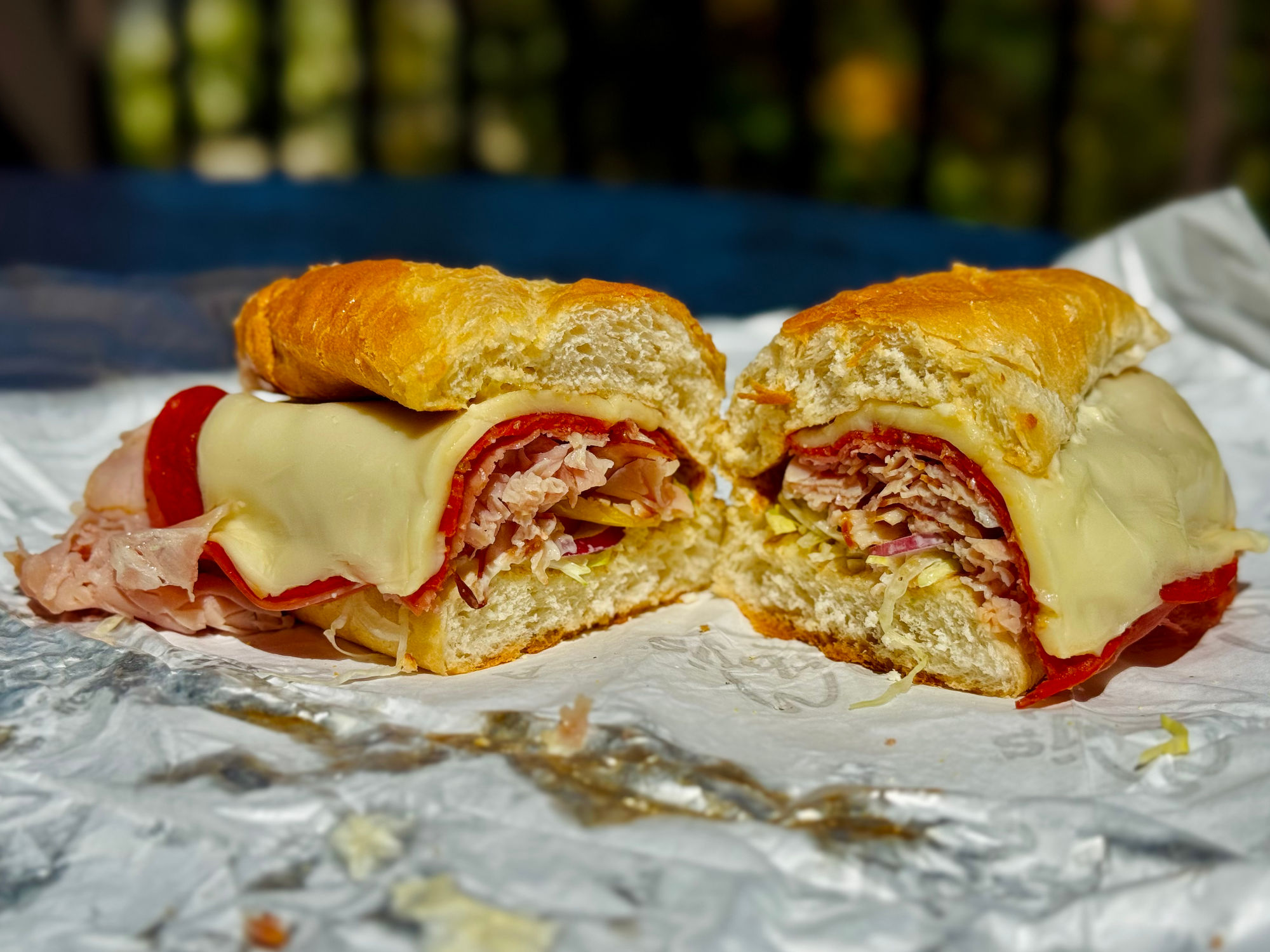
Loaded Italian
- Thinly Sliced Ham
- Thinly Sliced Salami
- Thinly Sliced Pepperoni
- Swiss Cheese
- Banana Peppers
- Lettuce
- Tomato
- Red Onion
- Garlic Aioli
- Toasted Sub Bun

Crispy Fish Sandwich
- Crispy Fillet
- Shredded Lettuce
- Tartar Sauce
- Sesame Bun


Fish 'n Cheddar Sandwich
- Crispy Fillet
- Cheddar Sauce
- Shredded Lettuce
- Tartar Sauce
- Sesame Bun
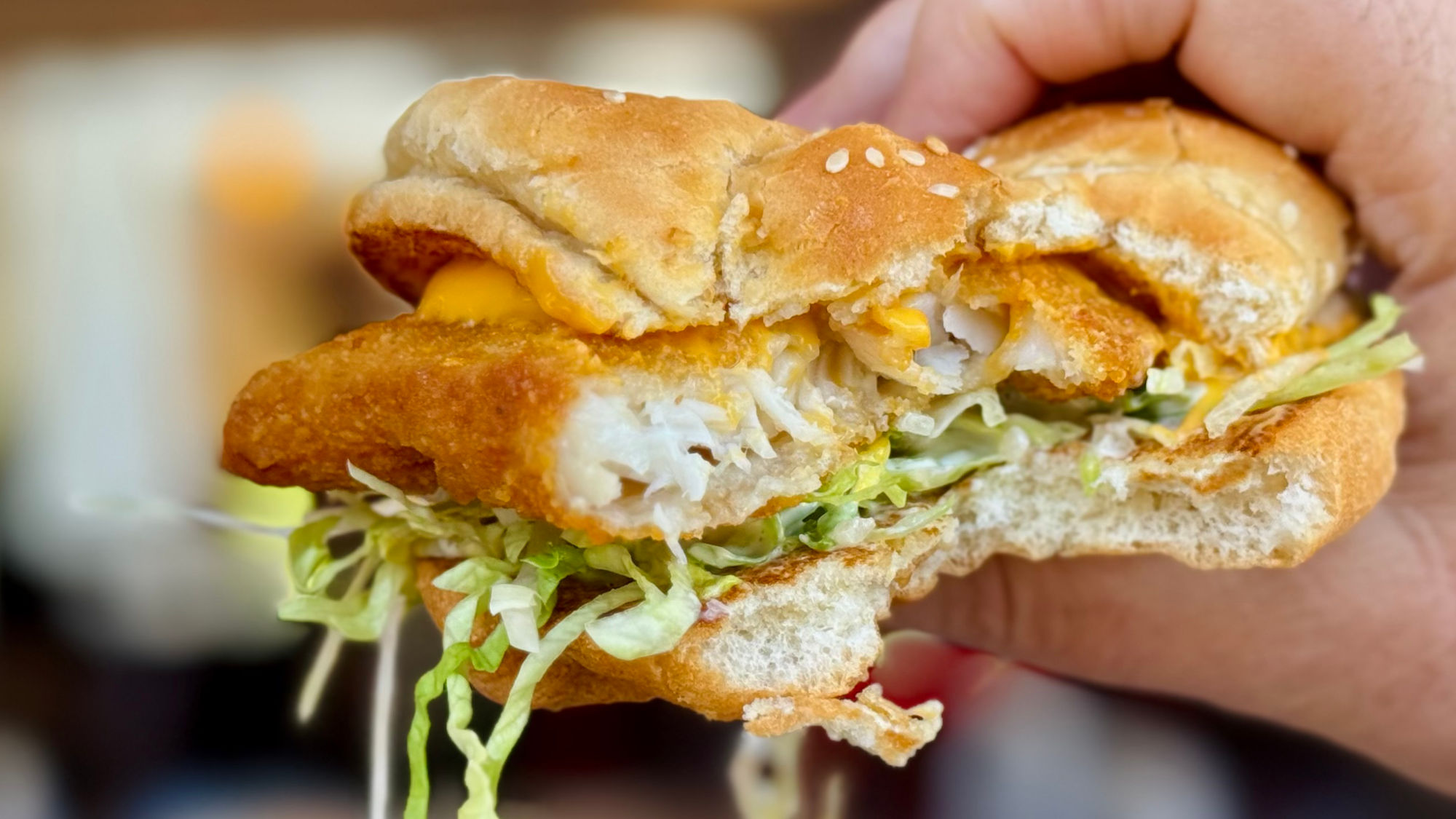
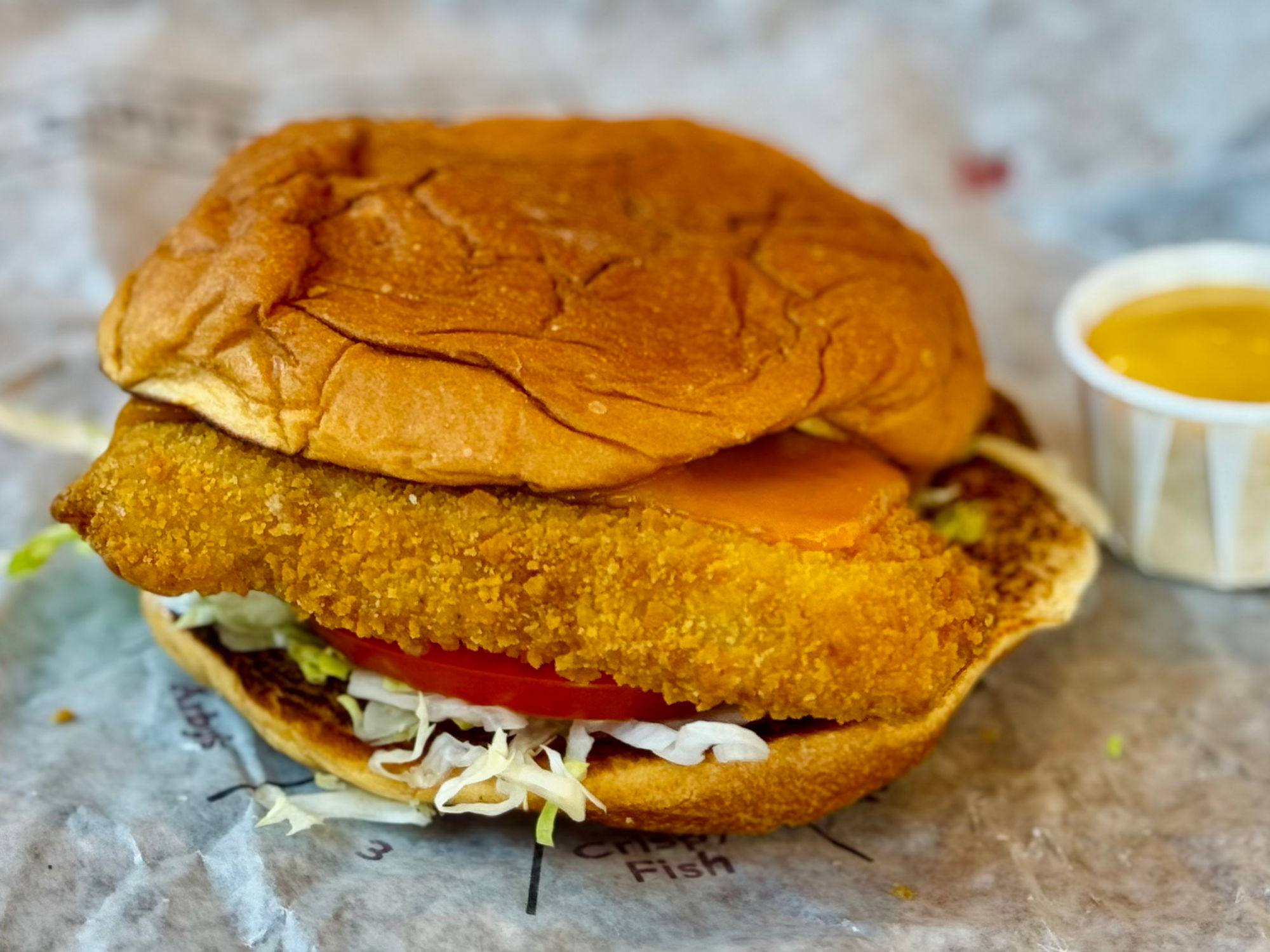
King’s Hawaiian Fish Deluxe Sandwich
- Crispy Fillet
- Cheddar Cheese
- Shredded Lettuce
- Tomato
- Tartar Sauce
- King's Hawaiian Bun
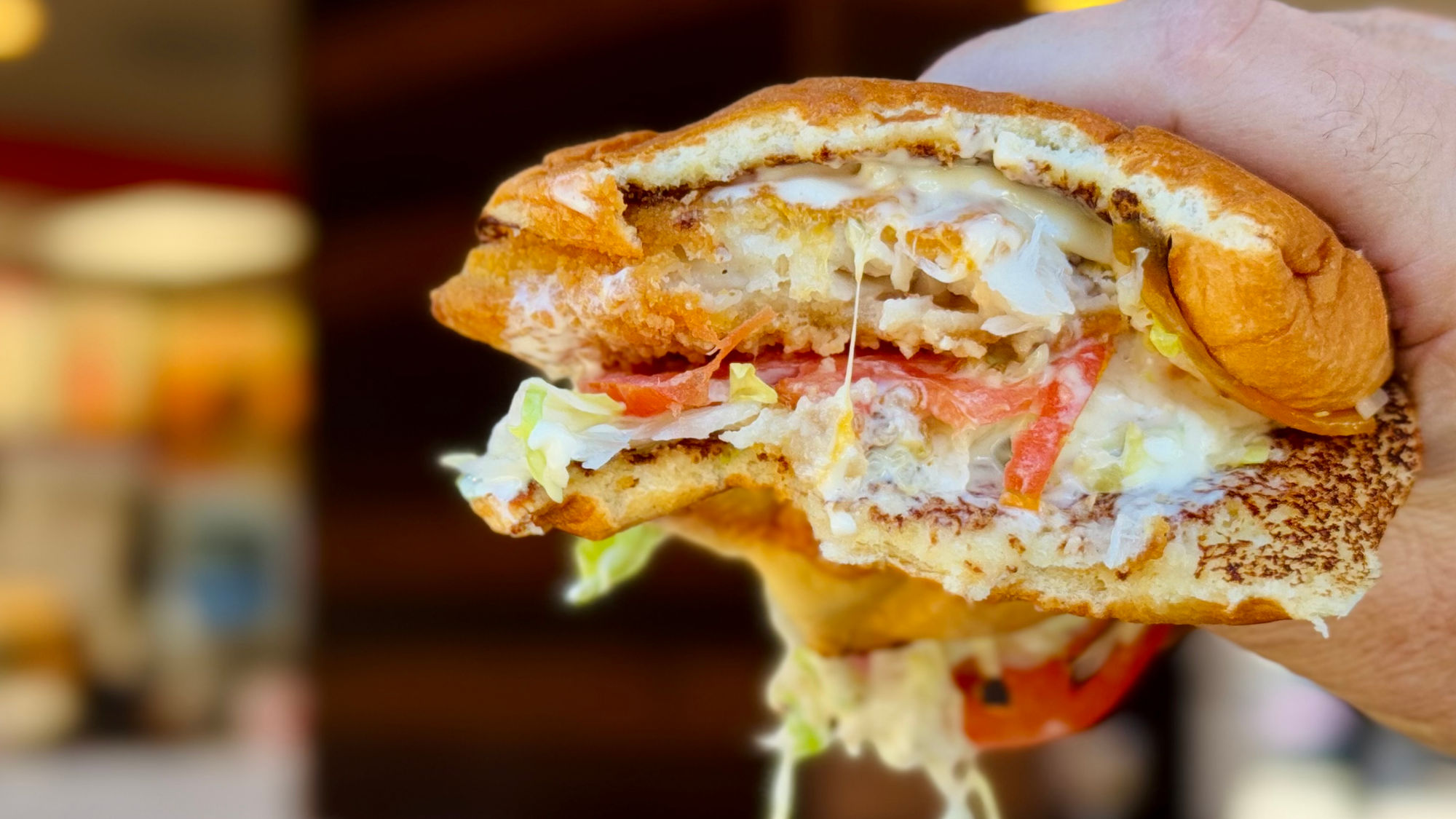
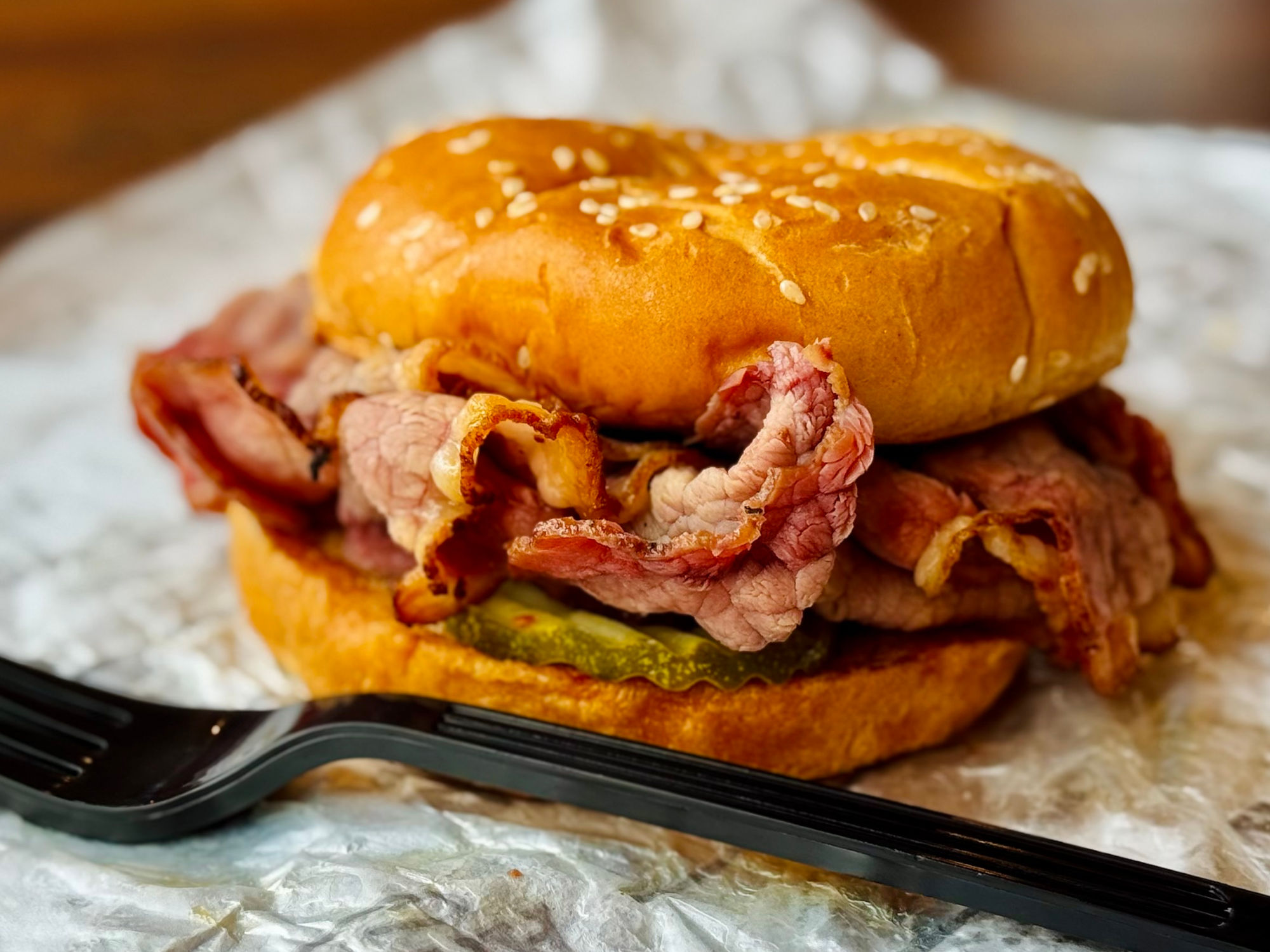
BBQ Brisket Sandwich
- 1/4 Pound
- 13-Hour Slow-Smoked Brisket
- Sweet Garlicky-Dill Pickles
- Toasted Sesame Seed Bun
- Cedric's BBQ Sauce
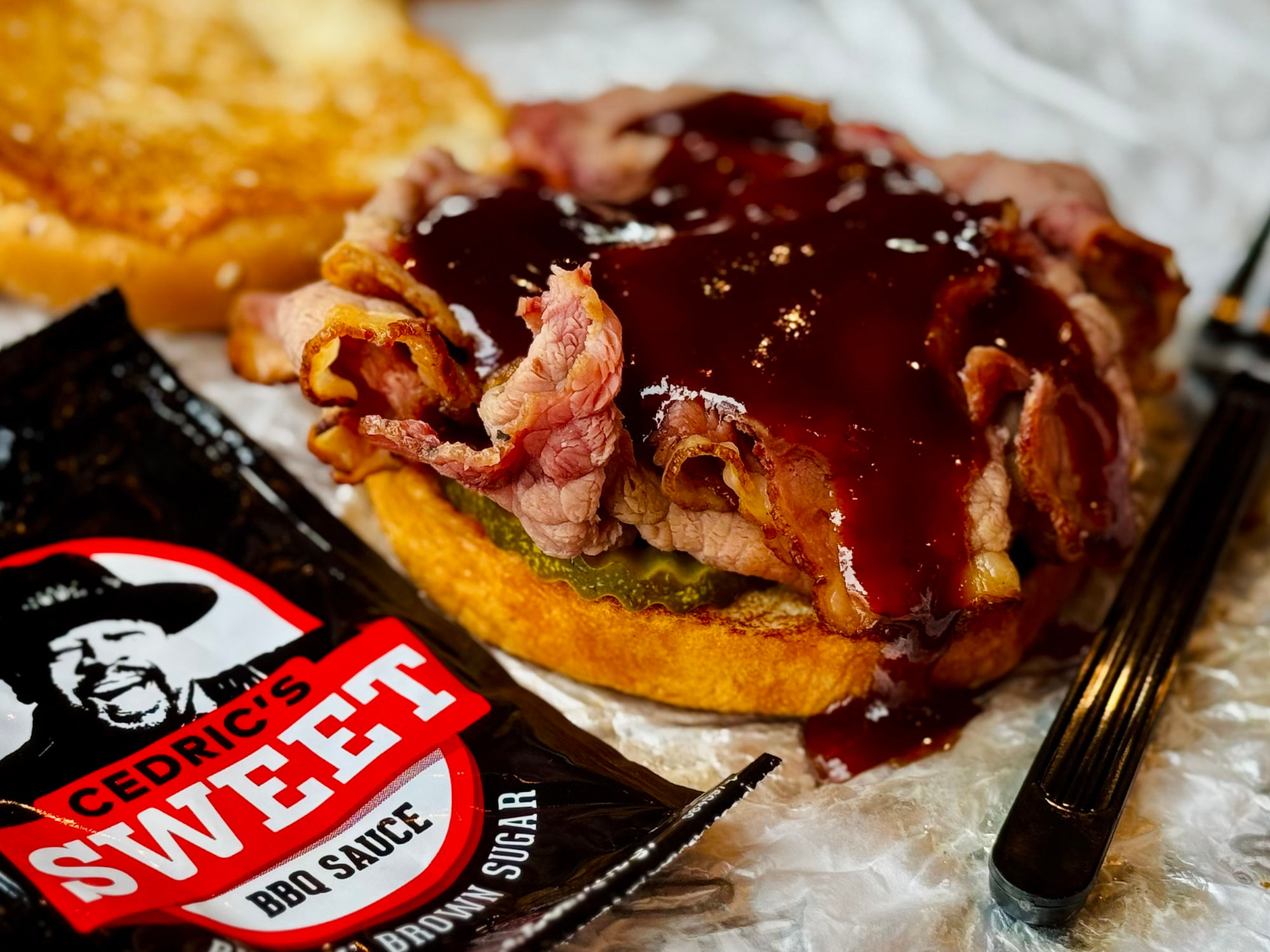
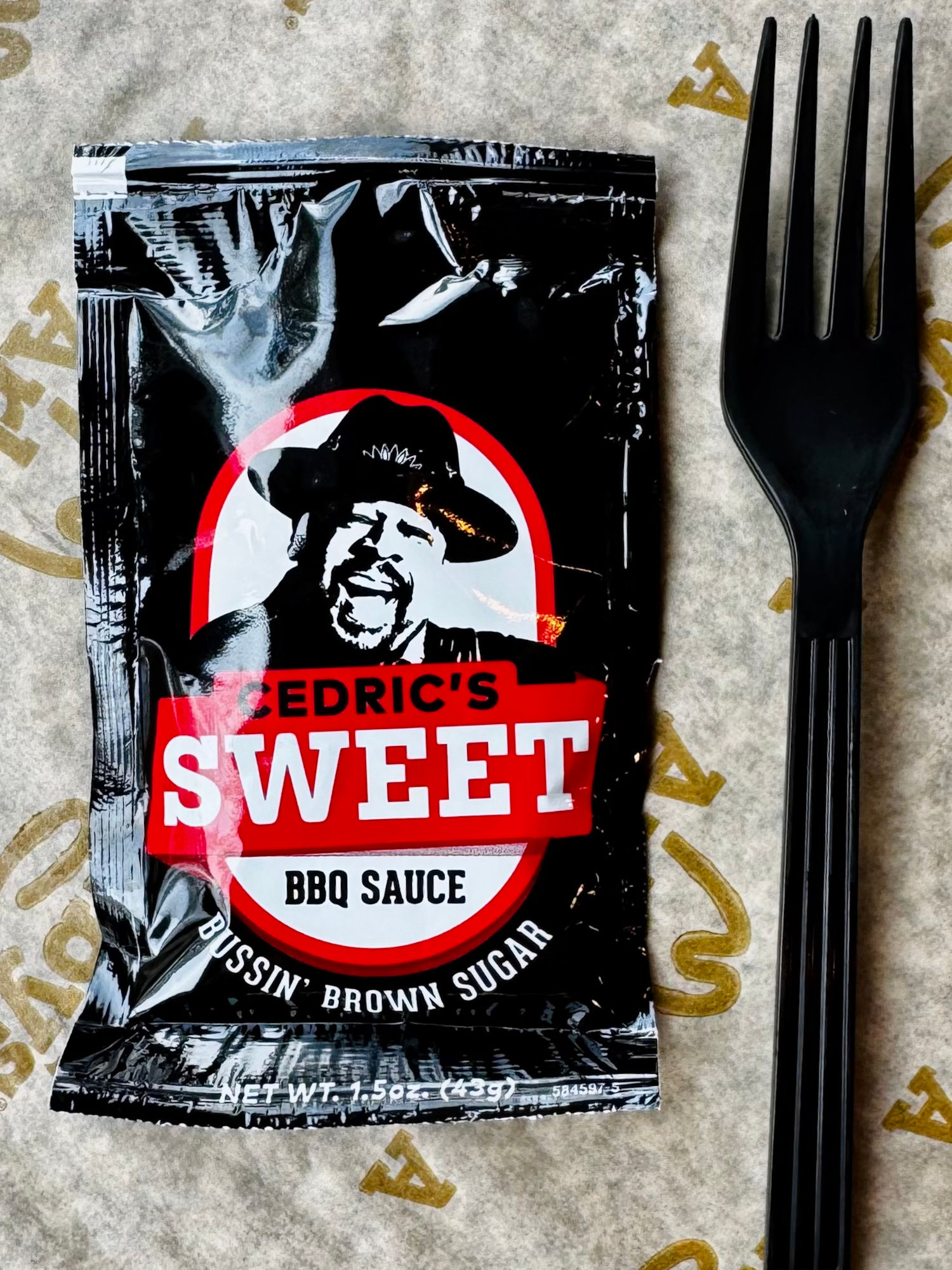
Sweet Bussin Brown Sugar BBQ Sauce

Spicy Chipotle Smoke BBQ Sauce
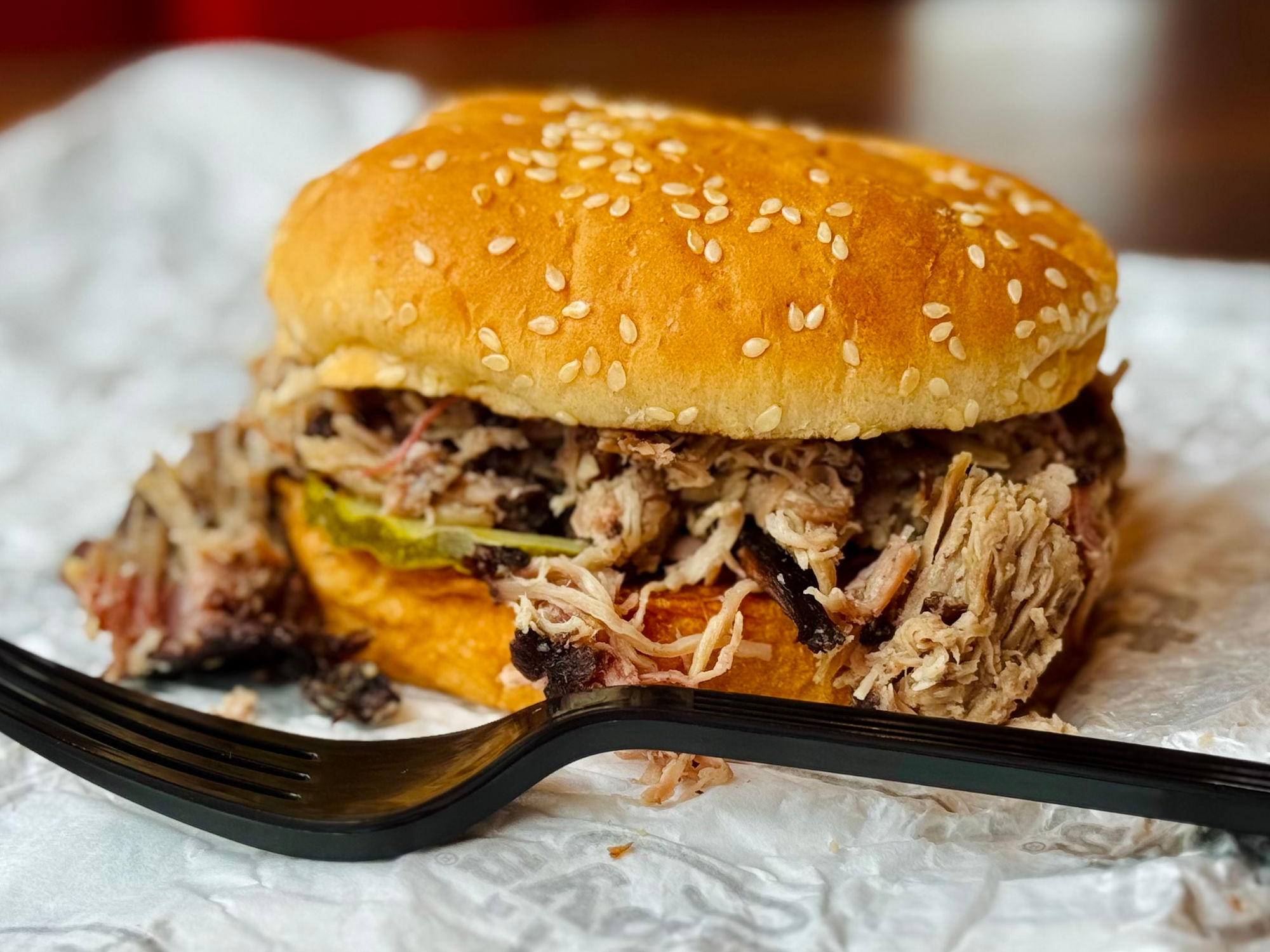
Pulled Pork Sandwich
- 1/4 Pound
- 6-Hour Hickory Wood Smoked Pulled Pork
- Sweet Garlicky-Dill Pickles
- Toasted Sesame Seed Bun
- Anthony's BBQ Sauce
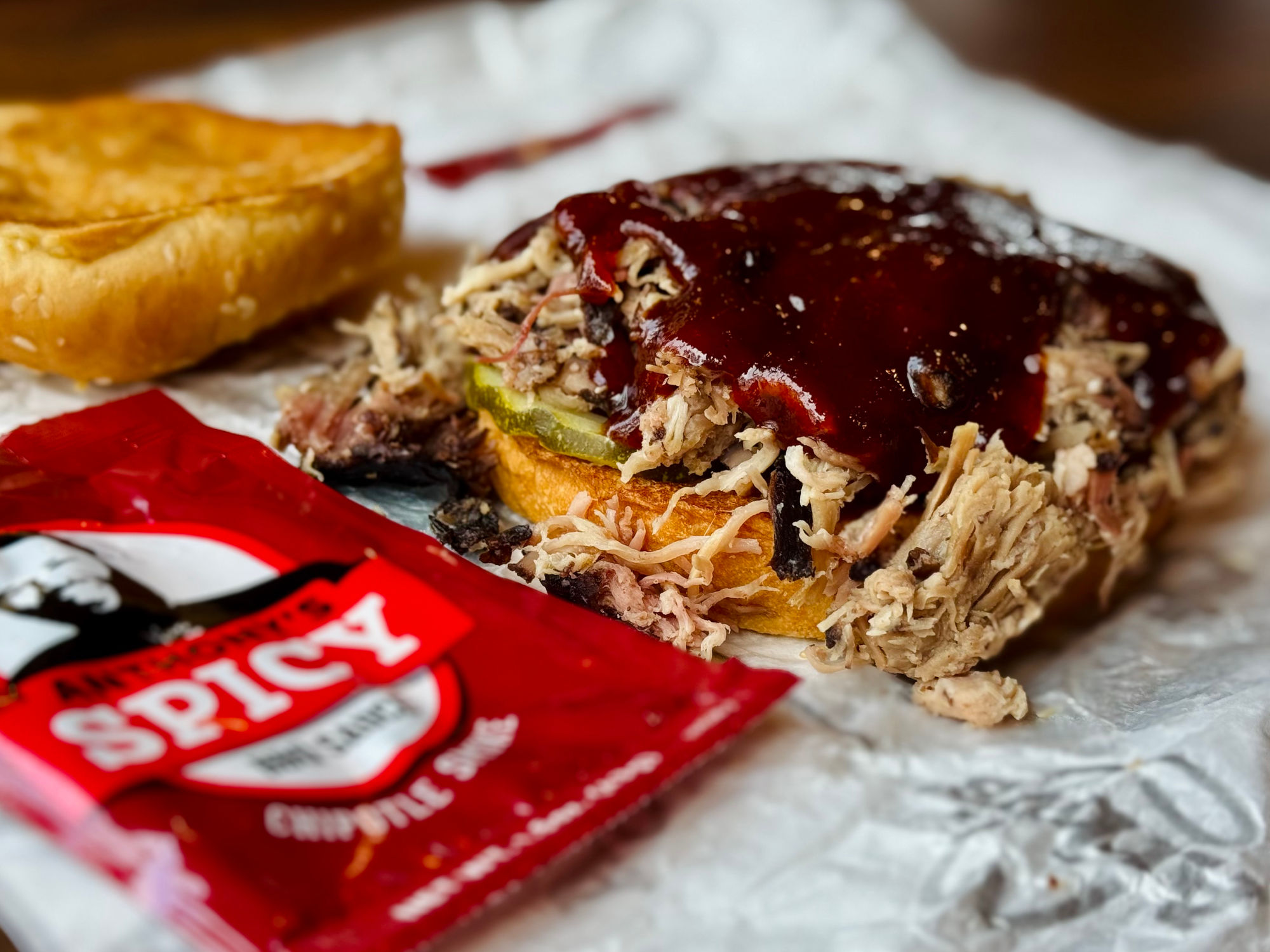
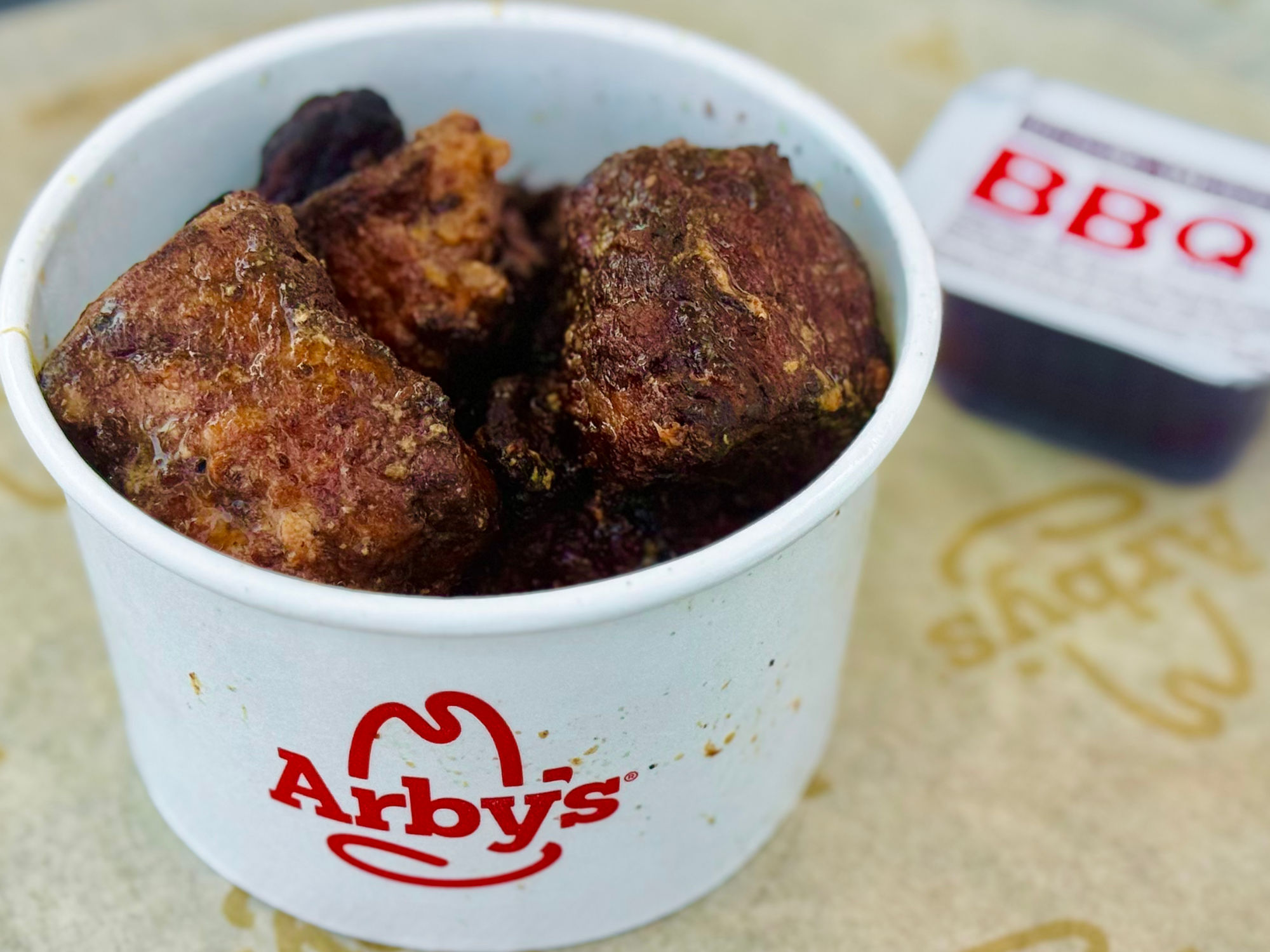
Steak Nuggets 9pc
- Juicy, bite-sized morsels of Smoked Steak
- Hickory BBQ Dipping Sauce
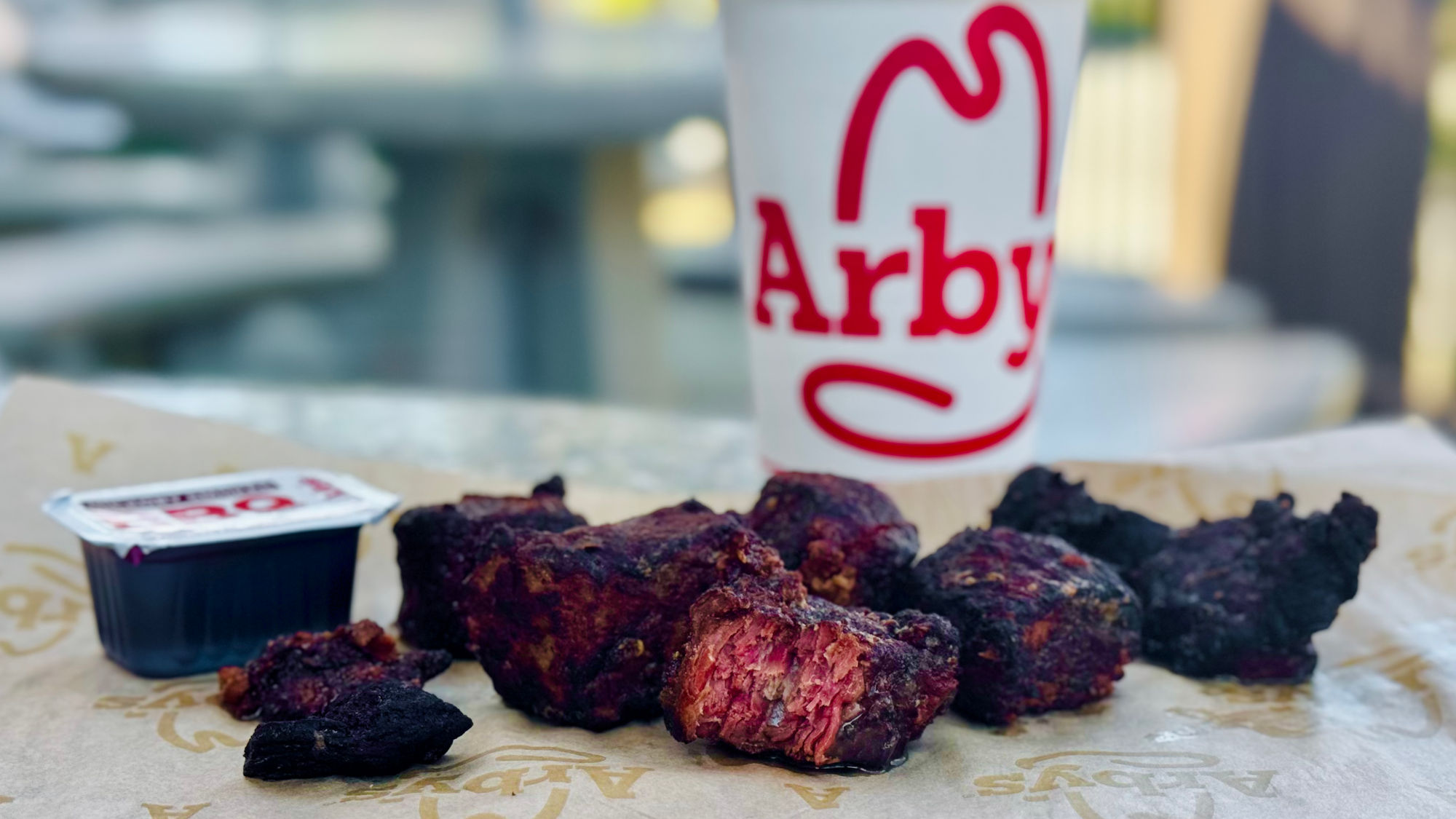
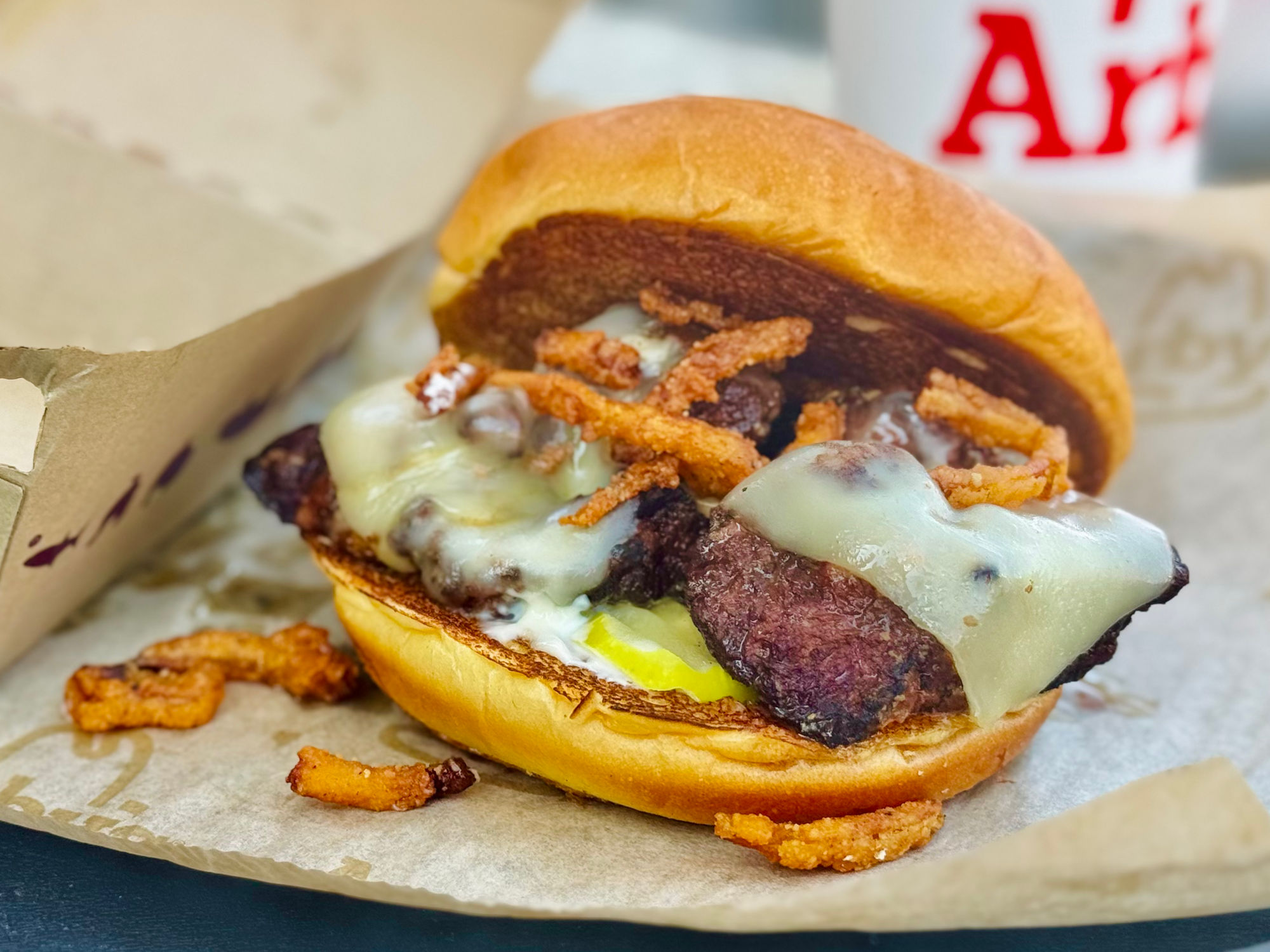
Steak Nugget Sandwich
- Juicy Smoked Steak Nuggets
- Melted Havarti Cheese
- Crispy Onion Strings
- Tangy Pickles
- Mayo
- Toasted Brioche Bun
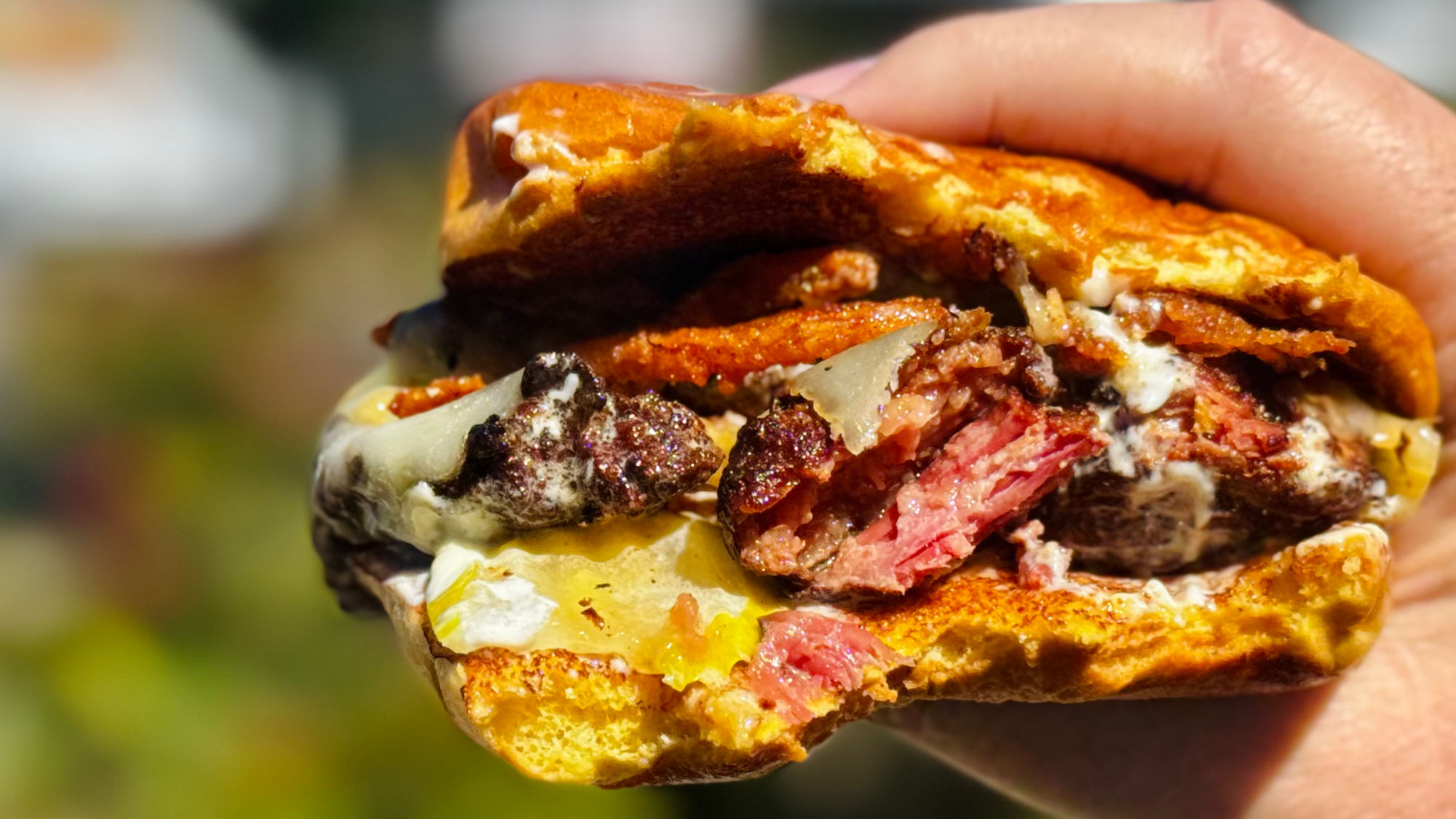
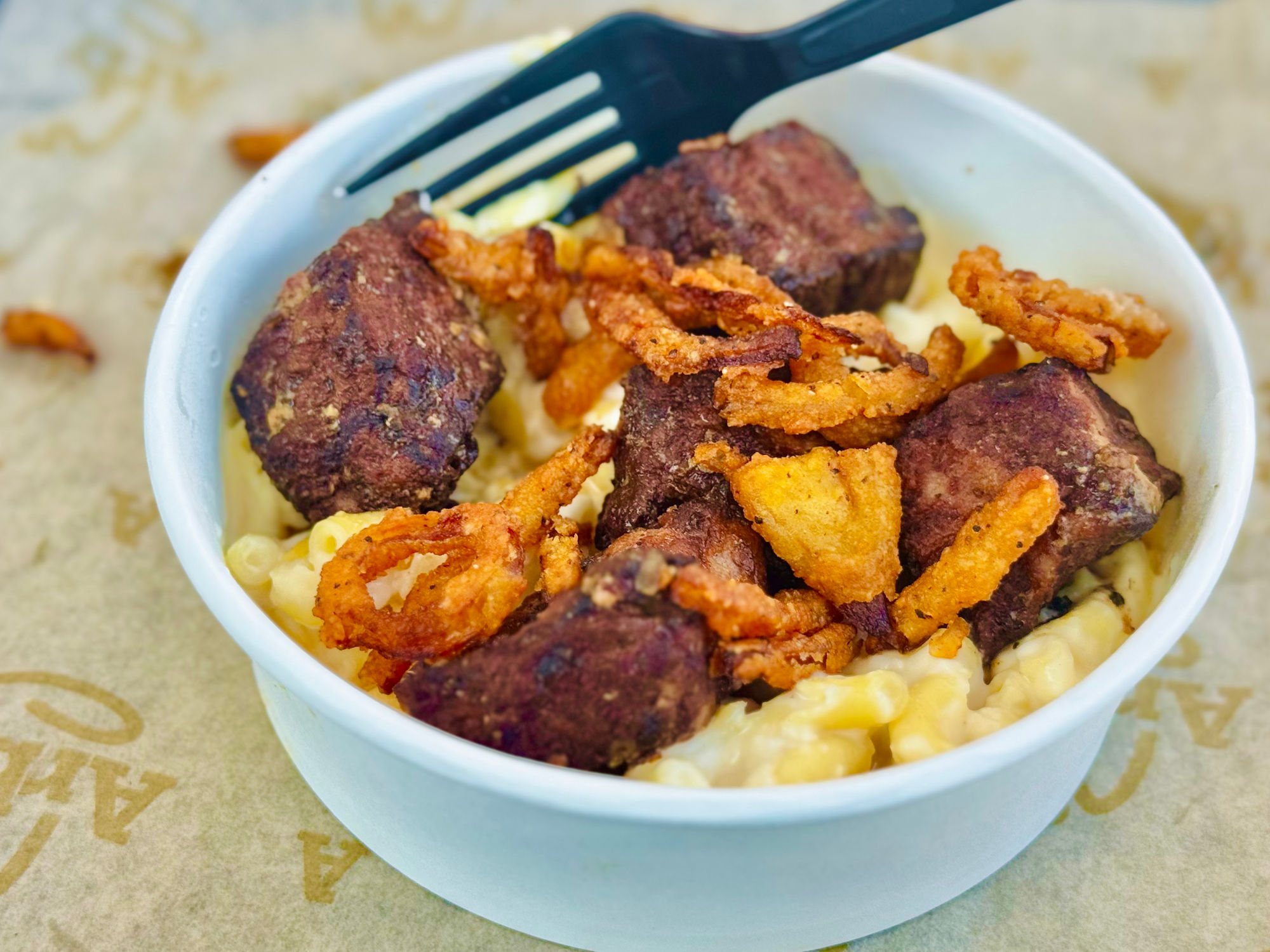
Steak Nugget Bowl
- Juicy Smoked Steak Nuggets
- Creamy White Cheddar Mac 'N Cheese
- Crispy Onion Strings
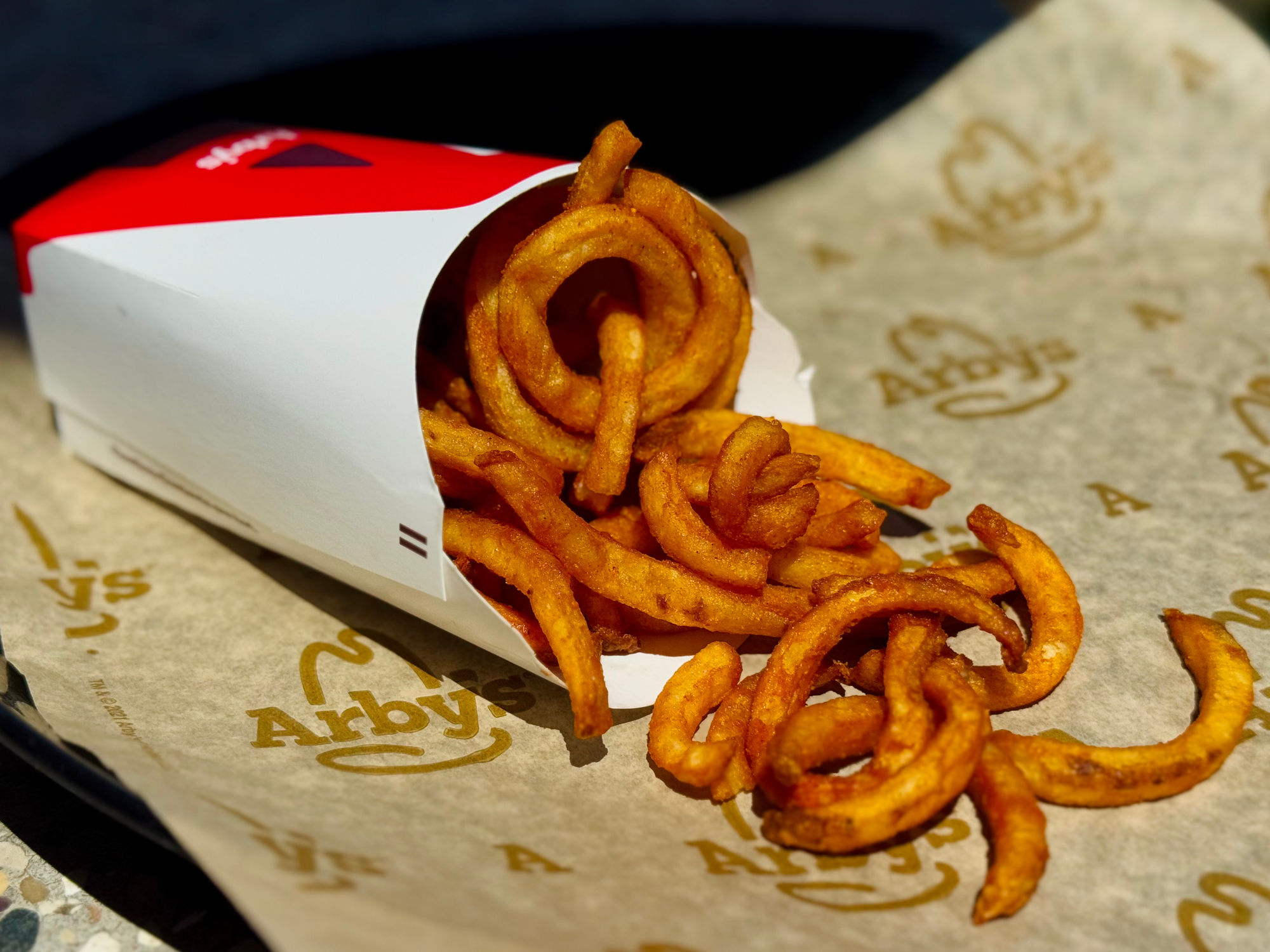
Curly Fries
- Potatoes Sliced Up Curly
- fried to Perfection
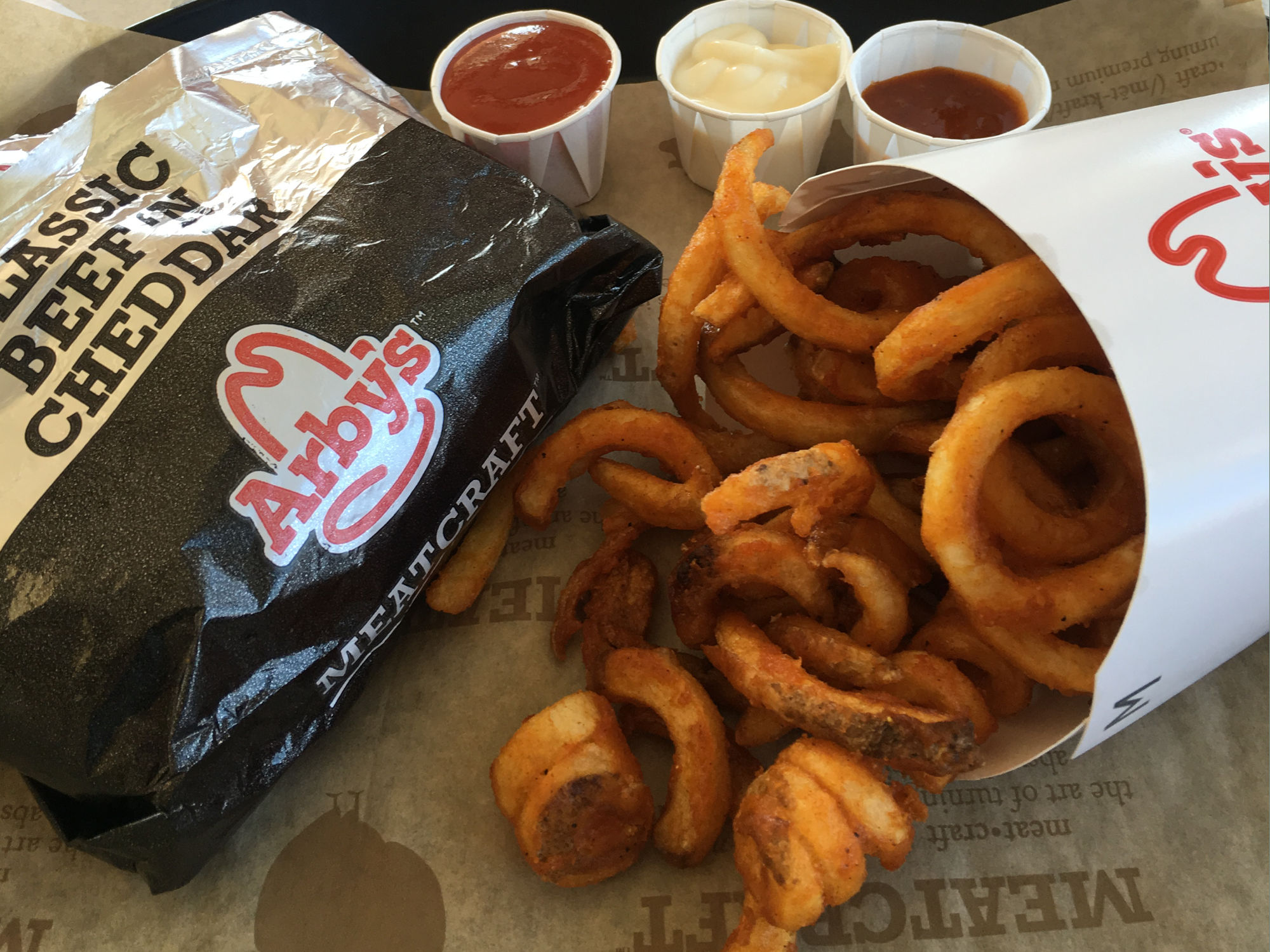
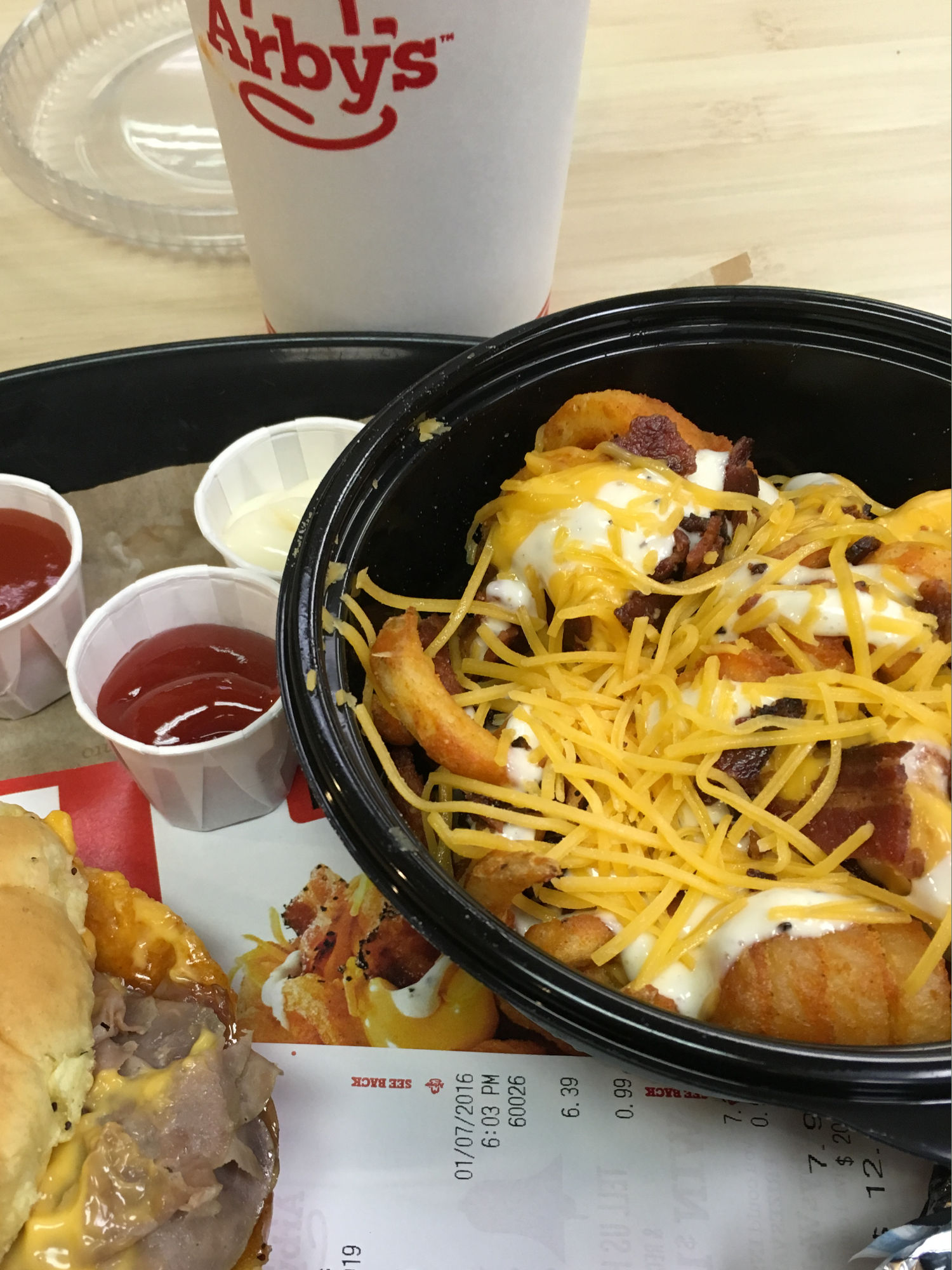
Loaded Curly Fries
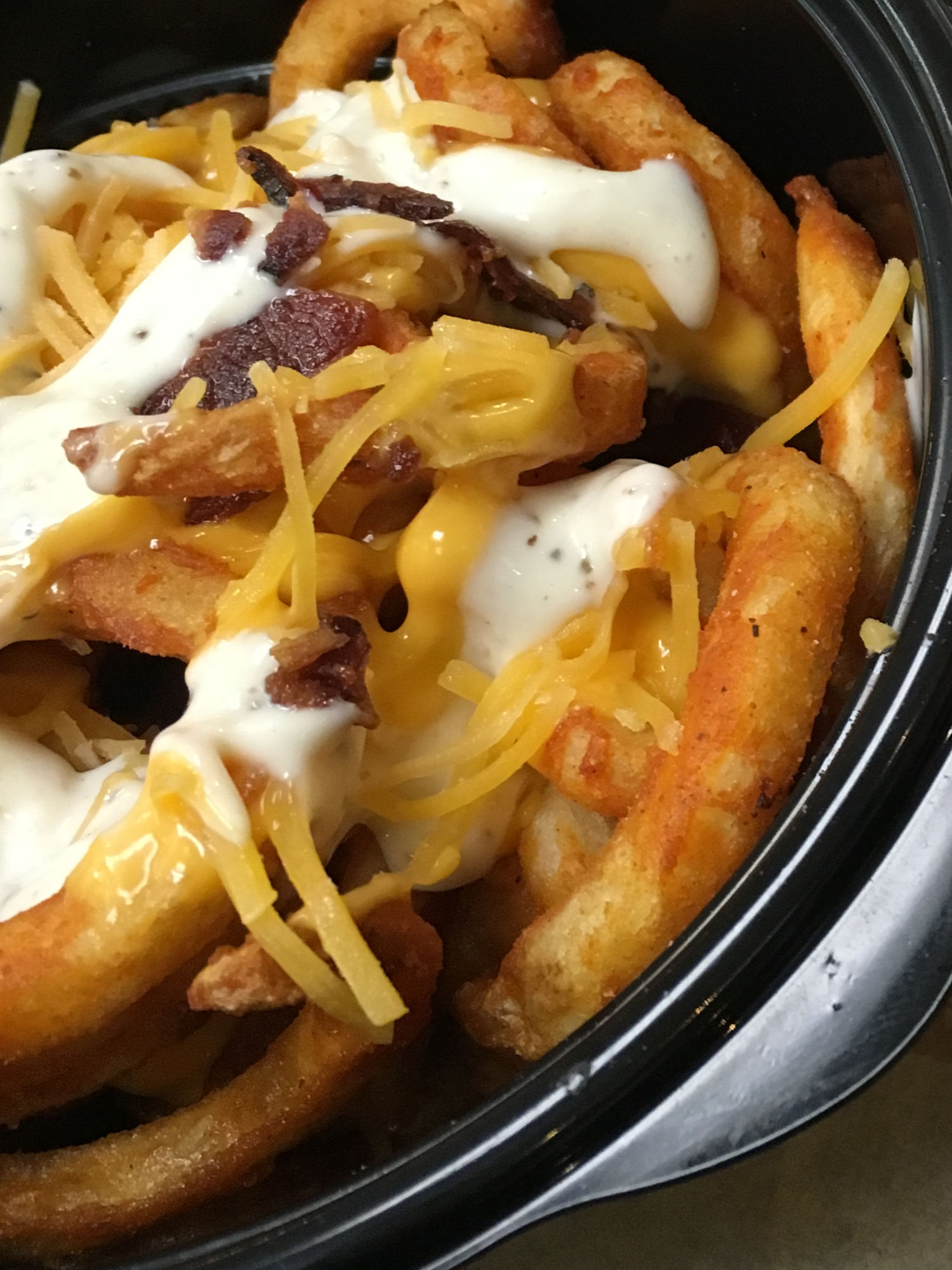
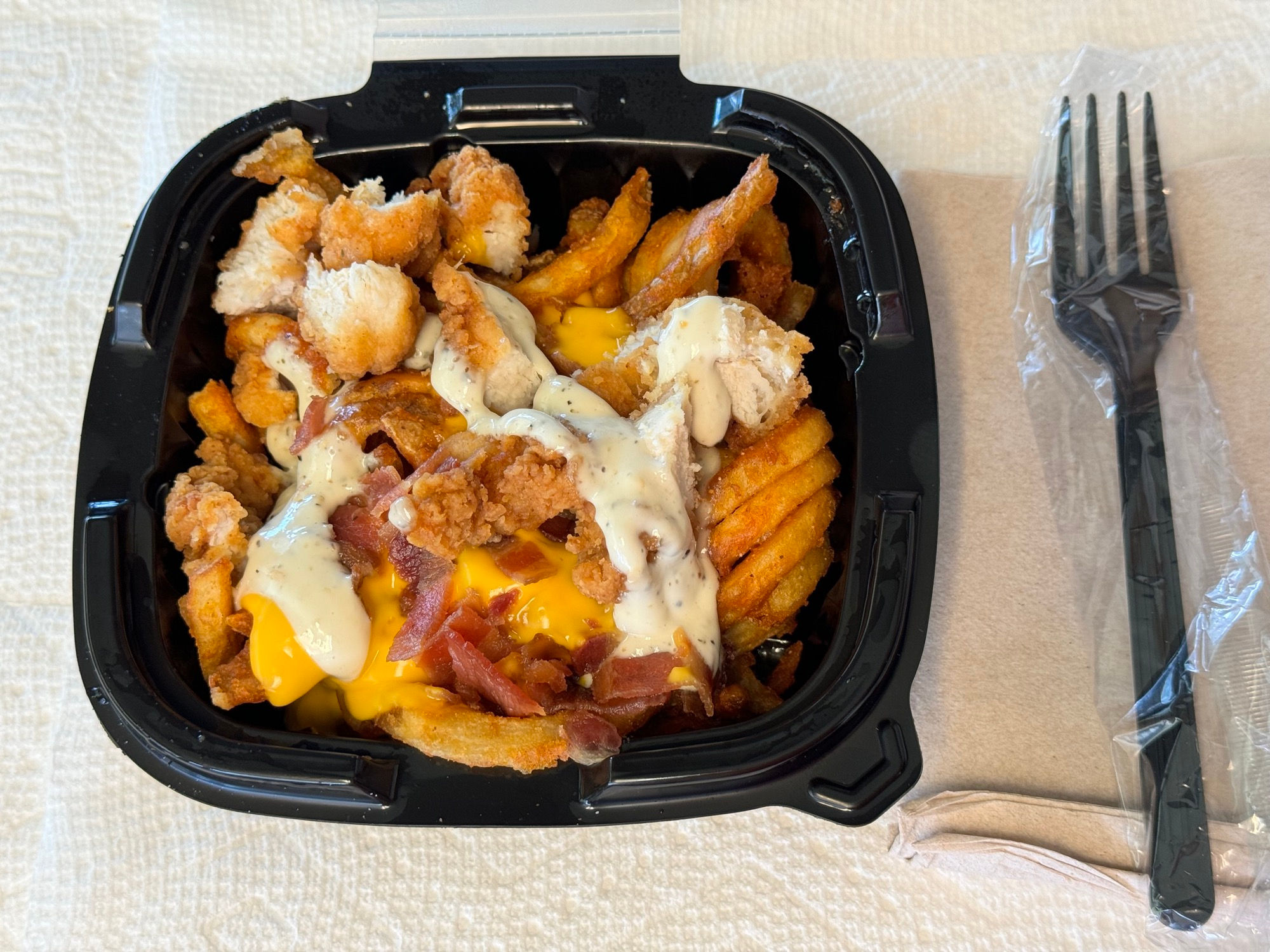
Chicken Bacon Ranch Loaded Curly Fries
- Curly Fries
- Chicken Nuggets
- Bacon
- Cheddar Cheese Sauce
- Parmesan Peppercorn Ranch
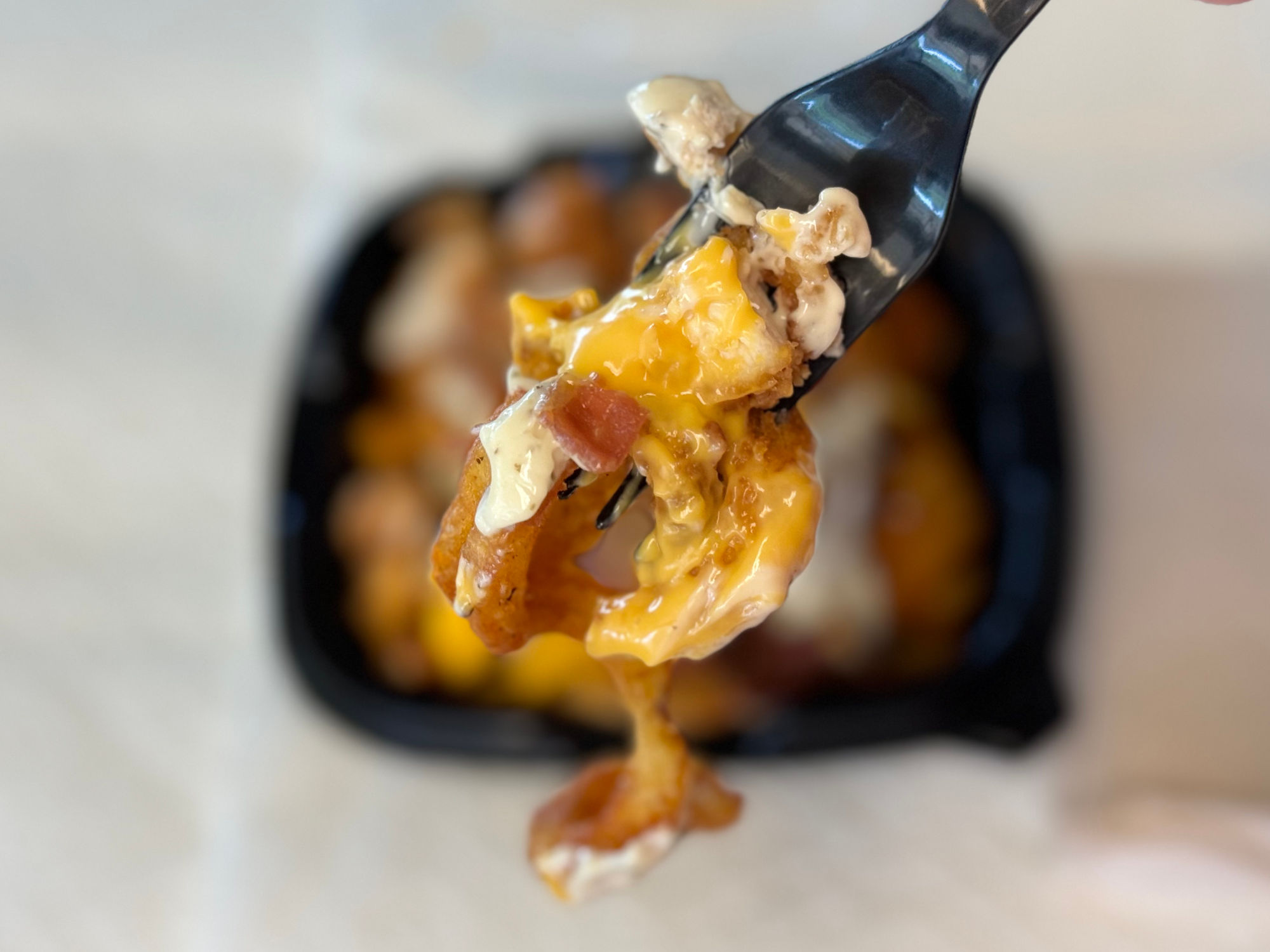

Crinkle Fries
- Accordion-Style Grooves For Maximum Crispiness
- Lightly Seasoned with Fine Kosher Salt
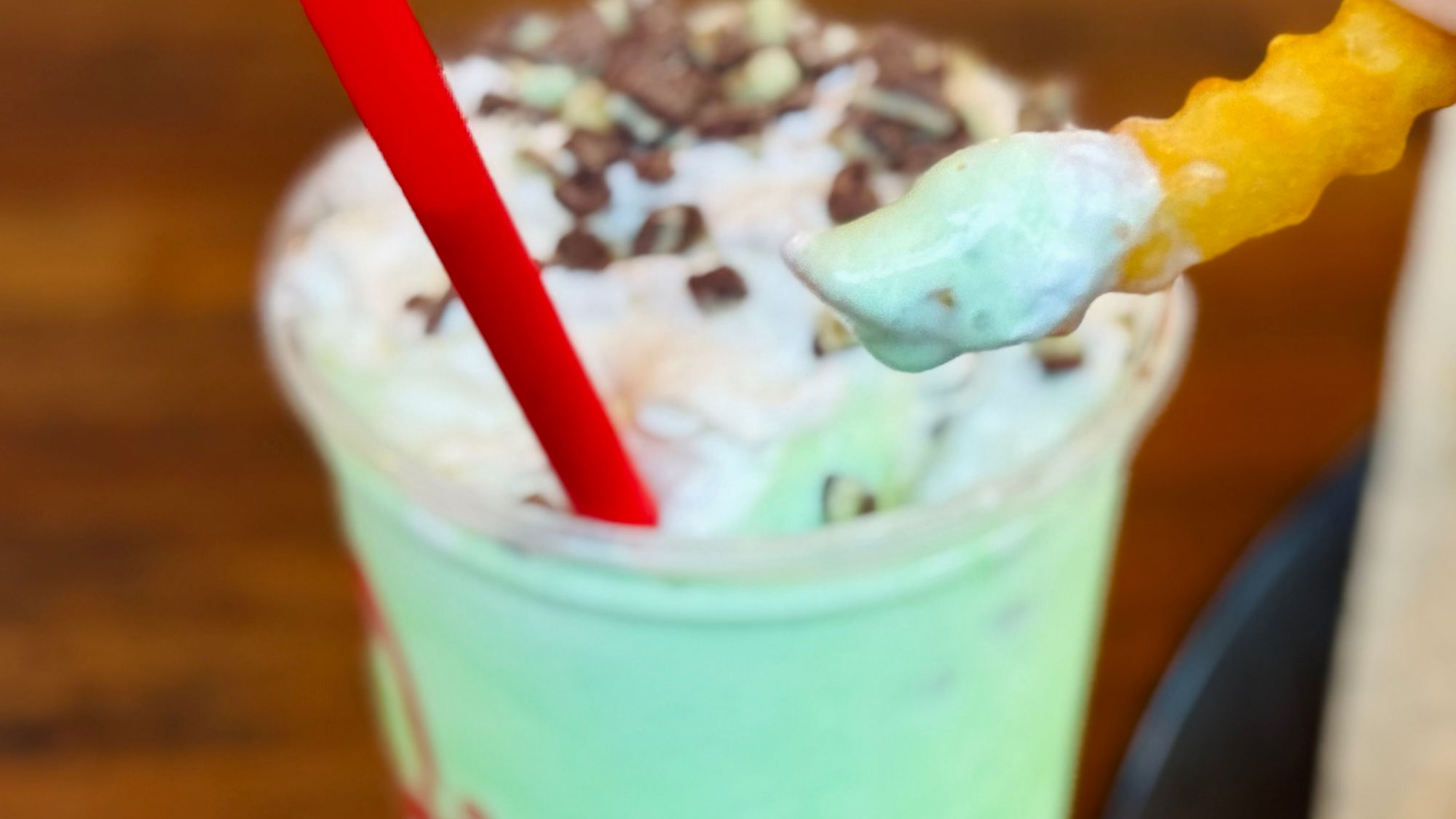
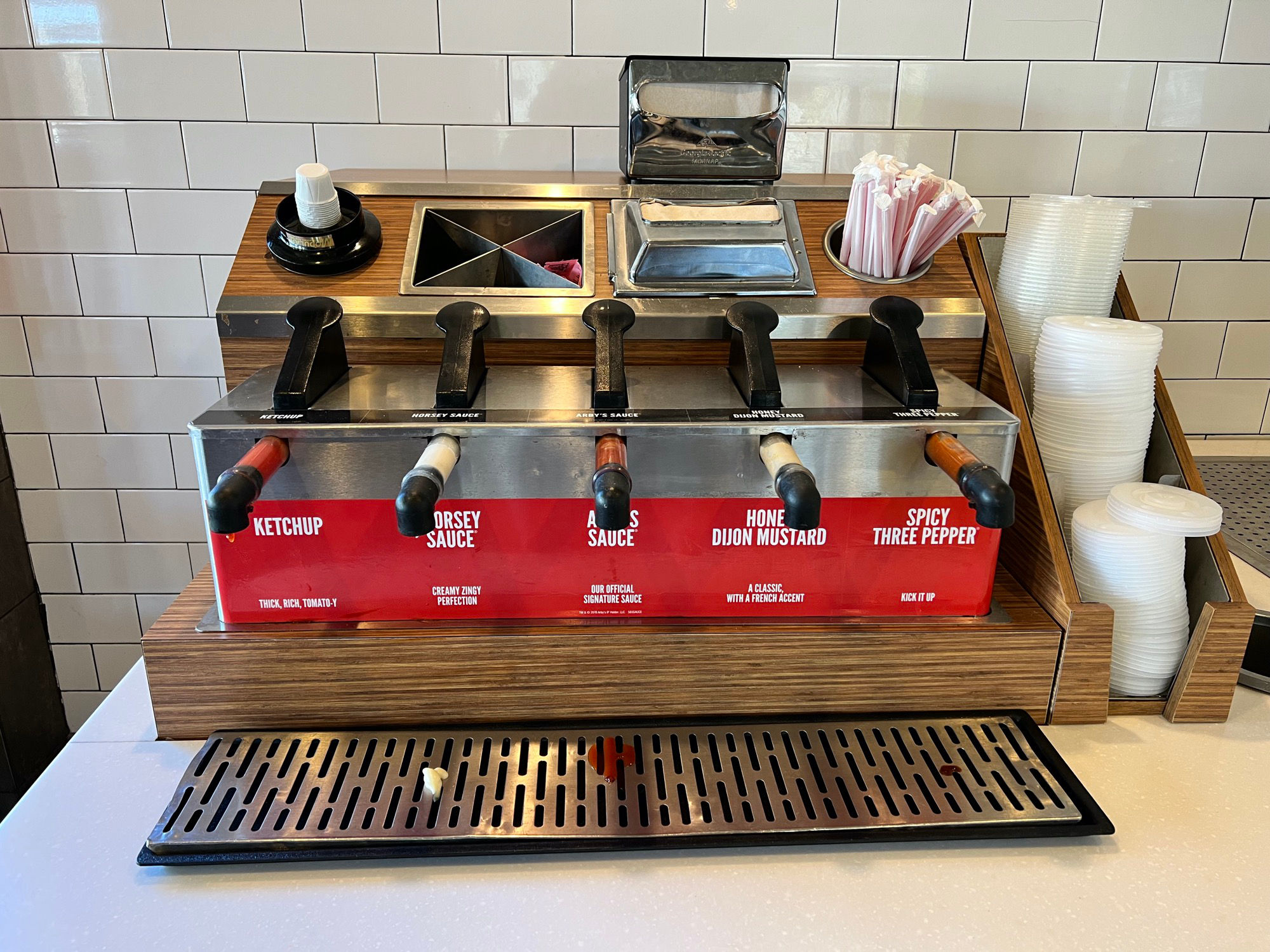
Sauces
- Ketchup Thick, Rich, Tomato-y
- Horsey Sauce Creamy Zingy Perfection
- Arby's Sauce The Official Signature Sauce
- Honey Mustard A Classic with a French Accent
- Spicy Three Pepper Kick it up
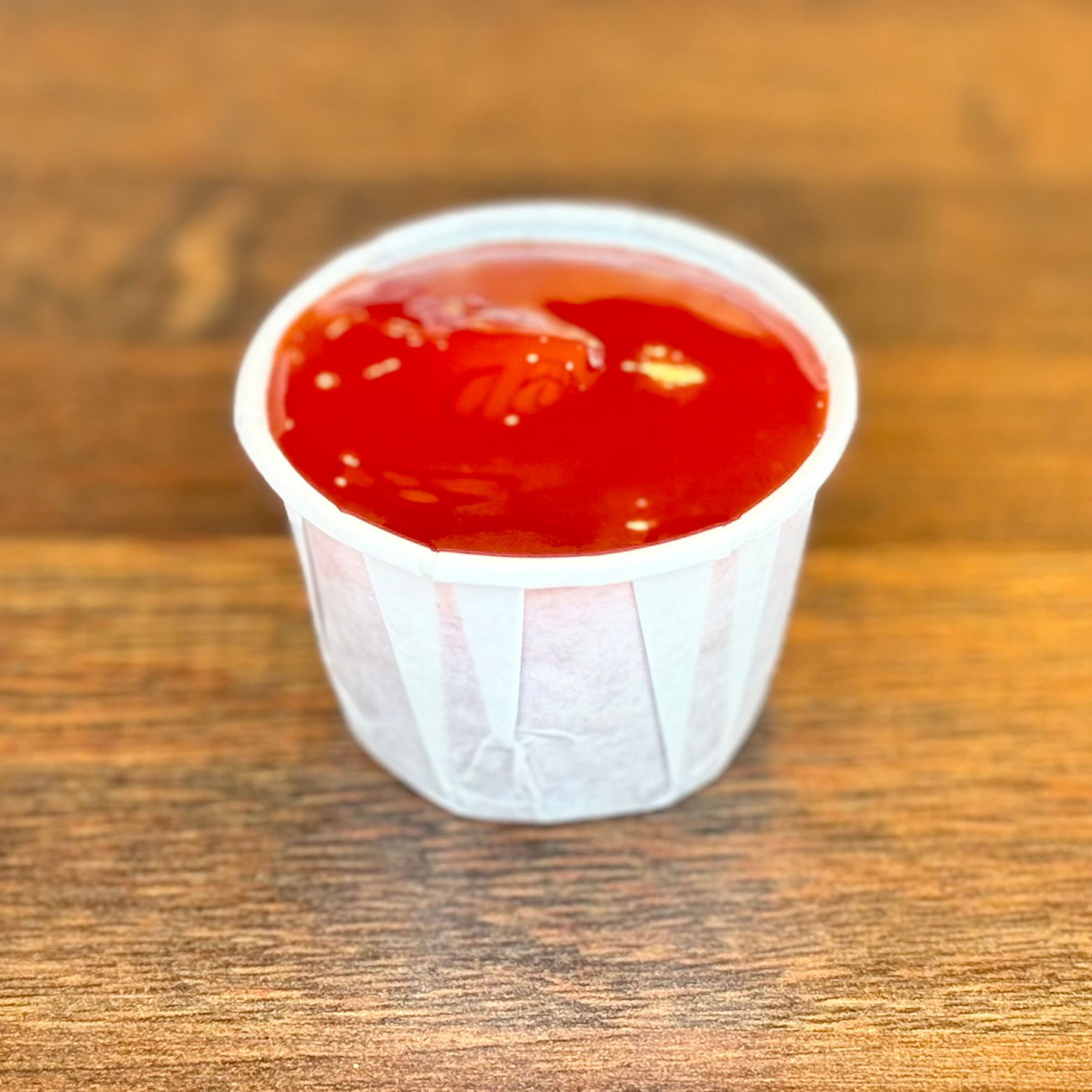
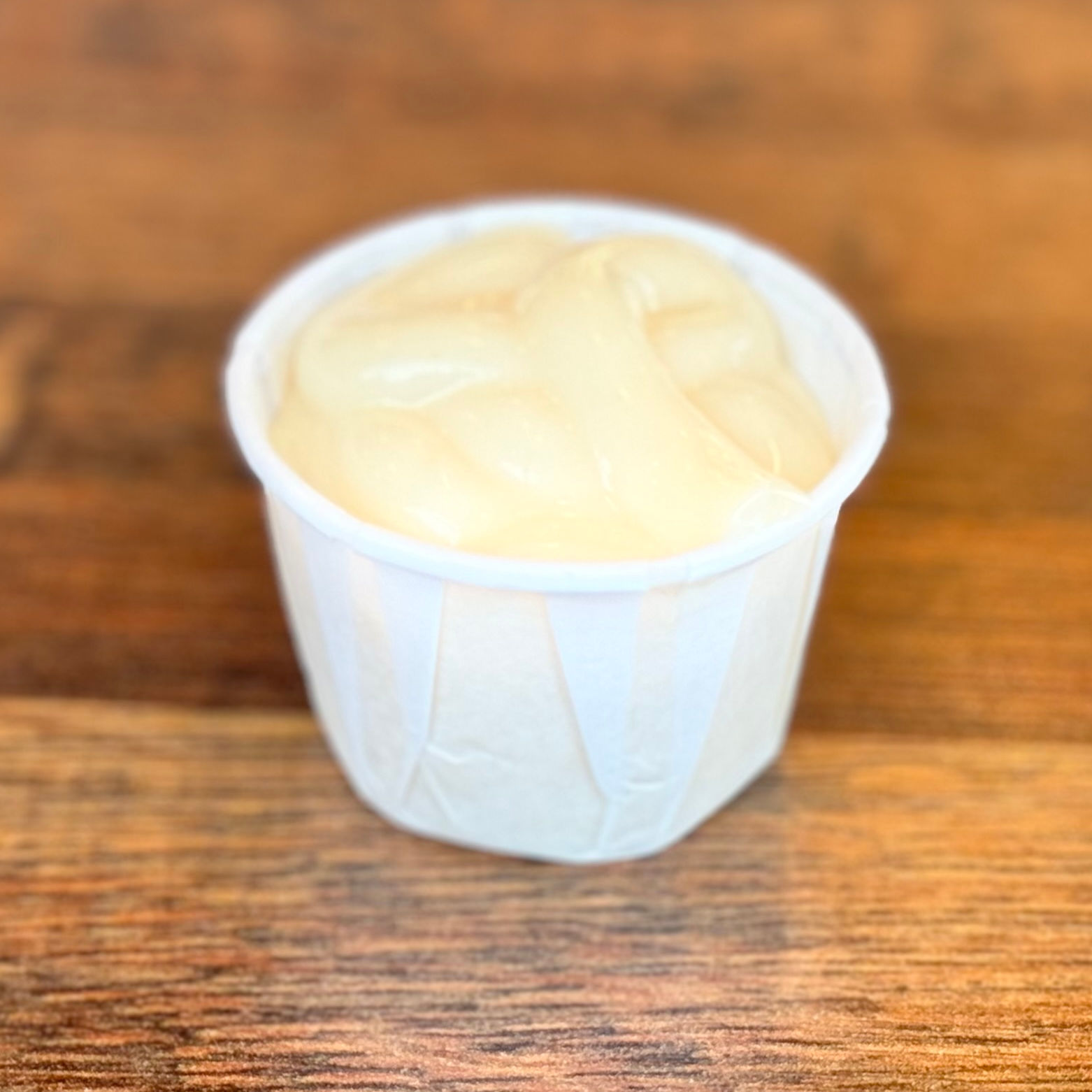
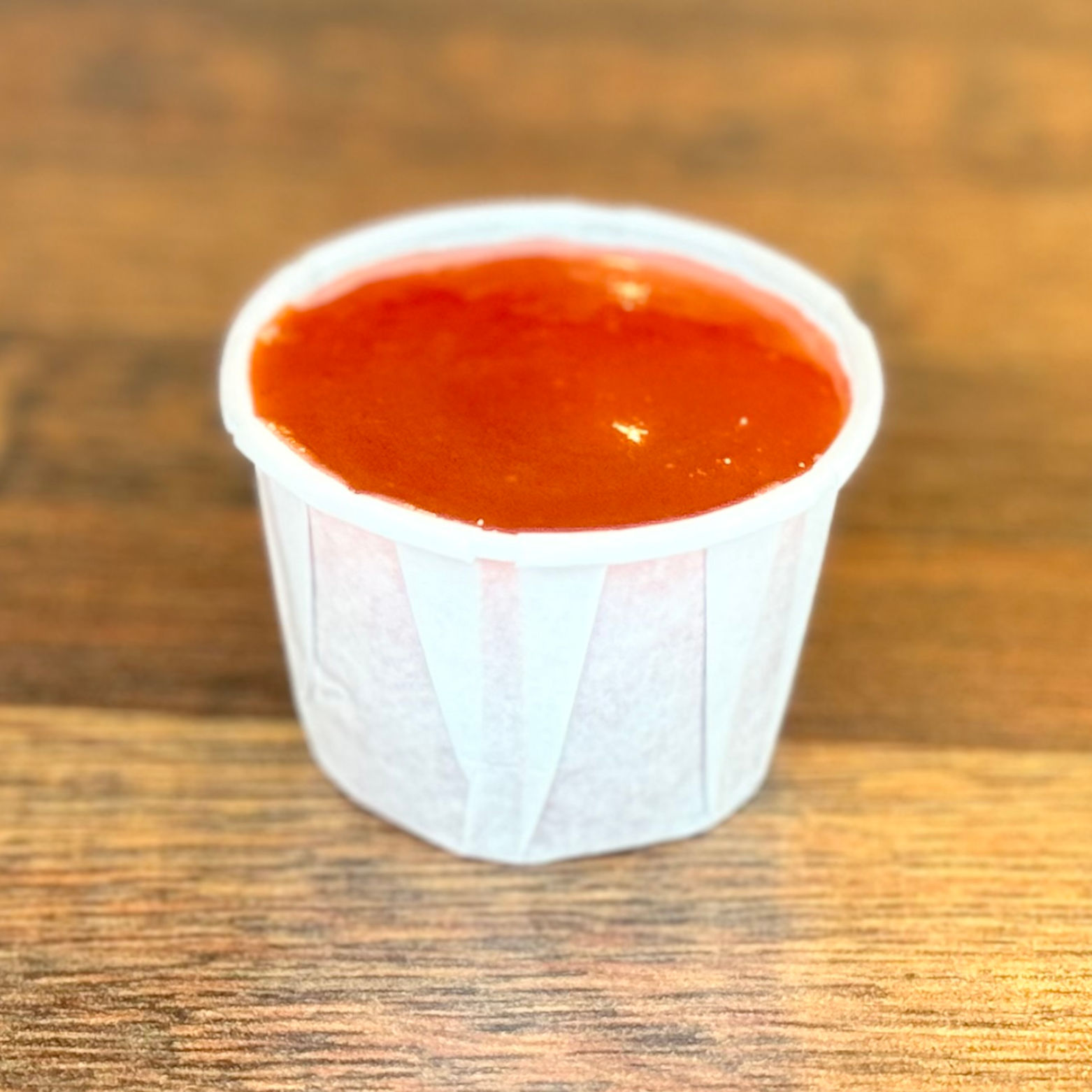

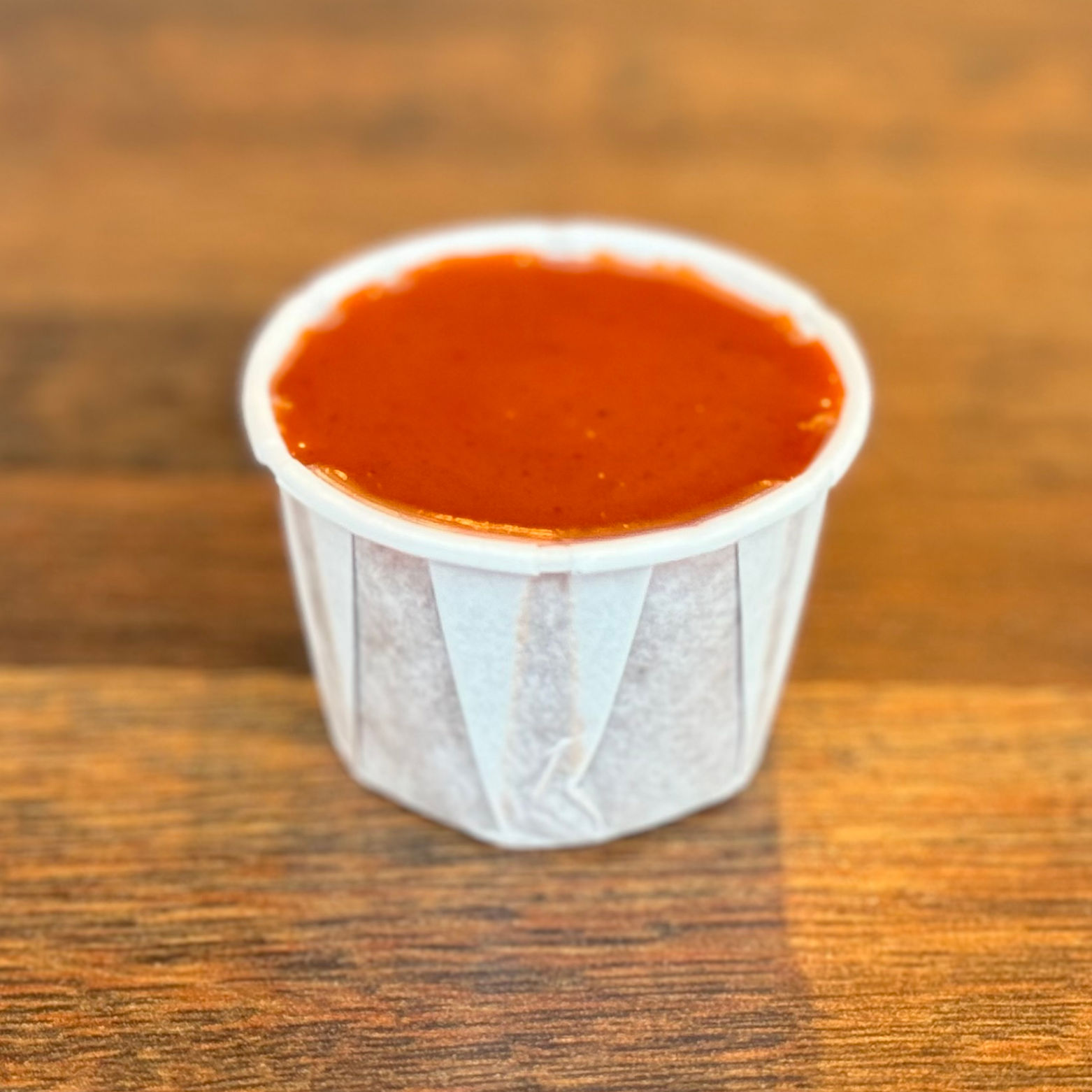

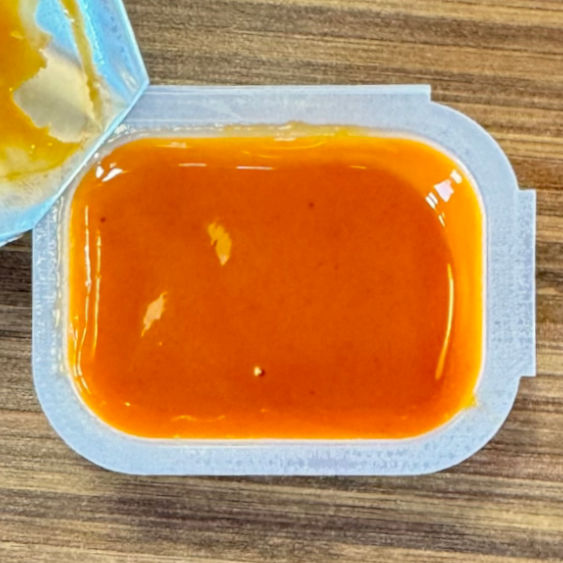
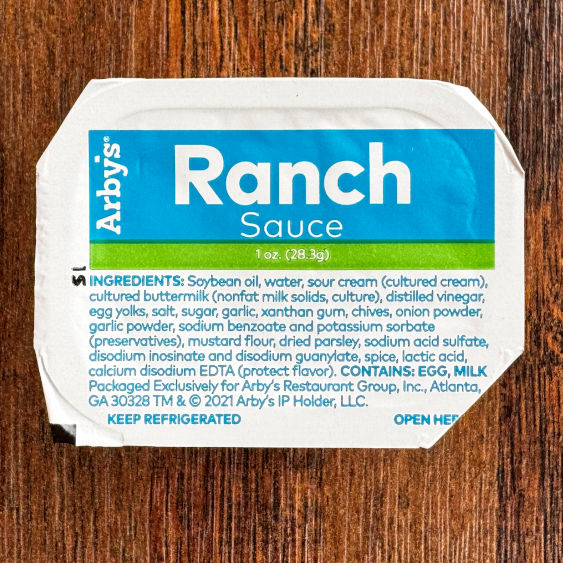
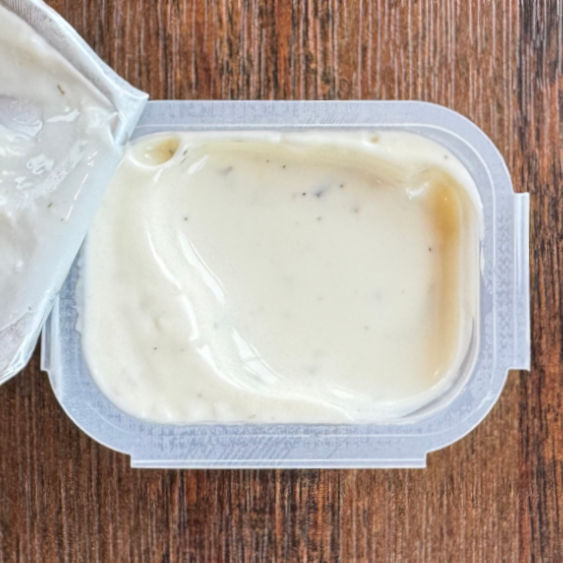
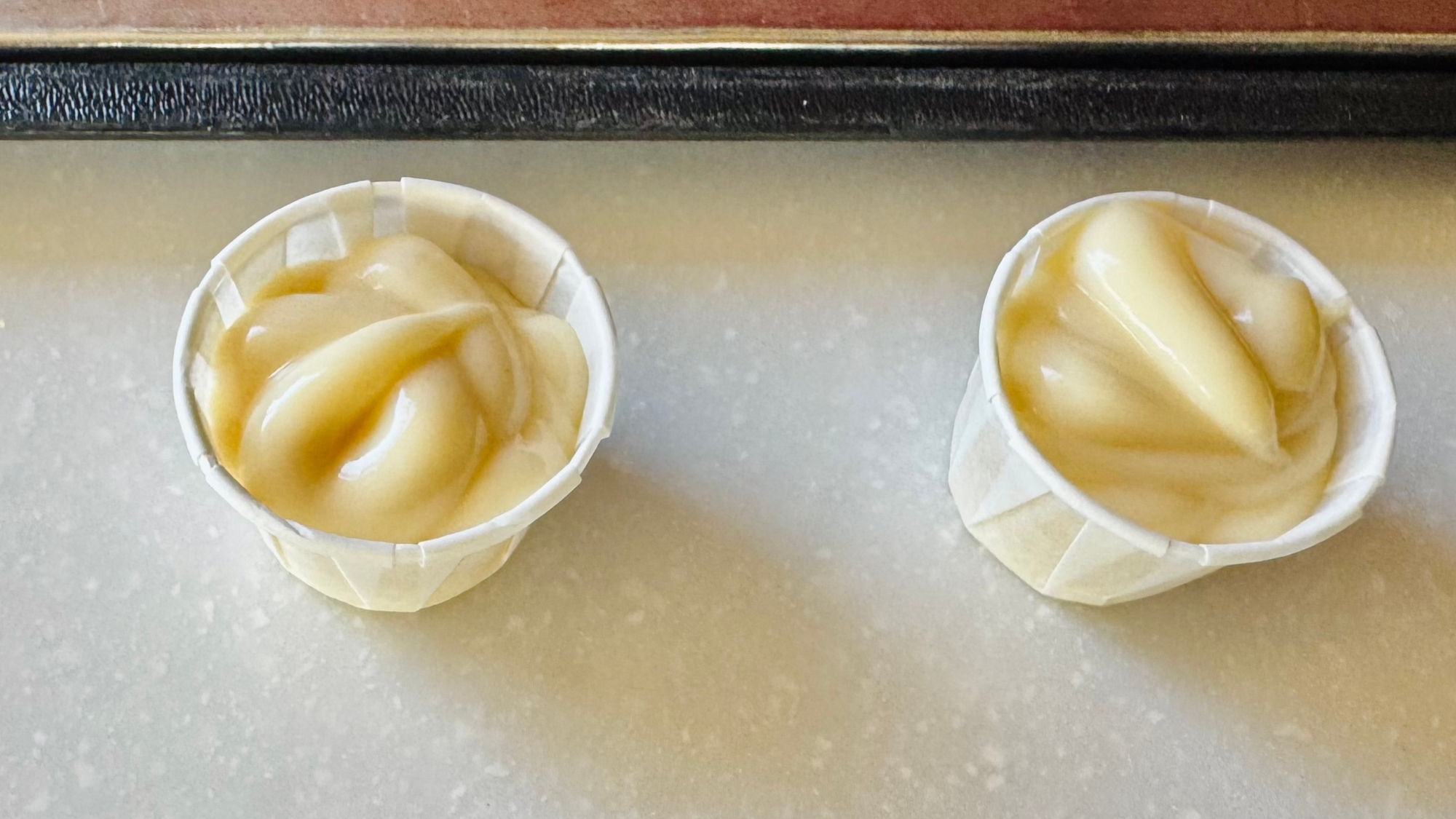
Sauce to Go
Cover them with another paper sauce cup
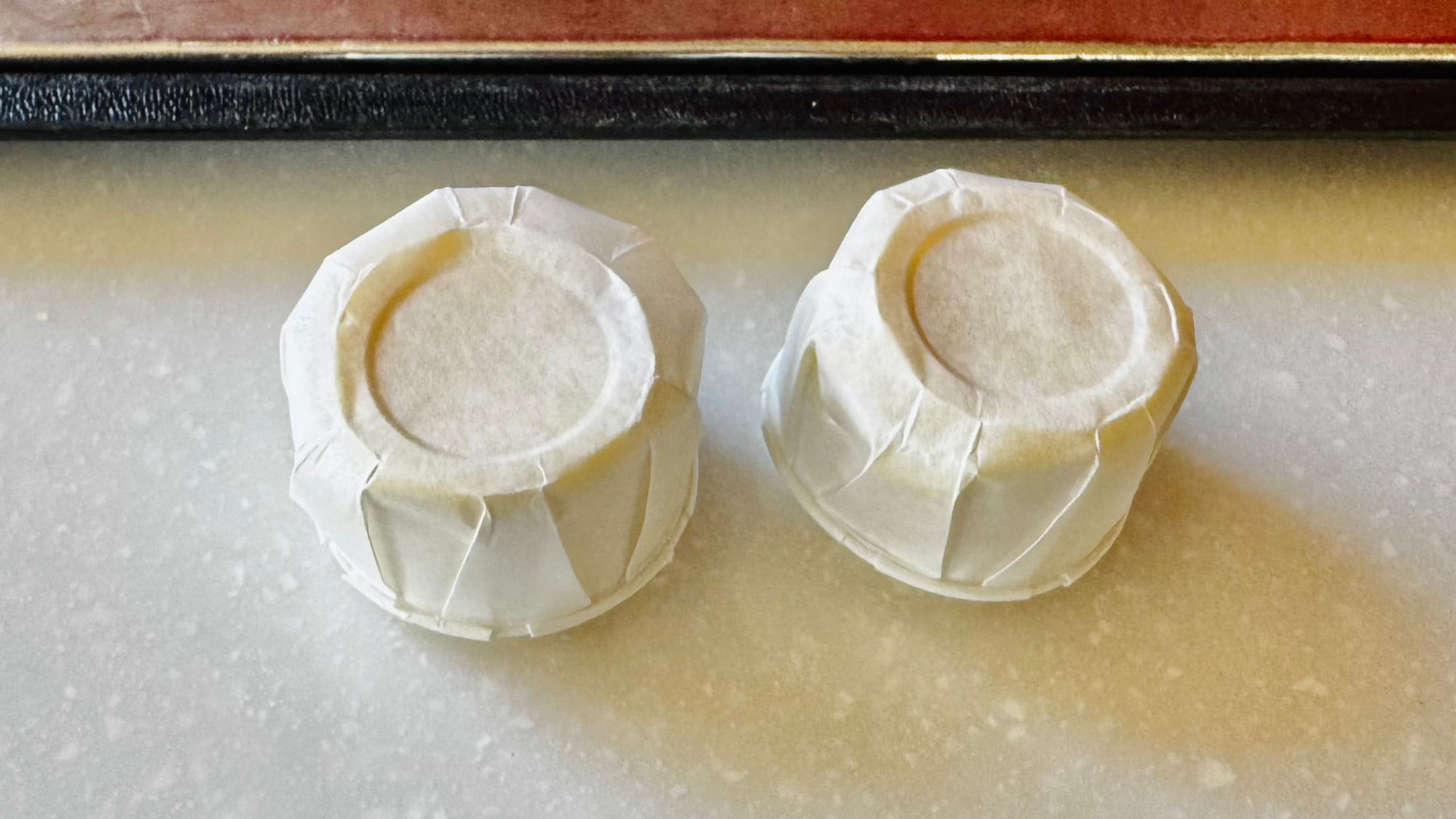
Why Are Arby's Sauces So Good?
They have the meats, and the sauces. Are you team Horsey Sauce or Arby's Sauce?AllrecipesHorsey Sauce and Arby's Sauce
It's nearly impossible to enjoy a juicy roast beef sandwich from Arby's without topping it with one of the iconic sauces. And which one you choose is about as important as the Coke or Pepsi debate.Horsey Sauce is essentially just horseradish sauce and Arby's Sauce is a vinegar and tomato-based sauce. So what makes Arby's unique sauces so delicious that they have withstood the test of time since joining the menu in the 1970s?
The Origin of Arby's Famous Sauces
To understand the quality of the sauces, you first need to understand the two men behind Arby's: the Raffel brothers, Leroy and Forrest. The Raffel brothers wanted to open a fast food restaurant that was a little more upscale than its competitors - like McDonald's.Arby's was designed to be a western-themed restaurant that originally only sold roast beef sandwiches, potato chips, soft drinks, and milkshakes (including the fan-favorite Jamocha shake that's still available today).
With that small menu, the first Arby's opened in 1964 at a restaurant shaped like a chuck wagon donning a 10-gallon hat-shaped sign. And, fun fact, even though many people believe Arby's stands for "America's roast beef, yes sir," it actually is a nod to the Raffel brothers (or RBs).
However, by the 1970s, the Raffel brothers were in hot water as Arby's went bankrupt. So, to pull themselves out of debt, they did a complete menu revamp. They added a slew of new menu items, including curly fries, the Beef 'N Cheddar sandwich, and the two new sauces.
Horsey Sauce and Arby's Sauce were an innovation created by Forrest and were unlike anything fast food restaurants had seen before.
What Makes Arby's Sauces Taste So Good?
- Horseradish was always known to accompany beef dishes. However, it was usually something that you would see in an upscale restaurant. But Forrest added mayo and sugar to the horseradish sauce to fast food-ify it. Now, you have this tasty, tangy, hint of spicy sauce that can easily be squeezed out of a package on the go, which made Horsey Sauce a hit on the roast beef sandwiches.
- On the other end of the spectrum, you have Arby's Sauce. This one is a tomato and vinegar-based sauce - almost like a cross between ketchup and barbecue. Arby's Sauce has a signature taste without being too far removed from what customers already know and love, making it unique and craveable. It's a great sauce for any of the sandwiches - but it's an especially great dipping sauce for the curly fries and chicken, which hit the menu later on.
Over the years Arby's has added more sauces, but none are as iconic as the two menu staples. So whether you top your sandwich with one and dip your fries in the other, or layer your roast beef with both, you have the RBs to thank for your favorite Arby's sauces.
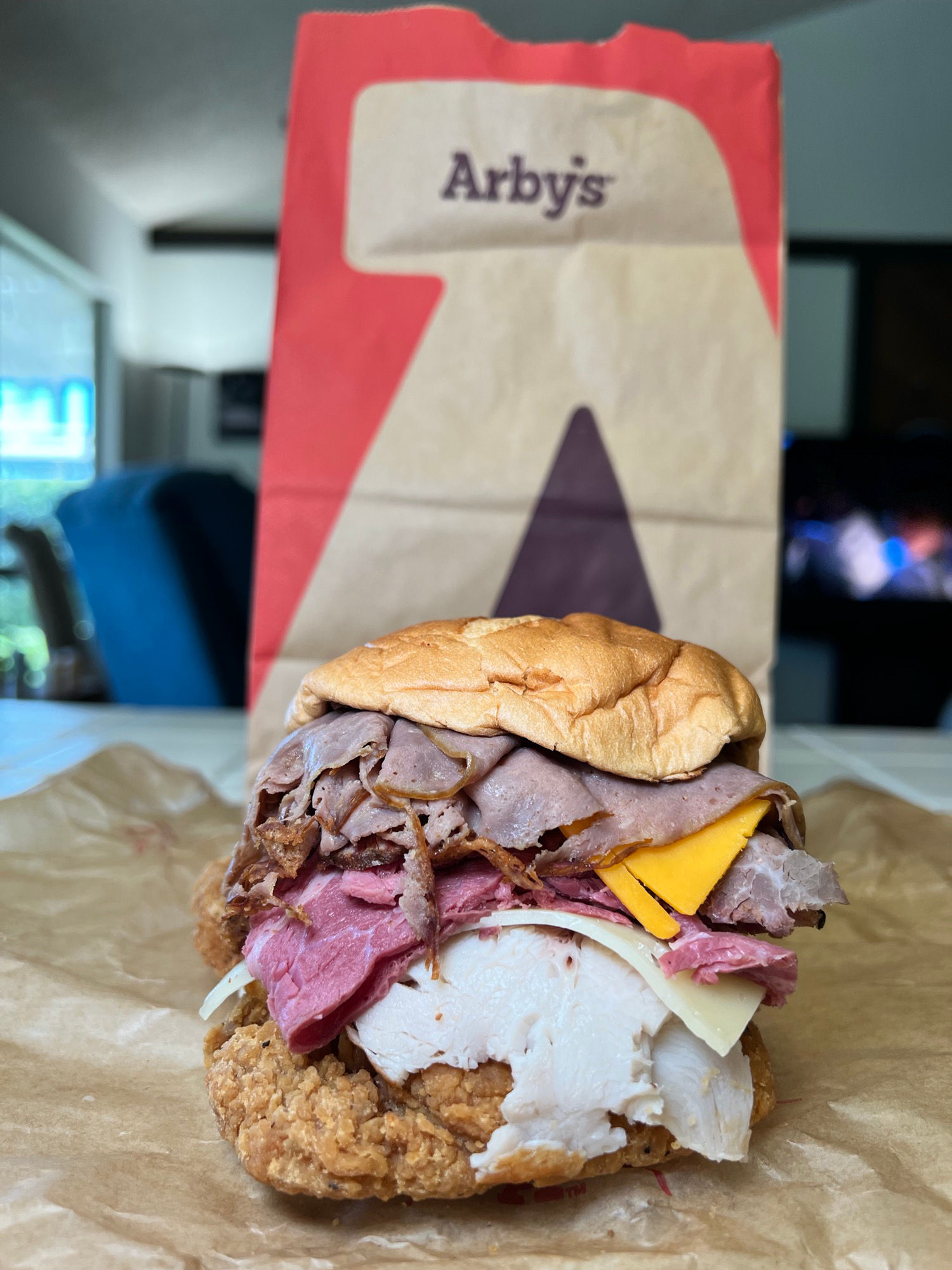
Arby's Meat Mountain
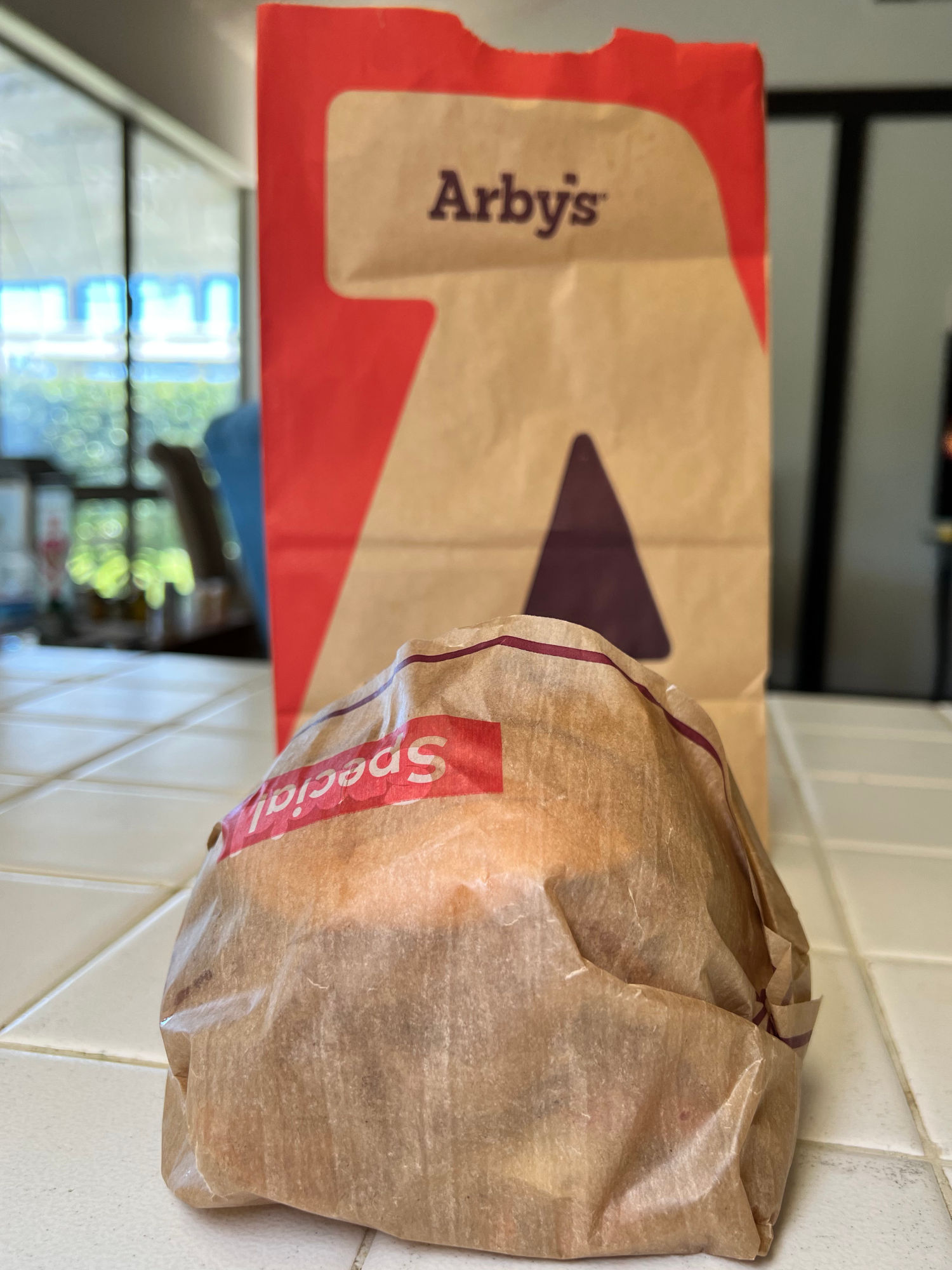

WIKIPEDIAArby's
American fast food sandwich restaurant chain with more than 3,300 restaurants. The flagship property of Inspire Brands, it ranked third in systemwide sales in the United States in the quick-service and fast-casual restaurant industries in 2012, behind Subway and Panera Bread. In October 2017, Food & Wine called Arby's "America's second largest sandwich chain (after Subway)".
- Arby's is best known for selling roast beef sandwiches. Other menu items the chain is known for include gyros, wraps, chicken sandwiches, and milkshakes.
- Its headquarters are in Sandy Springs, Georgia, a suburb of Atlanta which uses Atlanta mailing addresses.
- In 2019, there were 3,472 restaurants. There are locations in six countries outside the United States: Canada, Mexico, Saudi Arabia, Turkey, Egypt, and South Korea.
- Roark Capital Group acquired 81.5% of Arby's Restaurant Group in July 2011 and is now a majority-owner of Inspire Brands. The Wendy's Company held a minority stake of 18.5% in Arby's after the acquisition by Roark Capital; that share was reduced to 12.3% upon the purchase of Buffalo Wild Wings [https://www.eatlife.net/restaurants/buffalo-wild-wings.php], and was sold back to Inspire Brands on August 16, 2018, for $450 million, a 38 percent premium.
In addition to roast beef, deli style sandwiches, called "Market Fresh Sandwiches," and a series of five small sandwiches called Sliders are sold at Arby's.
WikipediaFounded in 1964
Arby's was founded in Boardman, Ohio, on July 23, 1964, by brothers Forrest (1922–2008) and Leroy Raffel (1927–2023) owners of a restaurant equipment business who thought there was a market opportunity for a fast food franchise based on a dish other than hamburgers. They wanted to call their restaurants "Big Tex", but that name was already used by an Akron business. Instead, they chose the name "Arby's," a phonetic pronunciation of the letters R and B, short for "Raffel brothers".
What type of meat does Arby's use in their sandwiches?
Is it roasted beef or processed meat like McDonald's?QuoraYes, Arby's roast beef is actually beef.
According to Arby's the ingredients are: beef, water, salt, sodium phosphates. But your beef sandwich is not sliced from a chunk of roast beef like top round, bottom round, or sirloin; it is not whole-muscle meat. Therefore, it is a processed meat. It is 95% beef muscle tissue and 5% other ingredients. You can think of it like this: it is sliced roasted beef, but it is not sliced beef roast.There are four methods or processes that create the lunchmeats we eat. These are my names and descriptions, not necessarily the official names used in the industry: whole-muscle, whole pieces combined, chunked and formed, and emulsification.
- Whole-muscle is a piece of meat that is left whole.
- Whole pieces combined is a process that tenderizes and combines smaller pieces, like chicken or turkey breast, into a larger product.
- Chunked and formed is pieces of actual meat that are pressed together with binders such as gelatin.
- Emulsified product is finely ground/processed muscle tissue that is mixed with water and other products, creating a slurry that is pumped into a bag and solidified by cooking.
There are statements from employees of the plants where the product is made, as well as USDA inspectors and employees of the restaurants, that make it clear that Arby's roast beef is a slurry product, not a whole-muscle meat.
- The following applies only to Arby's roast beef, not their beef brisket; their brisket is whole-muscle meat that arrives at the store already cooked.
Arby's roast beef is created by the emulsification method, combining finely processed beef with water, salt, and sodium phosphates. The added ingredients are found on the ingredient label. According to an employee who actually pulled the lever to fill the bags in a production plant (Monfort is or was one such plant), the beef is cut, processed and cooked, creating a slurry that is pumped into heavy plastic bags 6 inches in diameter and 22 inches long. The filled bags are described as looking like huge pink hot dogs. The tubes are then frozen at -40 F, and shipped to restaurants frozen. In the restaurant, the tubes of processed beef are cooked for an additional four hours, then sliced and served. He further states that you can accomplish the same at home with a knife, pressure cooker, and a KitchenAid grinder.
- Arby's will vehemently deny the claim that their product is not real beef. They have every right to do so, because their roast beef sandwich product is actually made of real beef.
- It would be unfair to make these statements without emphasizing that this process is used to create much, if not most, of the lunchmeats you buy today. It is a method that uses all the available protein, and thereby reduces production-related loss.
So, in conclusion to the specific Arby's "is it beef?" question: their beef starts out as actual beef, is turned into an emulsified slurry, and after cooking becomes a roast beef sandwich. The process avoids waste, keeps costs down, and provides an affordable beef sandwich. Though the process may sound unappetizing when scrutinized, the end result is good enough to keep a company going since they began using this process in the late sixties or early seventies.
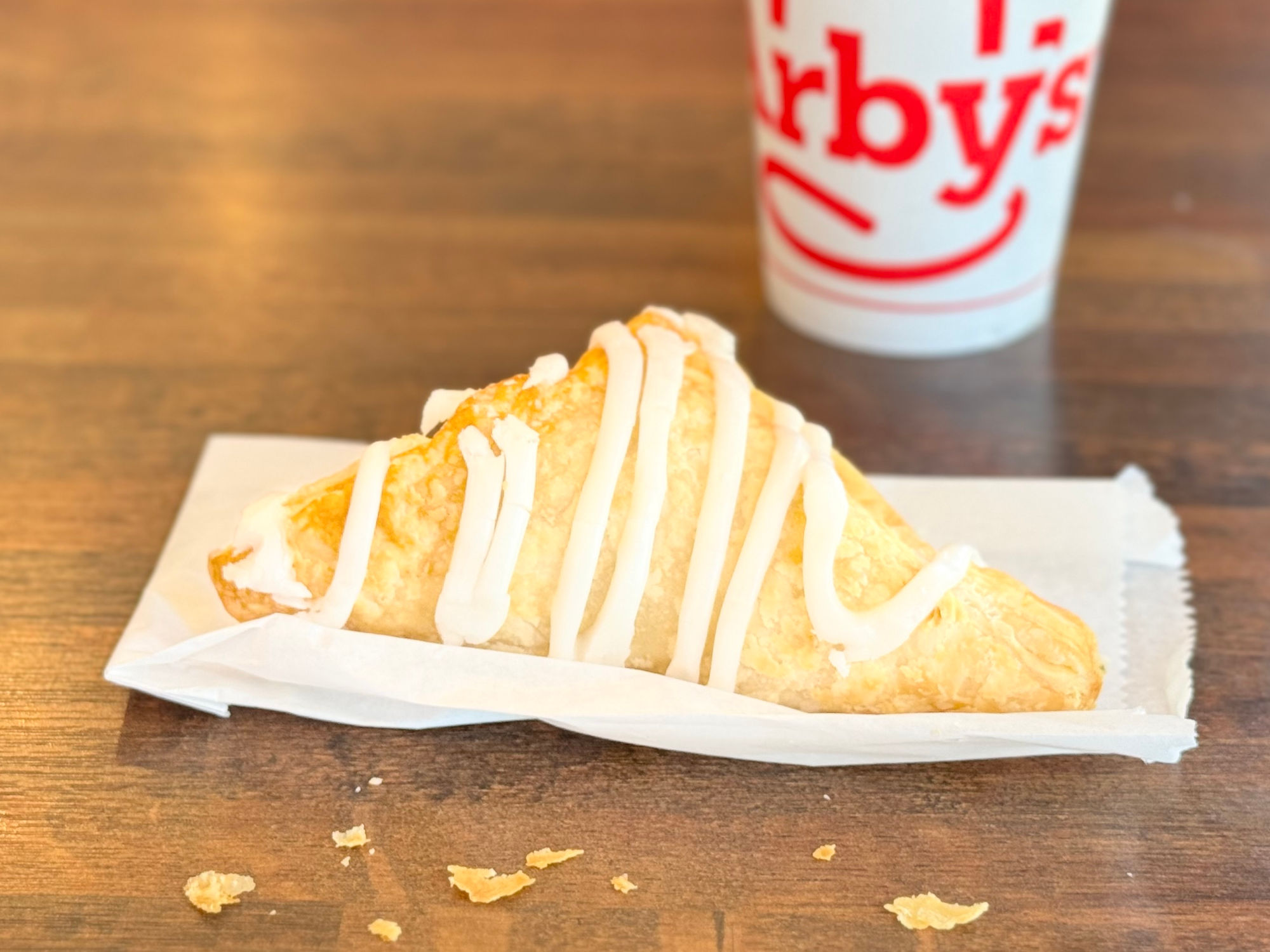
Apple Turnover
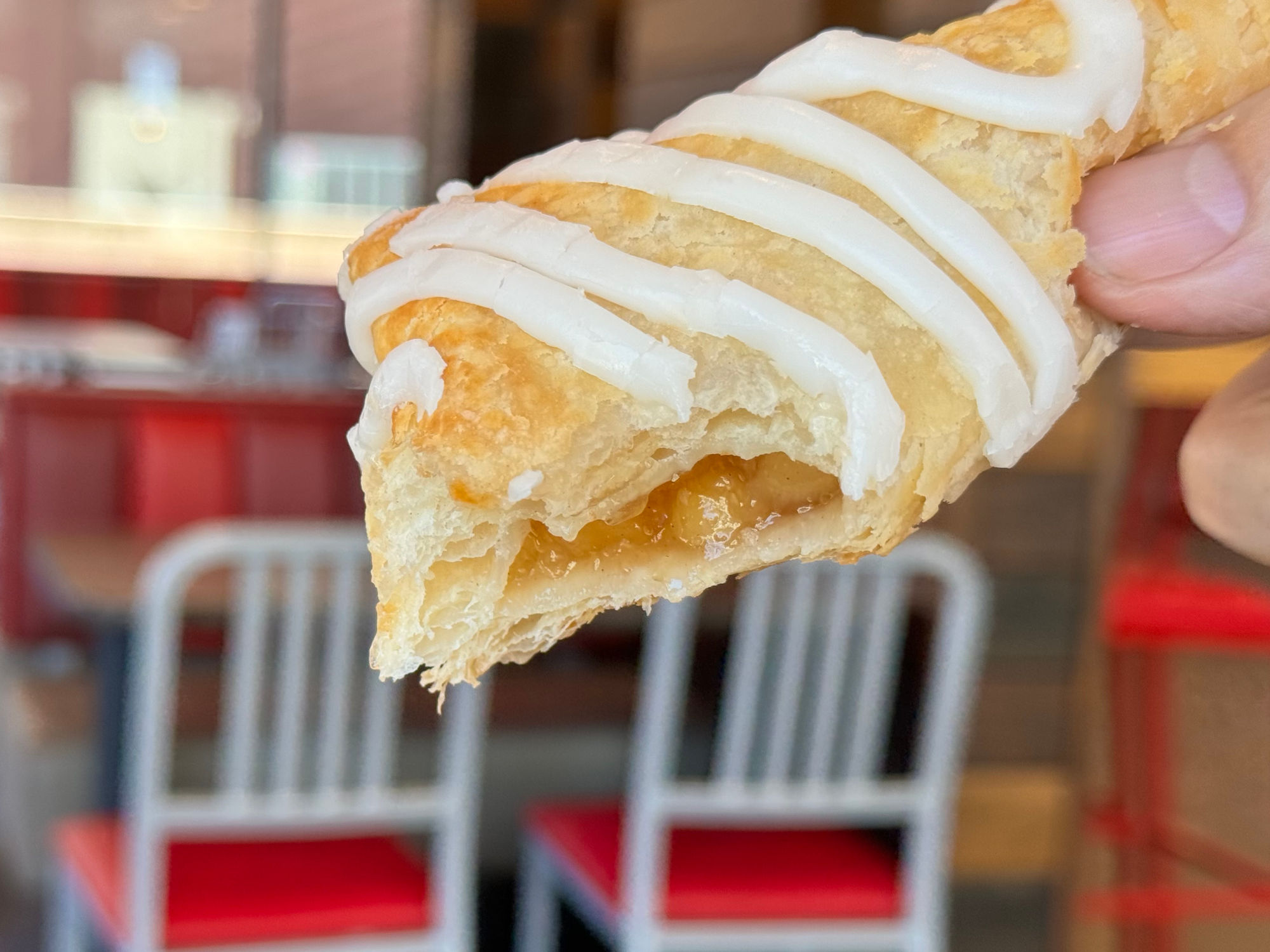
1000logosThe Arby's Logo
Whatever modifications the Arbys logo has gone through, it has always stayed consistent in its central visual metaphor – the hat shape.
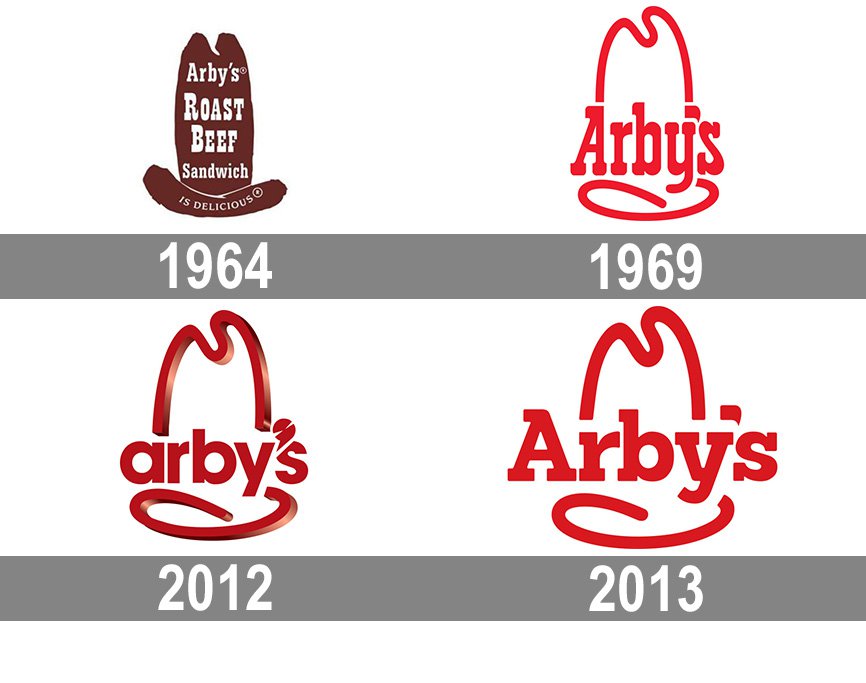
What is the Arby's logo supposed to mean? The hat shape didn't have a deeper meaning but was used rather as an element of style – when the quick-service chain was established in 1964, westerns were extremely popular. So, it seemed like a good idea to use a cowboy hat design as the base for the logo.The original logotype was introduced in 1964. Over the tall brown hat, the text “Arby's Roast Beef Sandwich is Delicious” was placed. Its first part was given in blocky slab-serif letters, while the text "is Delicious" featured thin capital letters.
The classic, most known logo was adopted in 1974. It featured a stylized red hat outline with the lettering "Arby's." Because of its simple, yet eye-catching and recognizable design, the logotype proved to be rather successful, so the company didn't dare change it for several decades.
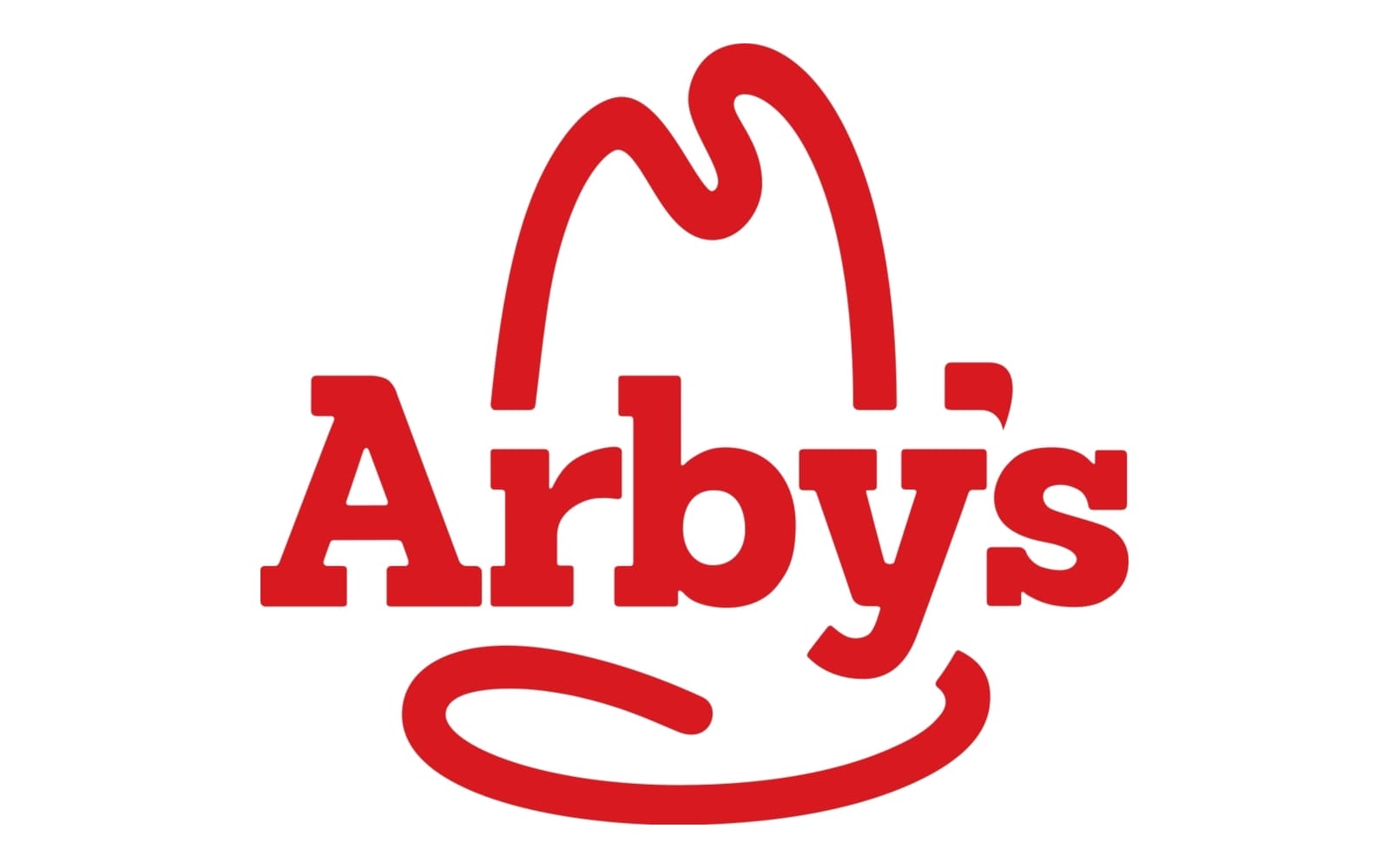
Due to a new, not condensed font, the overall shape is now wider and less tall, which makes it better suited for social media avatars. Also, the letters are now more legible, even at smaller sizes. The old speech bubble apostrophe that could be seen on the classic logo is also back. The name of the type featured on the Arbys logo 2017 is Sanchez Black. We should point out, however, that the type has gone through several modifications to fit the overall logo design.
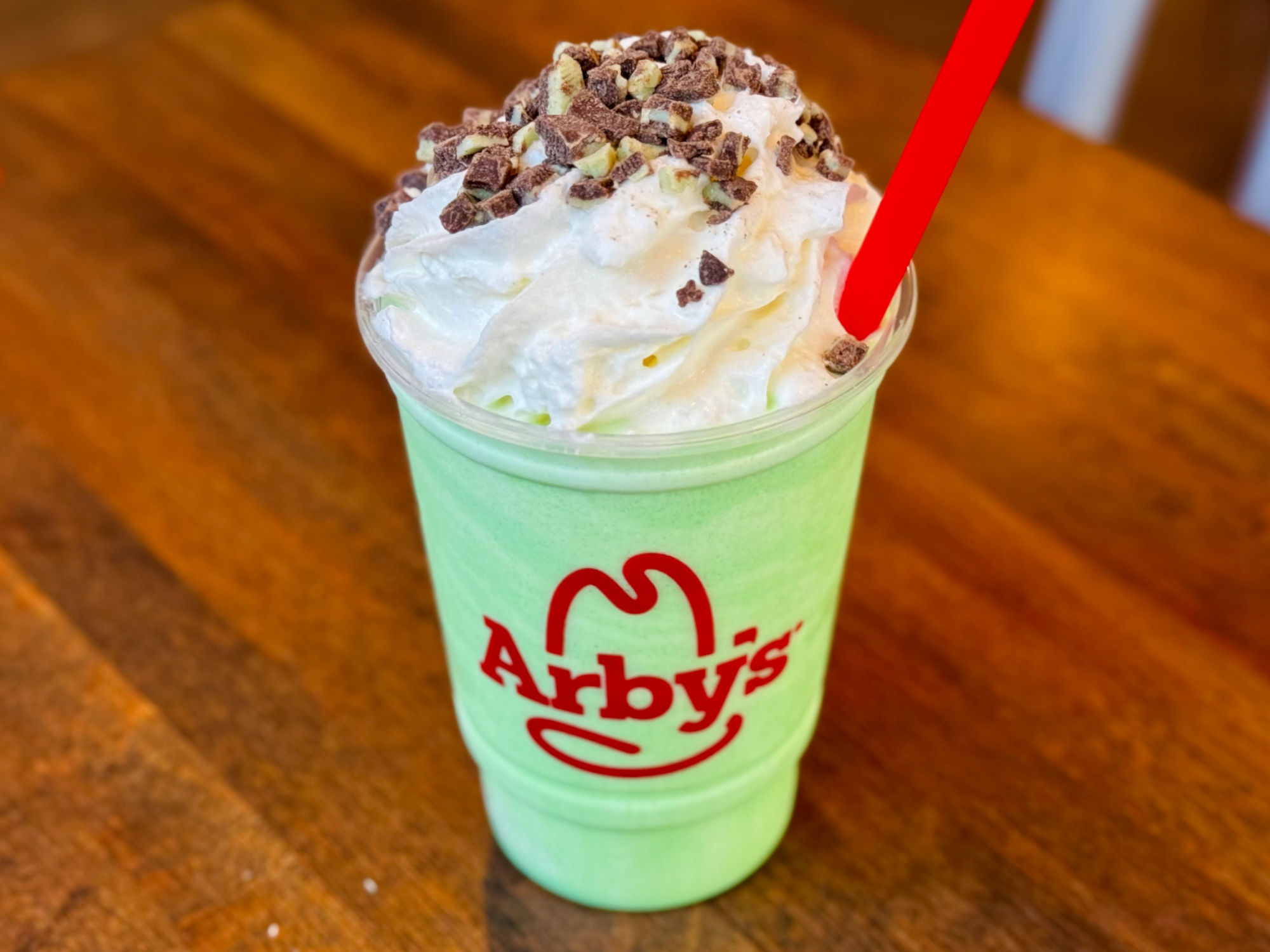
Andes Mint Chocolate Shake
- Mint Chocolate Shake
- Whipped Cream
- Chopped Andes Candy Pieces
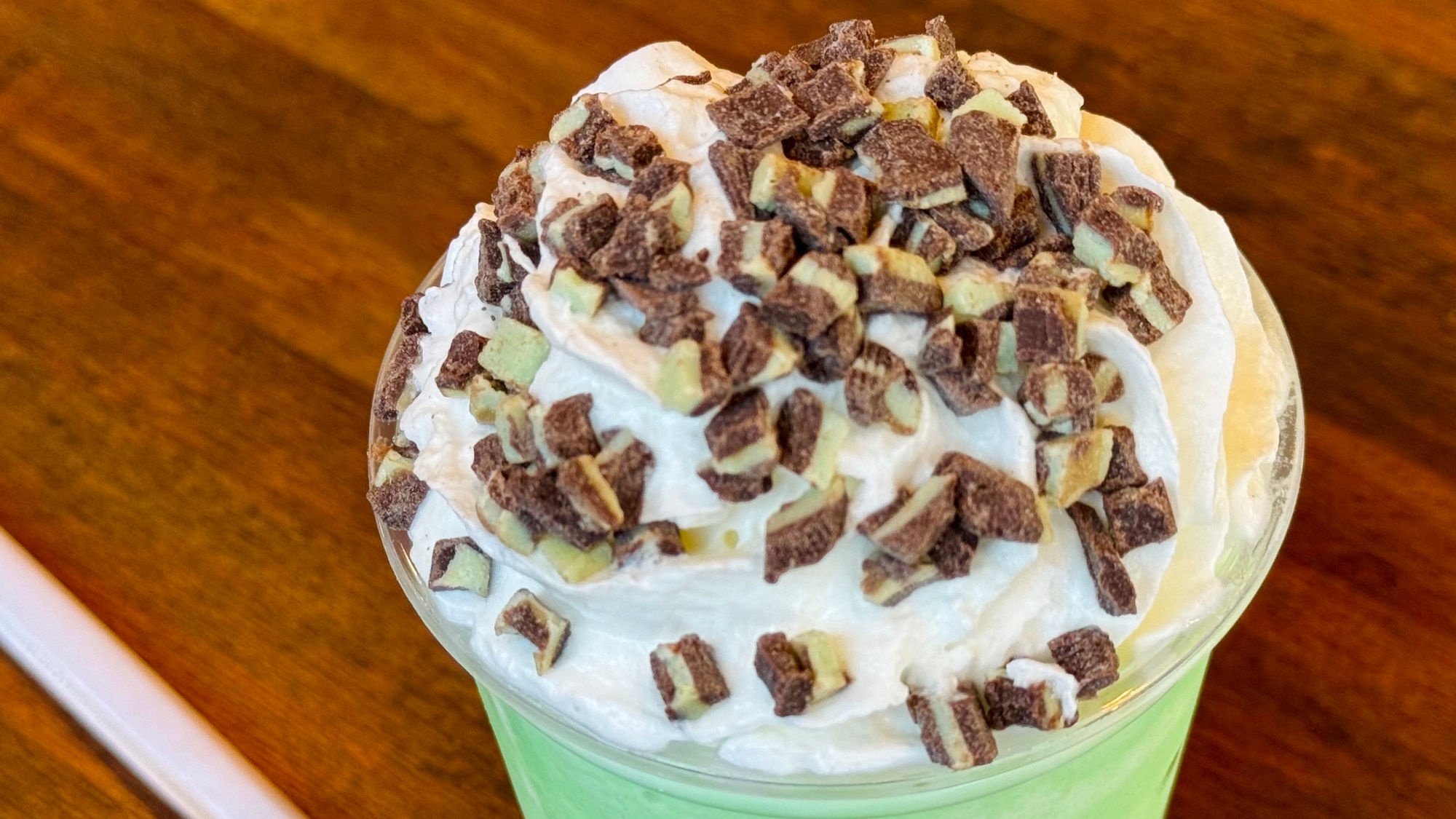
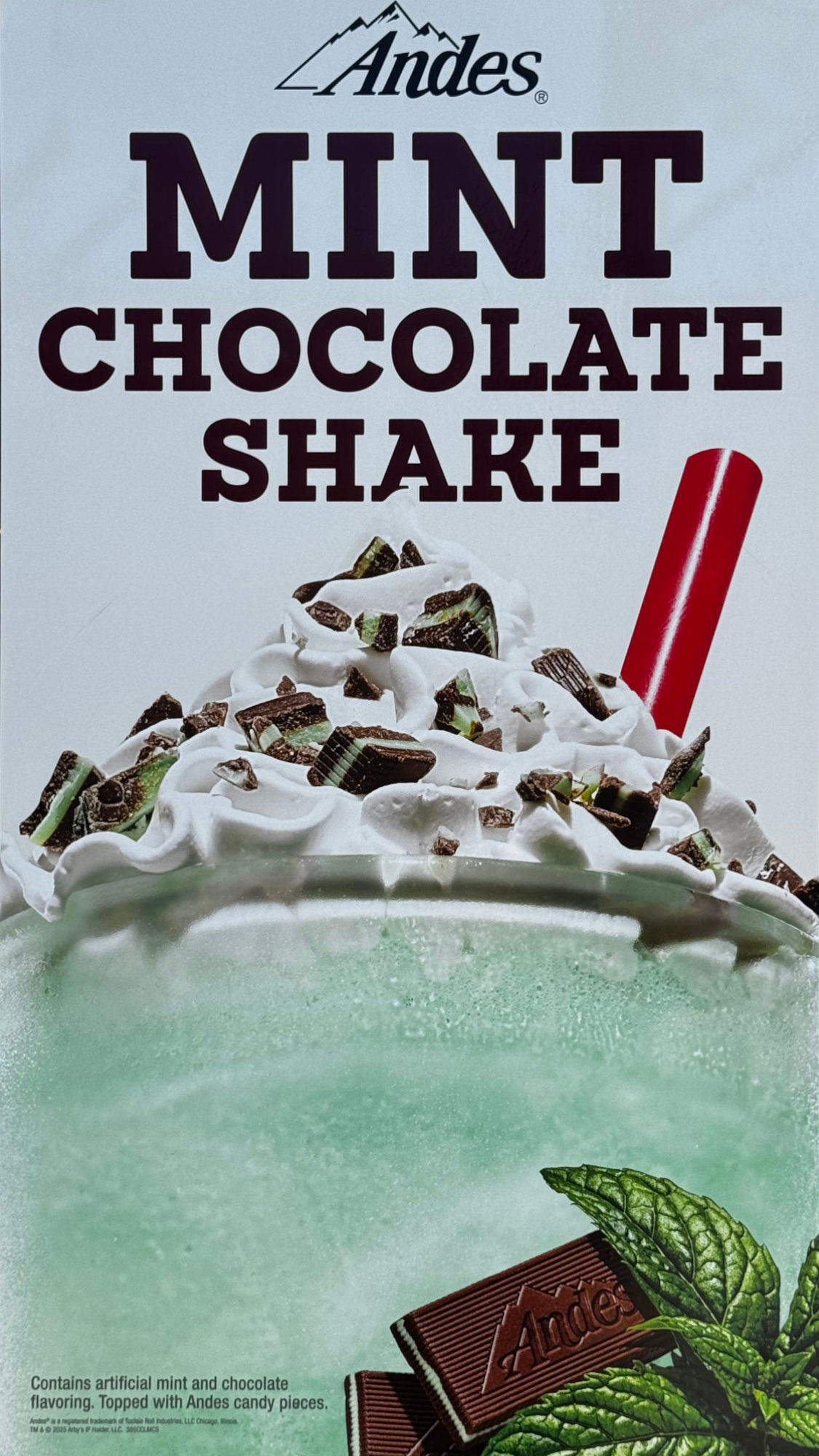
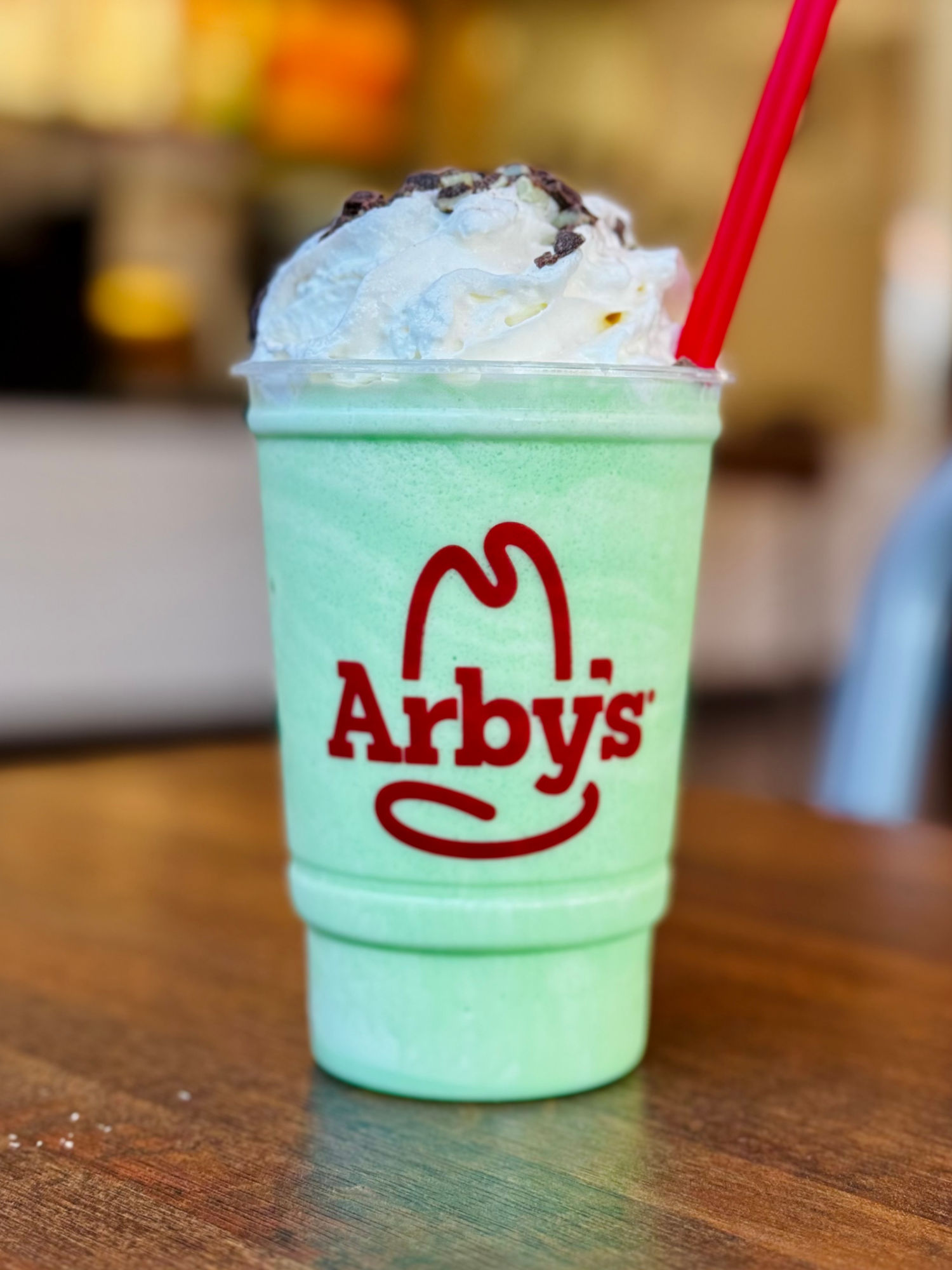
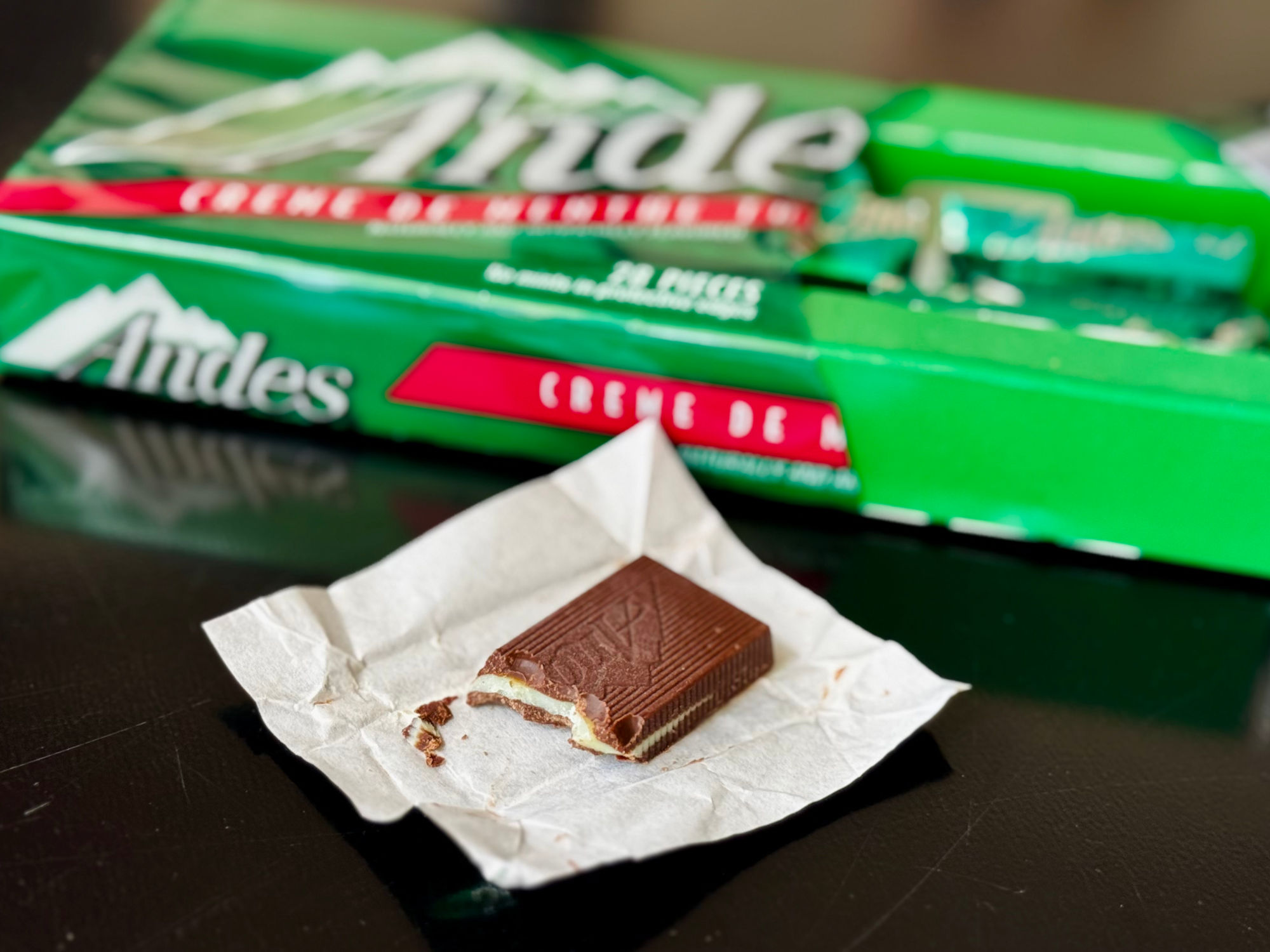
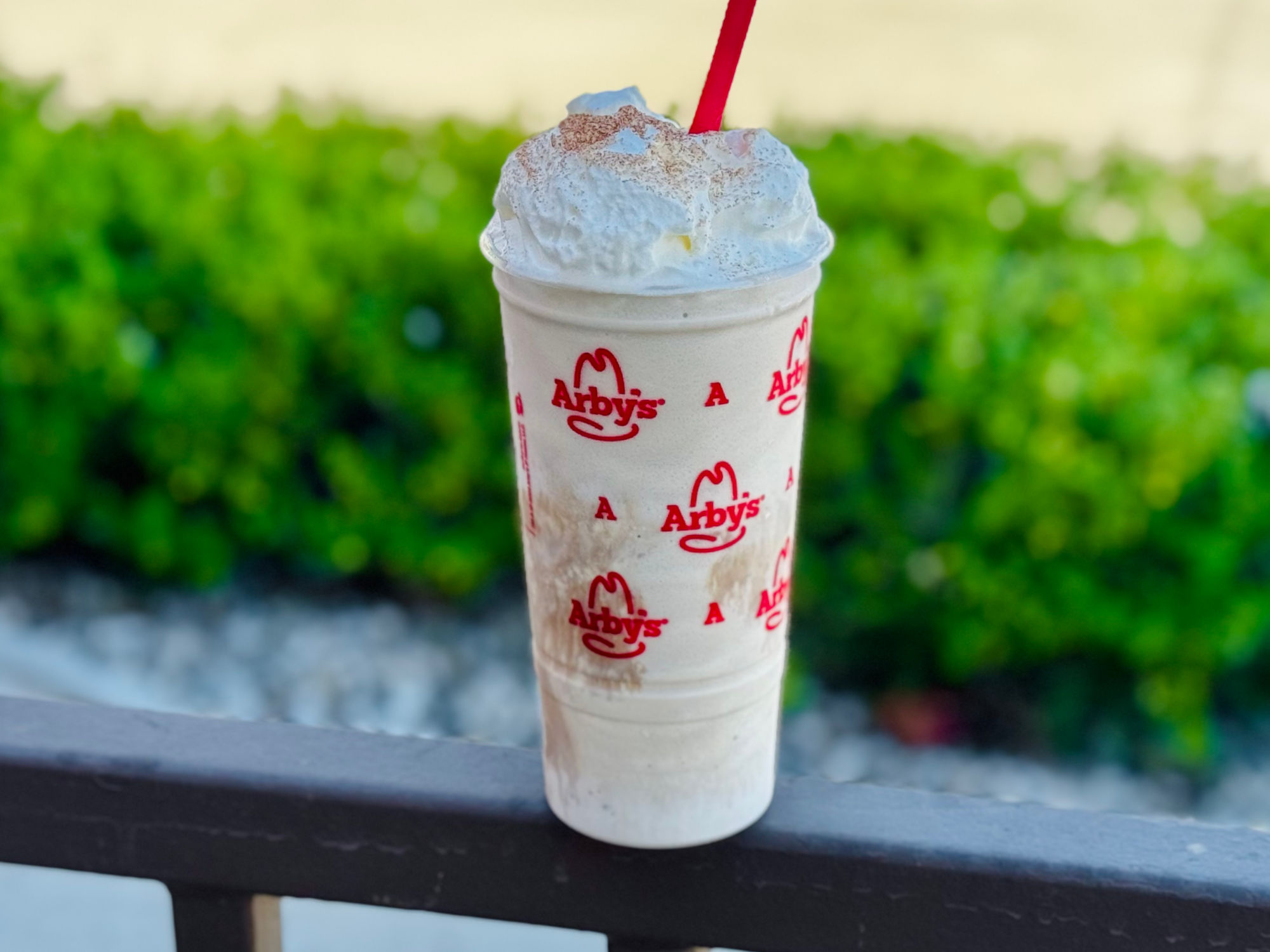
Apple Pie Shake
- Vanilla Milkshake
- Baked Green Apple Flavor
- Warming Spices
- Whipped Cream
- Cinnamon Sugar
NavArby's
During the 1960s and '70s, there was massive hype over the expansion of quick serve restaurants McDonalds (due to Ray Kroc) and KFC (due to Colonel Sanders). However, there was another massively growing fast-food chain that was taking significant market share, and that chain was “Arby's.” Today, the Arby's Restaurant Group Inc. is the second-largest fast-food sandwich chain in America, second only to Subway, with Panera Bread and Jimmy Johns coming in at a very close third and fourth.But how did Arby's get where it is today? How was the concept conceived and grown into being the second-largest fast-food sandwich chain in the United States? For this article, I will spotlight Leroy and Forrest Raffel, and how their dedication to innovation in the food service industry led to the development of one of the most successful restaurant chains of all time.
Born In The Greatest Generation (WWII Generation)
Forrest “Fuzzy” Raffel was born on May 14, 1922, to Jacob and Ann Raffel. His younger brother, Leroy, was born on March 13, 1927. Both brothers served in the military during World War II (Forrest in the Air Force and Leroy in the Naval Reserve). Forrest graduated from Cornell University's School of Hotel and Restaurant Administration. Leroy graduated from the Wharton School of Finance from the University of Pennsylvania.From Restaurant Equipment To Roast Beef Sandwiches
In the 1950s, the brothers bought their uncle's restaurant equipment business and created Raffel Brothers, Inc., which became one of the country's leading food service consulting firms, specializing in restaurant equipment for operators.But from afar, the brothers were watching the massive growth of Ray Kroc's McDonald's and how companies (such as Burger King) were getting in on the action by copying a lot of the operational franchise formula created by Kroc, along with copying the “Speedee Service System” created by brothers Maurice and Richard McDonald. The Brothers believed that there might be a market for quick service/fast food that wasn't based on the sale of hamburgers, but the sale of roast beef sandwiches.
Jumping Into The Game/Rapid Growth
1964We were totally confident, while everyone else thought we were out of our minds.- Leroy Raffel
The brothers took a chance and on Thursday, July 23, 1964, when they opened their first quick service roast beef sandwich shop in Boardman, Ohio. They were going to call it “Big Tex,” but that name was already in market use, so they called the shop “Arby's” based on the initials of “R” and “B” of Raffel Brothers.
Arby's was positioning itself as a more “upper scale” quick service joint, by having their roast beef sandwiches priced higher at 69 cents, compared to McDonald's hamburgers going for about 15 cents. The first store was a hit and The Raffel Brothers would then begin expanding very rapidly to the point that by the late 1960s, they had over 300 locations in nearly 40 states.
Rapid Failure/Bankruptcy
But the fast expansion required high amounts of working capital. The brothers utilized bank loans and equity capital to help finance the late 1960s growth, but those sources weren't going to sustain the current operational levels along with prospective growth plans. So as a result, the brothers sought to take their organization public with an IPO in 1970. Changes made within the SEC delayed the IPO and by the time it was rescheduled, issues in the market required the brothers to abandon the stock issuance.This left the brothers without the needed working capital which put them behind on various expenses and financial obligations of the business. Issues with banking partners and franchise partners manifested, and a Chapter 11 bankruptcy filing was completed in late 1970.
The Comeback and Successful Exit
While the company was within the Chapter 11 bankruptcy reorganization process, the Raffel Brothers would begin to regain control of the organization and spend the next couple of years restoring profitability. They successfully came out of the bankruptcy reorganization and by the end of 1975, the brothers grew Arby's to 500 locations nationwide. This growth required a similar cash infusion like the prior late 1960s growth, but instead of trying for another IPO, the brothers entered an agreement with RC Cola in 1976, selling Arby's for $18 million (worth nearly $80 million in 2017 dollars due to inflation).The Raffel Brothers would continue to operate the Arby's organization under the RC Cola umbrella, growing to over 800 locations by the end of 1979. By the end of 1979, The Raffel Brothers would decide to step down from operating Arby's, retiring from the food service industry as multi-millionaires.
Today's Arby's
While Arby's has gone through a variety of new management structures (even at one time being partially owned by Wendy's) the organization still maintains its dominance in the quick service industry, including in 1991 being the first to introduce a healthy menu with items under 300 calories.Today, Arby's is franchised through The Arby's Restaurant Group and has nearly $4 billion in total revenue, with more than 3,400 locations. It is part of the multinational company, Inspire Brands, which is the second largest restaurant company in the US.
The Arby's classic Roast Beef sandwich is a household name in America, as the sandwich has been one of the most popular fast food items for well over 50 years.
The Legacy Of The Raffel Brothers
Forrest died in September 2008 at the age of 86, with his obituary stating that he was to “roast beef sandwiches” what Colonel Sanders was to “chicken.”Raffel, co-founder of Arby's, died in 2023 at the age of 96.
They leave behind a franchise that's widely recognized, and now part of one of the largest restaurant companies in the US, and with a strong global presence.
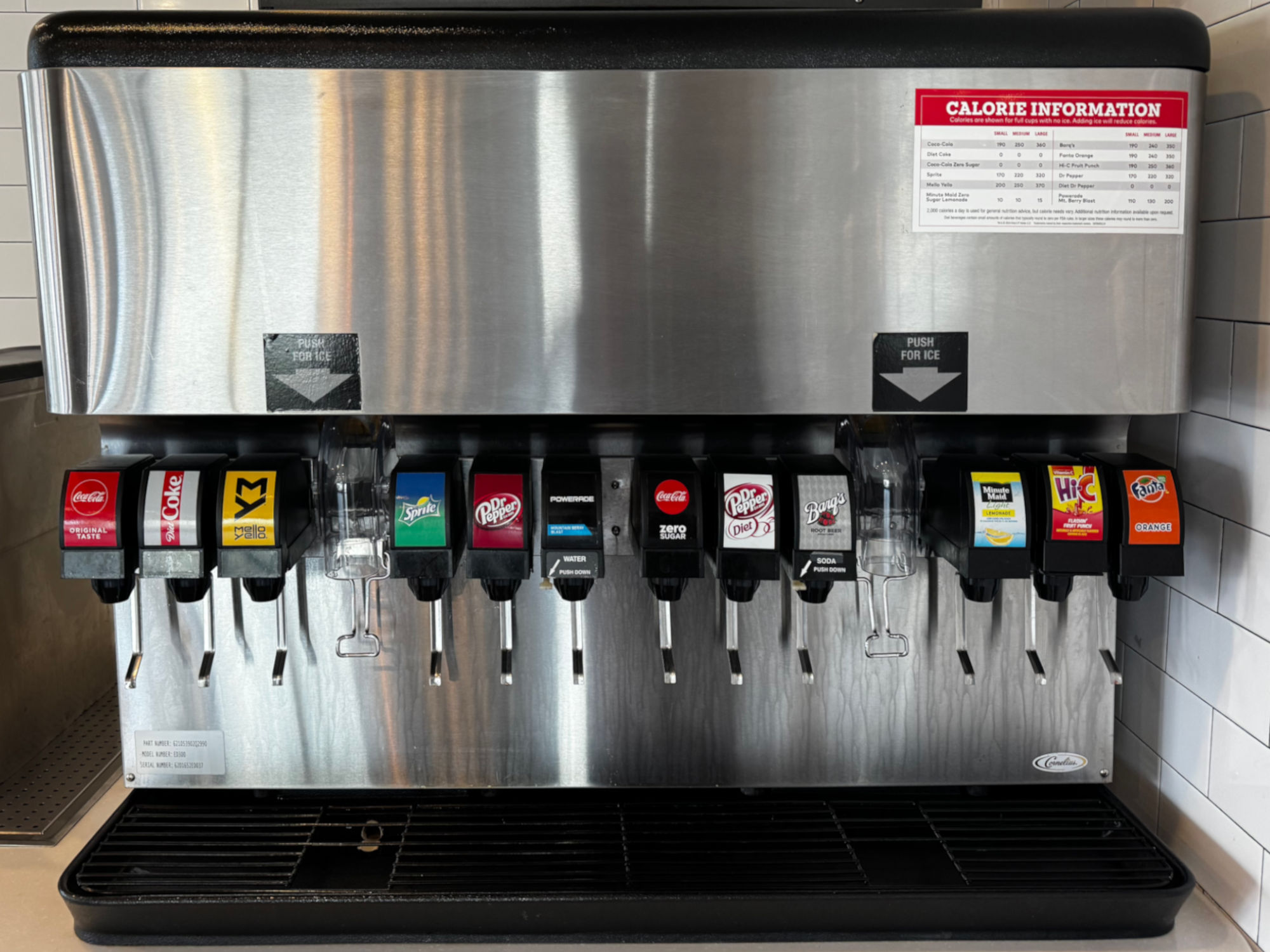
Fountain Drinks
- Coca-Cola
- Diet Coke
- Mello Yello
- Sprite
- Dr Pepper
- Water
- Powerade
- Coca-Cola Zero Sugar
- Diet Dr Pepper
- Soda
- Barq's Root Beer
- Minute Maid Light Lemonade
- Hi-C Flashin' Fruit Punch
- Fanta Orange
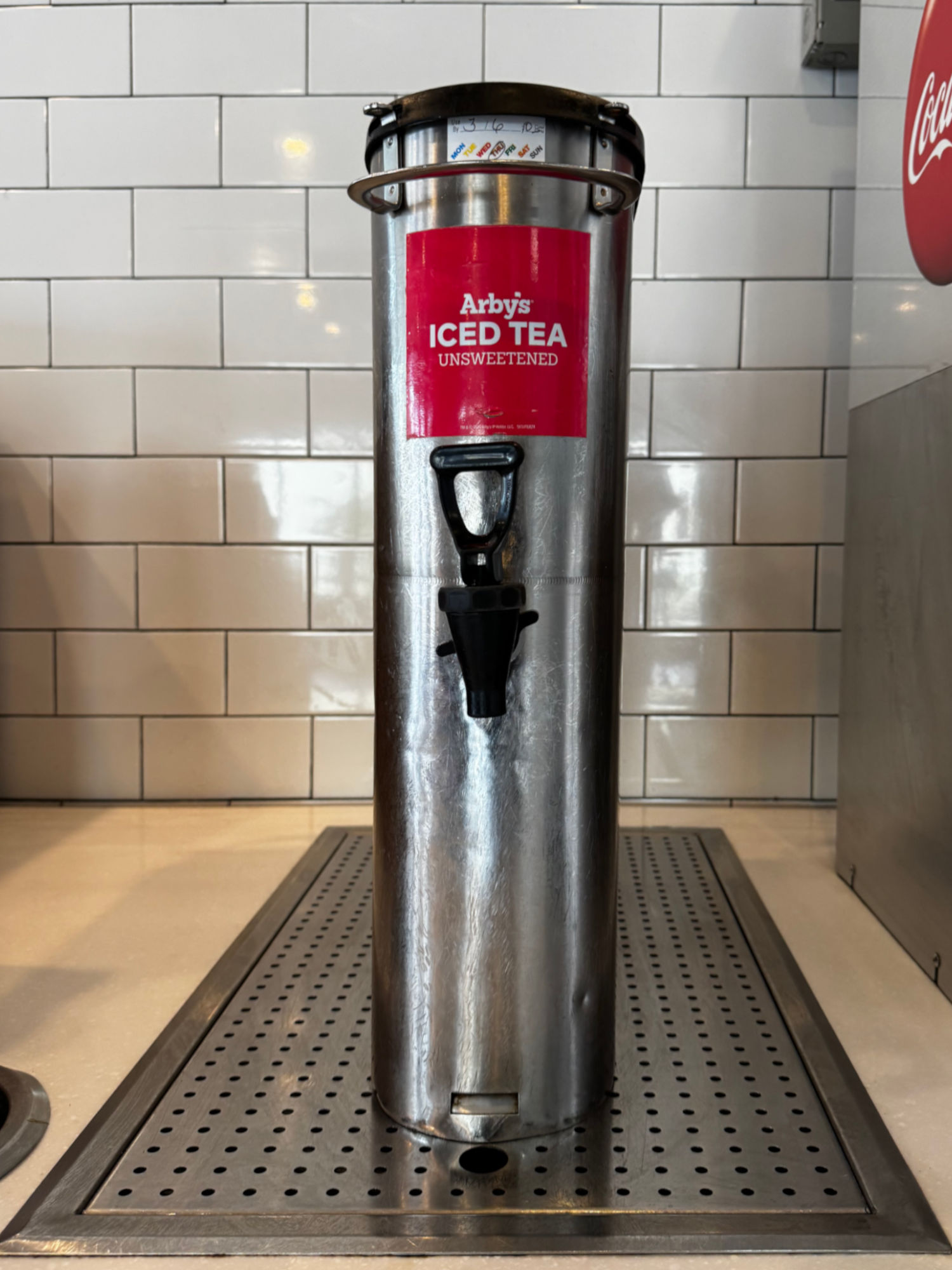

Strawberry Lemonade
ZippiaThe Arby's brand purpose is Inspiring Smiles Through Delightful Experiences. Arby's delivers on its purpose by celebrating the art of Meatcraft with a variety of high-quality proteins and innovative, crave-able sides, such as Curly Fries and Jamocha shakes. Arby's Fast Crafted restaurant services feature a unique blend of quick-serve speed combined with the quality and made-for-you care of fast casual. Arby's Restaurant Group, Inc. is the franchisor of the Arby's Brand and is part of the Inspire Brands family of restaurants headquartered in Atlanta, Ga. Arby's, founded in 1964, is the second-largest sandwich restaurant brand in the world with more than 3,500 restaurants in nine countries.
ARBY'S: 1964 The Raffel brothers opened the first new restaurant in Boardman, Ohio, just outside Youngstown, on July 23, 1964. They initially served only roast beef sandwiches, potato chips, and soft drinks. Hoping to attract a more upscale clientele, Arby's interior design was purposely more luxurious in appearance than the typical fast food sandwich stand of the day. Arby's offered their roast beef sandwiches for $.69 at a time when hamburger stands were charging $.15 for a hamburger. A year later, the first Arby's licensee opened a restaurant in Akron, Ohio. The famous Arby's "hat" was designed by the original sign makers, Peskin Sign Co. 1970 The family-owned business tried converting into a public company in 1970 by offering the sale of stock, but the IPO never went through when the stock market subsequently fell. In 1976, the family sold the company to Royal Crown Cola Company for $18 million and Leroy Raffel remained as CEO until his retirement three years later. 1976 The family-owned business tried converting into a public company in 1970 by offering the sale of stock, but the IPO never went through when the stock market subsequently fell. In 1976, the family sold the company to Royal Crown Cola Company for $18 million and Leroy Raffel remained as CEO until his retirement three years later. 1984 In 1984, Victor Posner obtained Arby's via a hostile takeover of its then parent Royal Crown through his DWG Corporation. Nine years later, with a new owner of DWG Corporation and a new name, Triarc Companies, Inc., a former PepsiCo executive, Don Pierce, was brought in to "resurrect" Arby's. With $100 million additional funding, Pierce moved to a new "Roast Town" concept, similar in format to Boston Market, in 1996. The Roast Town concept received poor marks in market tests and was quickly discontinued. Pierce and his team left the company and it sold all of its 354 company-owned locations to RTM Restaurant Group, an existing Arby's franchise, for $71 million. Another marketing concept that was tried was a dual-brand venture that was started in 1995 with ZuZu's Handmade Mexican Grill. The marketing venture was a failure resulting in lawsuits being filed by each company against the other. 1988 During the 1970s, the expansion of Arby's took place at a rate of 50 stores per year. During this time it created several menu items, including the Beef 'n Cheddar, Jamocha Shakes, chicken sandwiches, Curly Fries, and two signature sauces: Arby's Sauce and Horsey Sauce. Baked potatoes were added to the menu in 1985. Curly Fries were initially introduced as Curly-Q Fries in 1988. It became the first restaurant in the fast food industry to offer a complete "lite" menu in 1991 with several sandwiches and salads under 300 calories and 94 percent fat-free. 1991 During the 1970s, the expansion of Arby's took place at a rate of 50 stores per year. During this time it created several menu items, including the Beef 'n Cheddar, Jamocha Shakes, chicken sandwiches, Curly Fries, and two signature sauces: Arby's Sauce and Horsey Sauce. Baked potatoes were added to the menu in 1985. Curly Fries were initially introduced as Curly-Q Fries in 1988. It became the first restaurant in the fast food industry to offer a complete "lite" menu in 1991 with several sandwiches and salads under 300 calories and 94 percent fat-free. 1992 In 1992, Les Franchises P.R.A.G. Inc. opened the first Arby's franchise in the Canadian province of Quebec. It was also the 100th location to open in Canada and joins other locations that were then operating in the provinces of Ontario, Alberta, New Brunswick, Nova Scotia, Manitoba, British Columbia, and Saskatchewan. The Quebec location also sold the uniquely French-Canadian dish called poutine. 1994 There were two different attempts to operate franchises in the United Kingdom. GSR Restaurant Group opened their first Arby's franchise location in London in 1992 followed by a second location the following year in Glasgow. These were also the first locations to open in Europe, but both were forced to close by 1994. In 2001, Barown Restaurants opened two Arby's franchise locations in Southampton, Hampshire, and Sutton, Surrey, but both were forced to close after operating for a few months. 1995 In 1984, Victor Posner obtained Arby's via a hostile takeover of its then parent Royal Crown through his DWG Corporation. Nine years later, with a new owner of DWG Corporation and a new name, Triarc Companies, Inc., a former PepsiCo executive, Don Pierce, was brought in to "resurrect" Arby's. With $100 million additional funding, Pierce moved to a new "Roast Town" concept, similar in format to Boston Market, in 1996. The Roast Town concept received poor marks in market tests and was quickly discontinued. Pierce and his team left the company and it sold all of its 354 company-owned locations to RTM Restaurant Group, an existing Arby's franchise, for $71 million. Another marketing concept that was tried was a dual-brand venture that was started in 1995 with ZuZu's Handmade Mexican Grill. The marketing venture was a failure resulting in lawsuits being filed by each company against the other. 1996 In 1984, Victor Posner obtained Arby's via a hostile takeover of its then parent Royal Crown through his DWG Corporation. Nine years later, with a new owner of DWG Corporation and a new name, Triarc Companies, Inc., a former PepsiCo executive, Don Pierce, was brought in to "resurrect" Arby's. With $100 million additional funding, Pierce moved to a new "Roast Town" concept, similar in format to Boston Market, in 1996. The Roast Town concept received poor marks in market tests and was quickly discontinued. Pierce and his team left the company and it sold all of its 354 company-owned locations to RTM Restaurant Group, an existing Arby's franchise, for $71 million. Another marketing concept that was tried was a dual-brand venture that was started in 1995 with ZuZu's Handmade Mexican Grill. The marketing venture was a failure resulting in lawsuits being filed by each company against the other. 2001 There were two different attempts to operate franchises in the United Kingdom. GSR Restaurant Group opened their first Arby's franchise location in London in 1992 followed by a second location the following year in Glasgow. These were also the first locations to open in Europe, but both were forced to close by 1994. In 2001, Barown Restaurants opened two Arby's franchise locations in Southampton, Hampshire, and Sutton, Surrey, but both were forced to close after operating for a few months. 2002 In 2002, Arby's returned to operating restaurants by purchasing the second largest Arby's franchisee, Sybra Inc., with 293 locations out of bankruptcy outbidding RTM so as to prevent RTM from becoming too large. RTM was purchased by Arby's on July 25, 2005. 2005 In 2002, Arby's returned to operating restaurants by purchasing the second largest Arby's franchisee, Sybra Inc., with 293 locations out of bankruptcy outbidding RTM so as to prevent RTM from becoming too large. RTM was purchased by Arby's on July 25, 2005. 2006 In November 2002, Access Now filed a lawsuit against RTM, then a franchise of Triarc, that some 800 of their stores did not comply with the Americans with Disabilities Act of 1990 (ADA). The lawsuit had no liability damages except for lawyer fees. In August 2006, the court accepted the settlement between RTM and Access Now. The result was that every year, 100 of the RTM stores would be retrofitted to comply with the ADA. Accordingly, it was estimated that about $1.2 million would be spent to retrofit those stores each year. 2008 In 2008, Triarc purchased Wendy's, and changed its name to Wendy's/Arby's Group, to reflect their core businesses. In January 2011, it was announced that Wendy's/Arby's Group were looking into selling the Arby's side of the business to focus on the Wendy's brand. It was officially announced the companies would split on January 21, 2011. In 2009, the Wendy's/Arby's Group signed a franchise deal with the Al Jammaz Group of Saudi Arabia to open dual-branded Wendy's/Arby's through the Middle East with the first location opening in Dubai in the United Arab Emirates in May 2010. The Wendy's/Arby's Group also signed a similar franchise deal in June 2010 with Tab Gida Sanayi ve Ticaret to open dual-branded restaurants in Turkey. After the split, the former Wendy's/Arby's Group became The Wendy's Company. 2010 In 2010, Arby's opened a restaurant at Ft. Bliss, their first location at an American military base under a deal that the Wendy's/Arby's Group had signed with the Army and Air Force Exchange Service to open restaurants at bases both in the United States and overseas. Only American military personnel and some of their guests can patronize the Arby's locations situated on the military bases and operated by the Post Exchange. 2008 In 2008, Triarc purchased Wendy's, and changed its name to Wendy's/Arby's Group, to reflect their core businesses. 2011 In January 2011, it was announced that Wendy's/Arby's Group were looking into selling the Arby's side of the business to focus on the Wendy's brand. It was officially announced the companies would split on January 21, 2011. In 2009, the Wendy's/Arby's Group signed a franchise deal with the Al Jammaz Group of Saudi Arabia to open dual-branded Wendy's/Arby's through the Middle East with the first location opening in Dubai in the United Arab Emirates in May 2010. The Wendy's/Arby's Group also signed a similar franchise deal in June 2010 with Tab Gida Sanayi ve Ticaret to open dual-branded restaurants in Turkey. After the split, the former Wendy's/Arby's Group became The Wendy's Company. On June 13, 2011, Wendy's/Arby's Group Inc. announced that it would sell the majority of its Arby's chain to Roark Capital Group while maintaining an 18.5% stake in the company. At the time of the sale, Arby's was experiencing an operating loss for the year of $35 million with 350 Arby's franchisees more than 60 days late in royalty payments and 74 low performing franchised units and 96 company-owned units forced to close. Despite its cash flow problem, Arby's also reported that it had six months of sales growth at established stores in the United States which it had attributed to its new turnaround plan that it had recently launched. The new owners turned the company around by closing more underperforming locations, changing the company's marketing strategy, and by introducing new products on a regular basis. After four years, Arby's was able to issue $300 million in dividends, which resulted in Wendy's receiving $54.9 million for its minority stake with the remainder paid to Roark. 2017 In February 2017, Arby's reported that they were investigating a malware attack on its payment card system that had targeted thousands of customers' credit and debit cards. The malware was placed on point-of-sale systems inside Arby's corporate-owned restaurants, not its locations owned by franchisees, and was active between October 25, 2016, and January 19, 2017. Eight credit unions and banks from Alabama, Arkansas, Indiana, Louisiana, Michigan, Pennsylvania and Montana have filed suit since early February against Arby's concerning the data breach. In September 2017, Arby's returned to Kuwait for the first time in two decades by the opening of an Arby's franchise in Jabriya by Kharafi Global. In November 2017, Arby's announced it had negotiated a purchase for the restaurant chain Buffalo Wild Wings for $2.4 billion in cash. As part of this acquisition, the parent was renamed from Arby's Restaurant Group, Inc. to Inspire Brands. 2018 In October 2018, Arby's expanded into the North African country of Egypt by opening three restaurants in the capital city of Cairo with the help of local franchise partner Vantage Egypt Tourism and Entertainment.
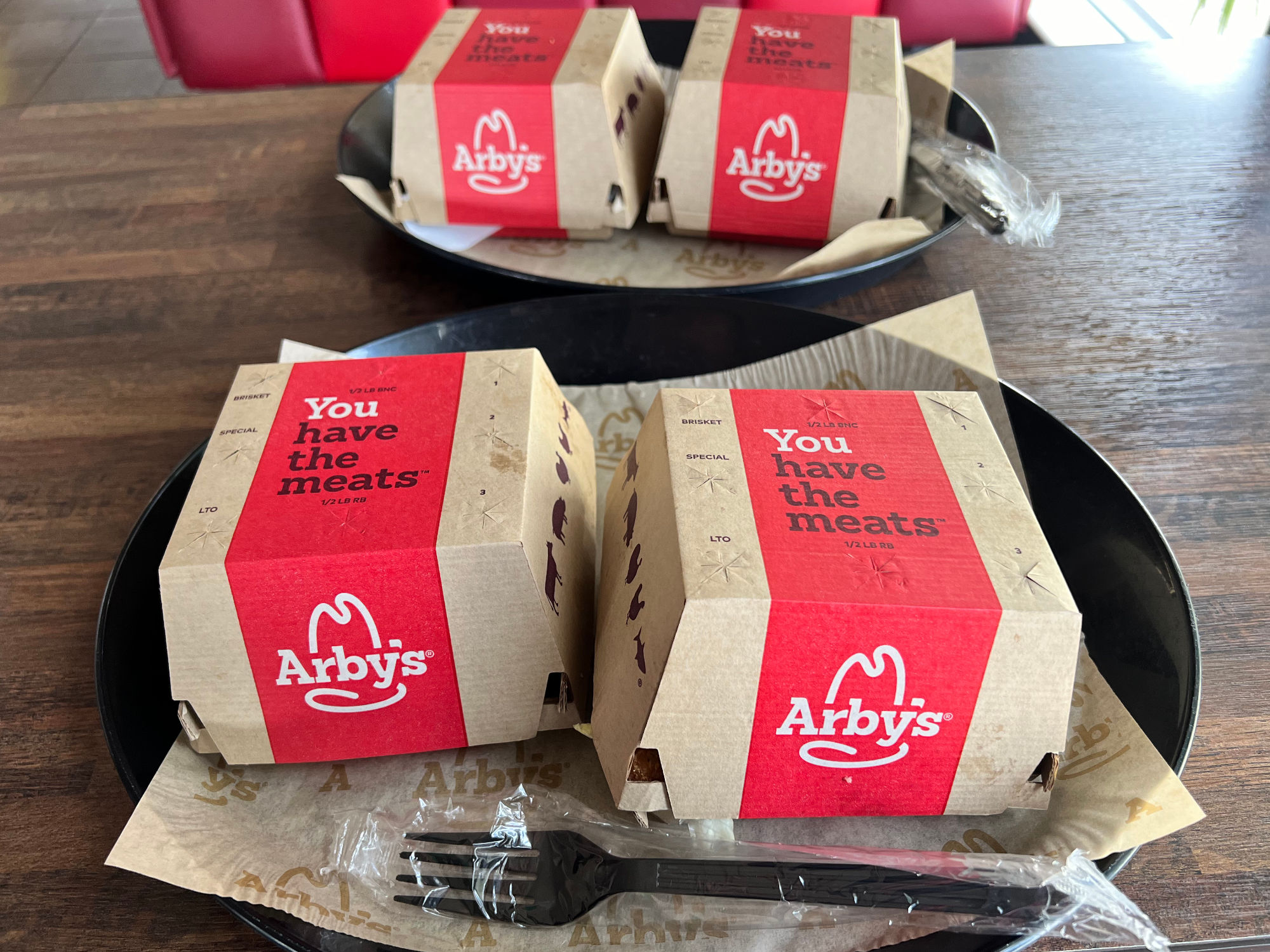
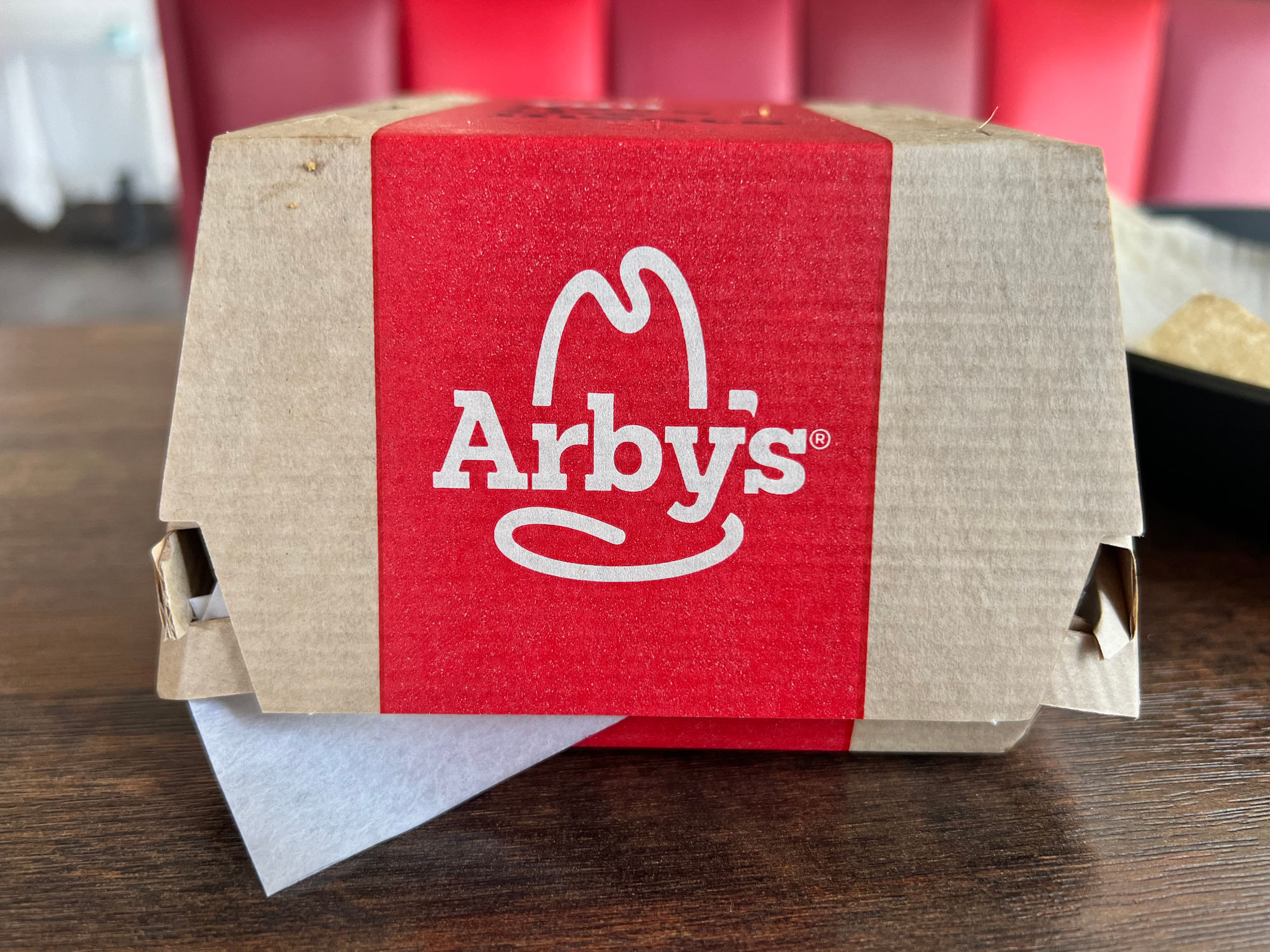
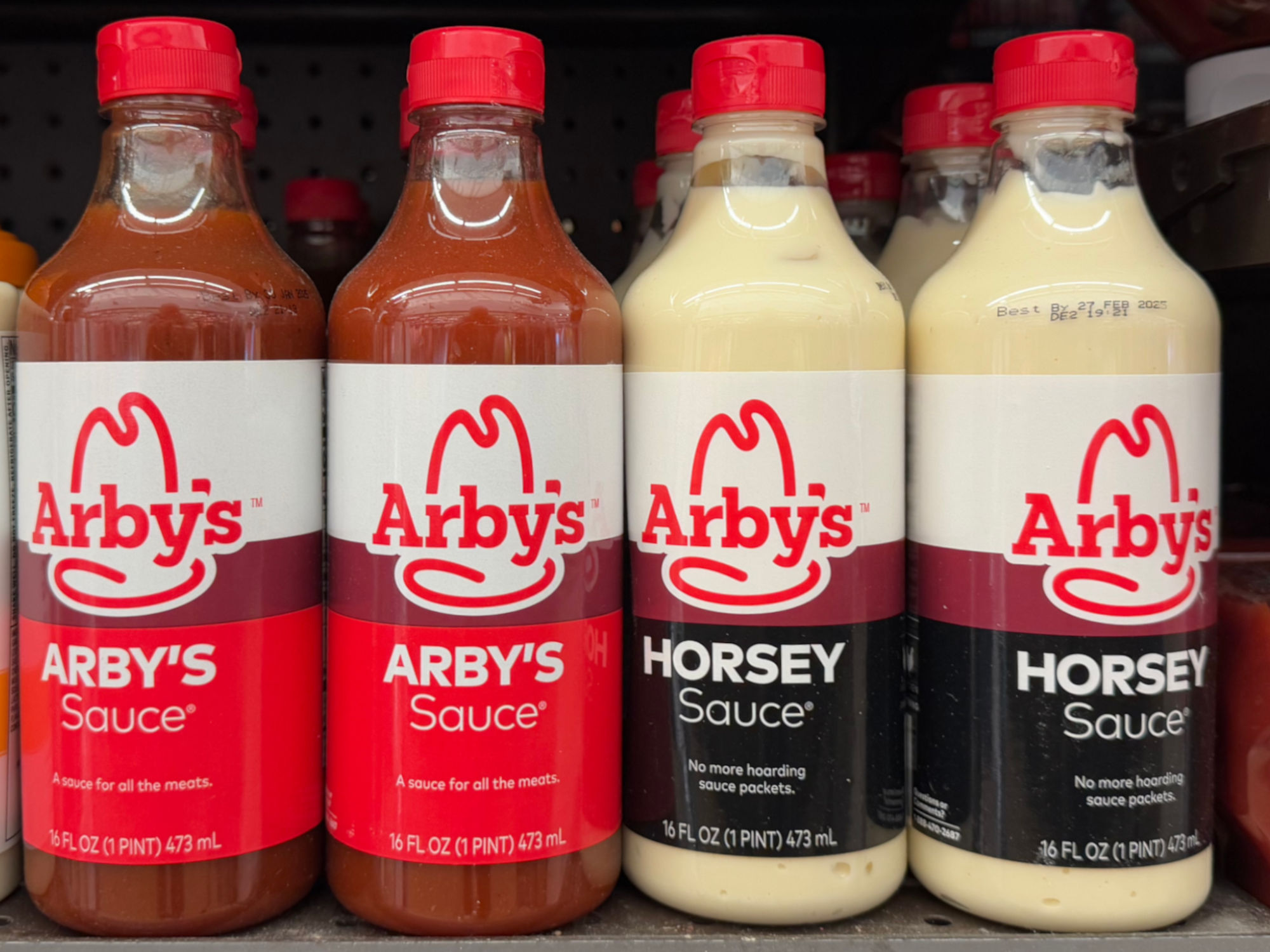
At Grocery Stores
- Arby's Sauce A sauce for all the meats.
- Horsey Sauce No more hoarding sauce packets.
Roadside ArchitectureArby's Roast Beef
The first Arby's opened in 1964 in Boardman, OH and featured the Conestoga wagon style buildings and ten-gallon hat signs shown below. That original building is still there. The name was derived from the founders, Forrest and Leroy Raffel: "RB" for the Raffel brothers. The buildings were designed by Wily Christian Riedel. The roofs were originally yellow. By 1970, there were 250 locations. There are now more than 3,000 locations. The covered wagon building was phased out in the mid-1970s. Many have been adapted by other businesses. There are still many of the neon hat signs left other than those shown below. However, many have been replaced with smaller, plastic versions. For more, see this website.
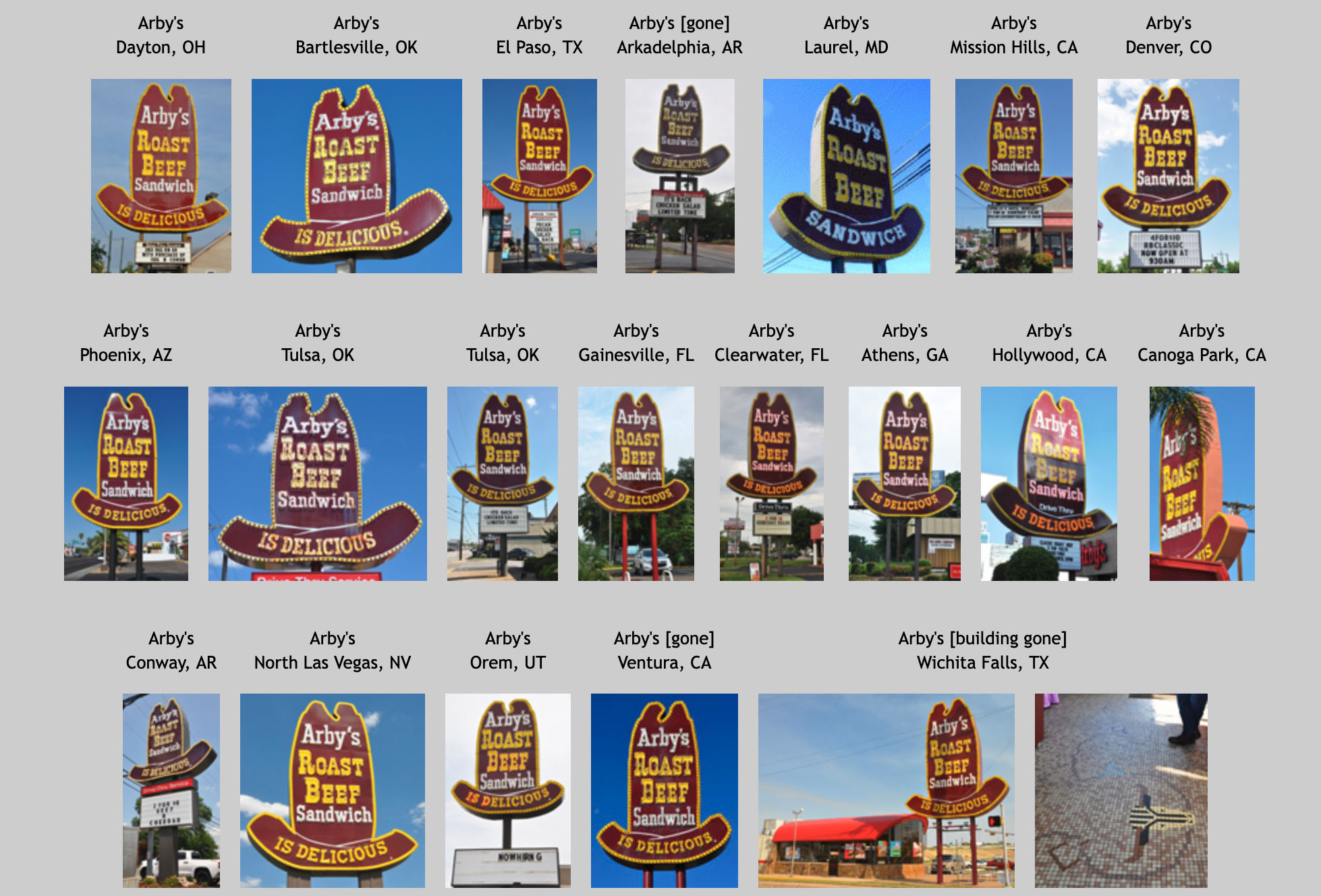 Hat Signs
Hat Signs
These are just some examples of Arby's hat signs which were first built in 1964 by the Peskin Sign Co. in Ohio. The original covered wagon buildings at these locations are long gone. The Laurel sign is from the late 1960s. It is the only one I have seen with the "Sandwich" on the bottom part of the sign and without the "Is Delicious" wording. The original signs had the "Is Delicious". These hat signs were phased out in 1976 in favor of a more cartoonish logo and plastic signs. I believe the neon hat signs came in two sizes. The ones in Bartlesville and Arkadelphia are examples of the smaller size. El Paso, Phoenix, and Gainesville have the big signs. Tulsa has examples of both sizes.
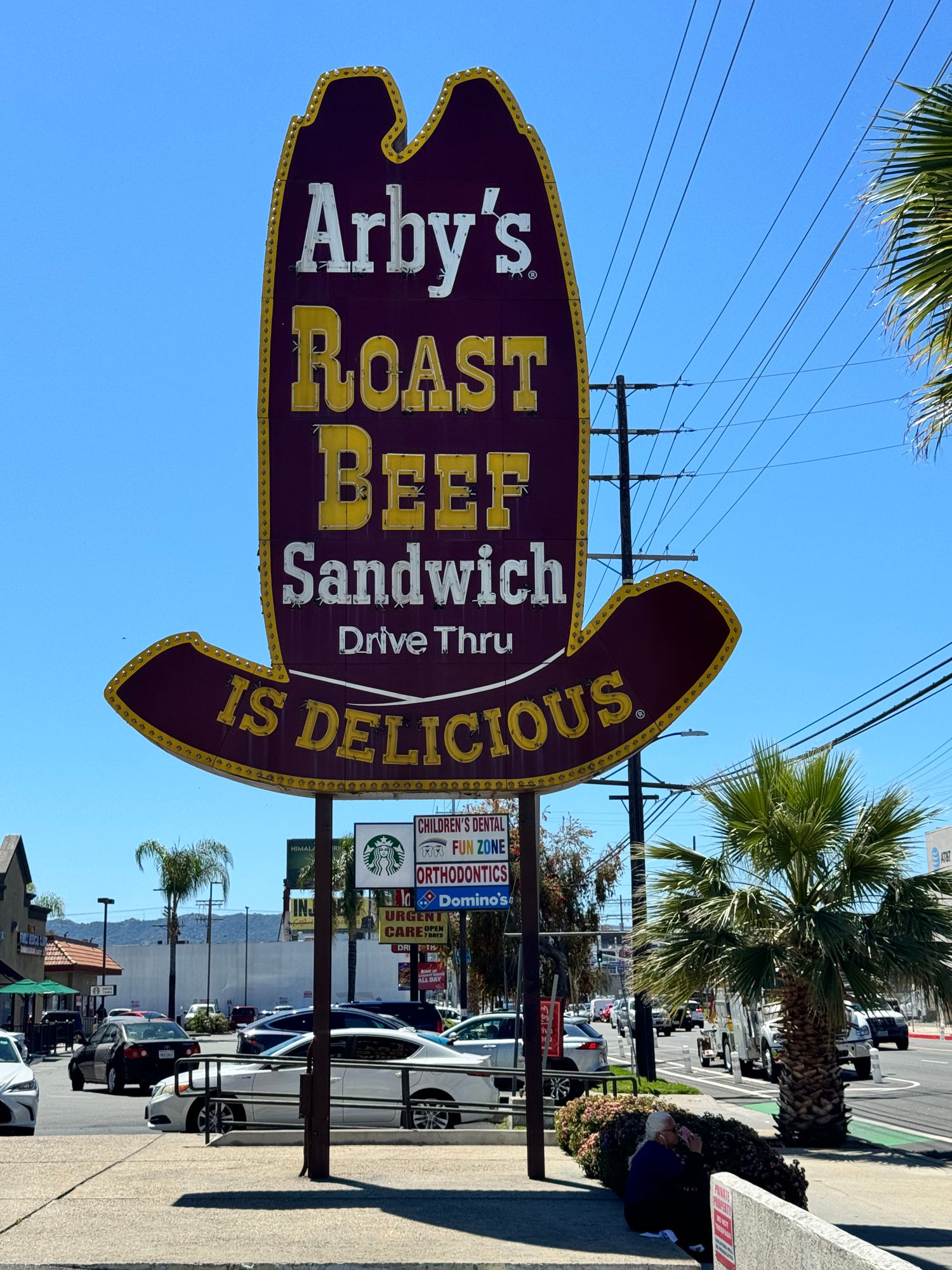

otterphoto: If my information is correct, this was the very first Arby's restaurant to open, back in 1964.
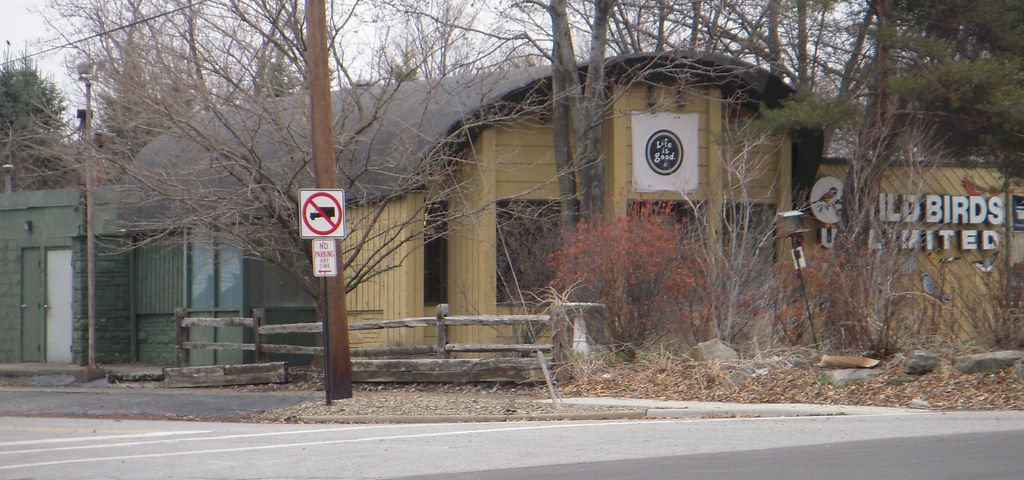
It's barely recognizable today, there have been additions made to the structure and there's a lot of shrubbery obscuring most of the building.
